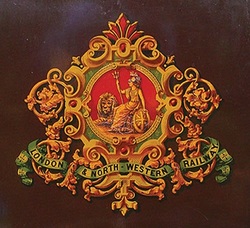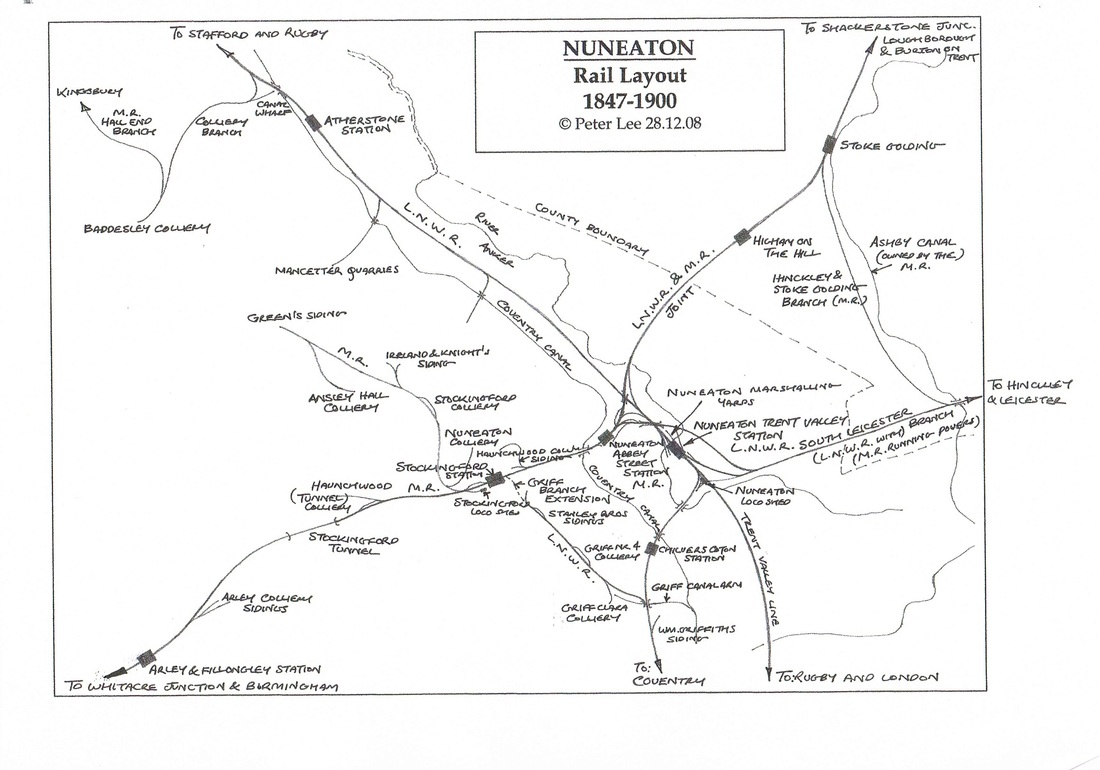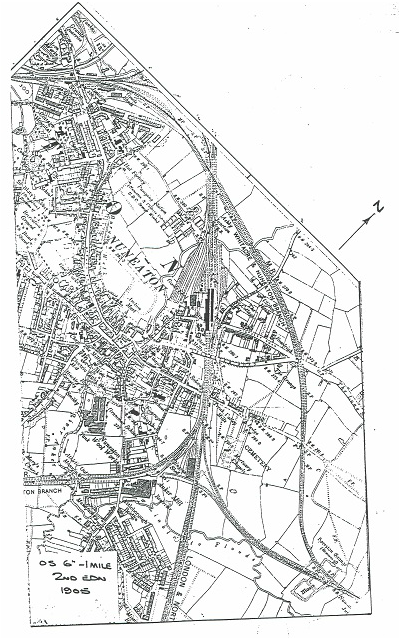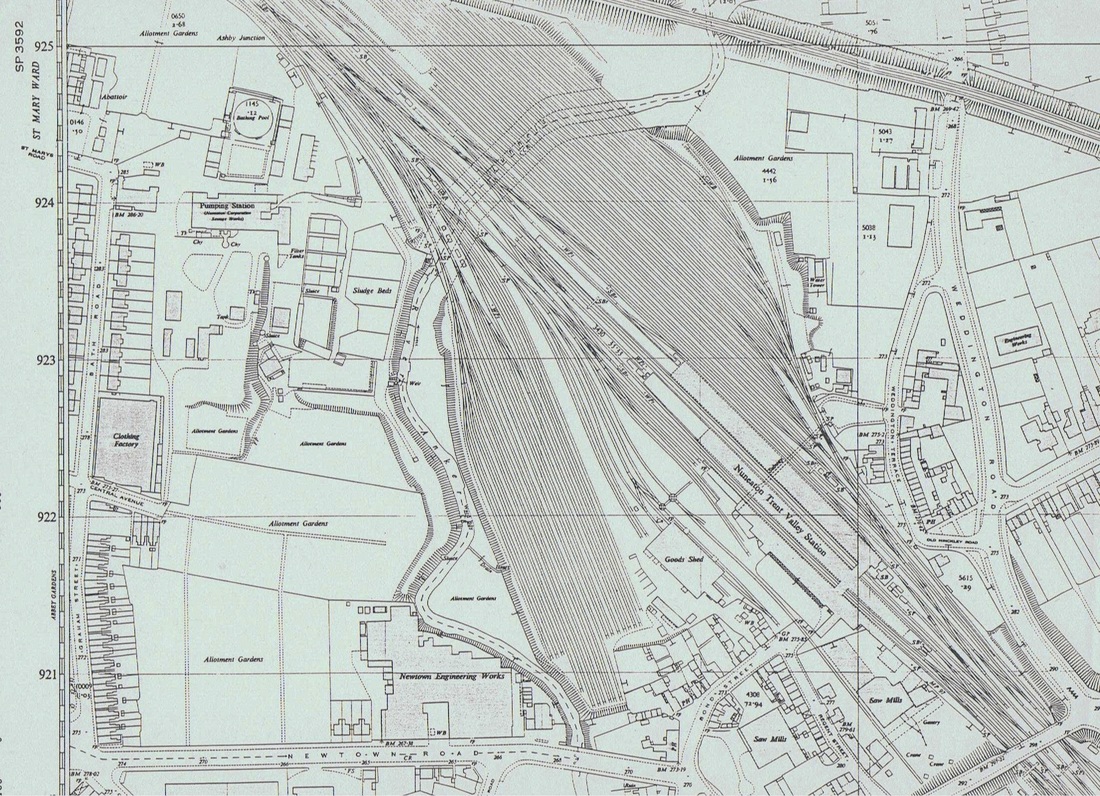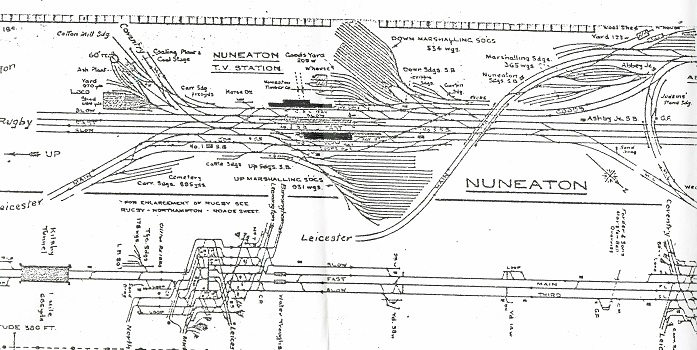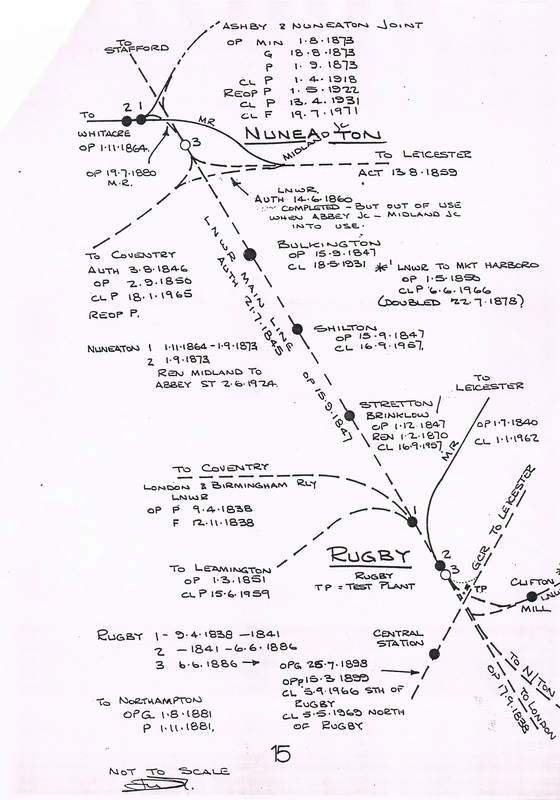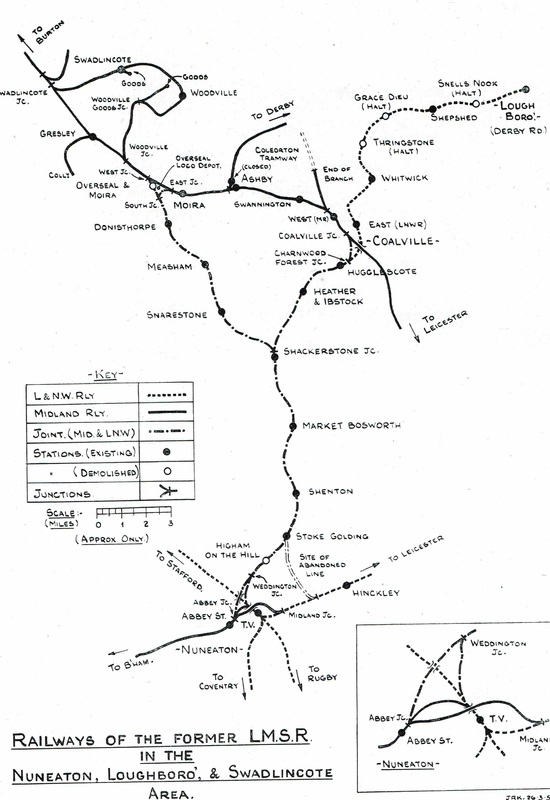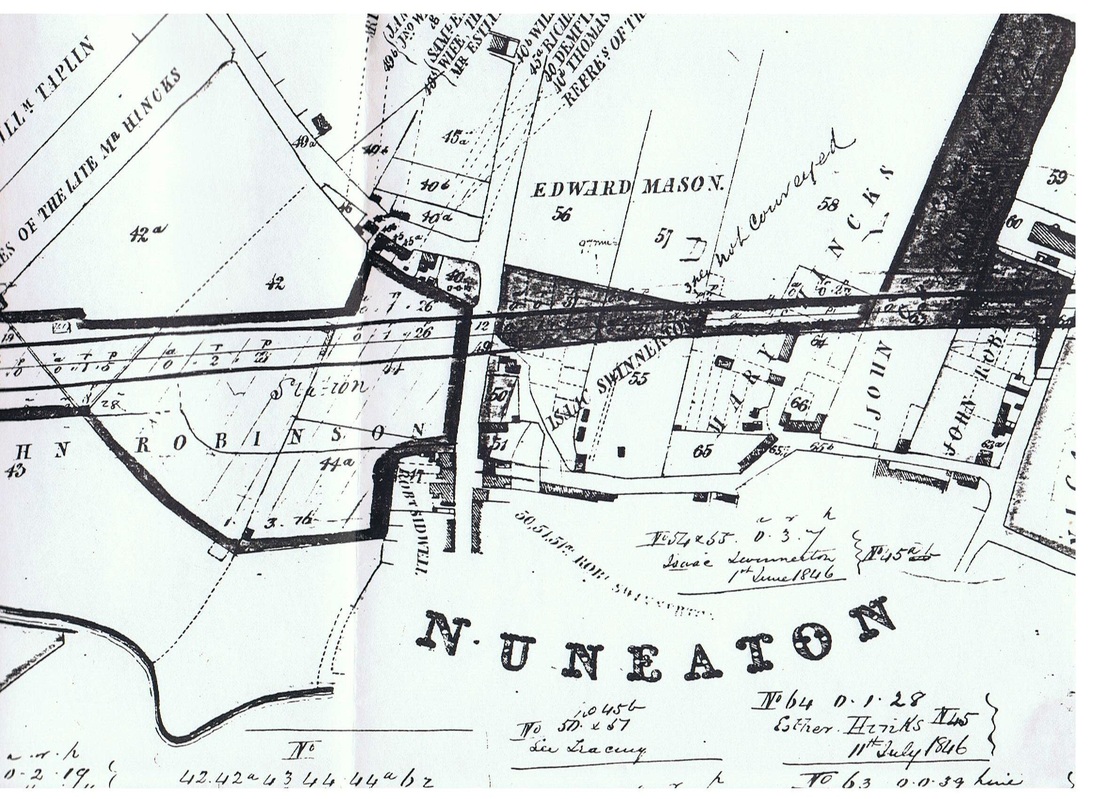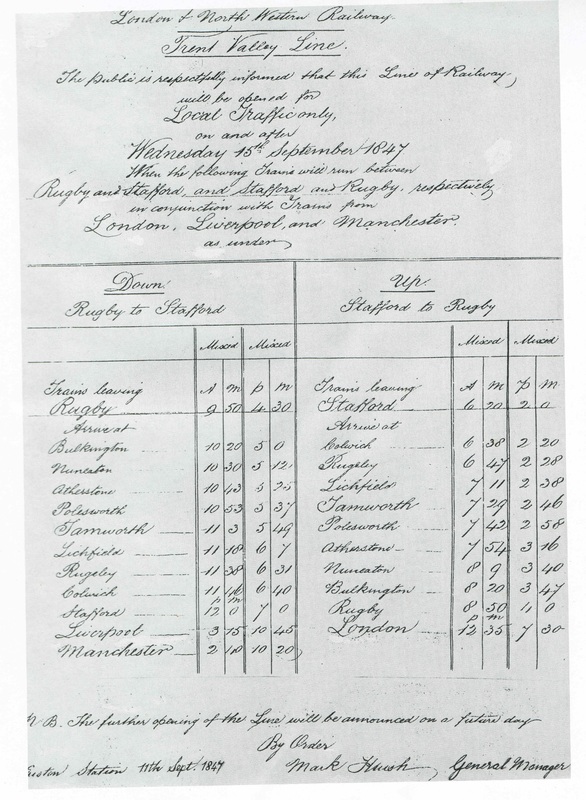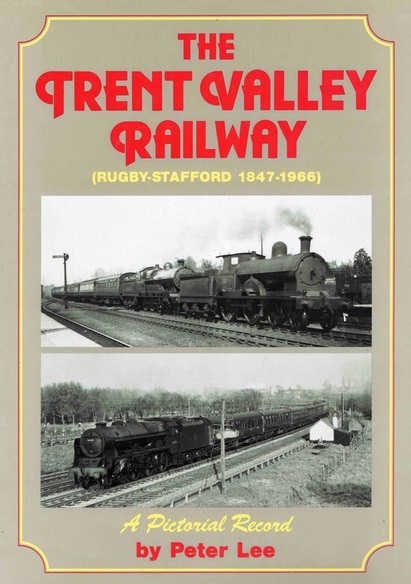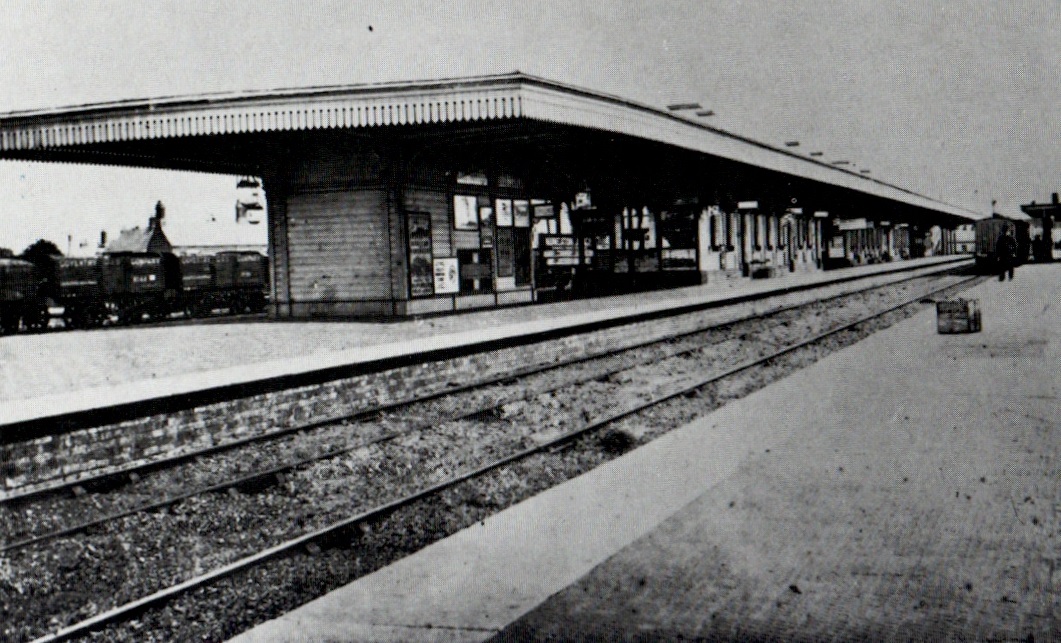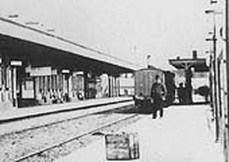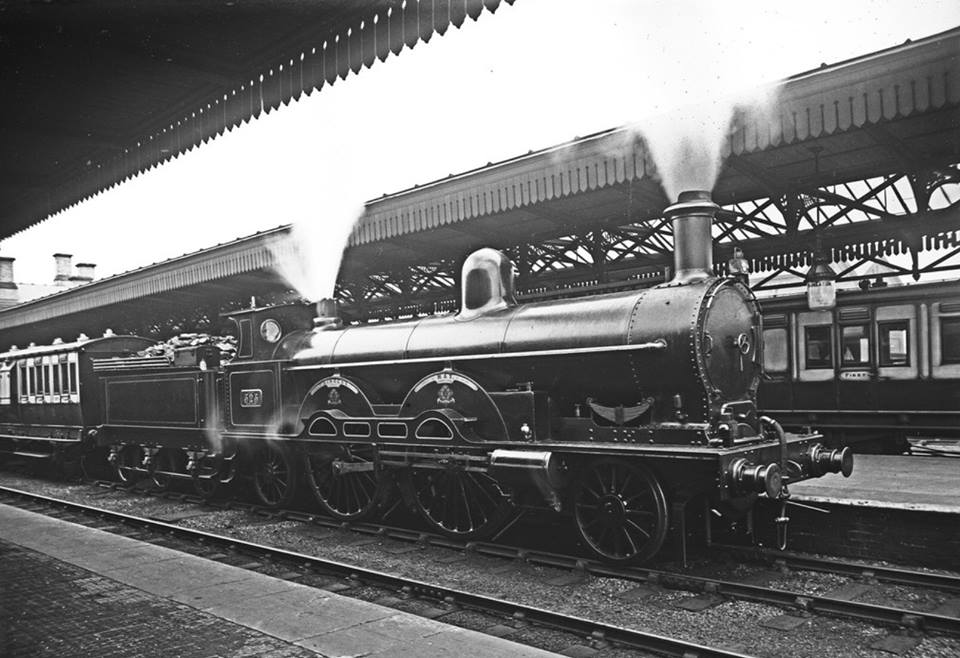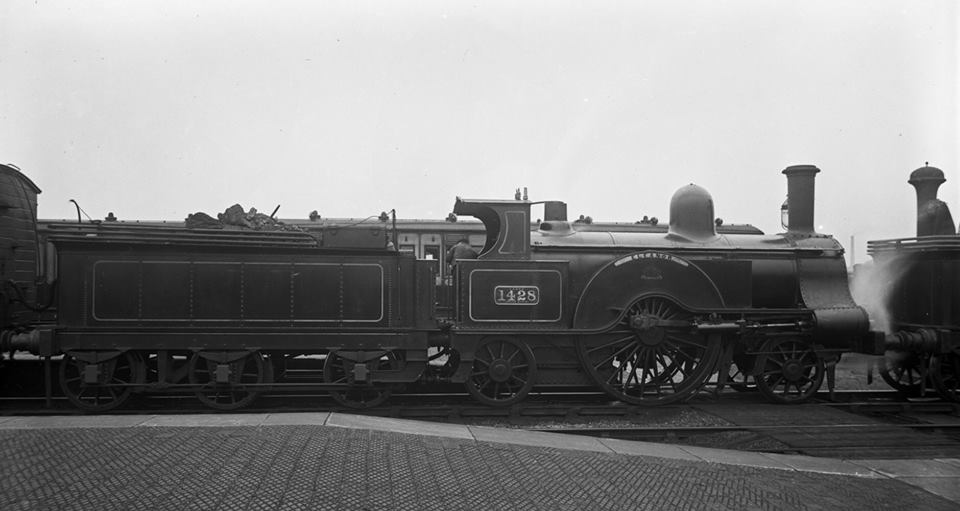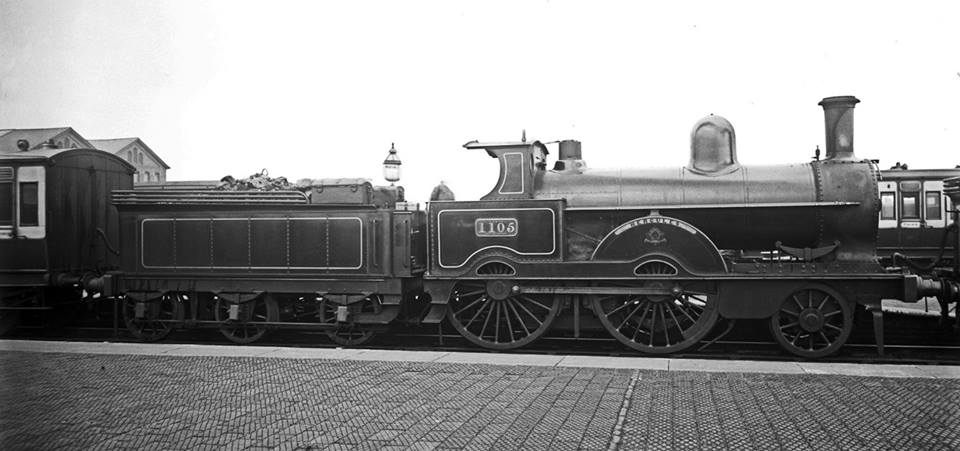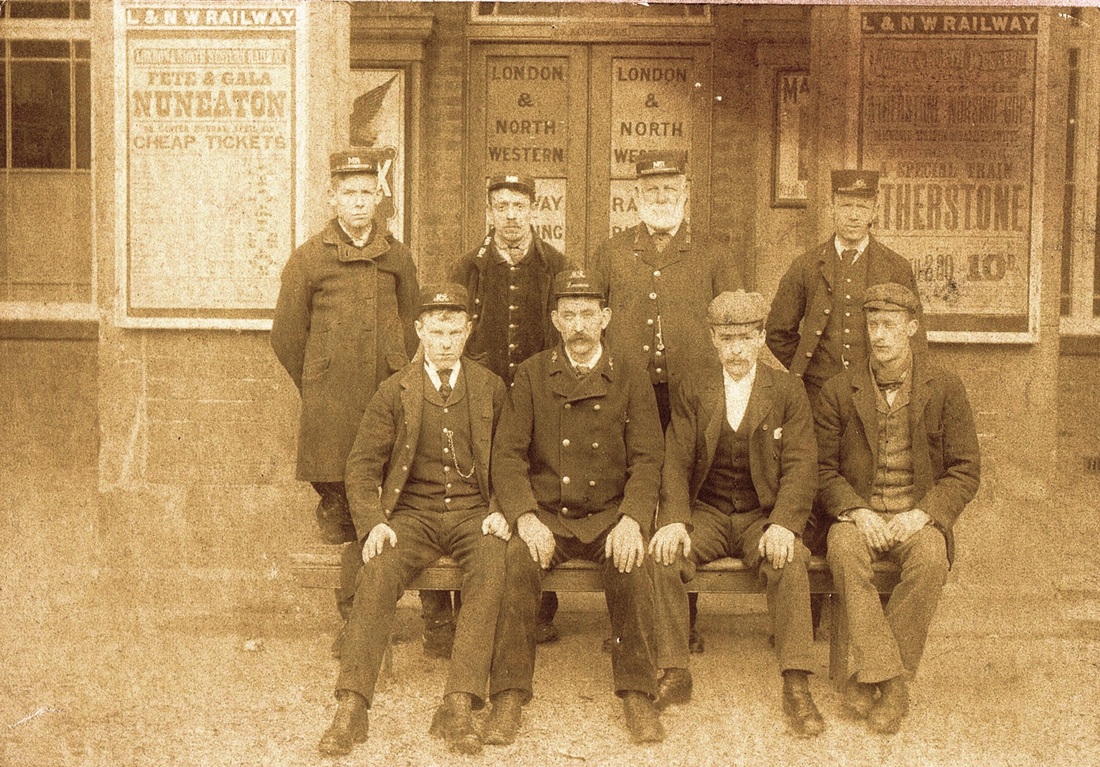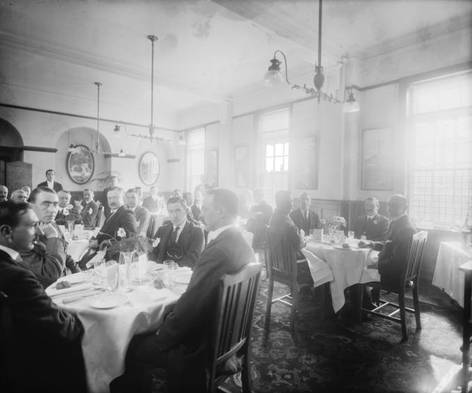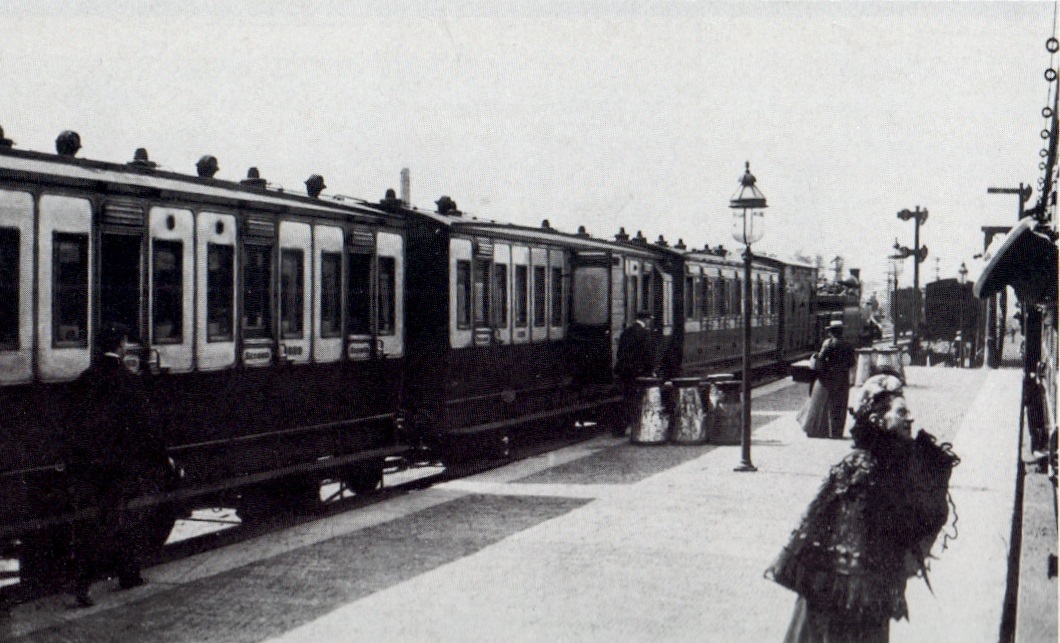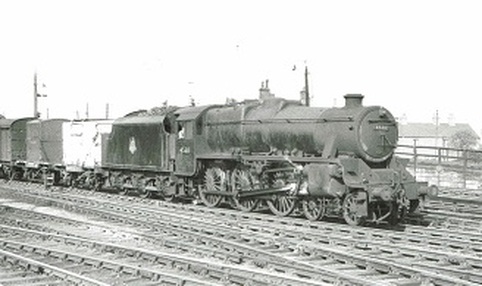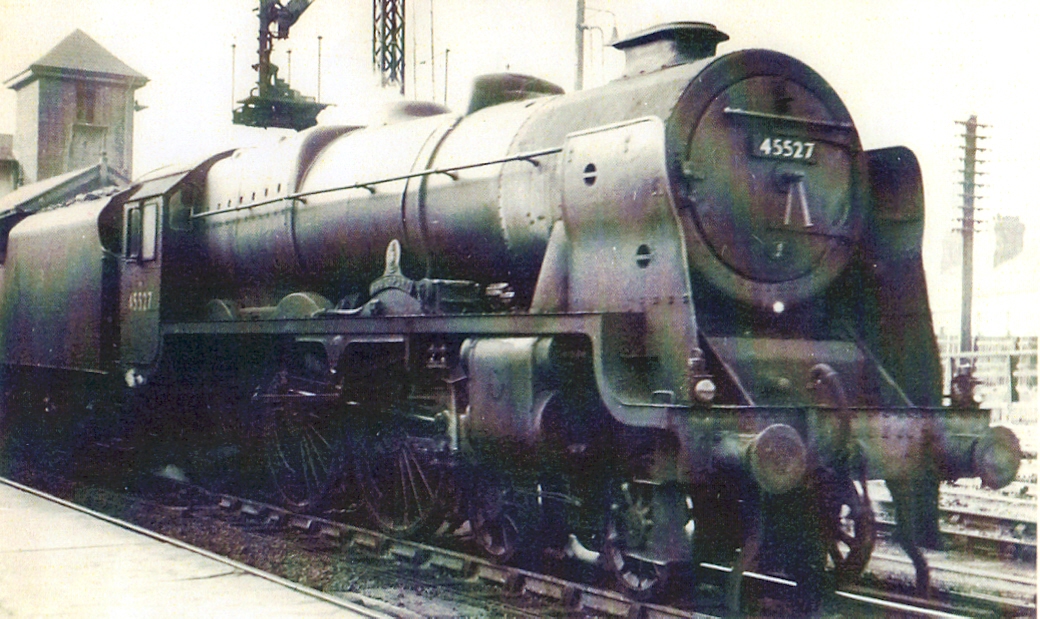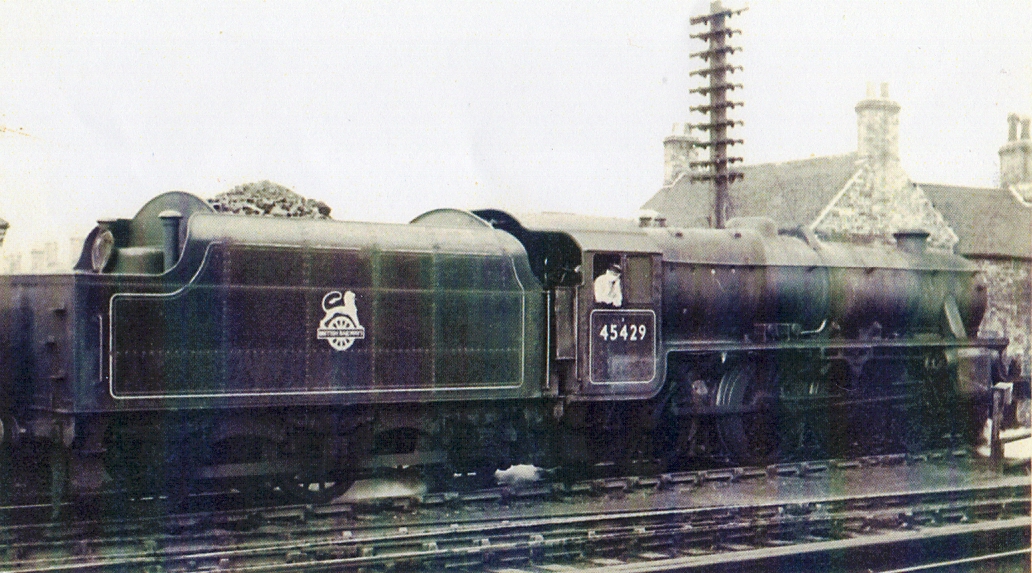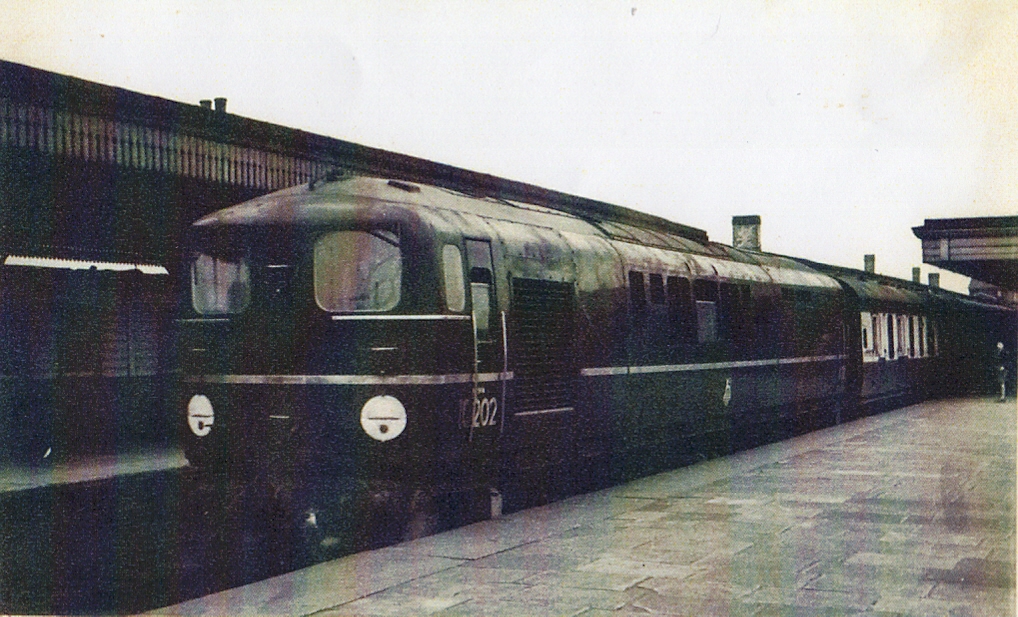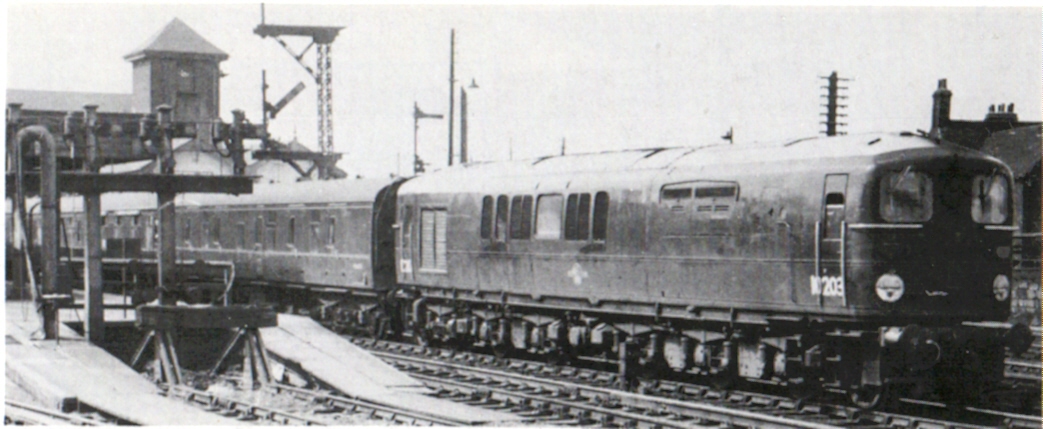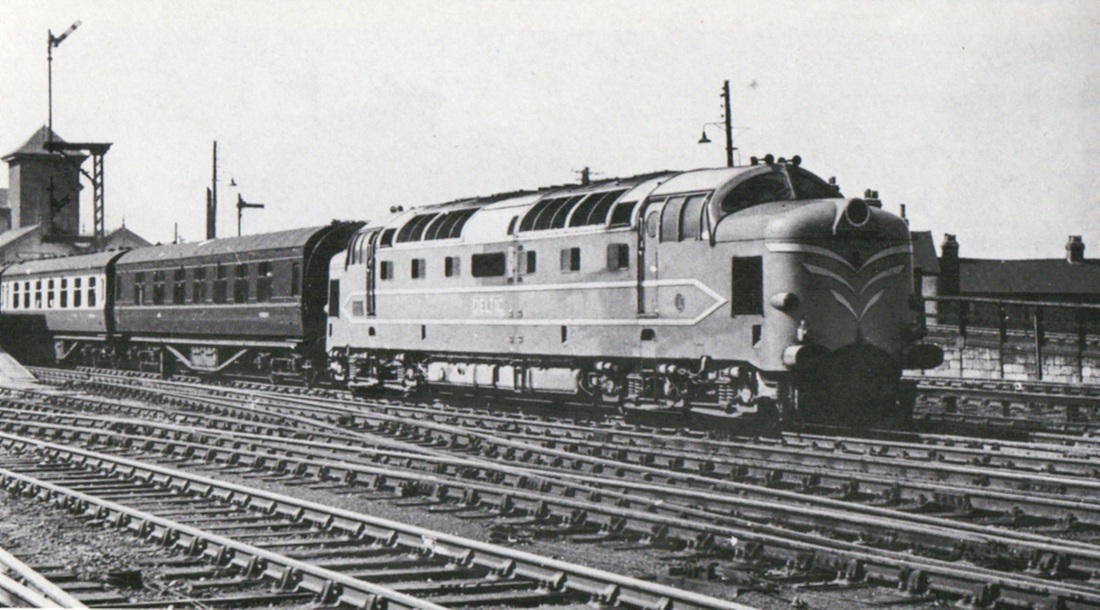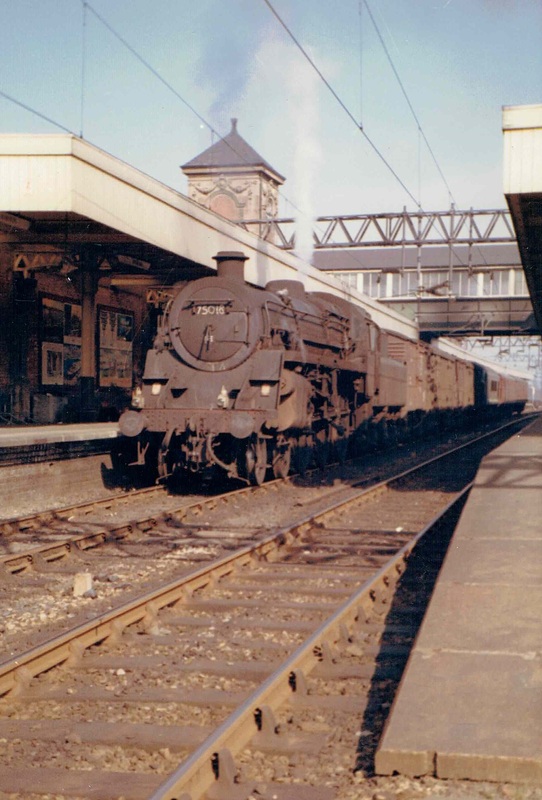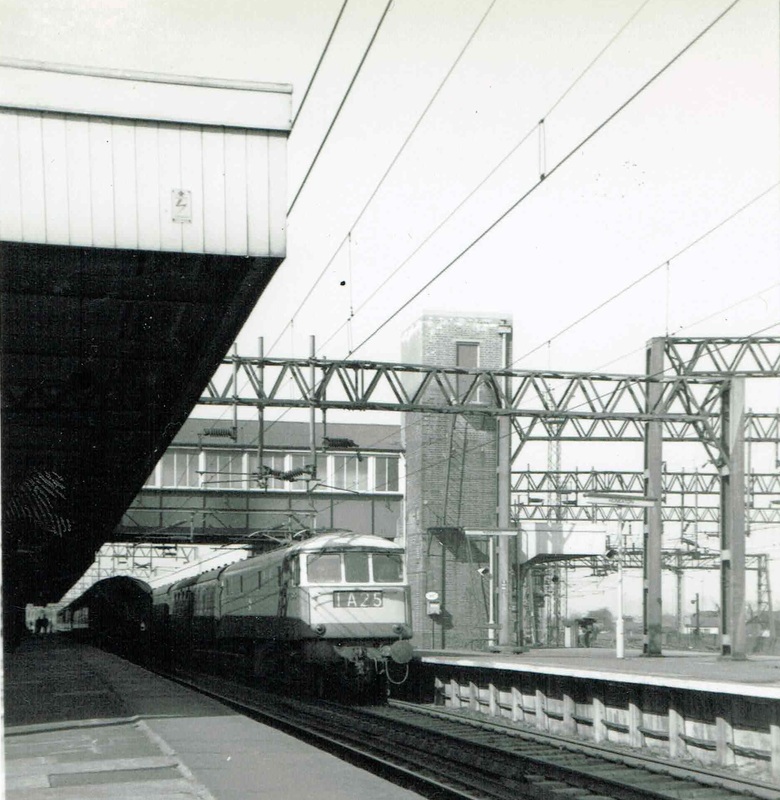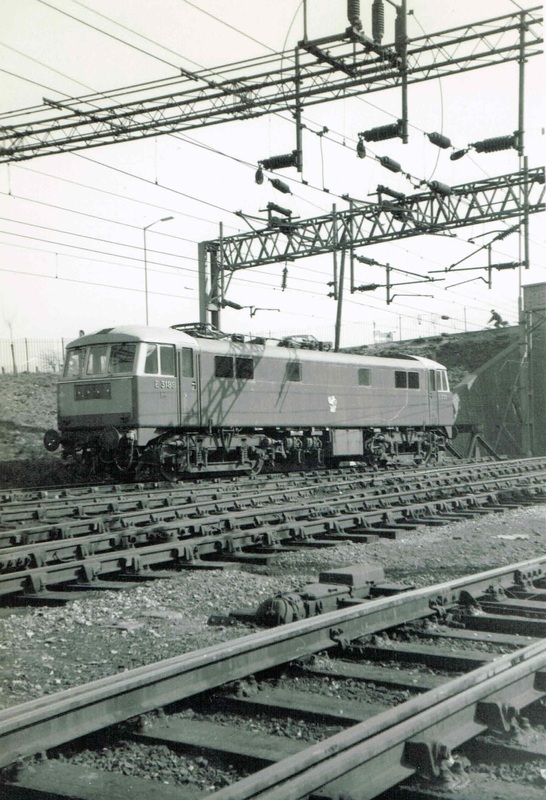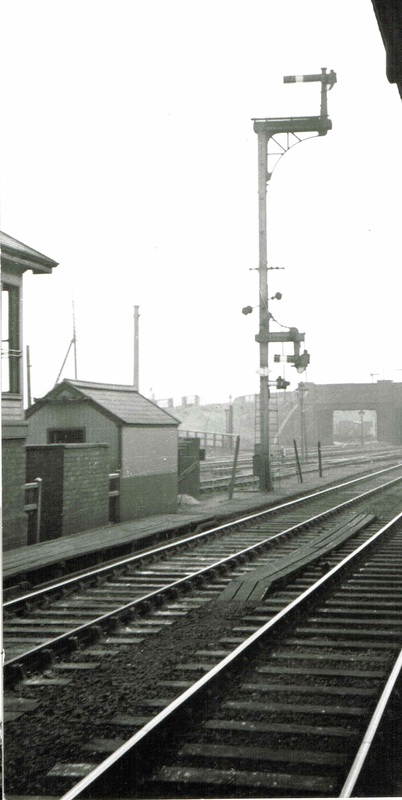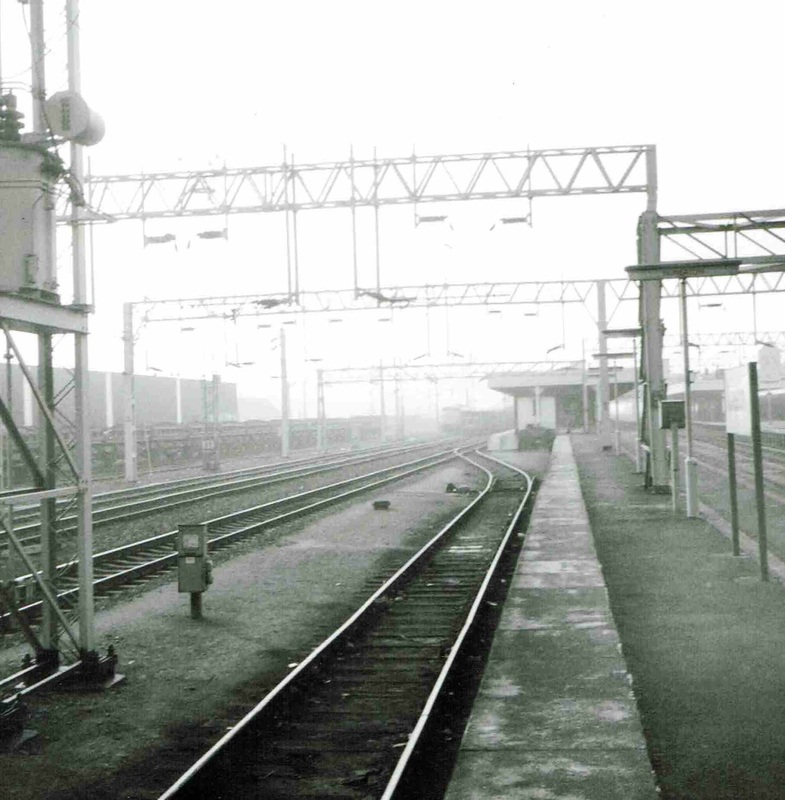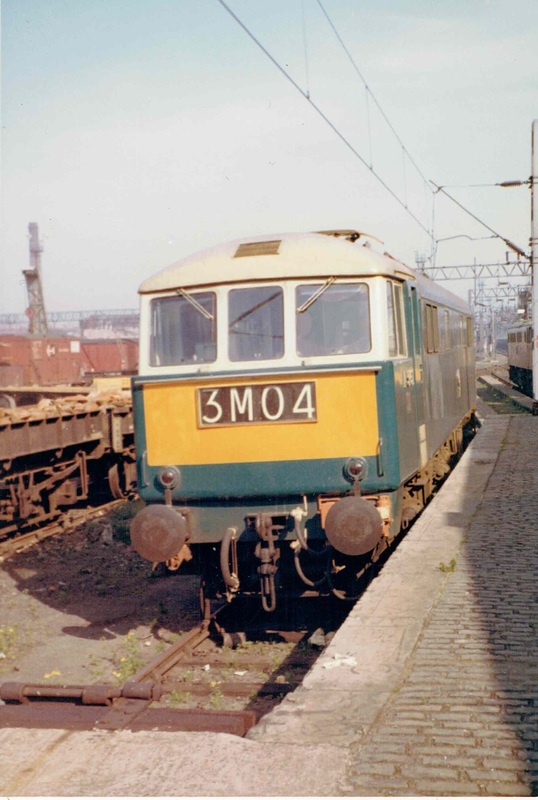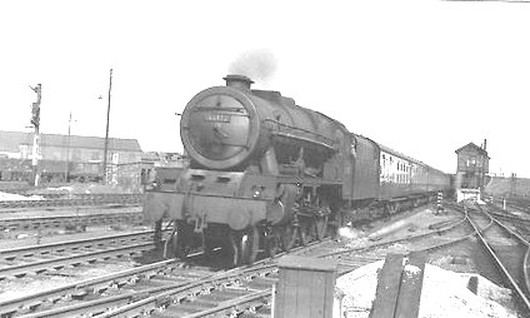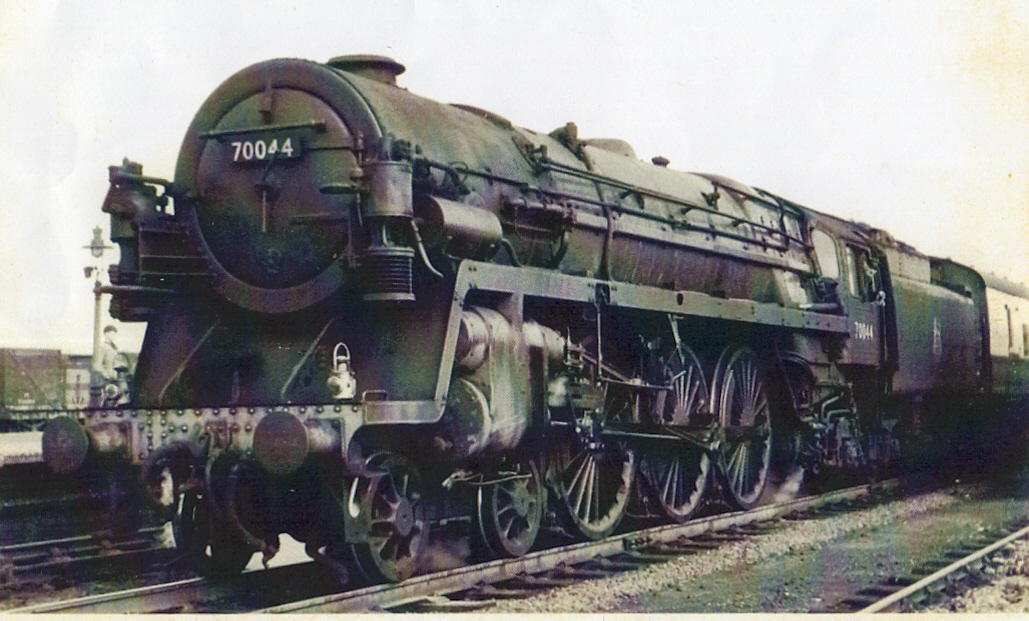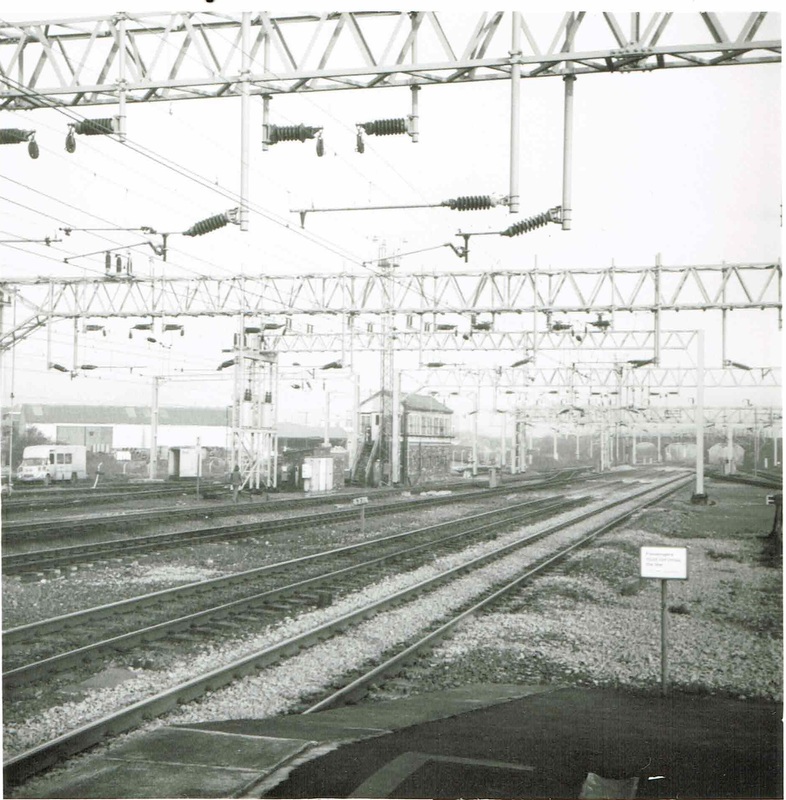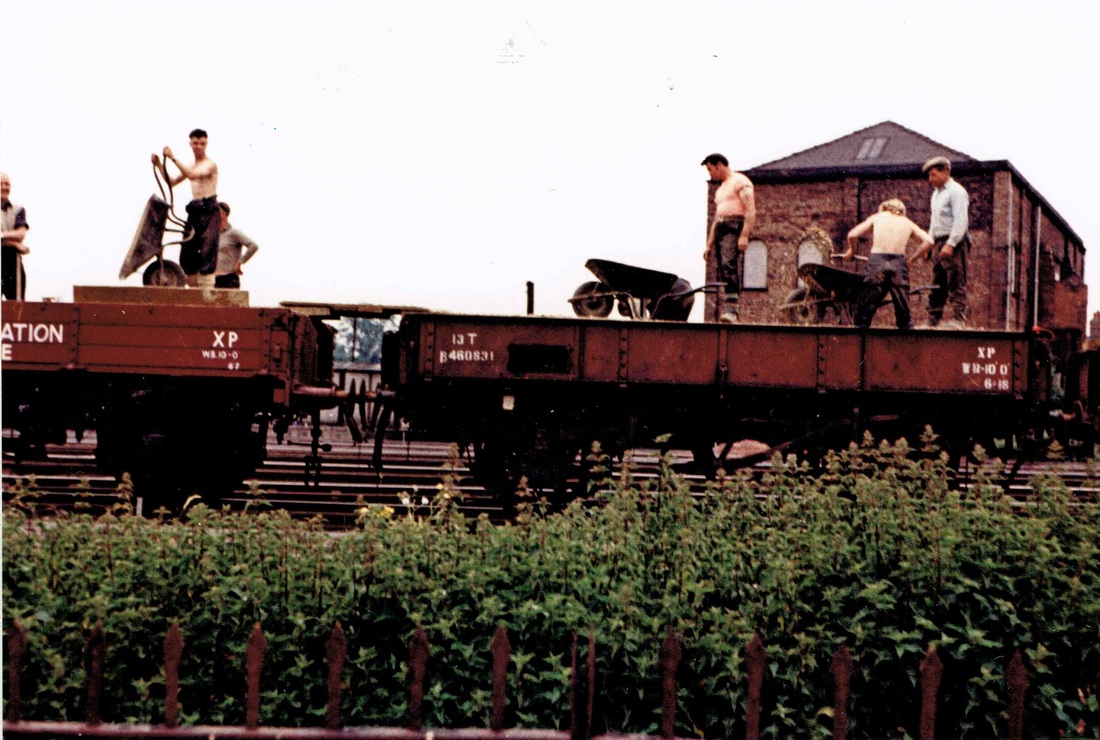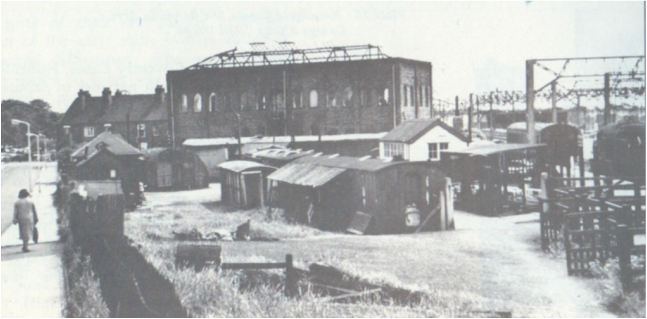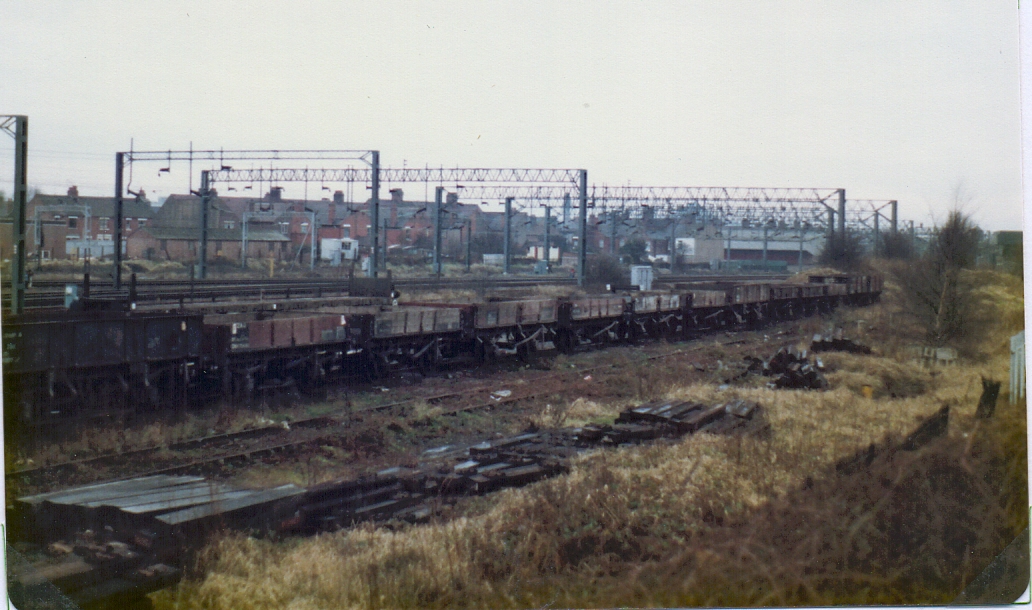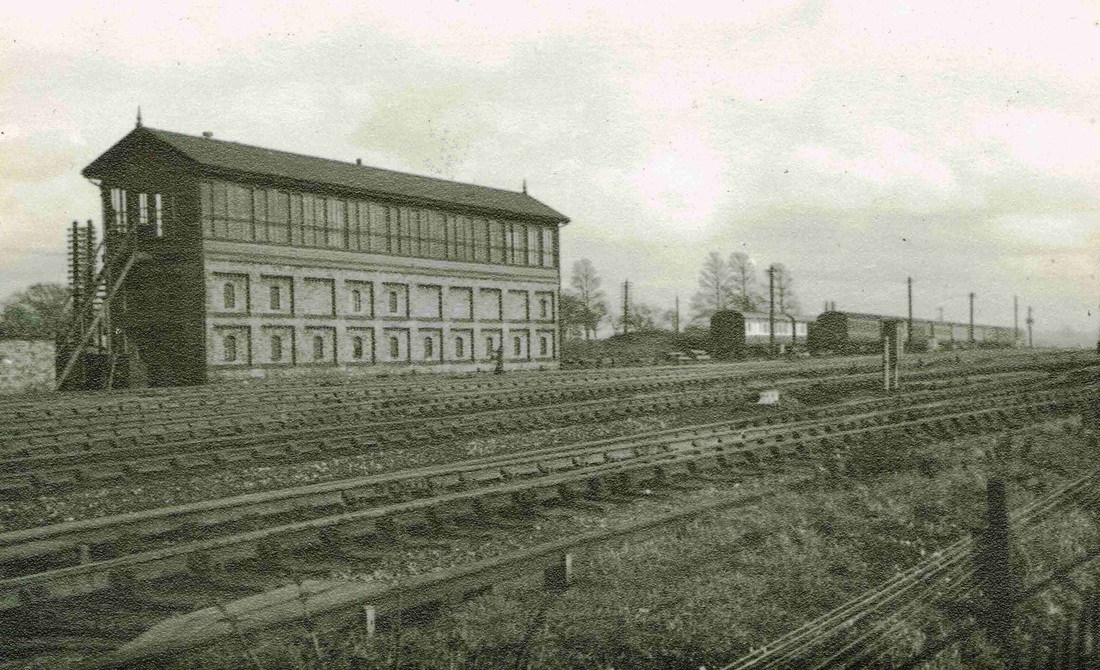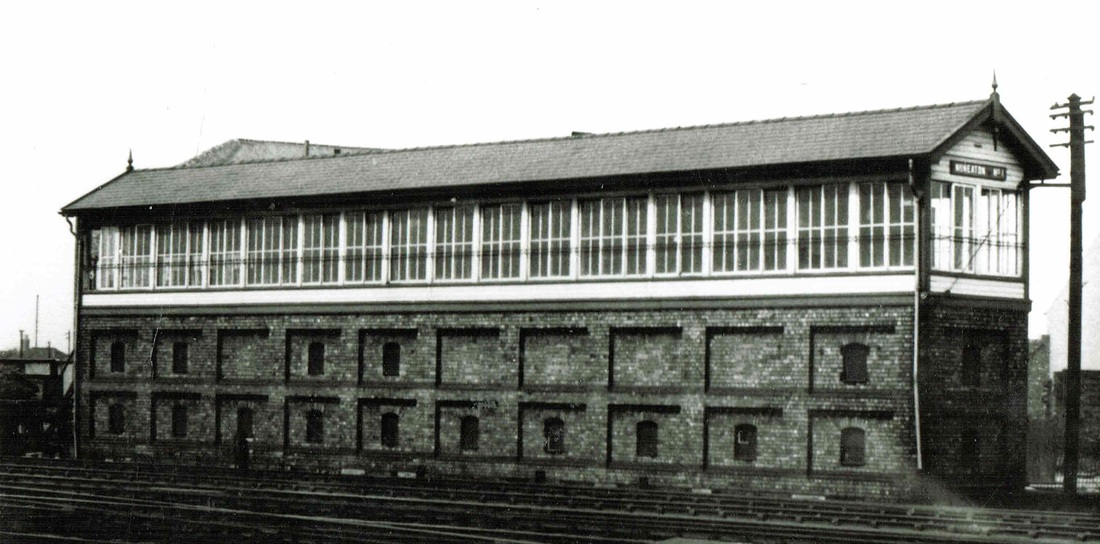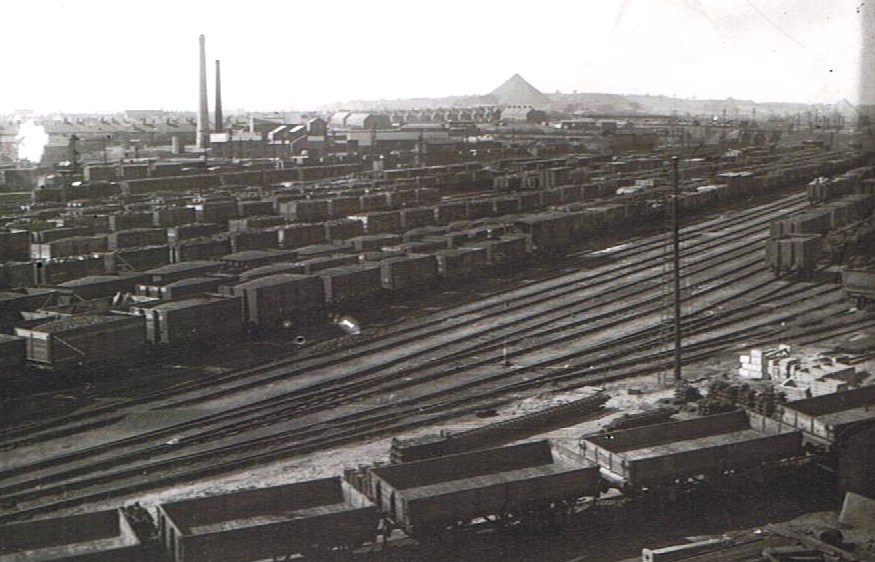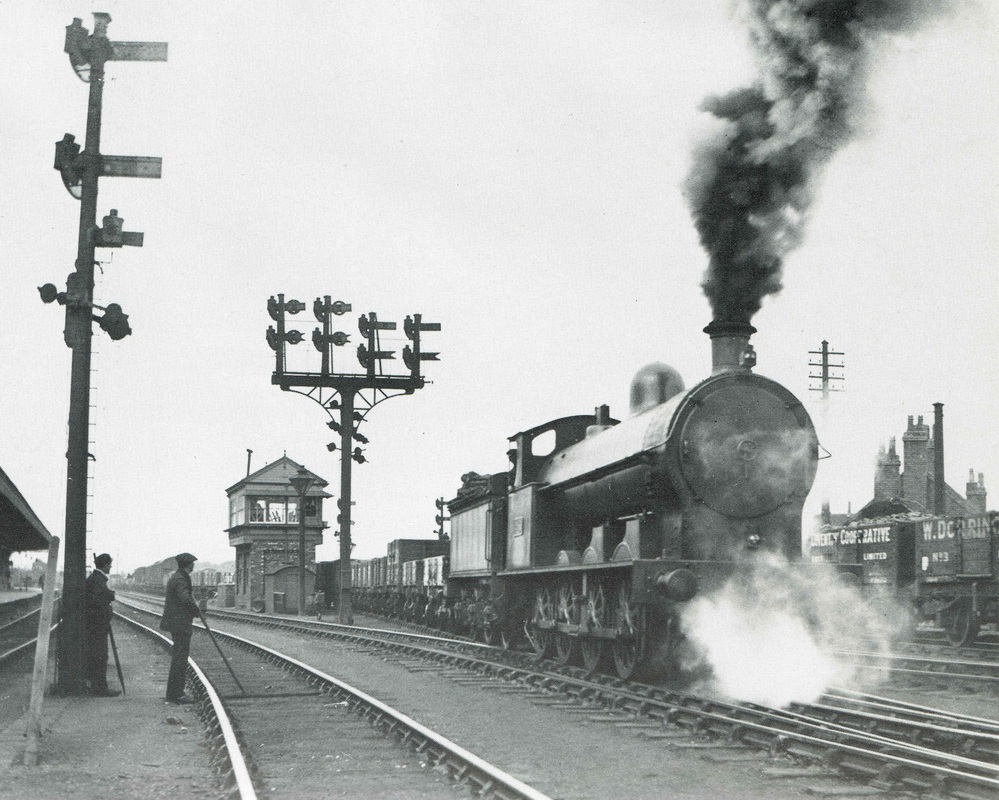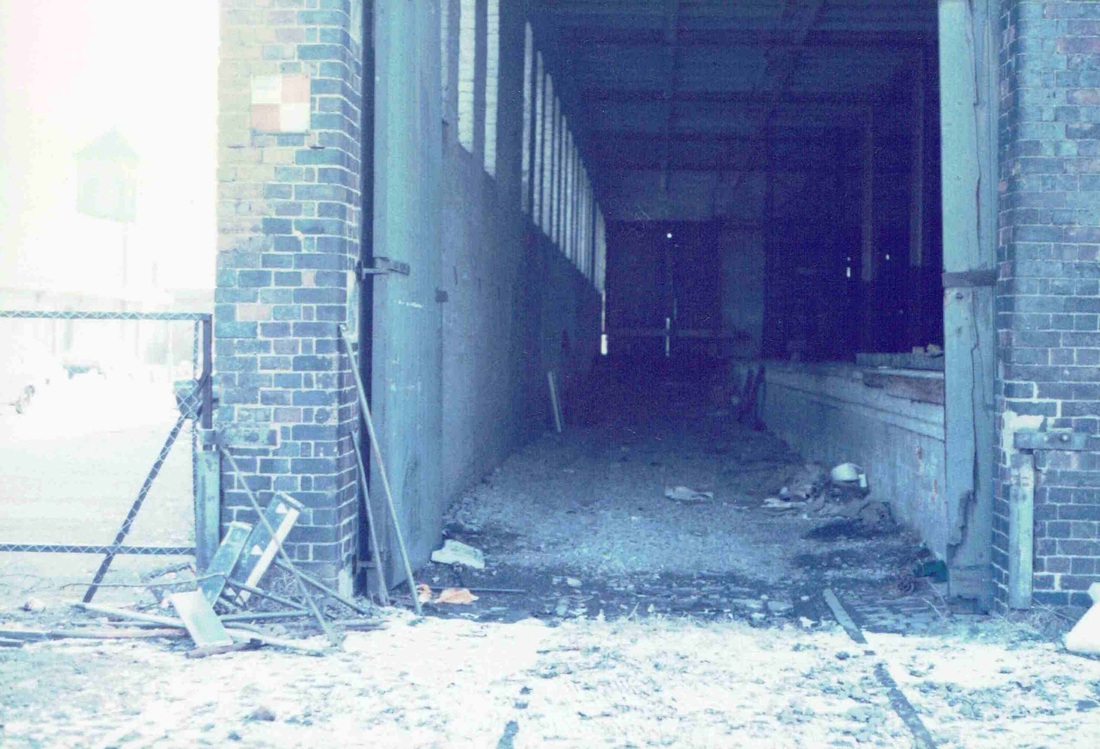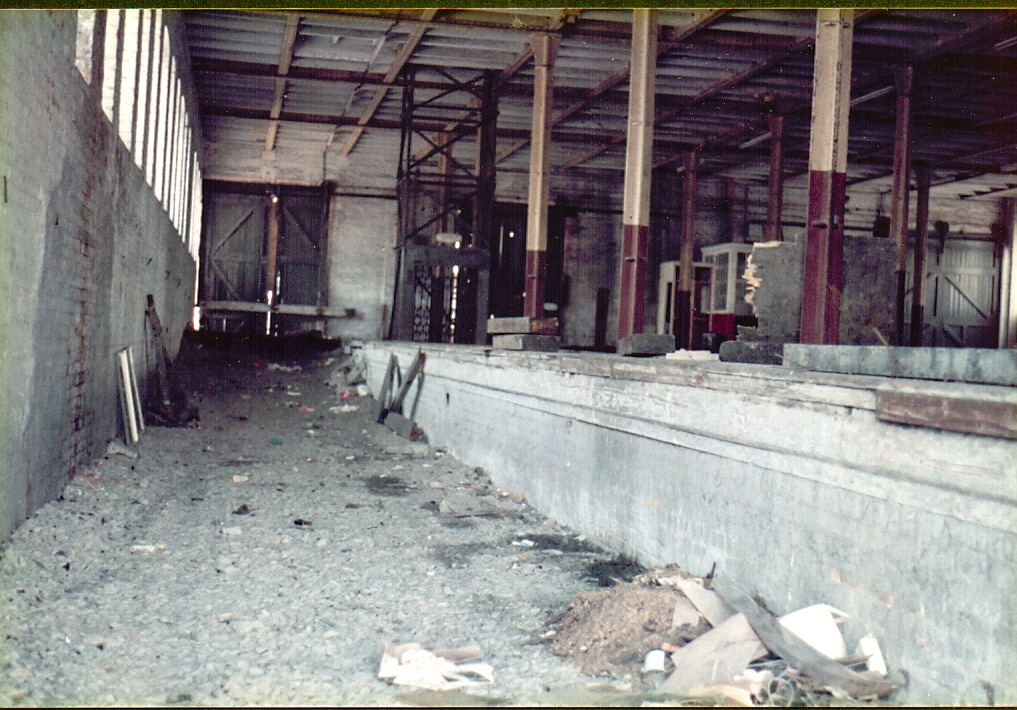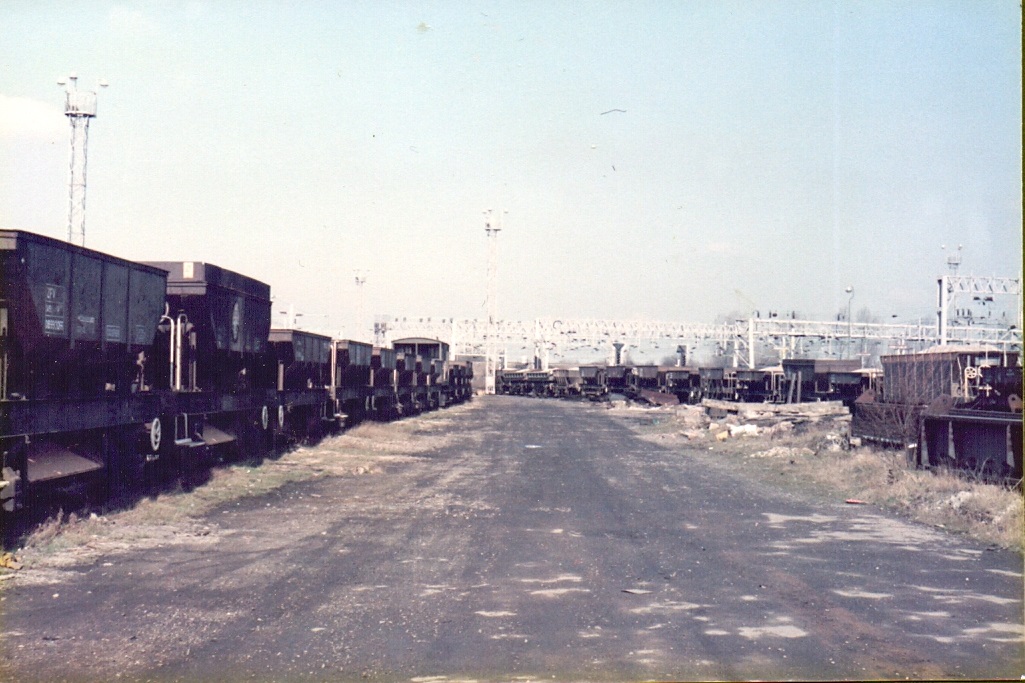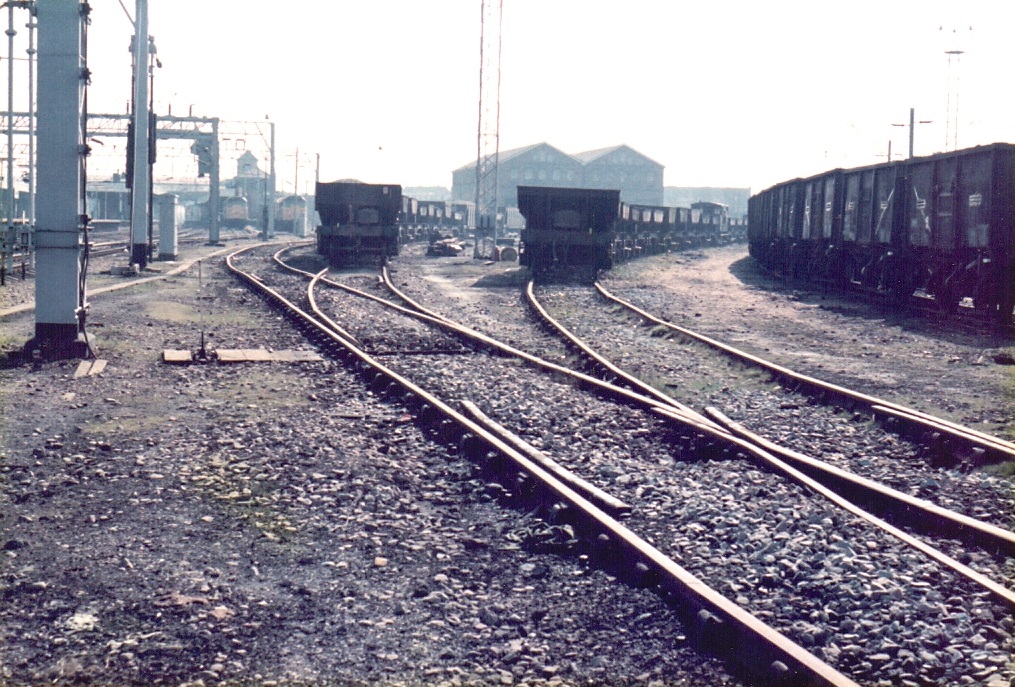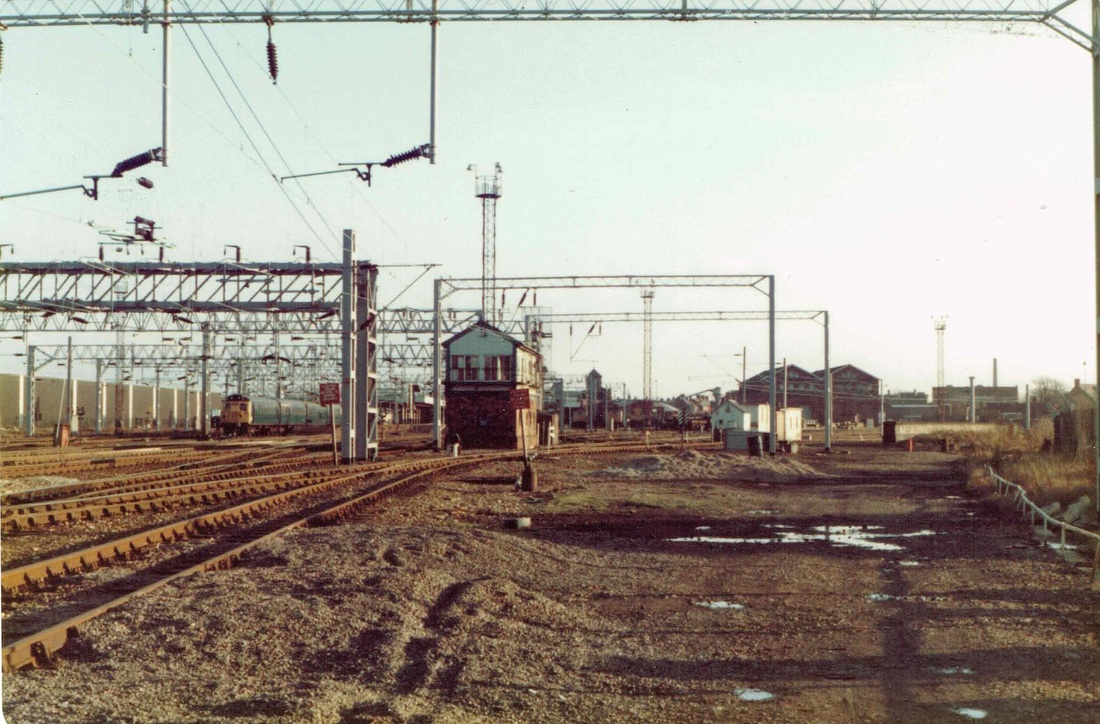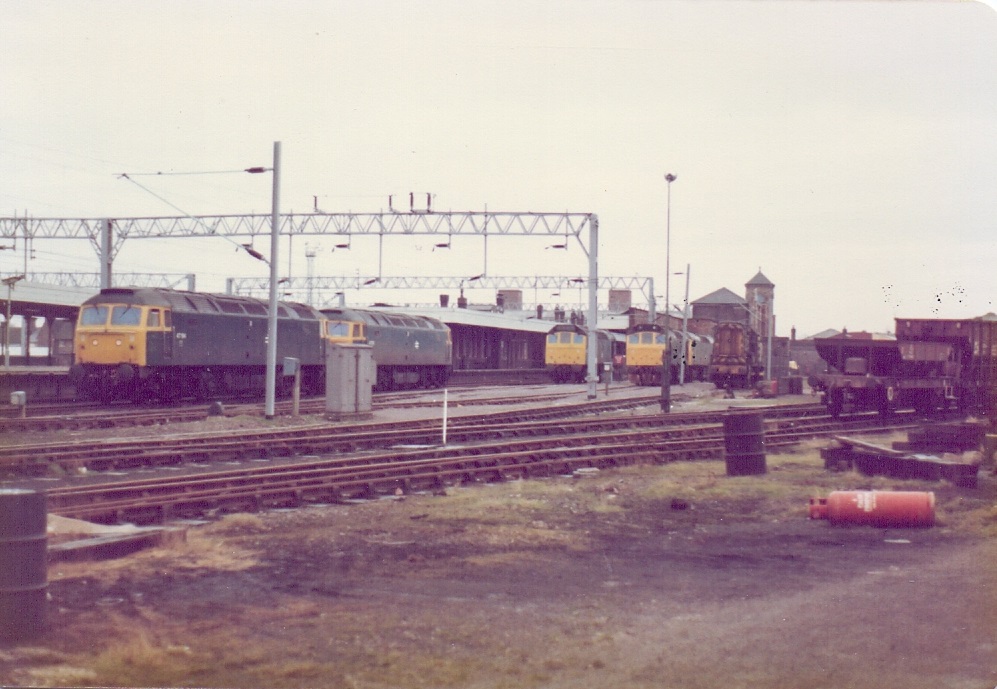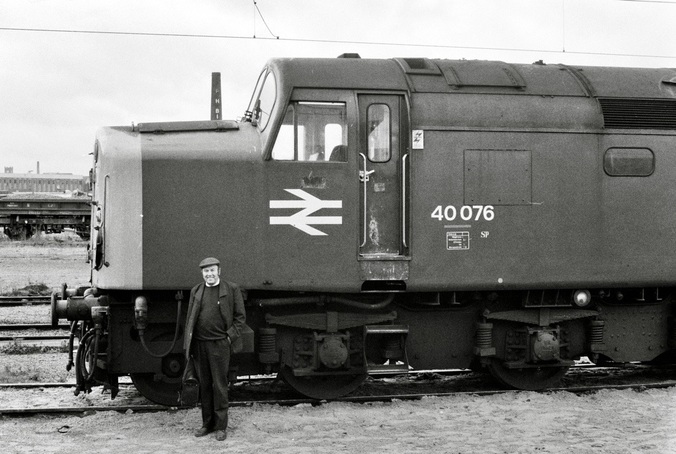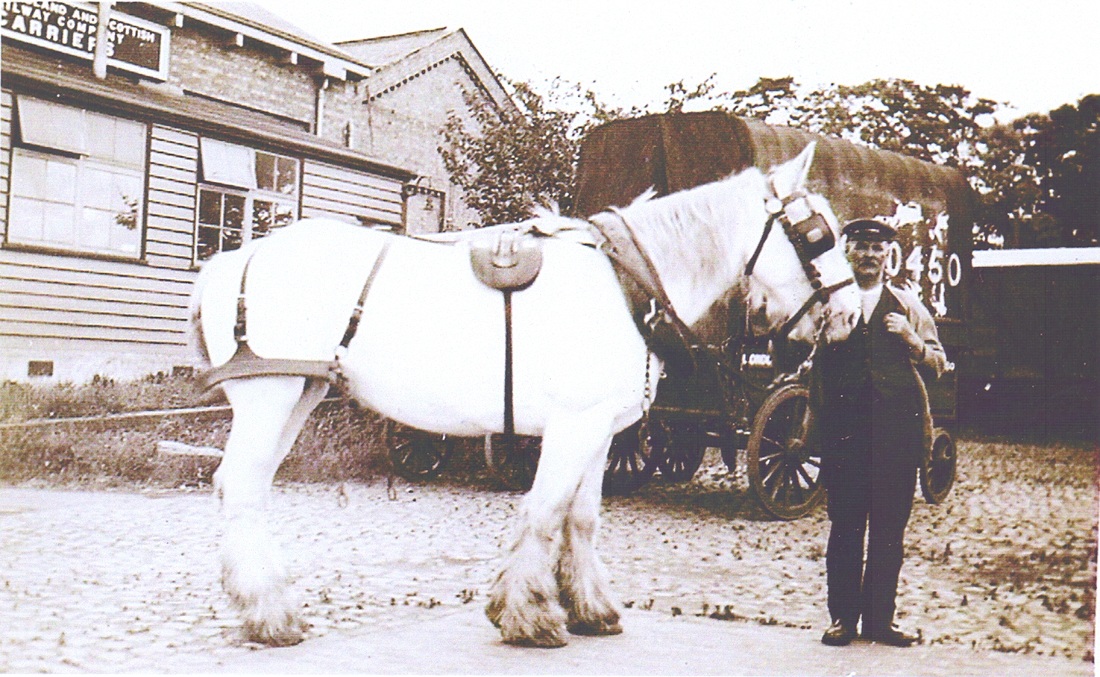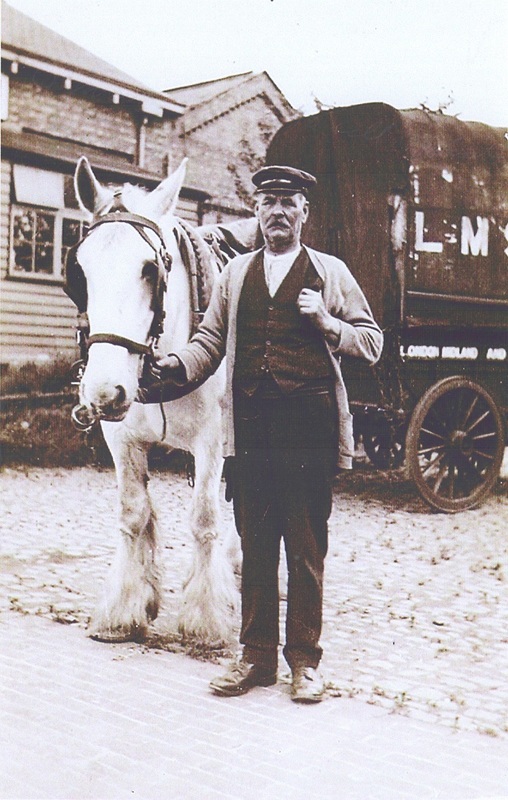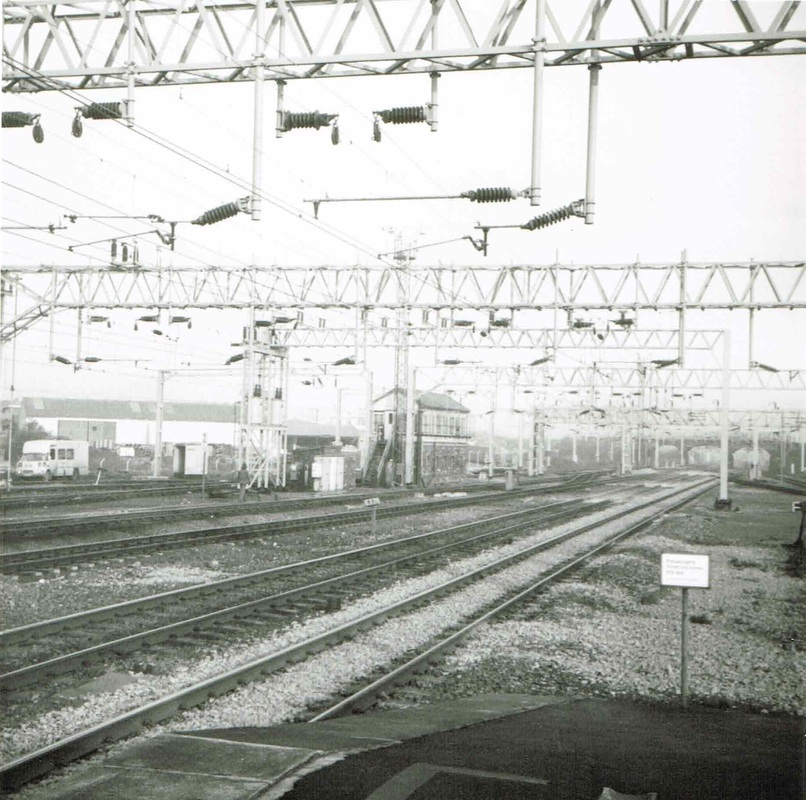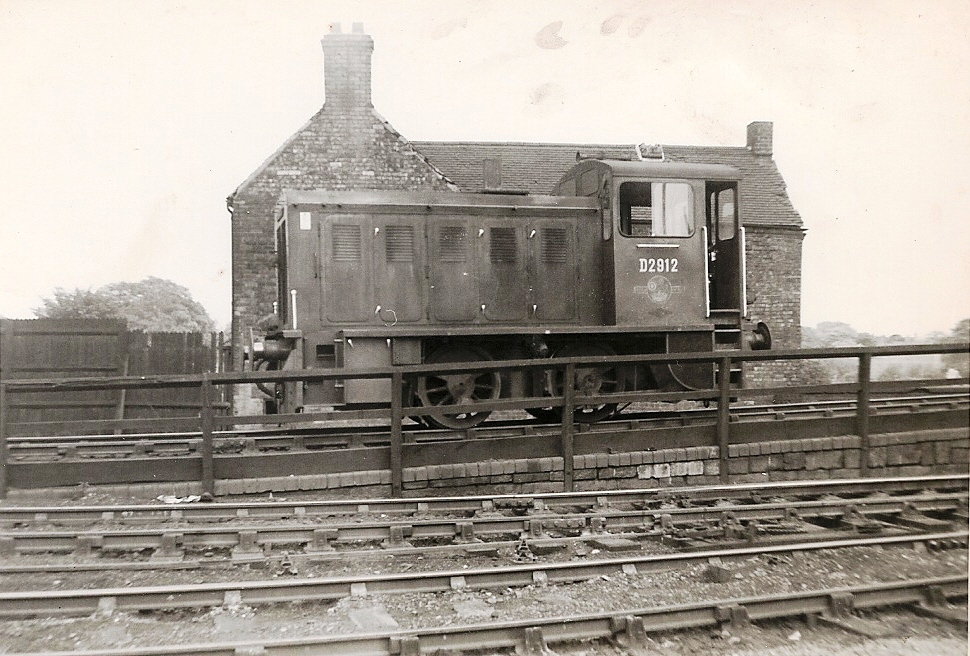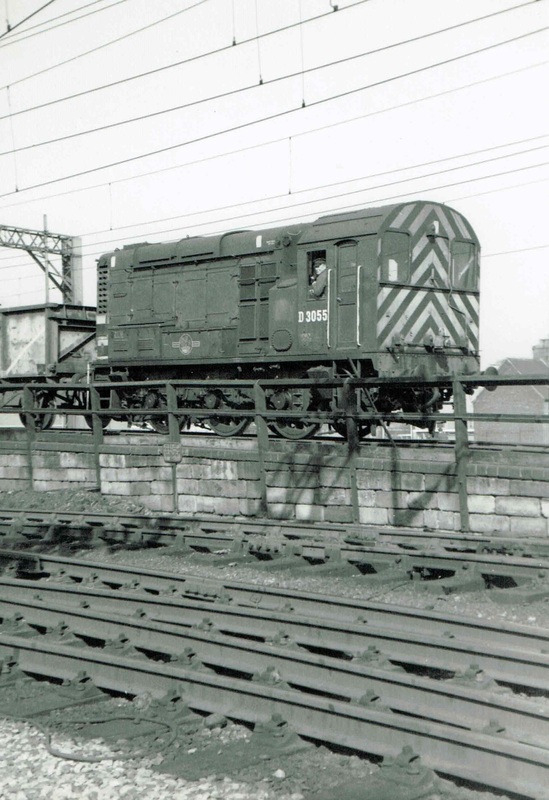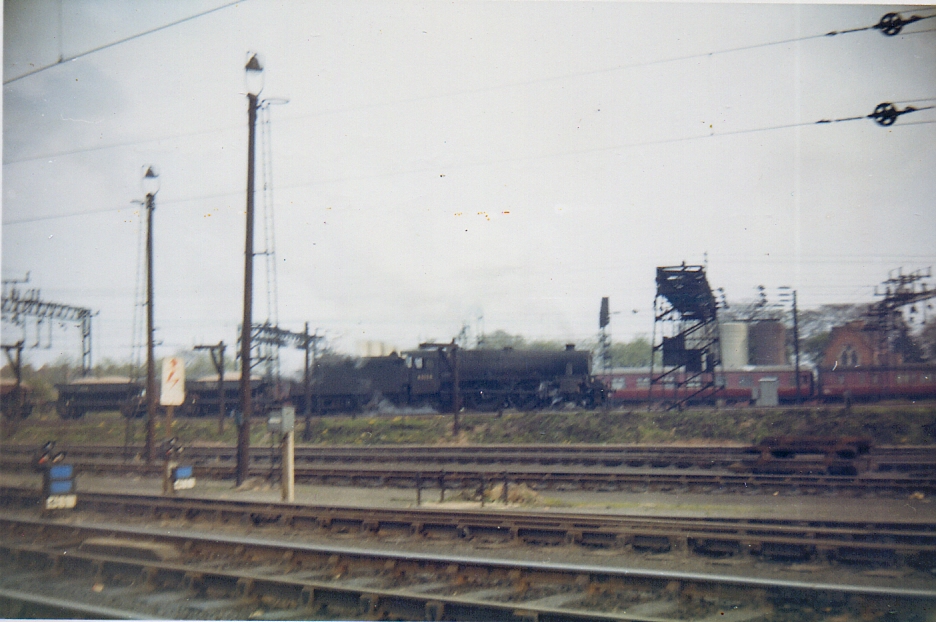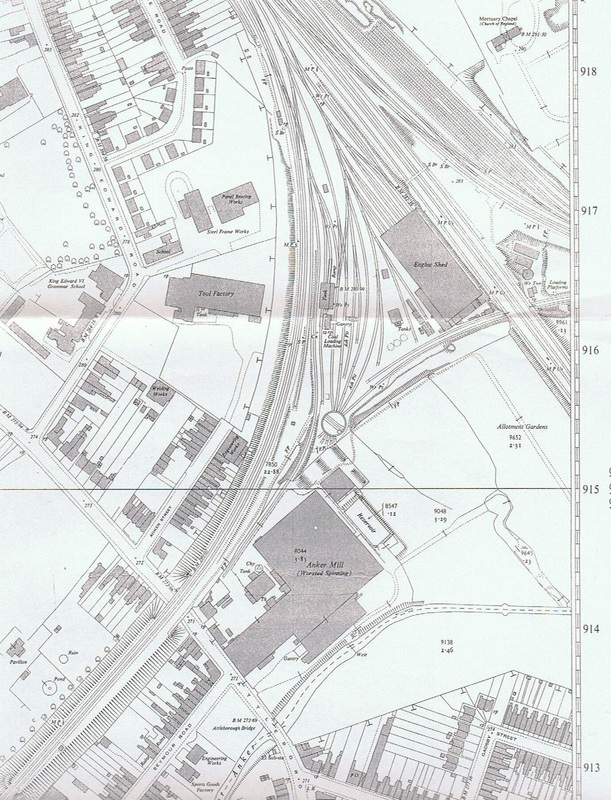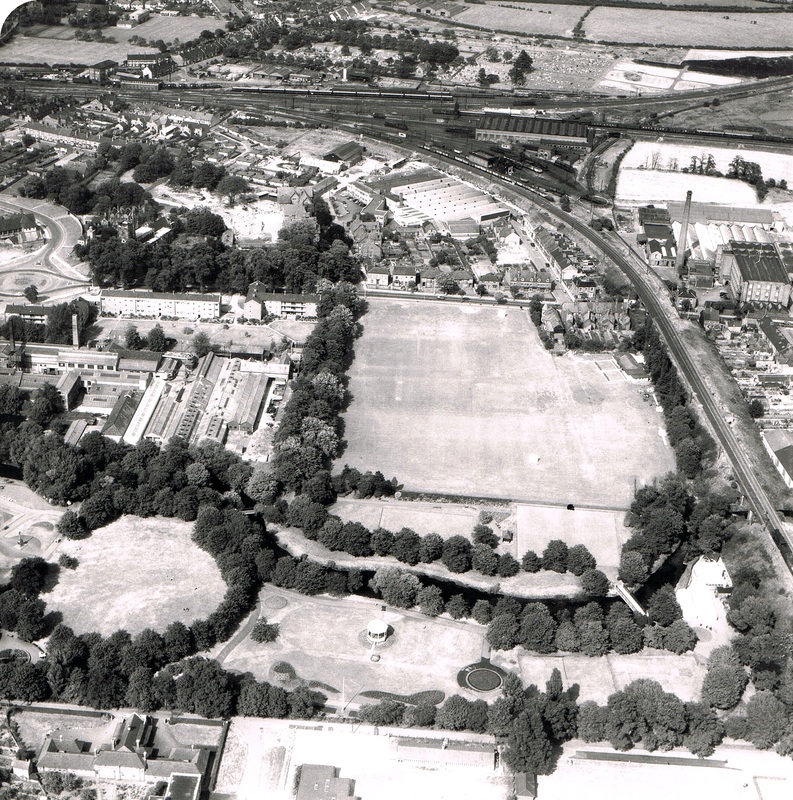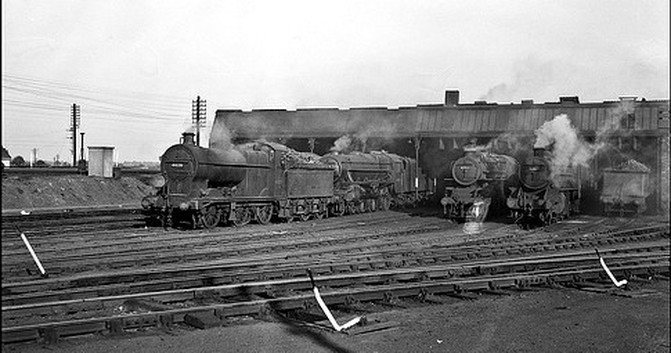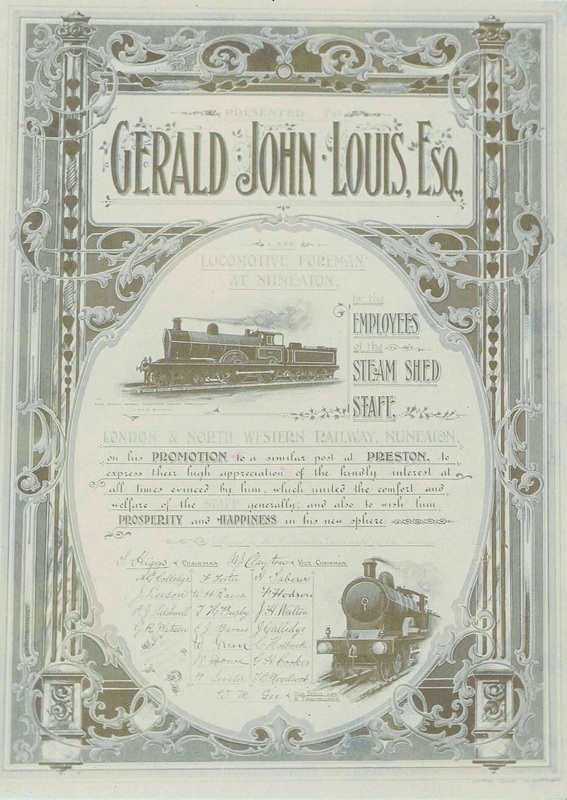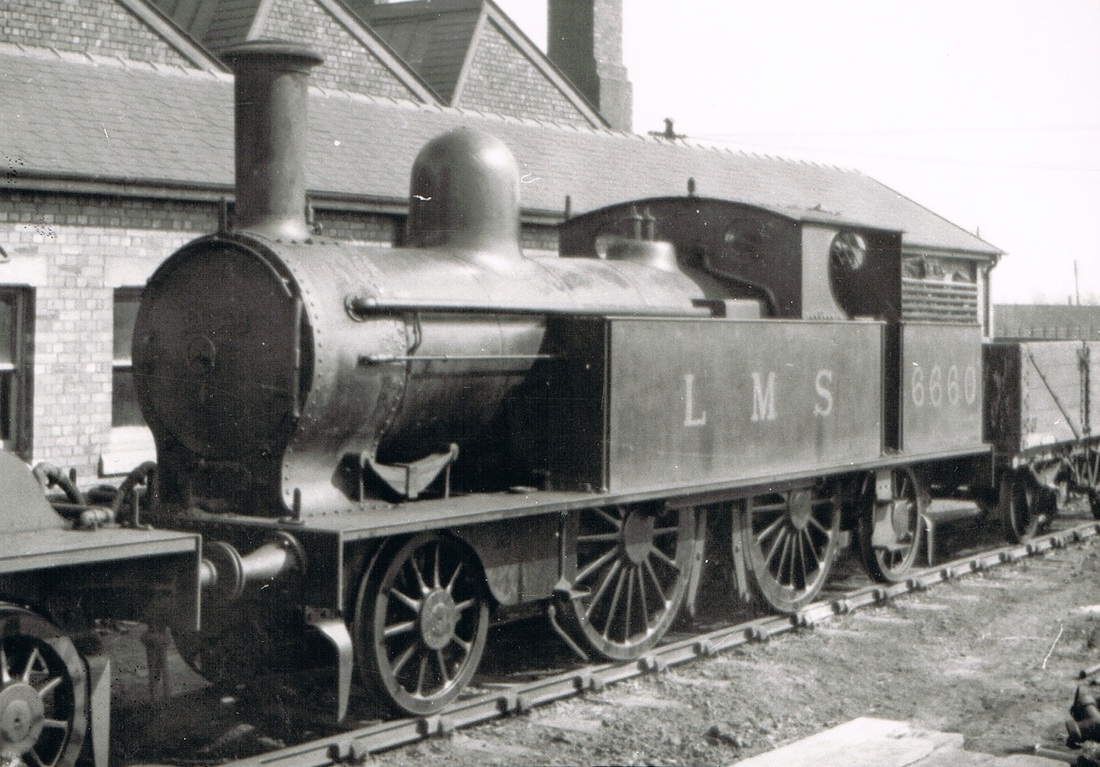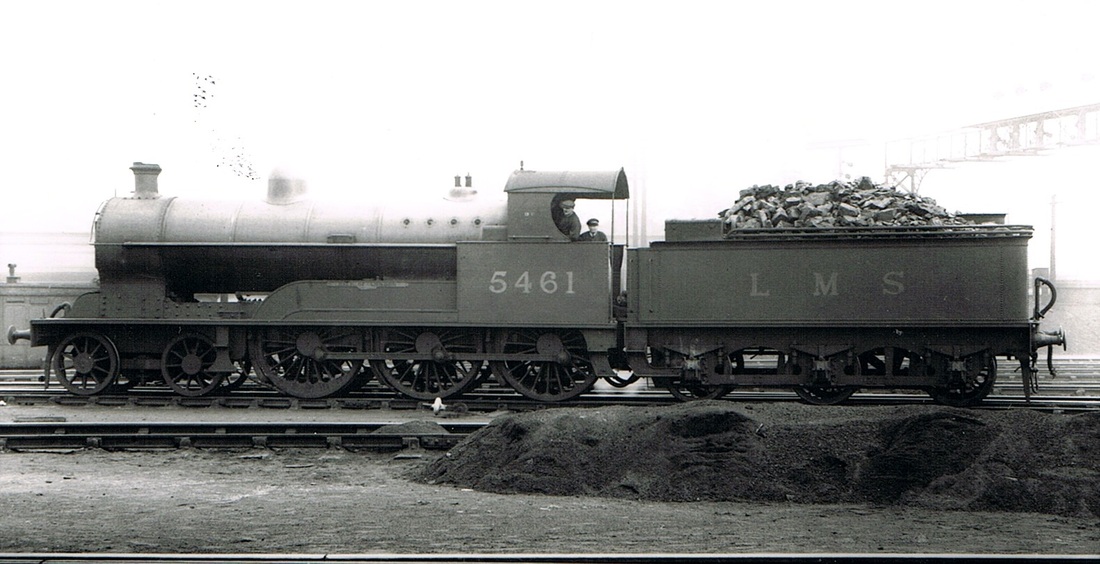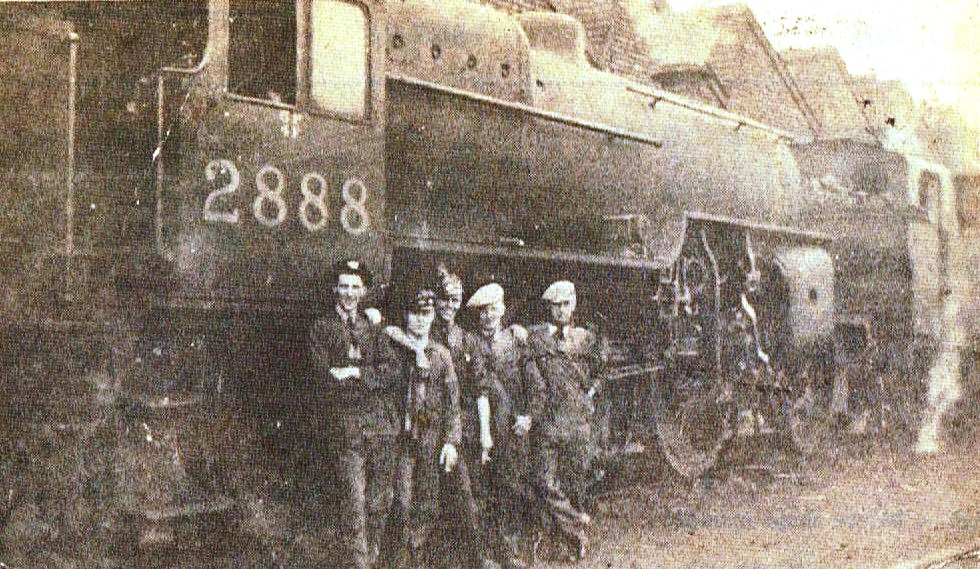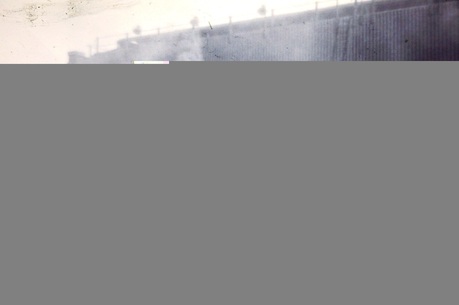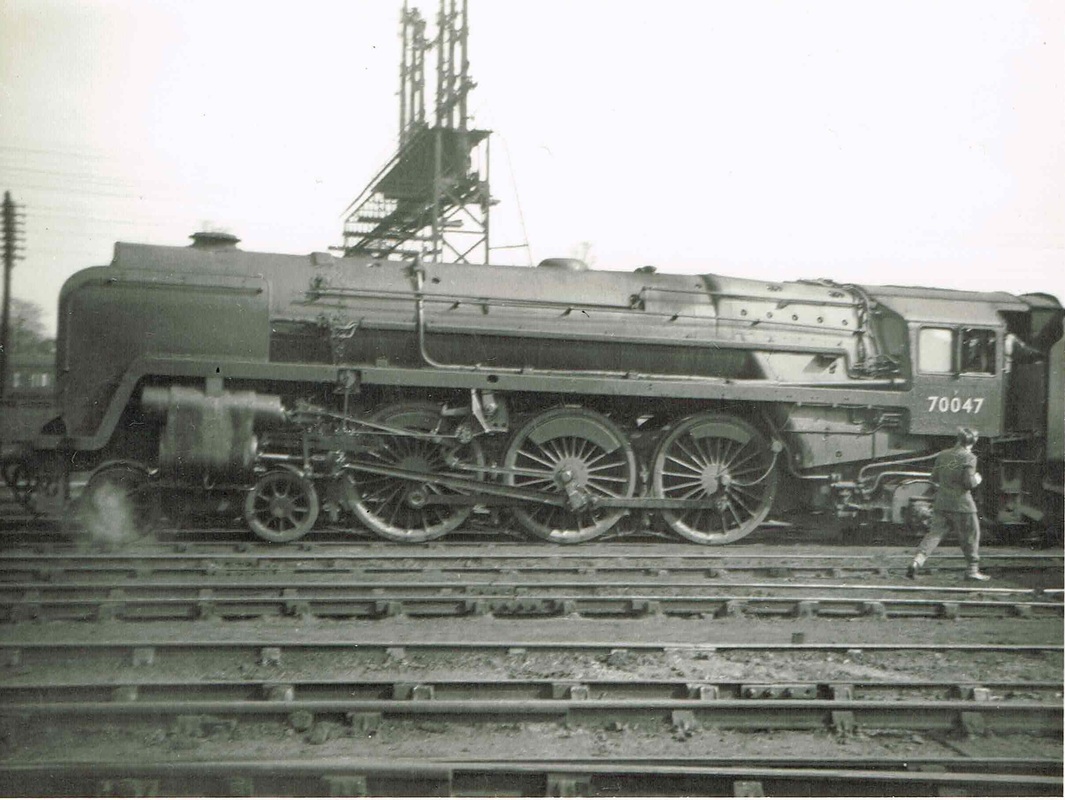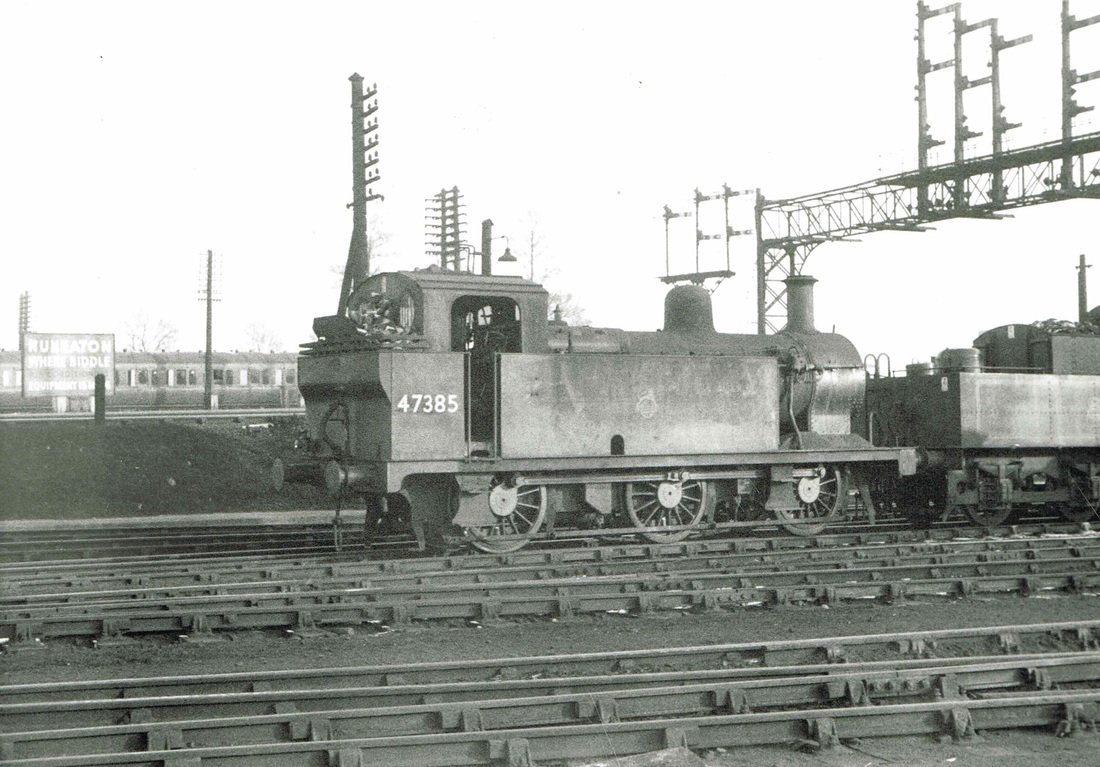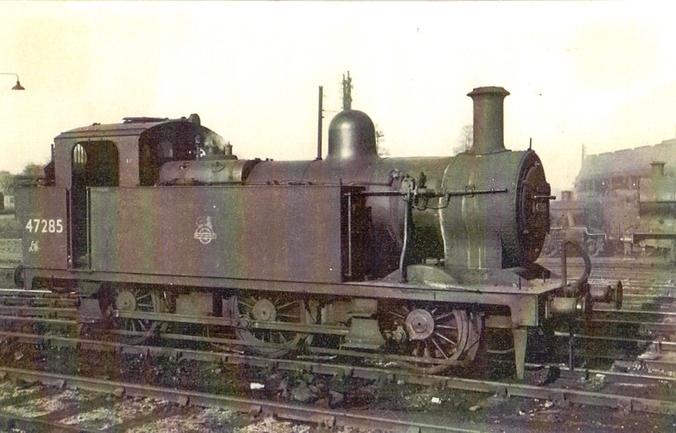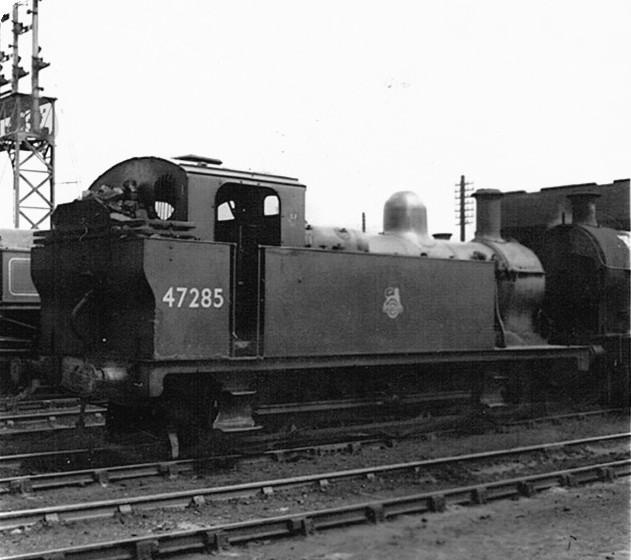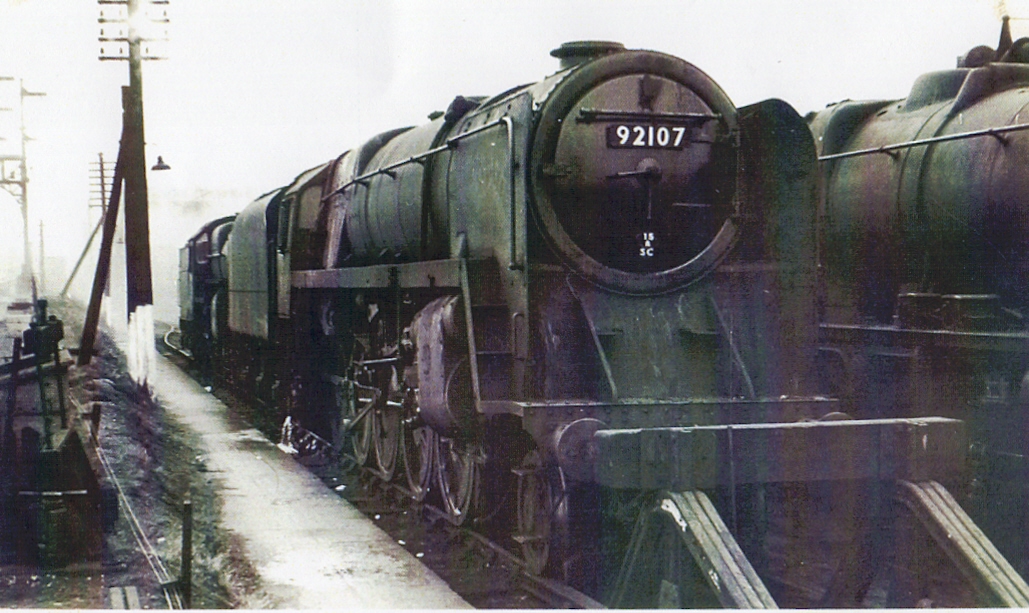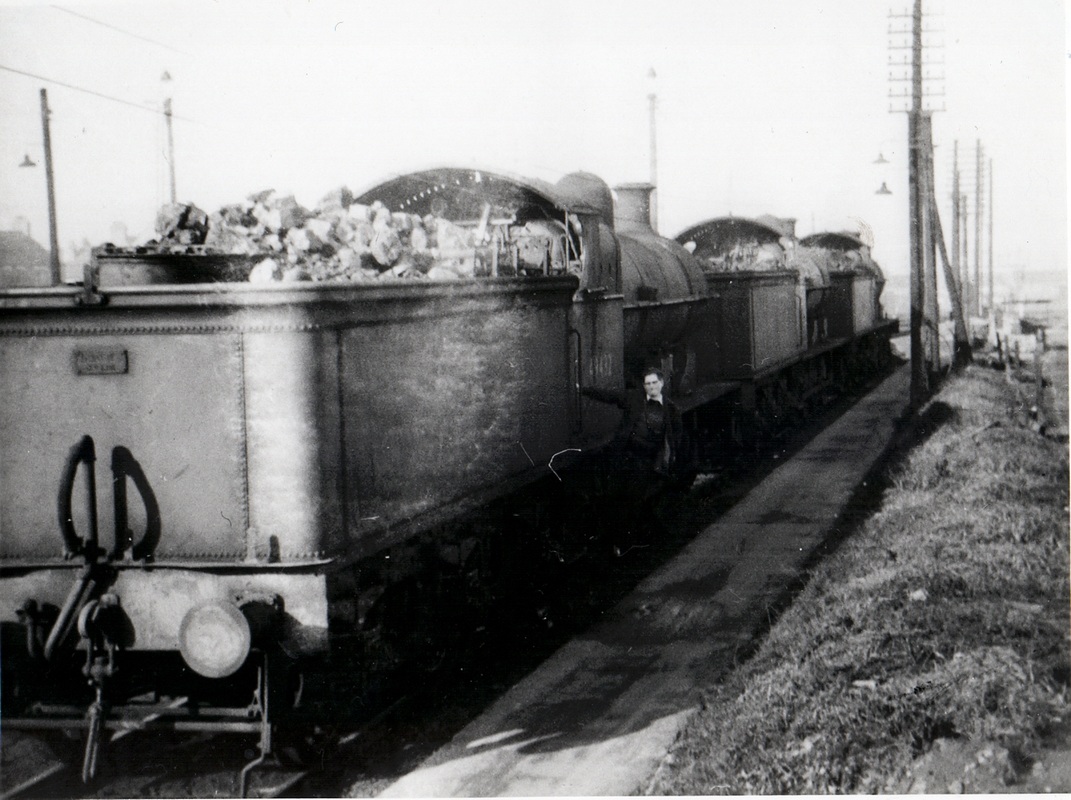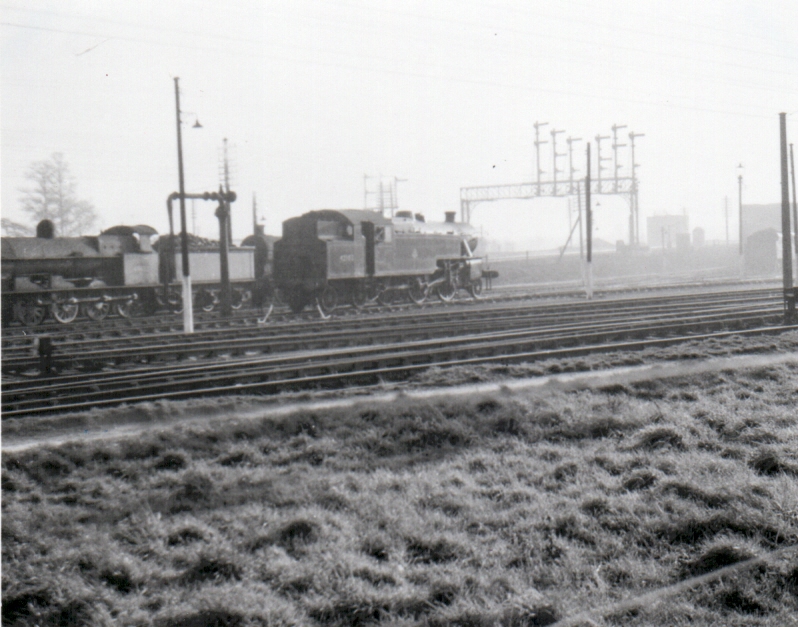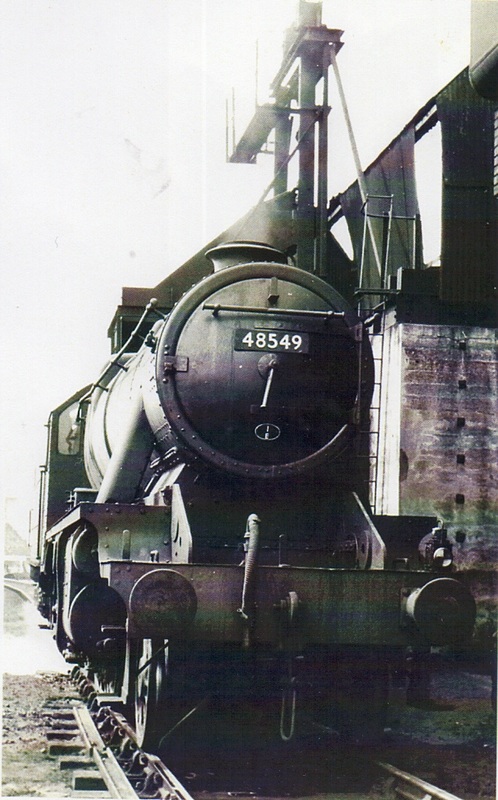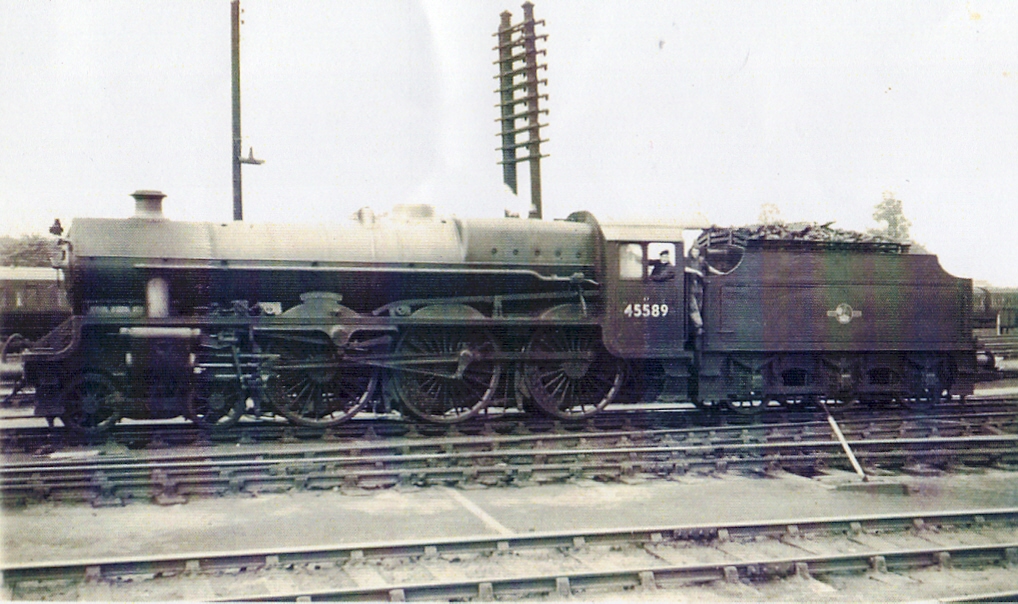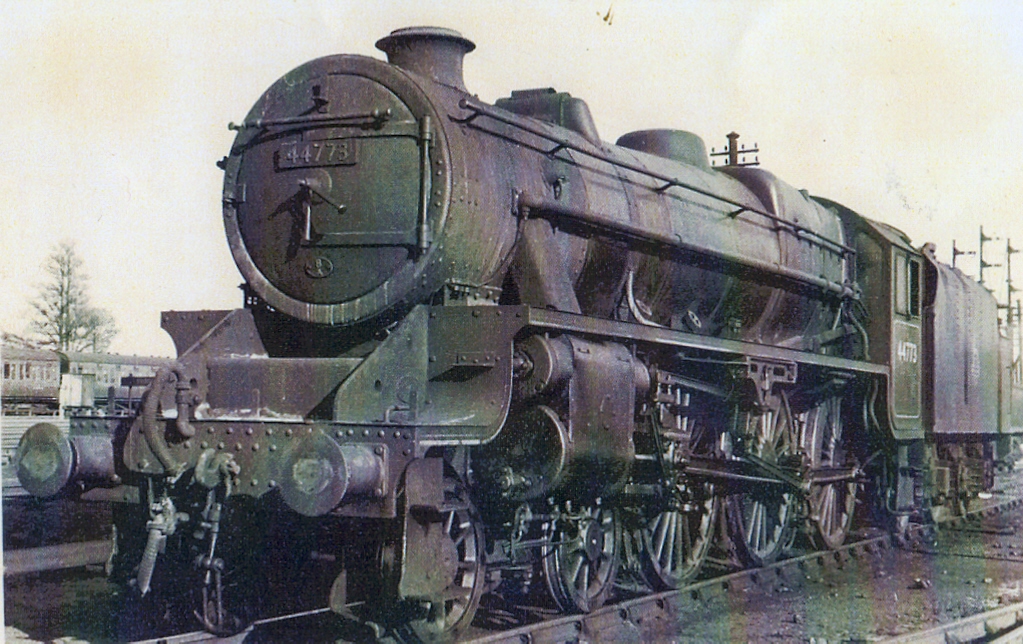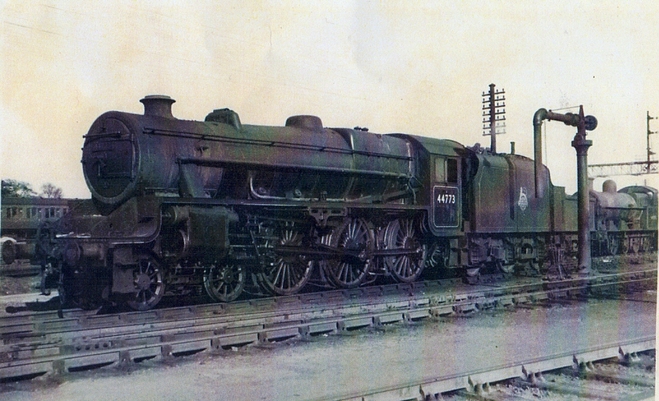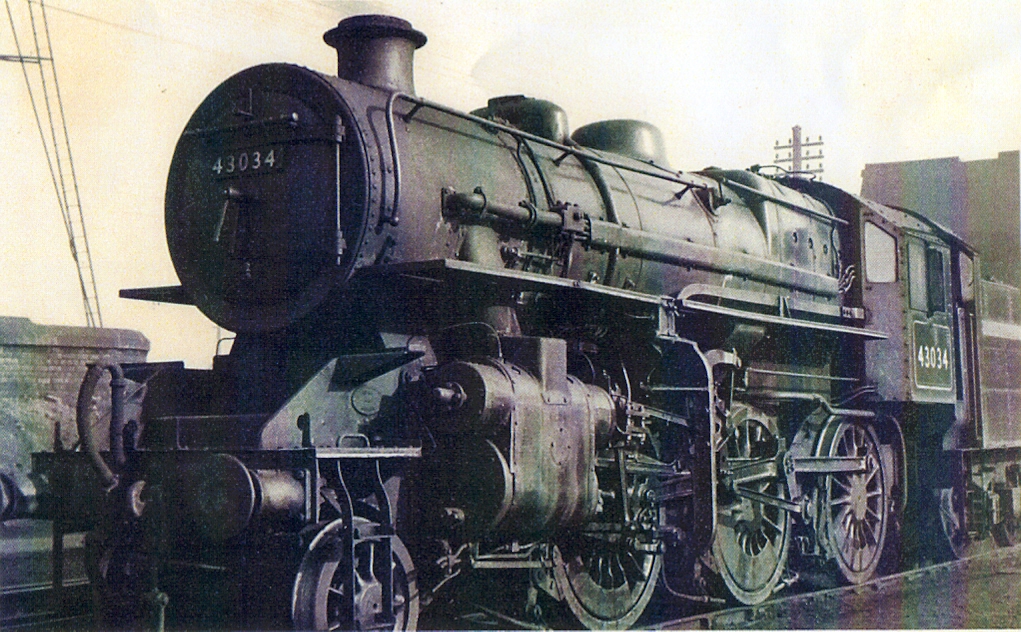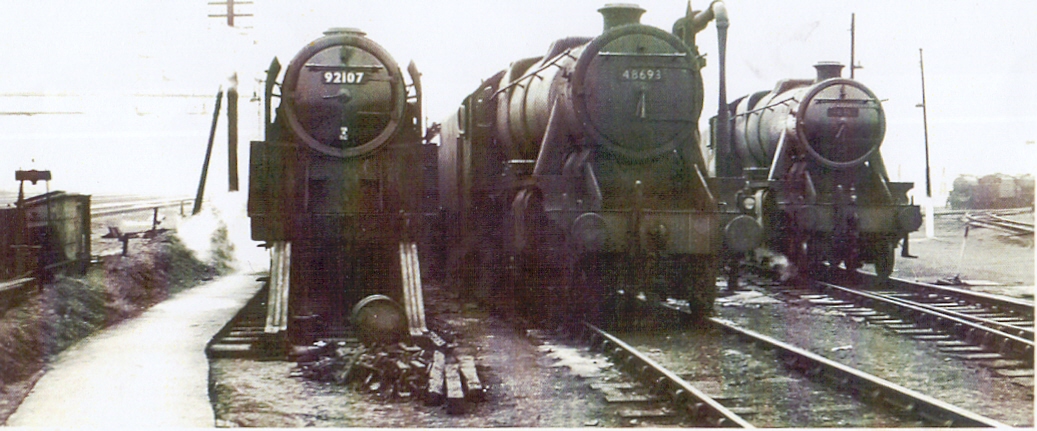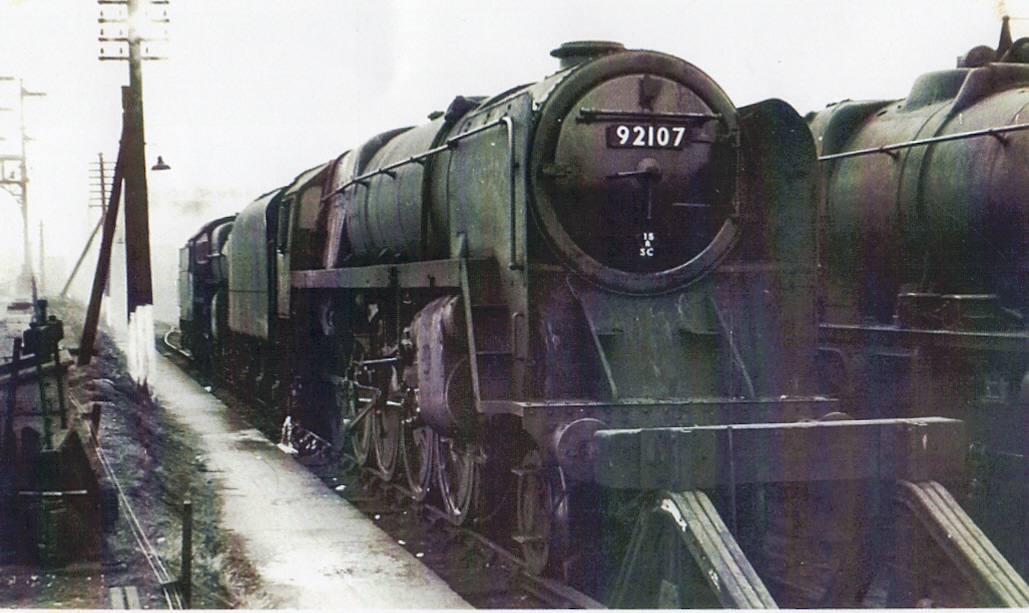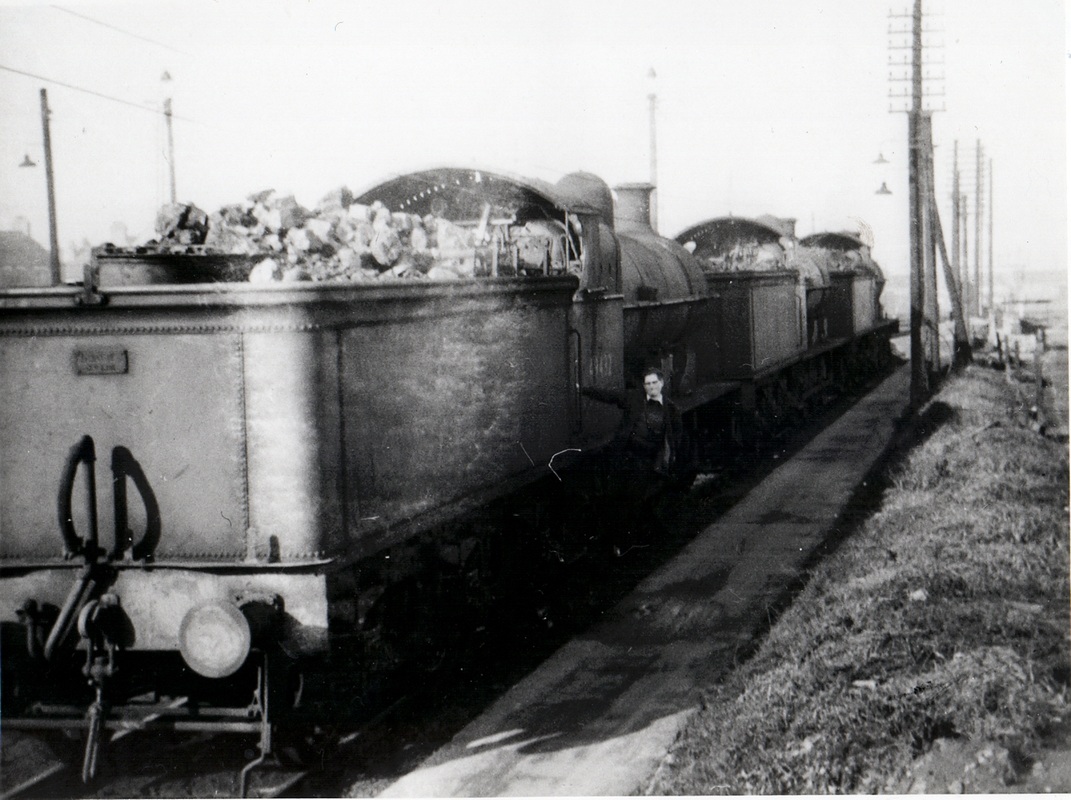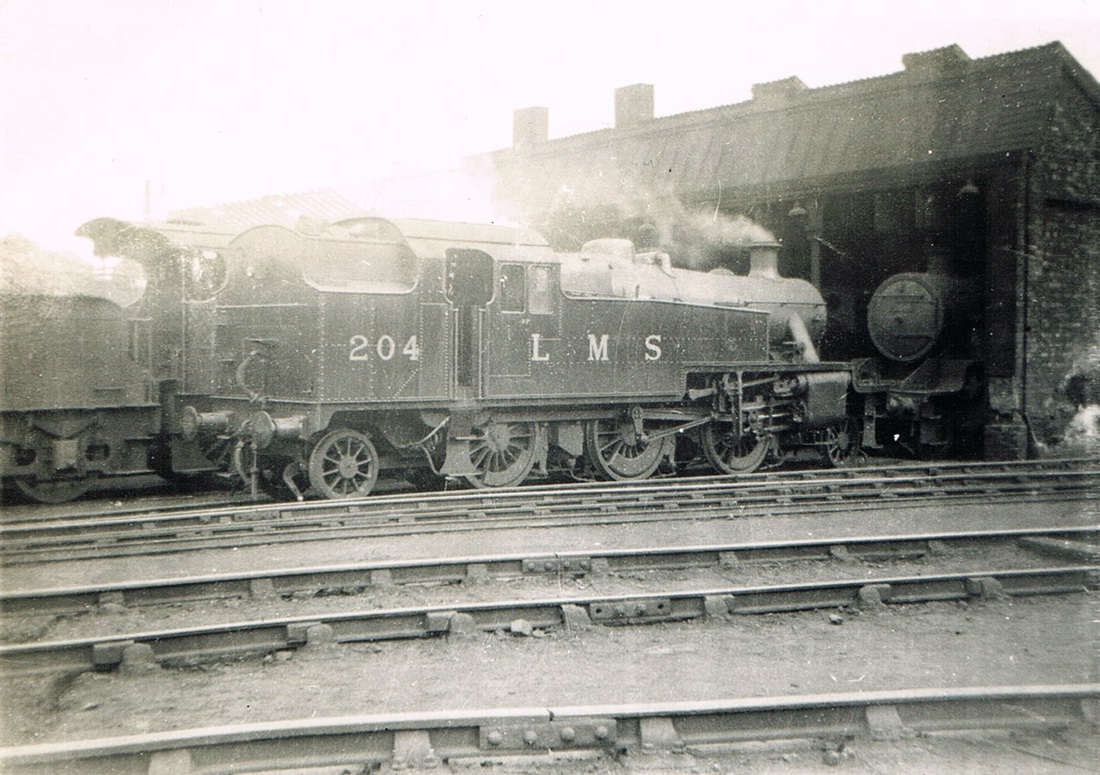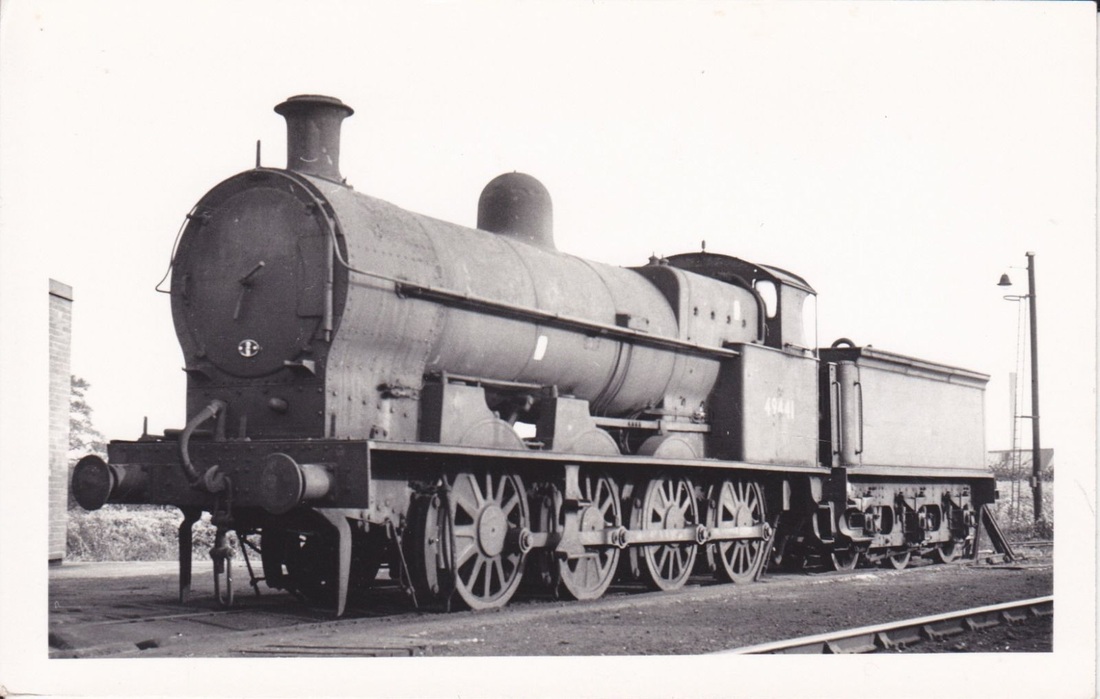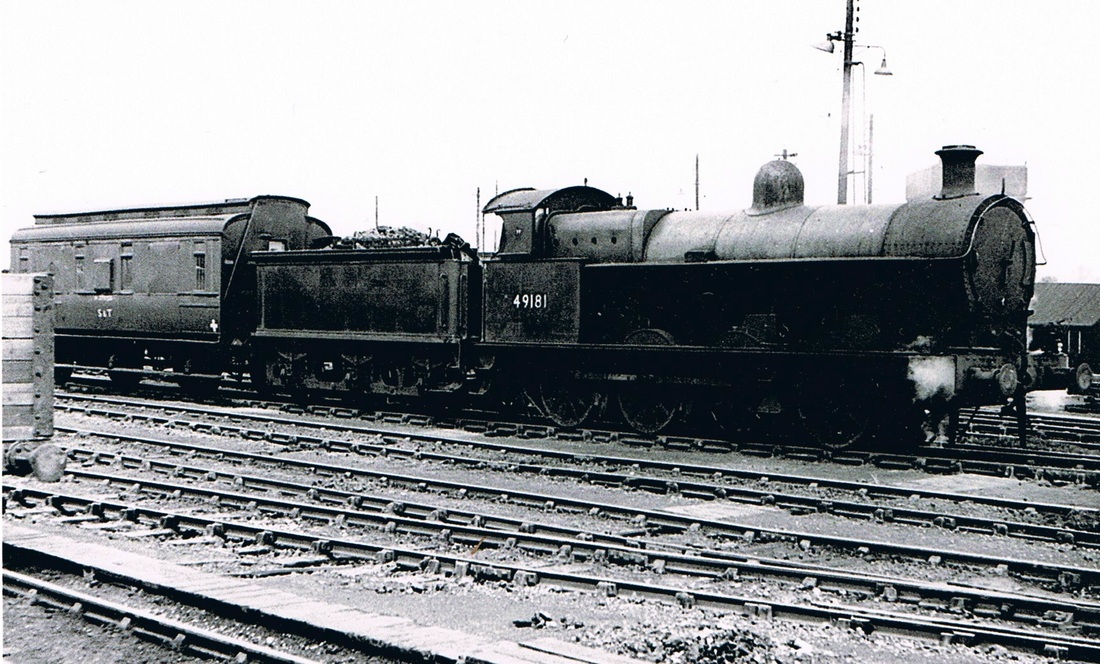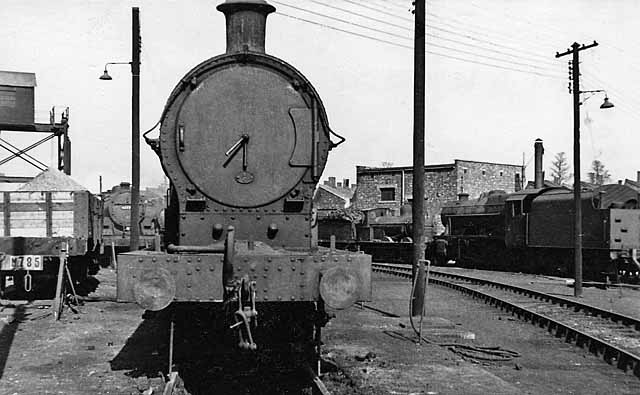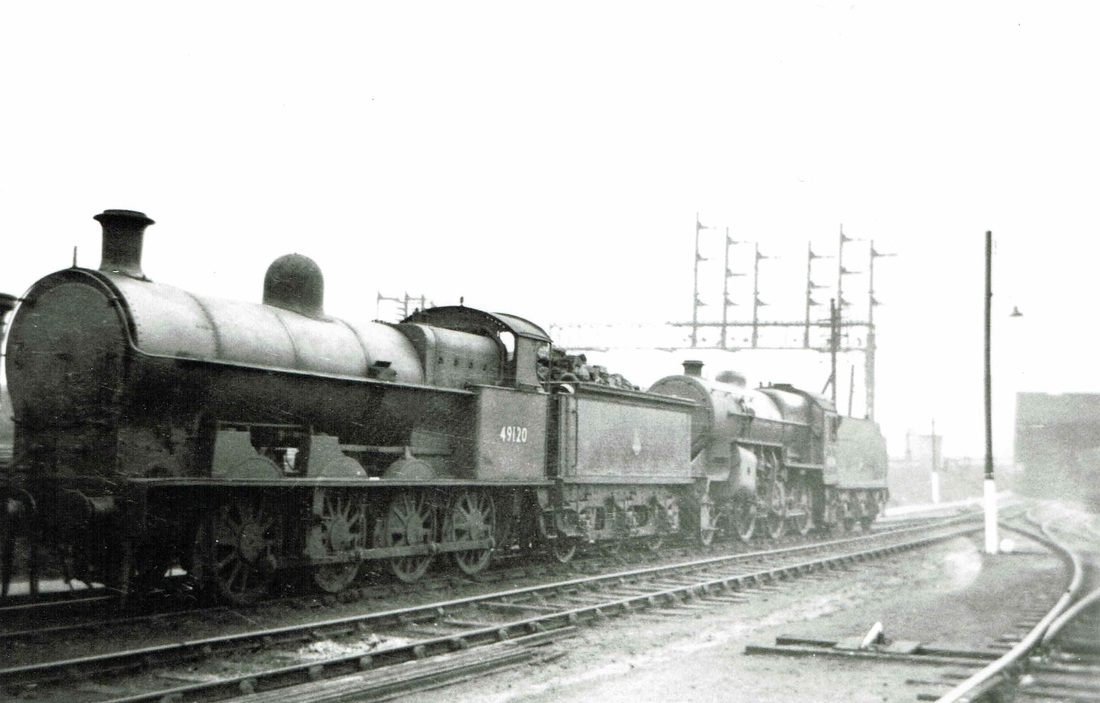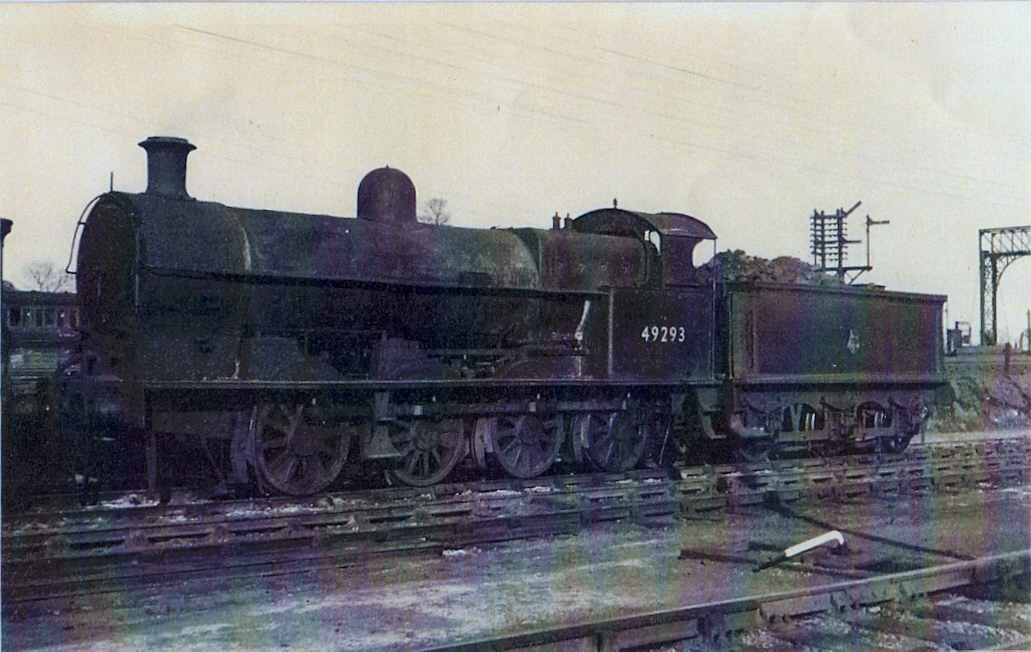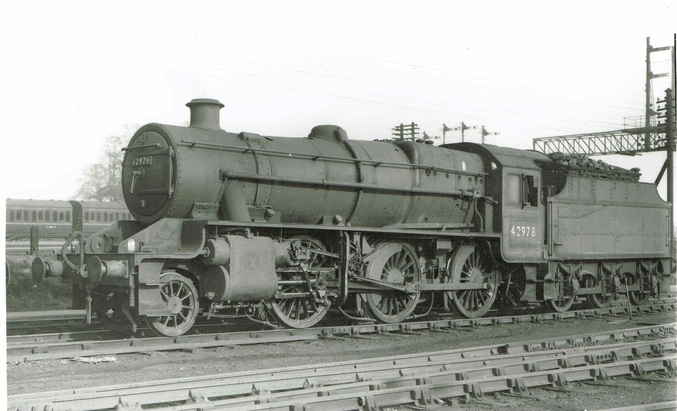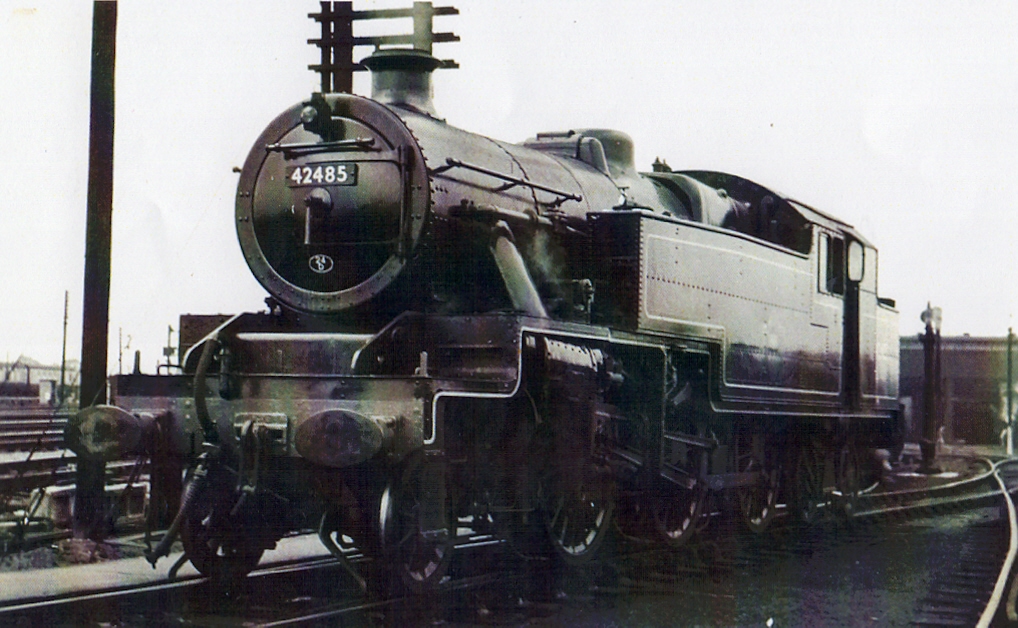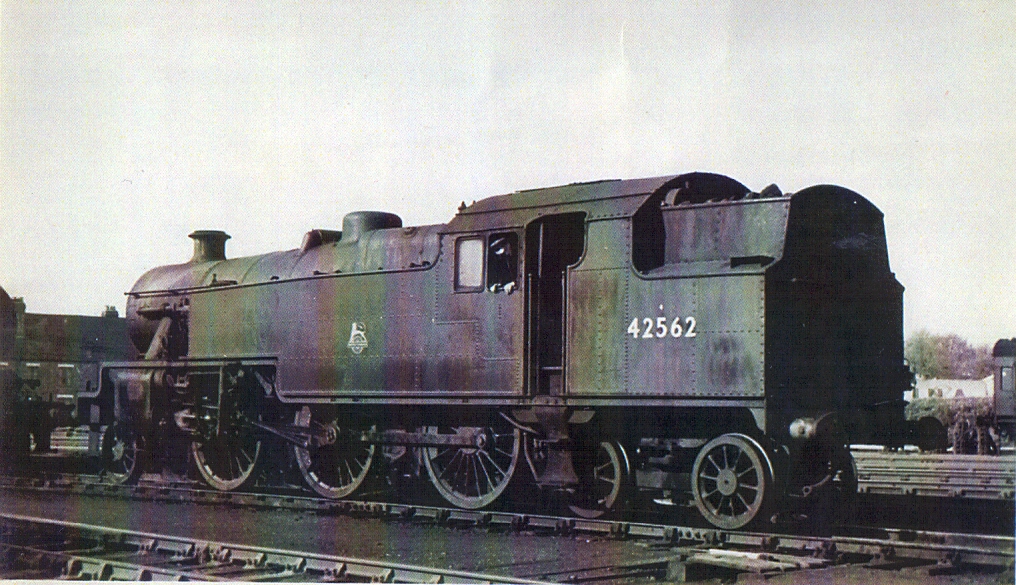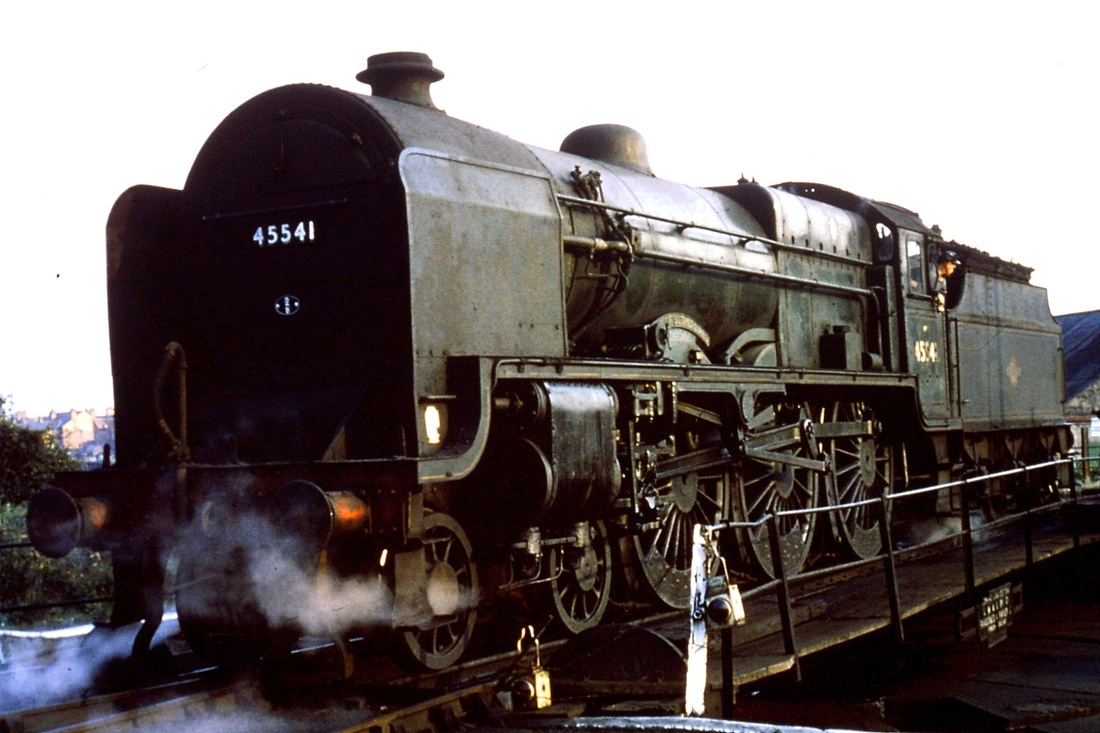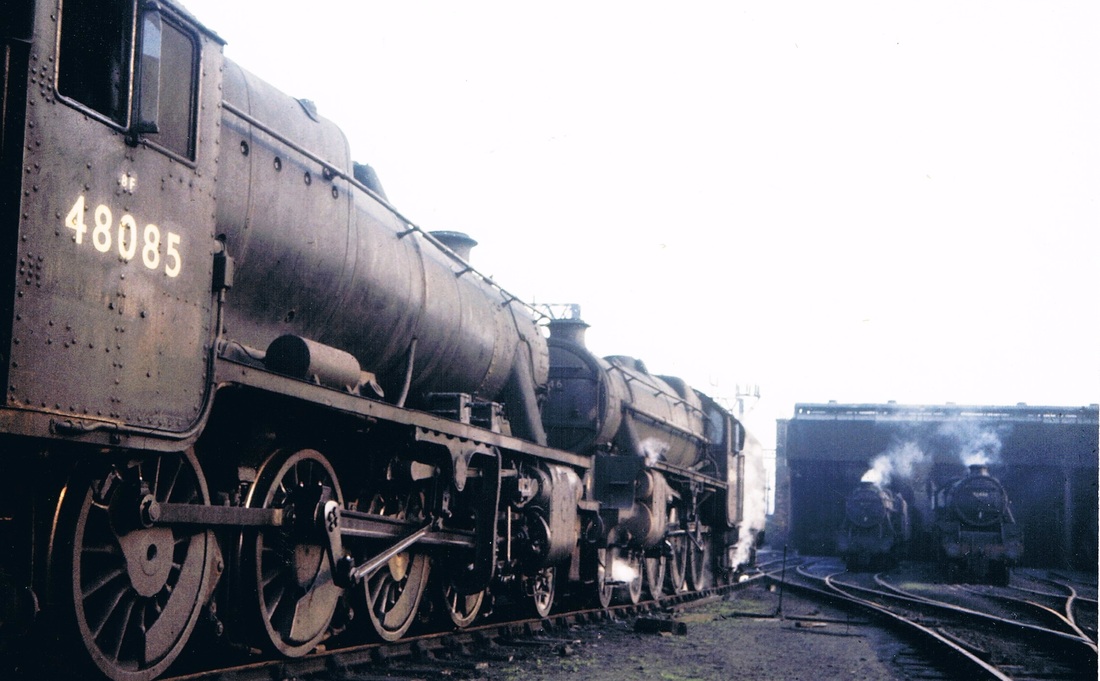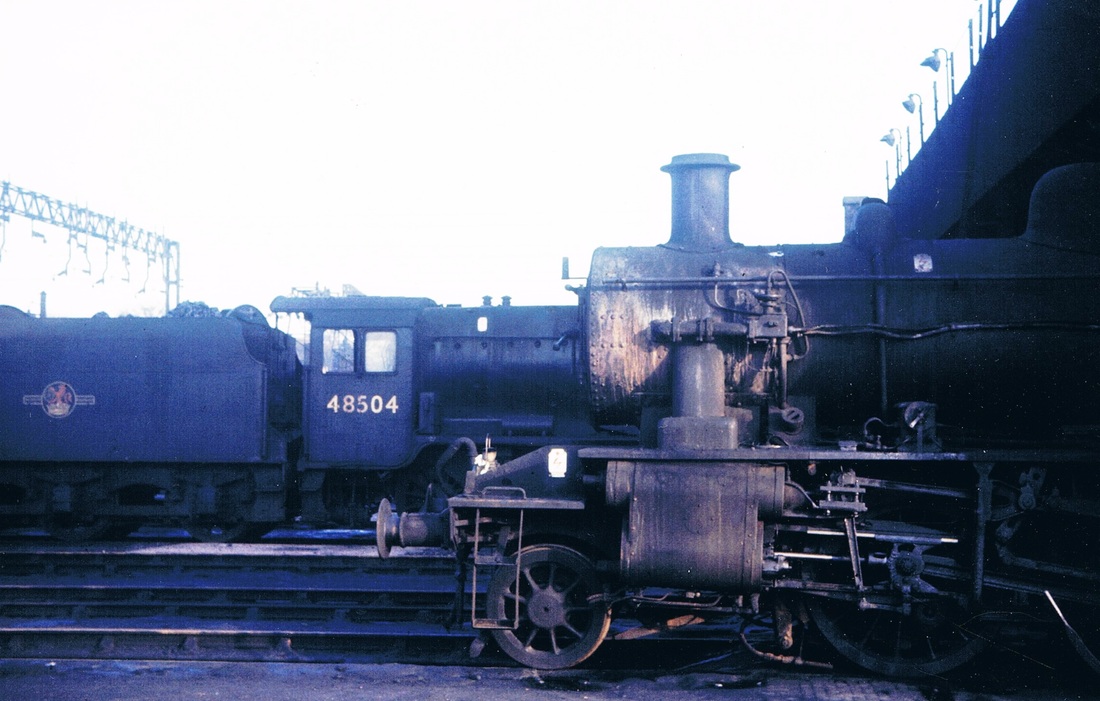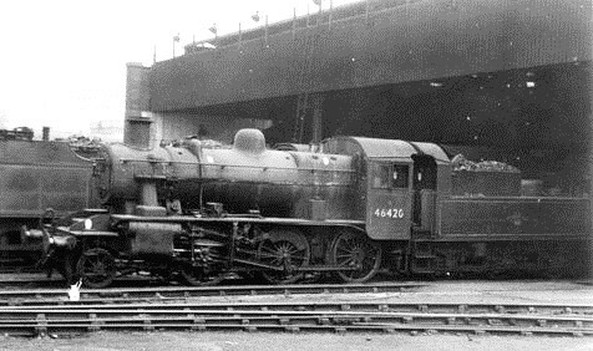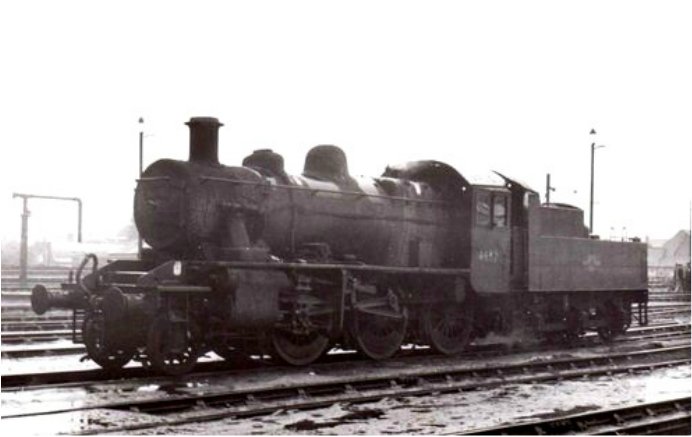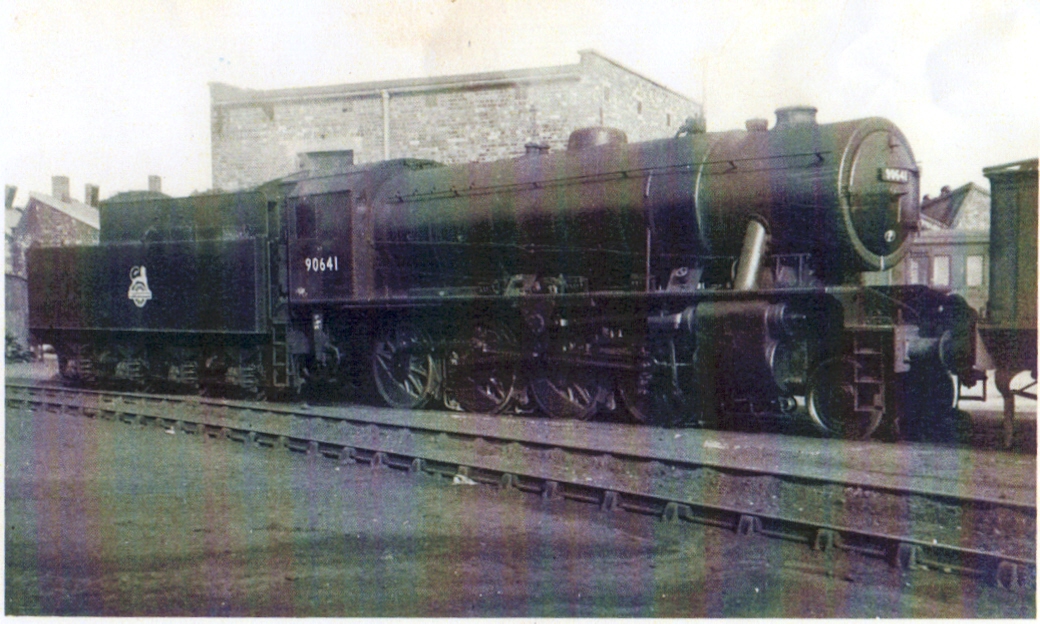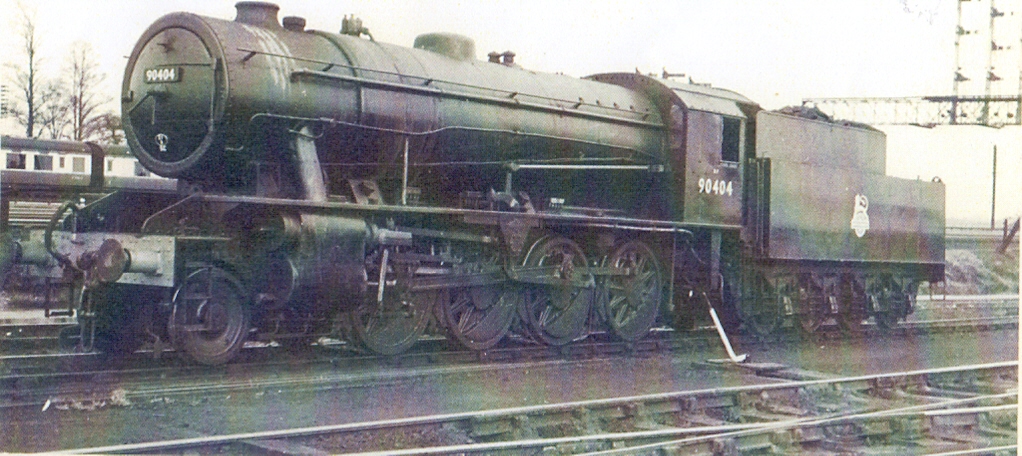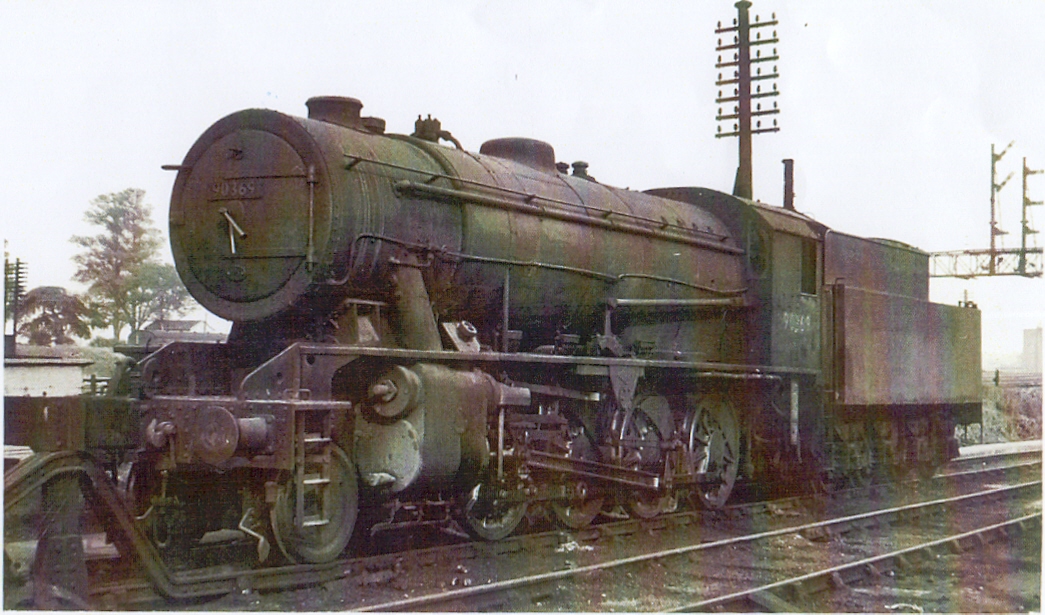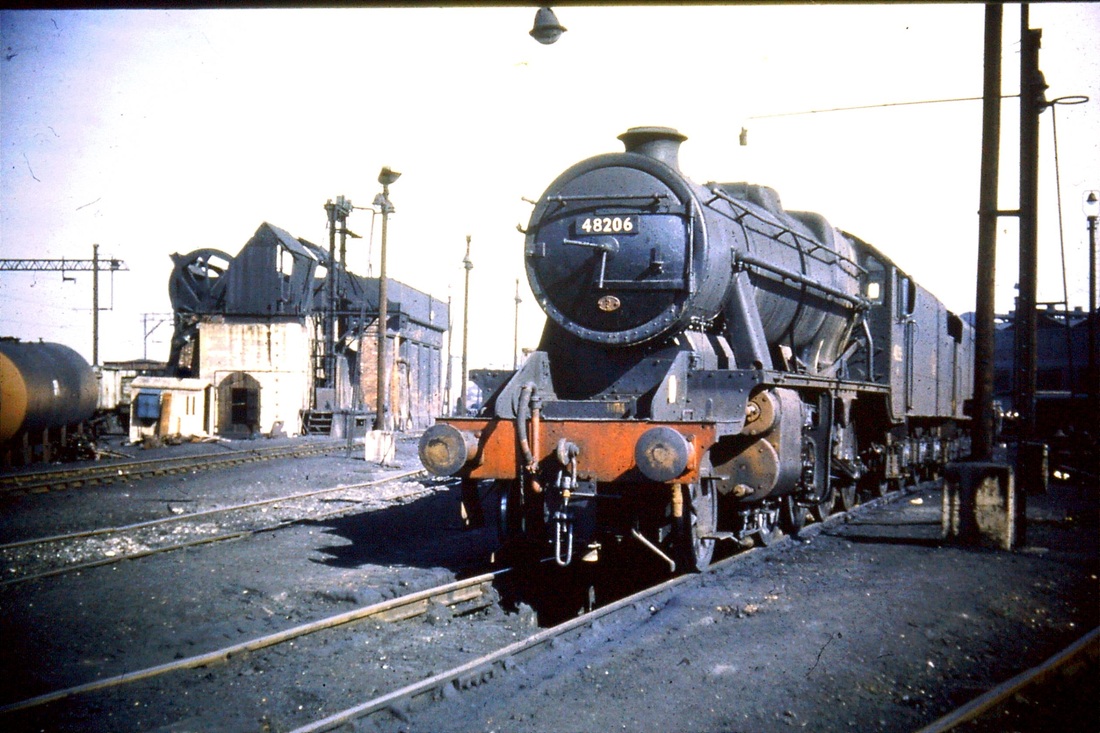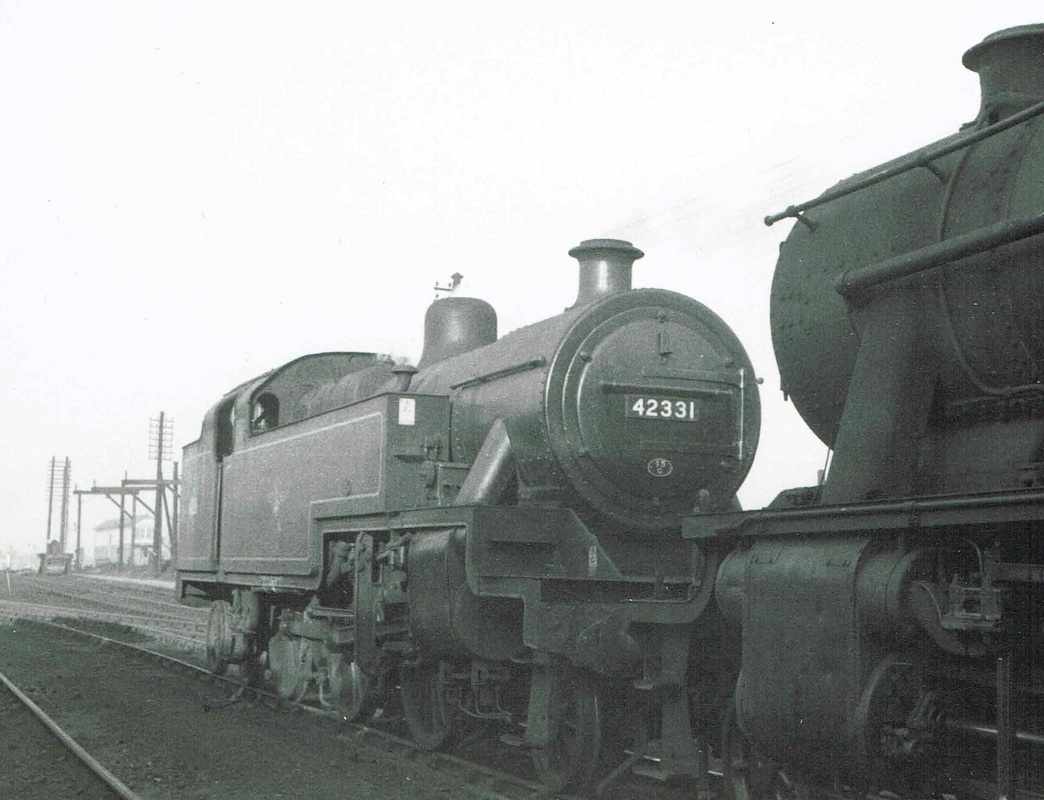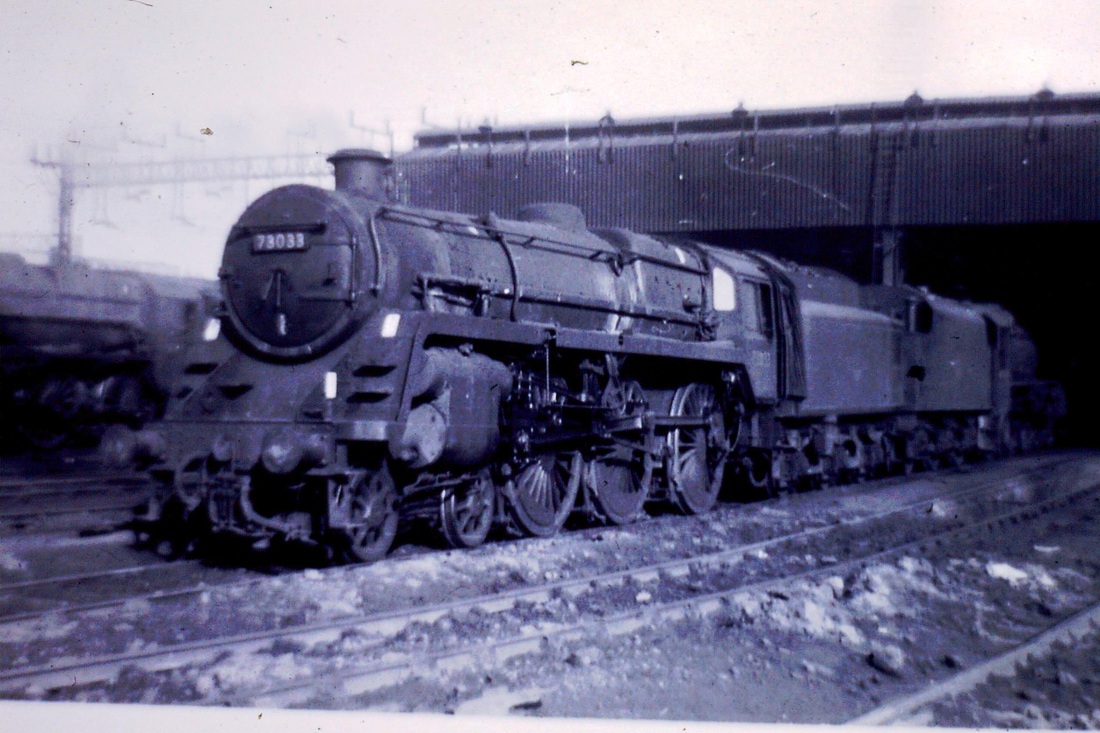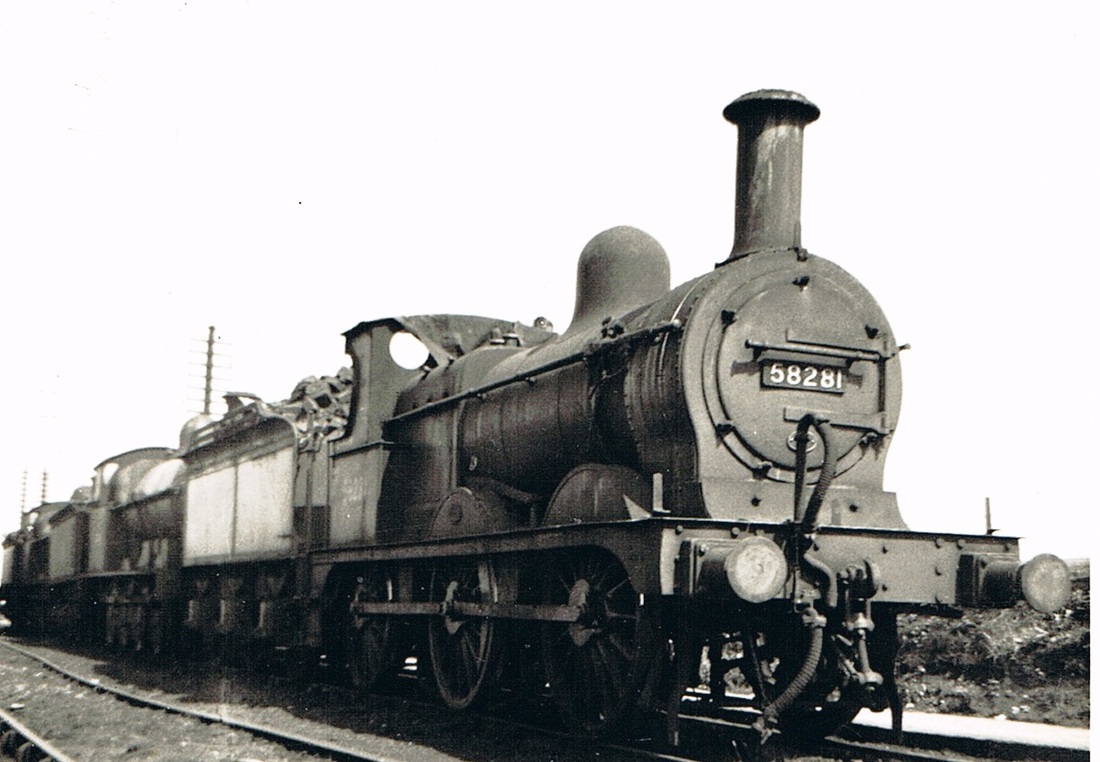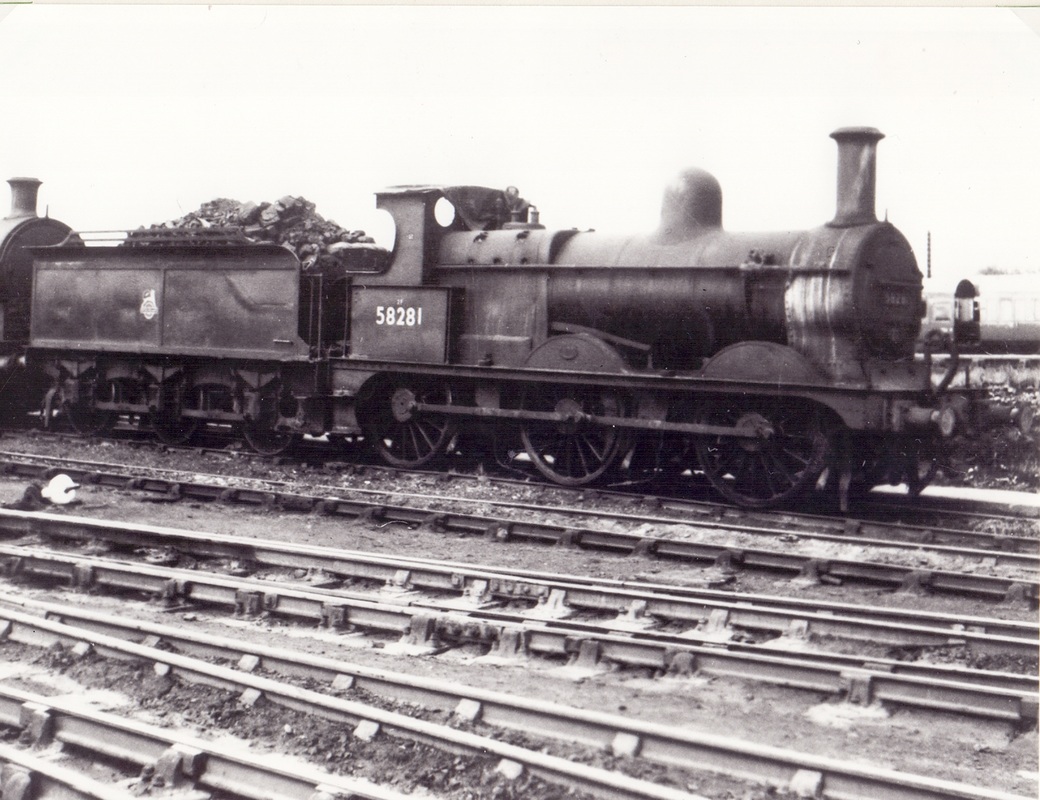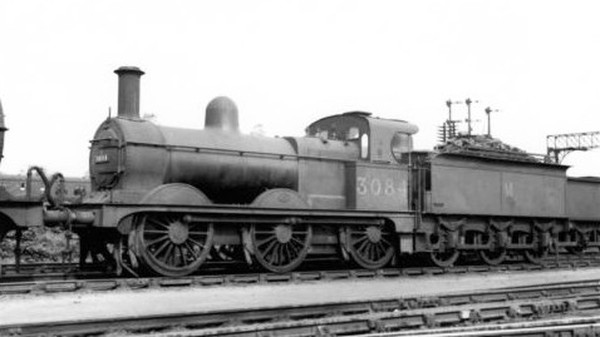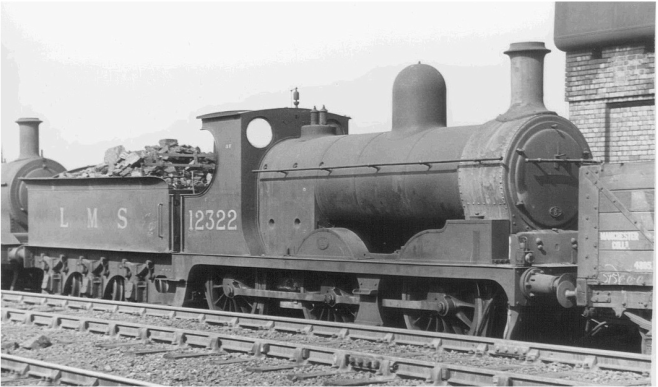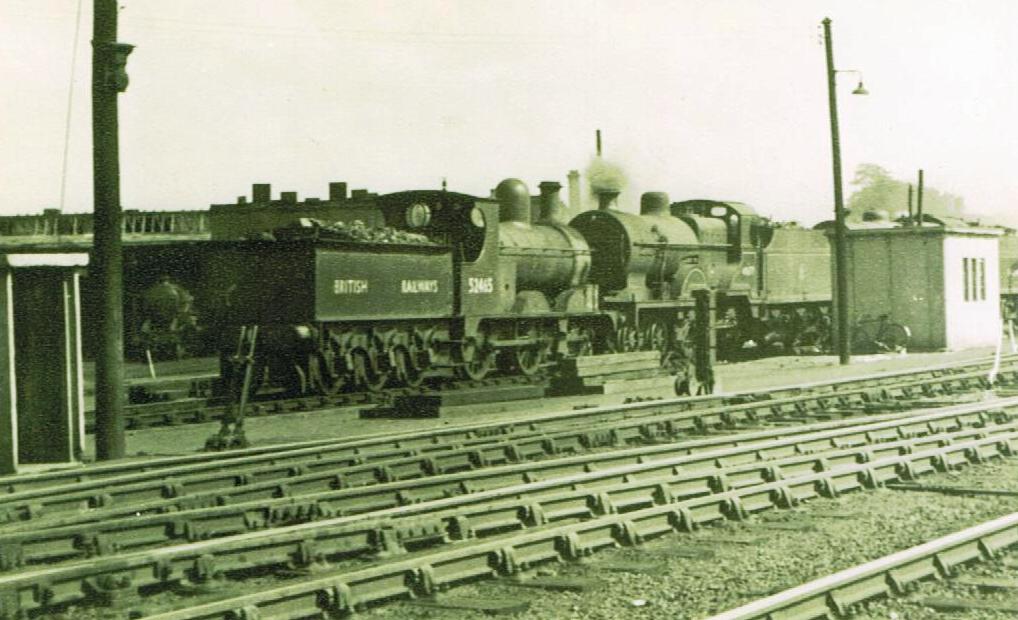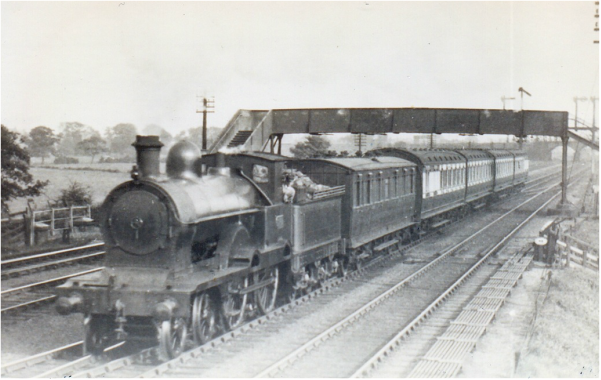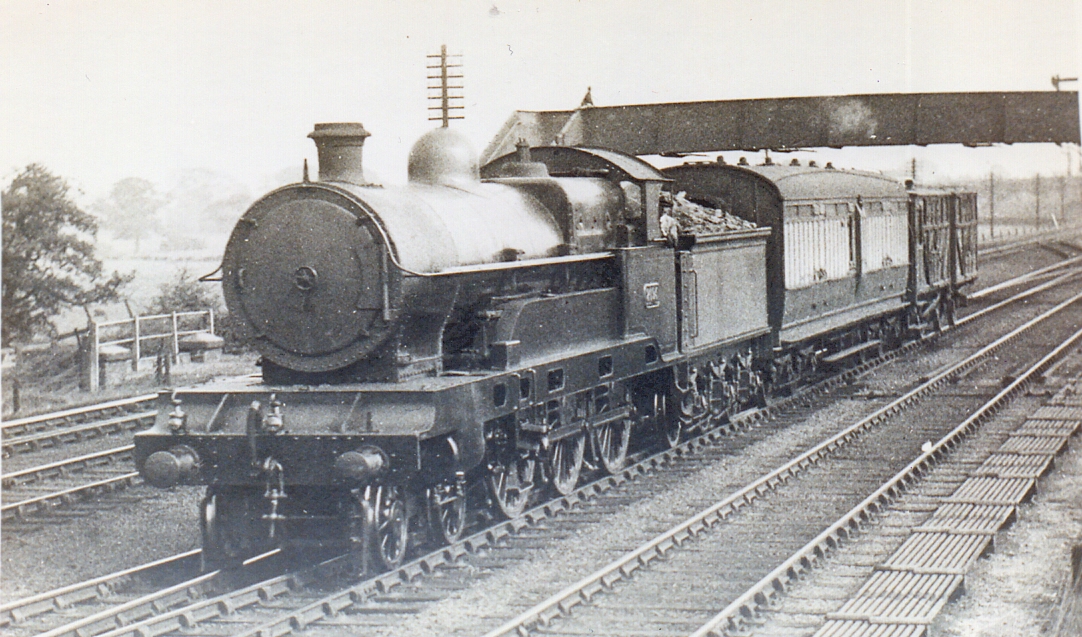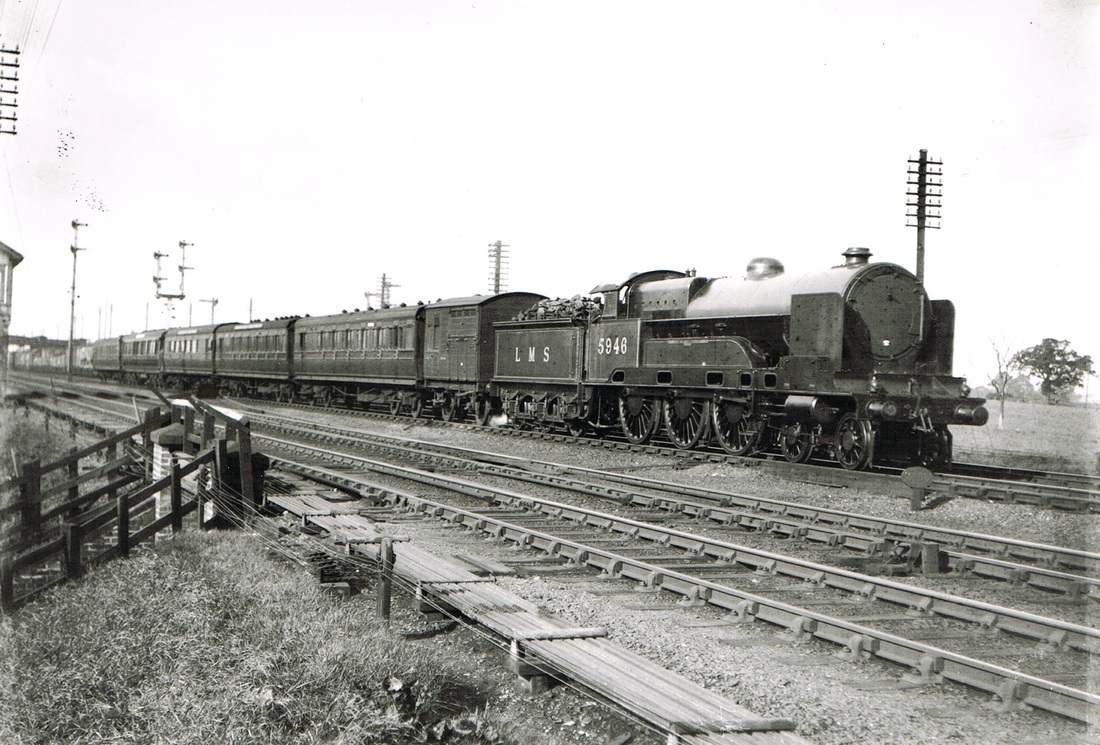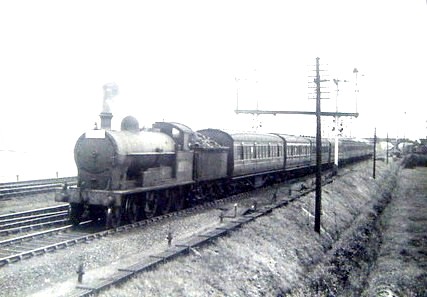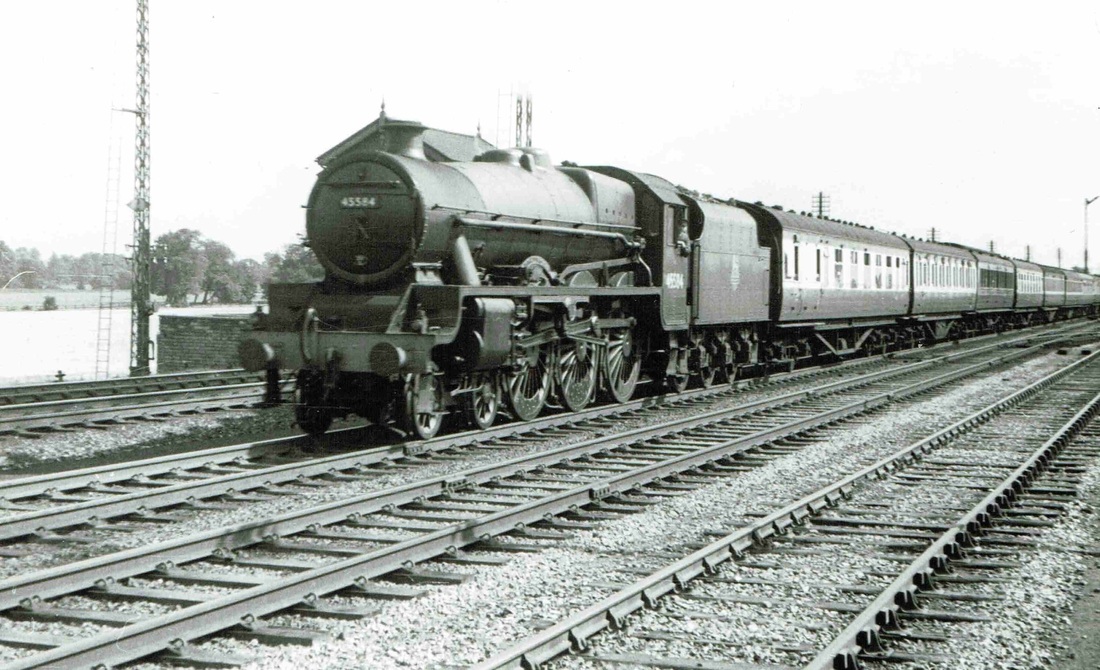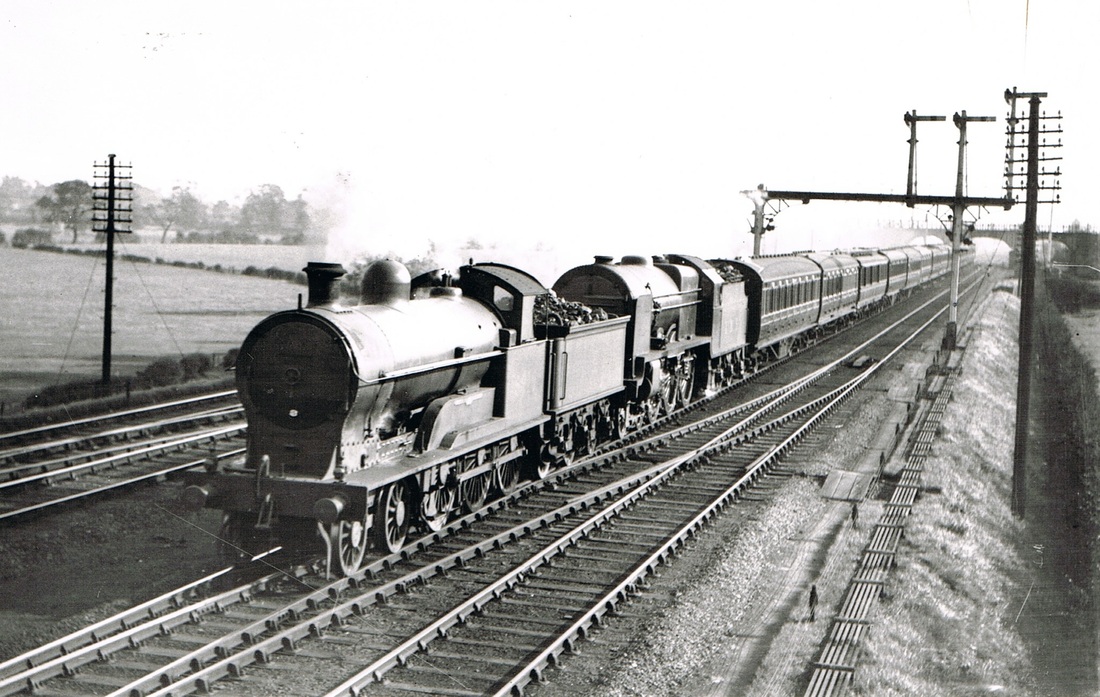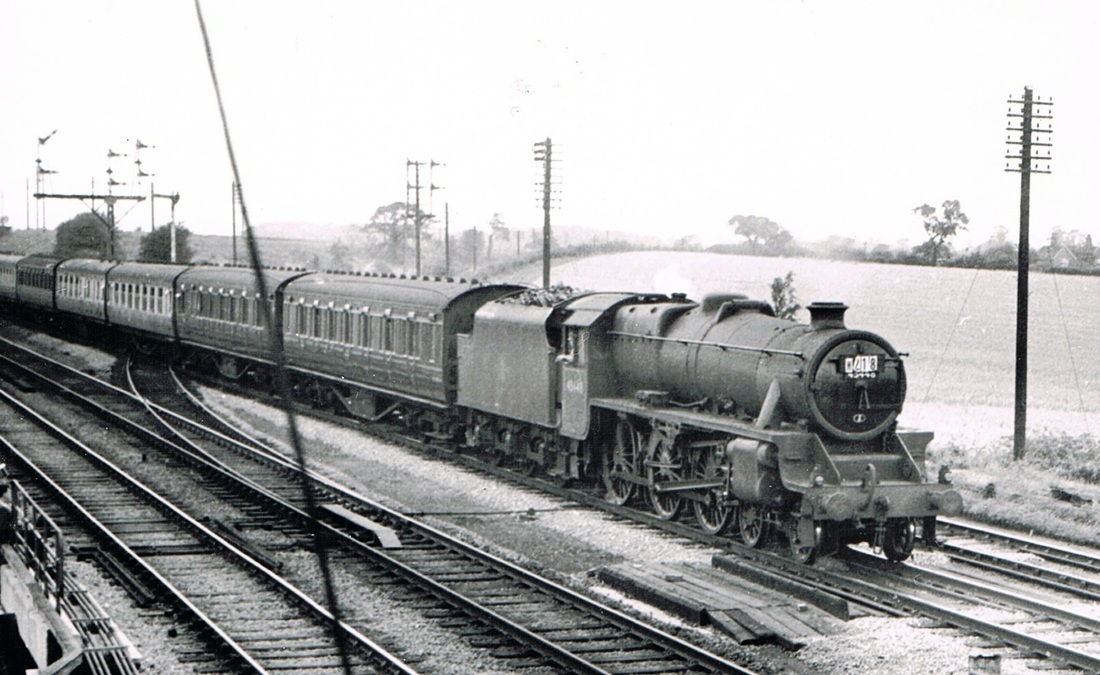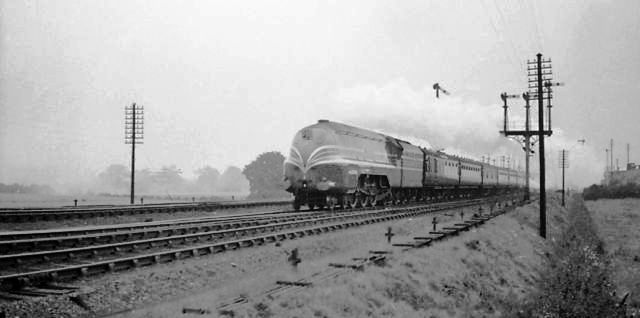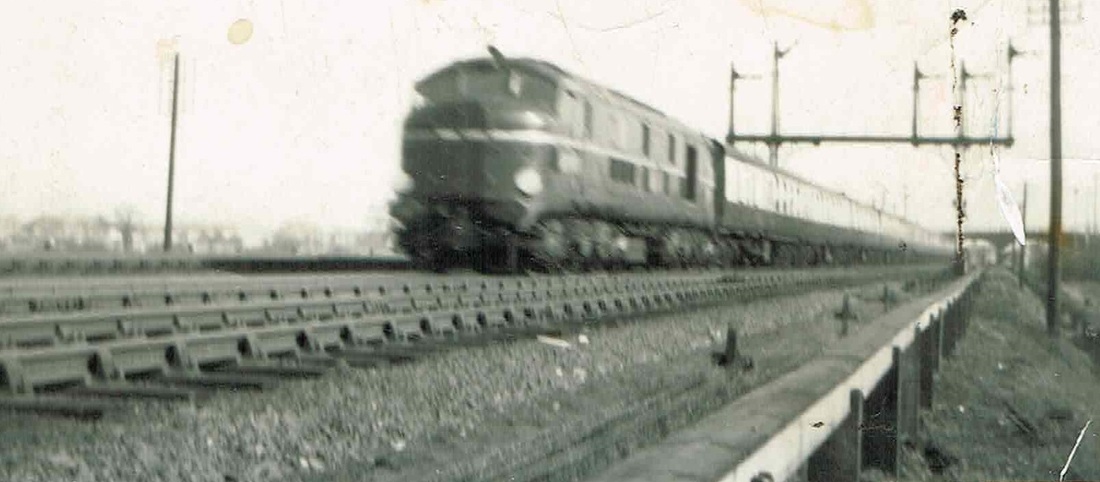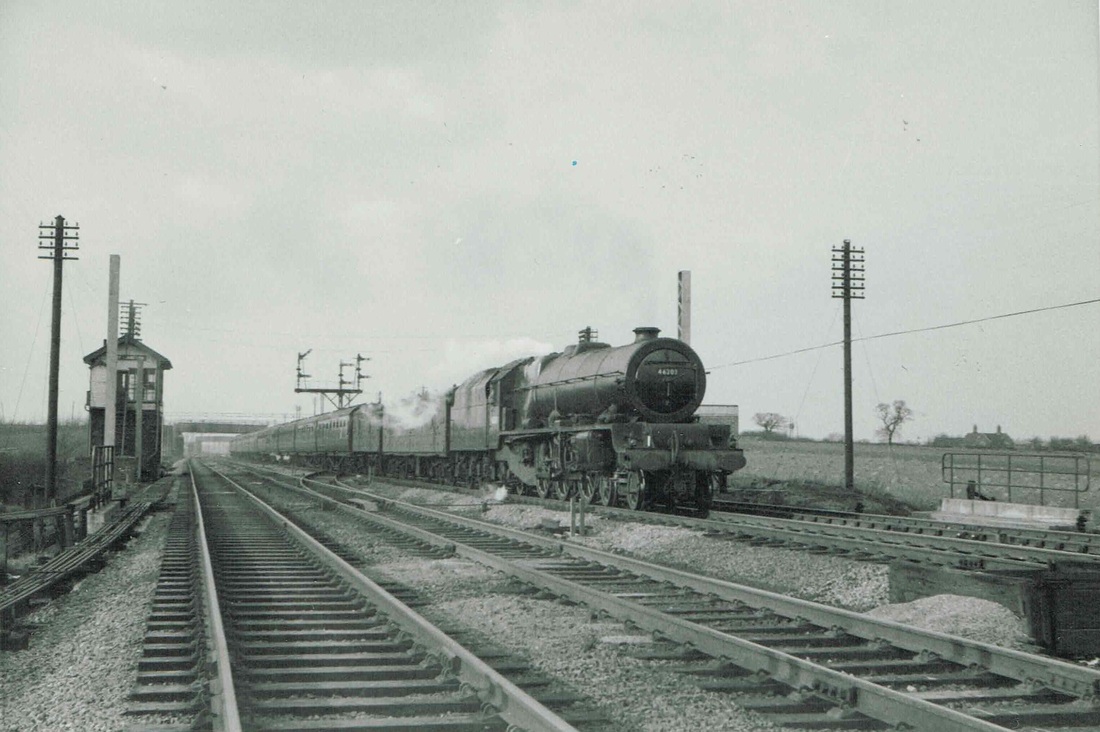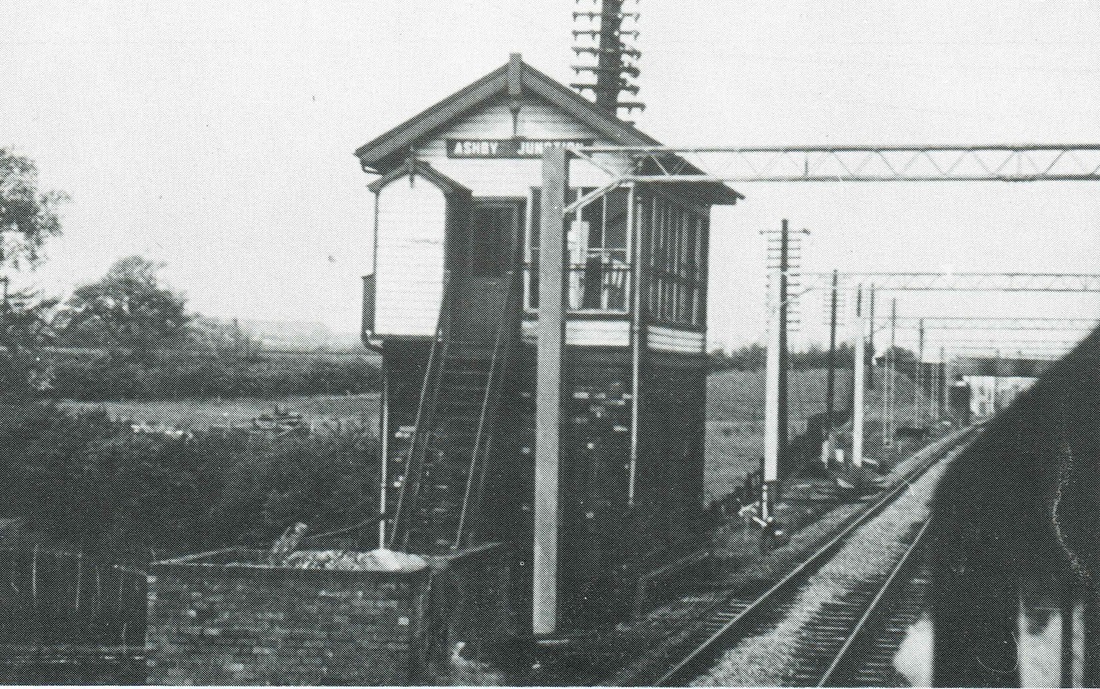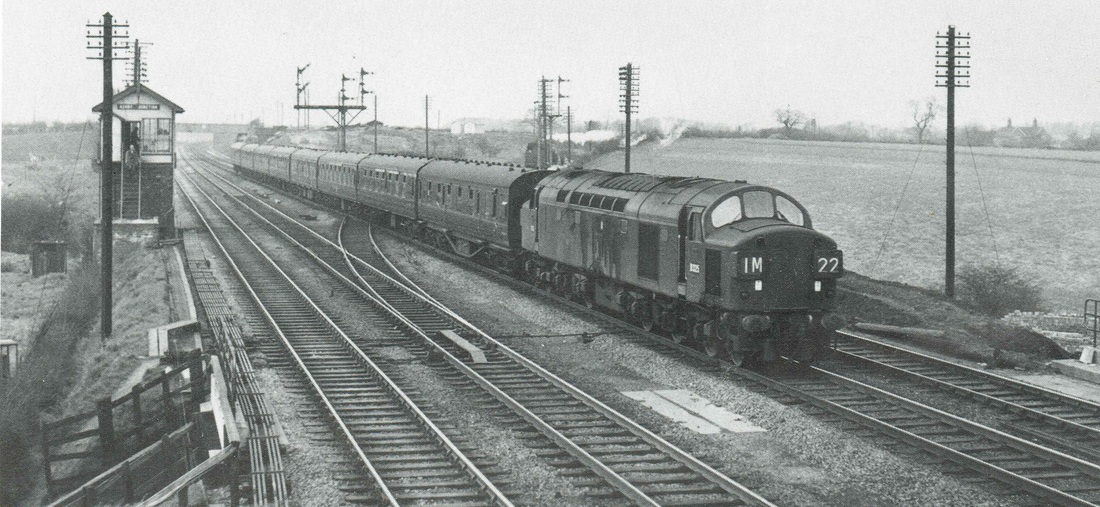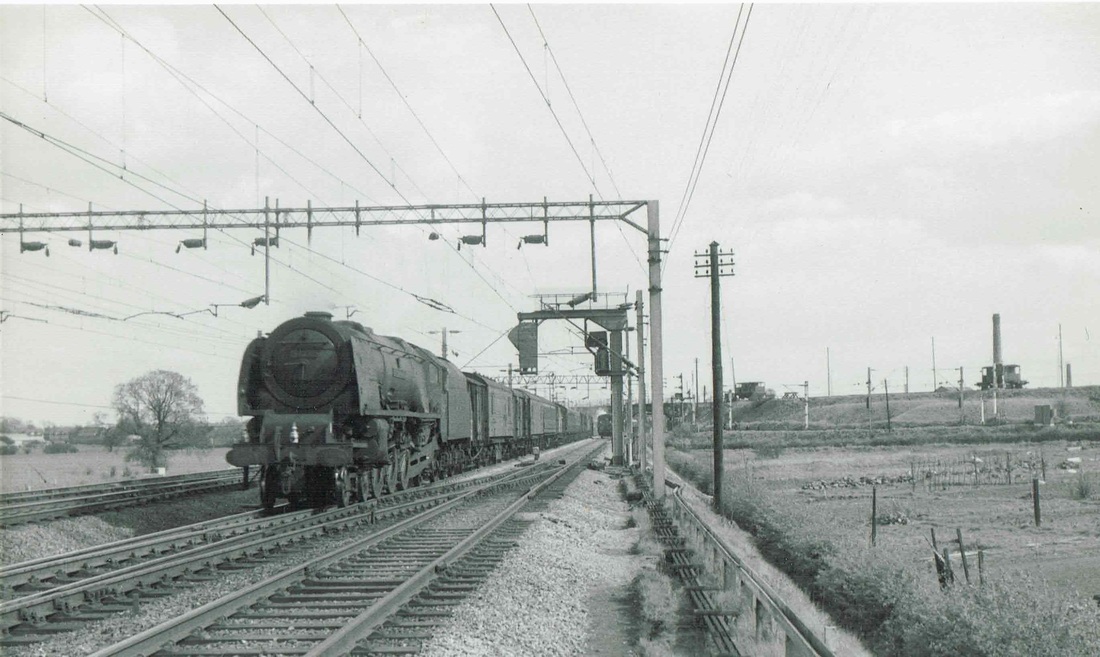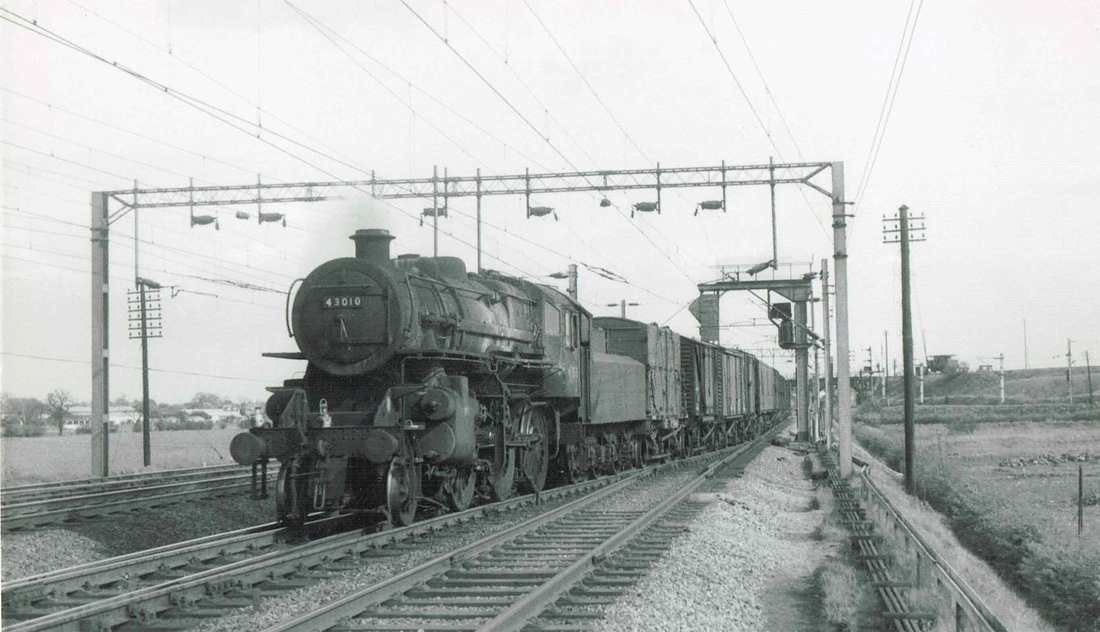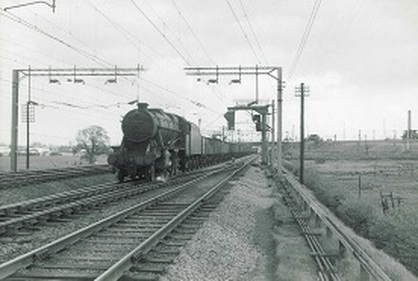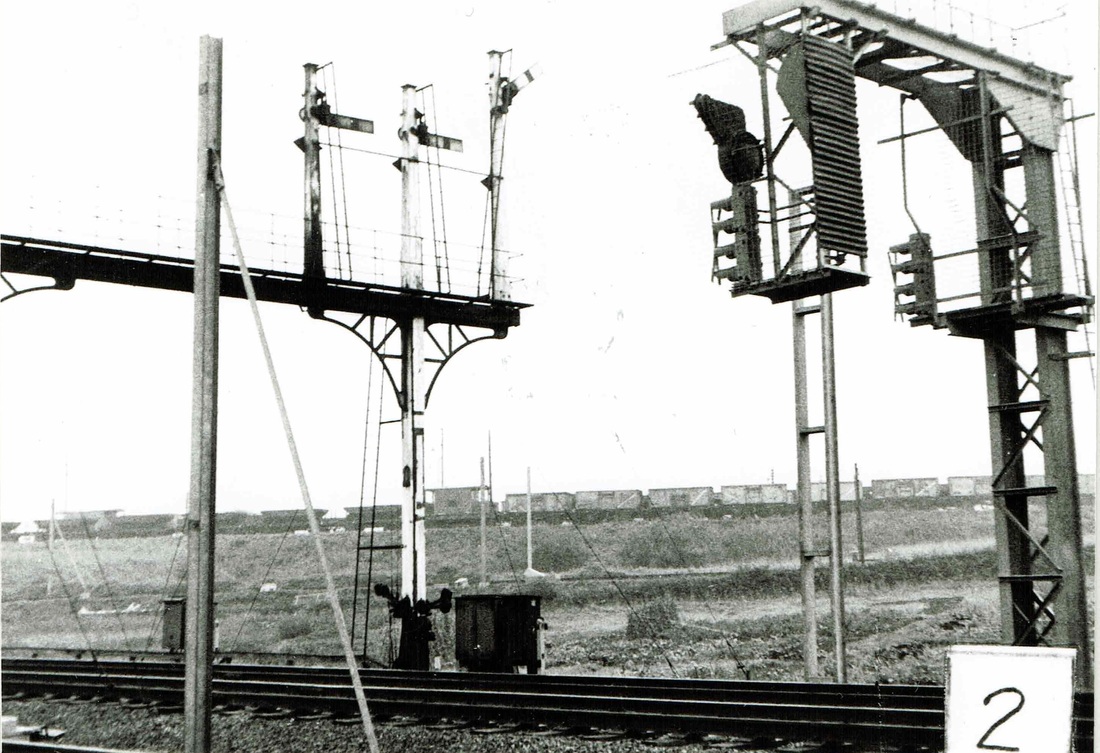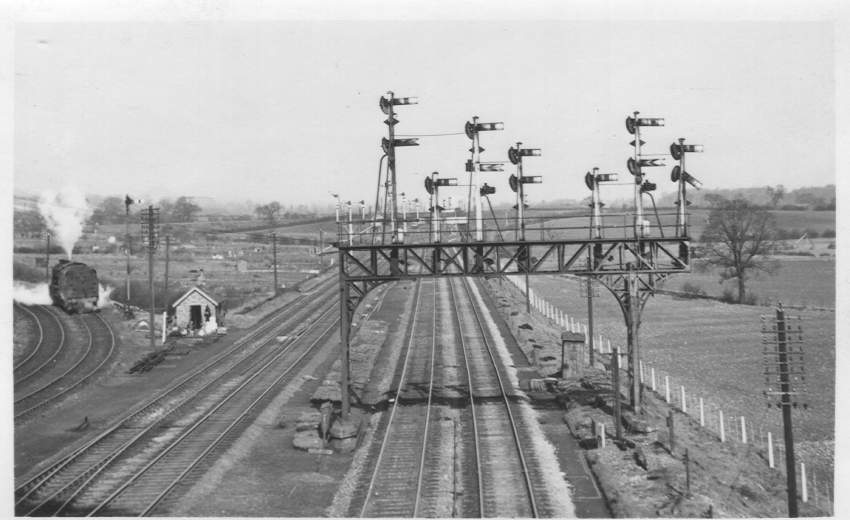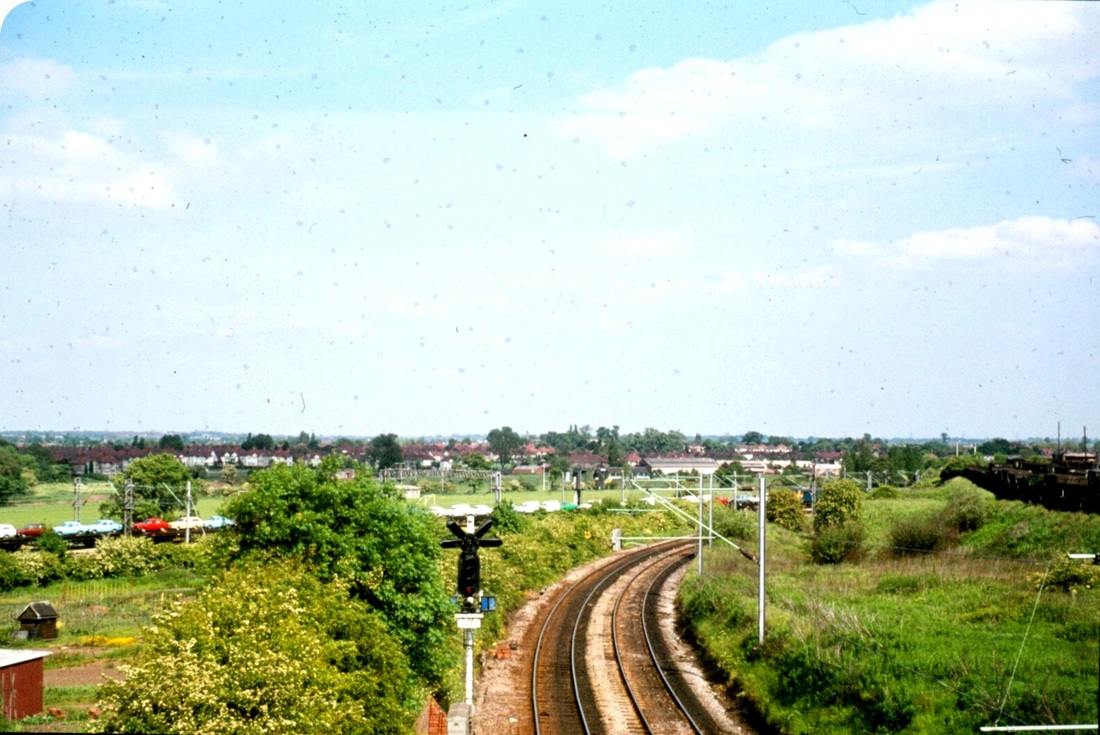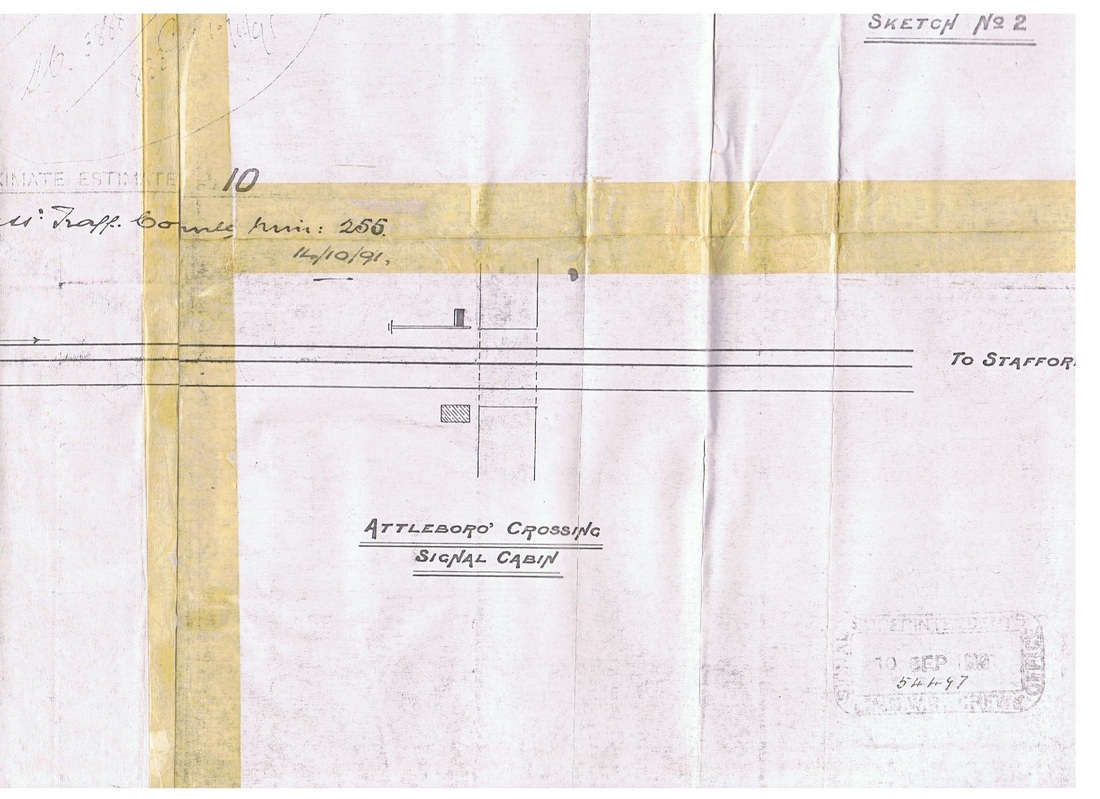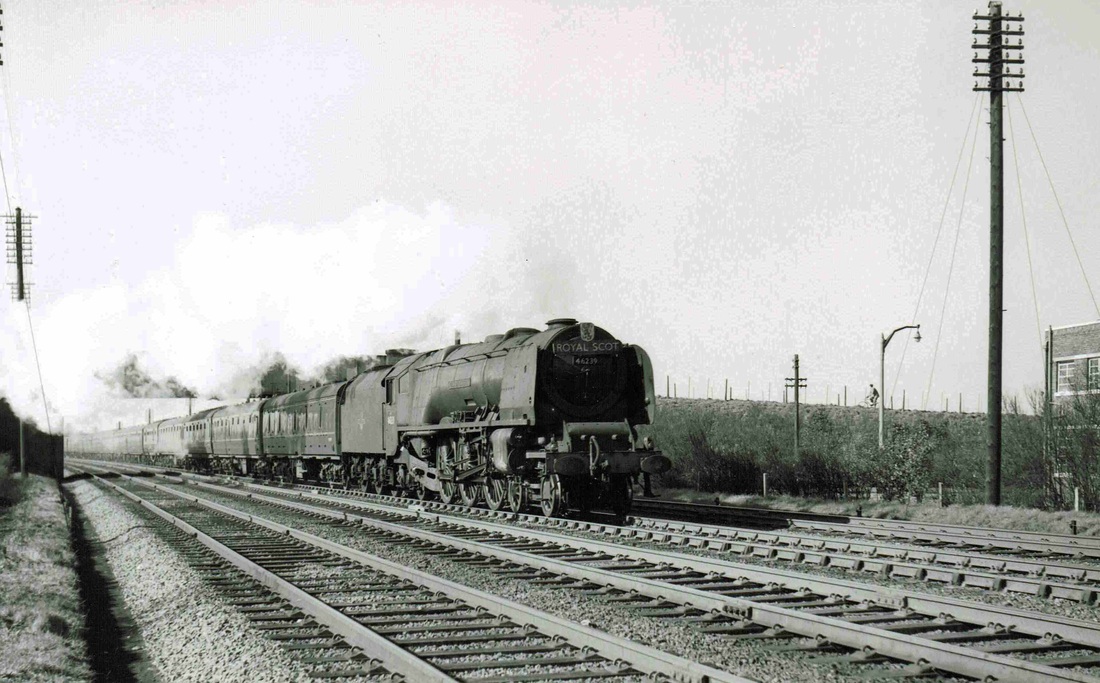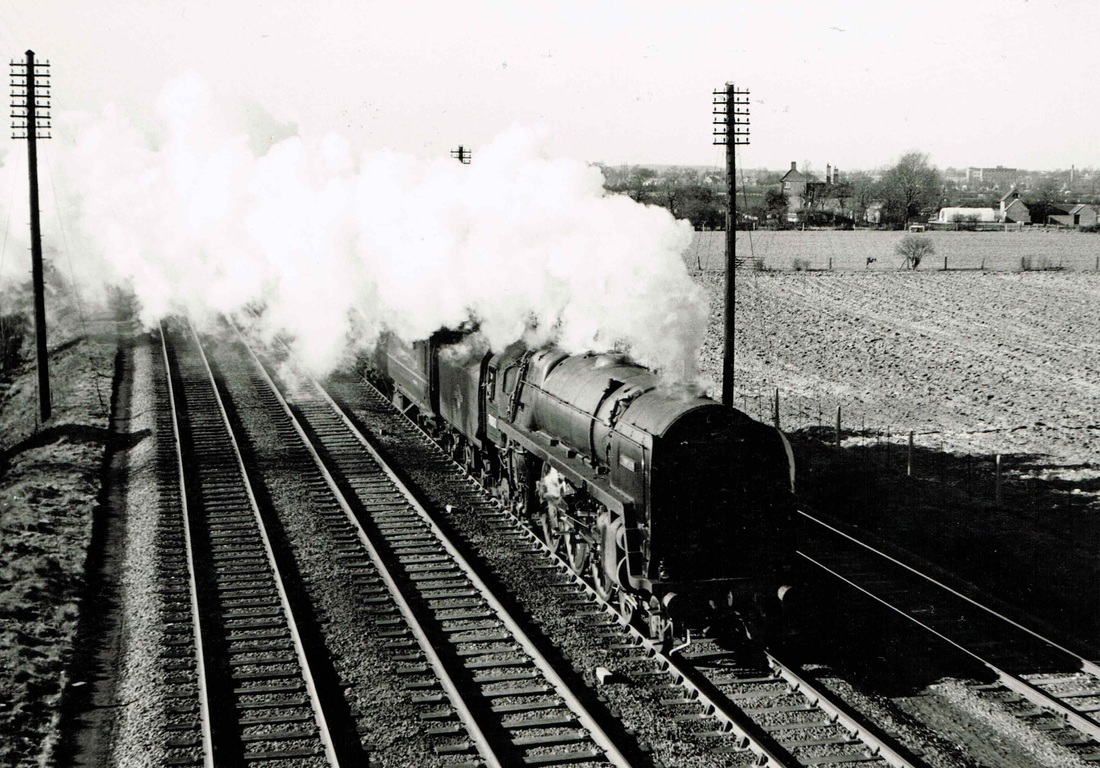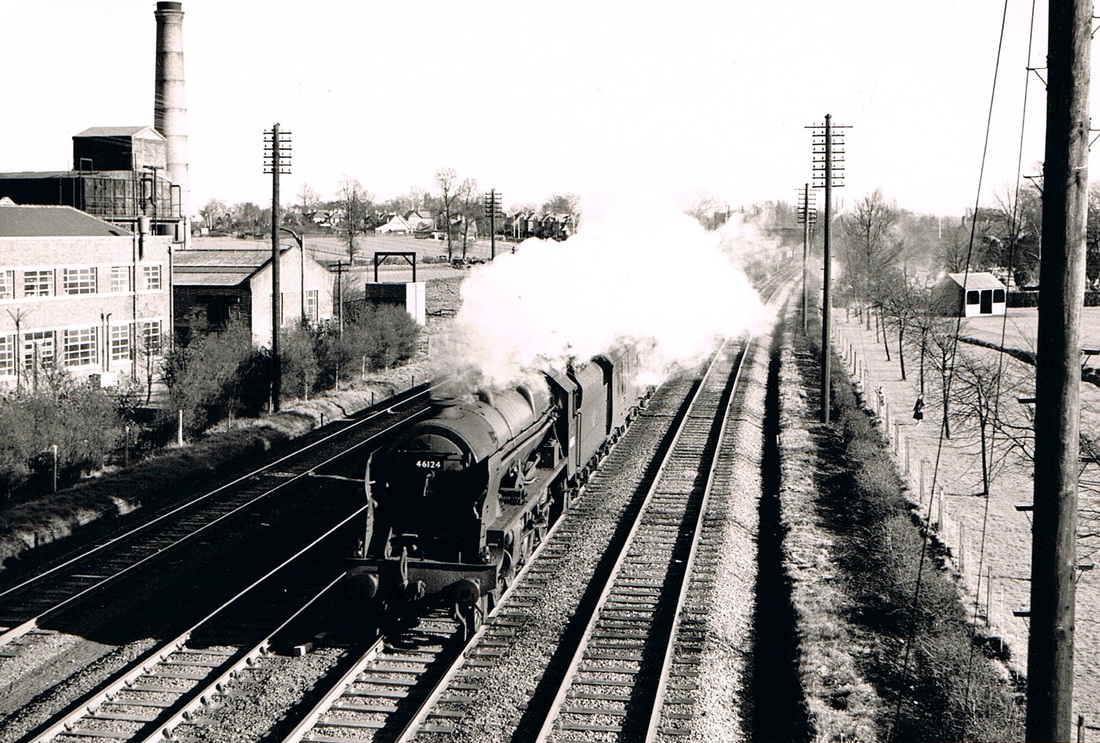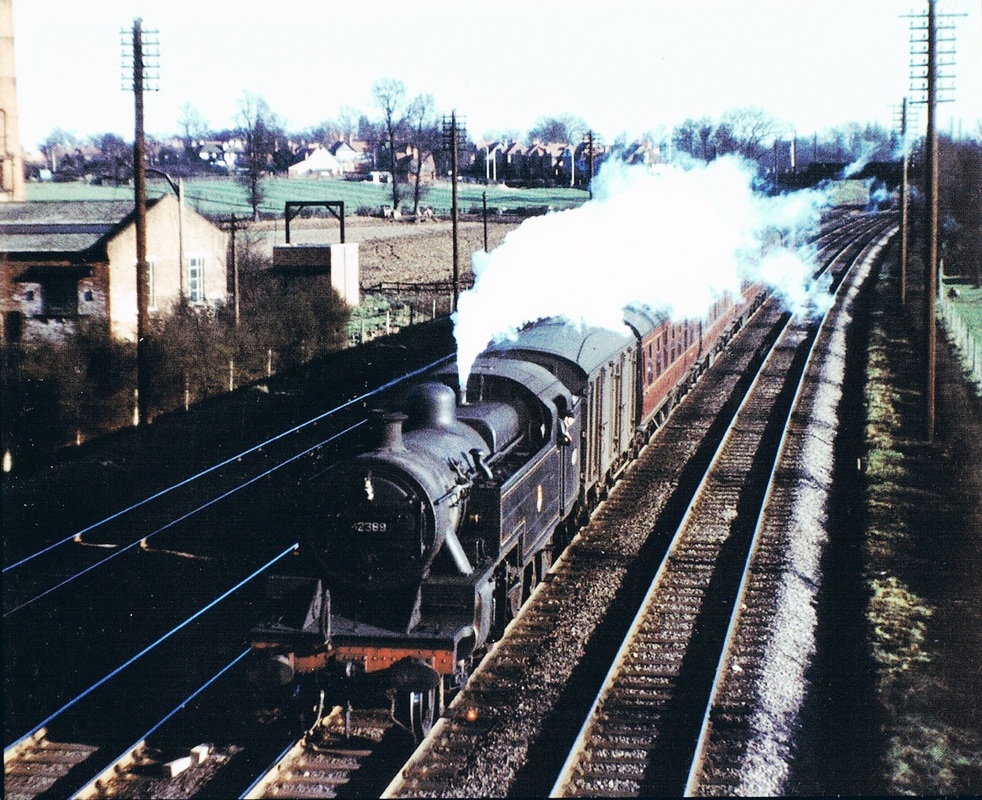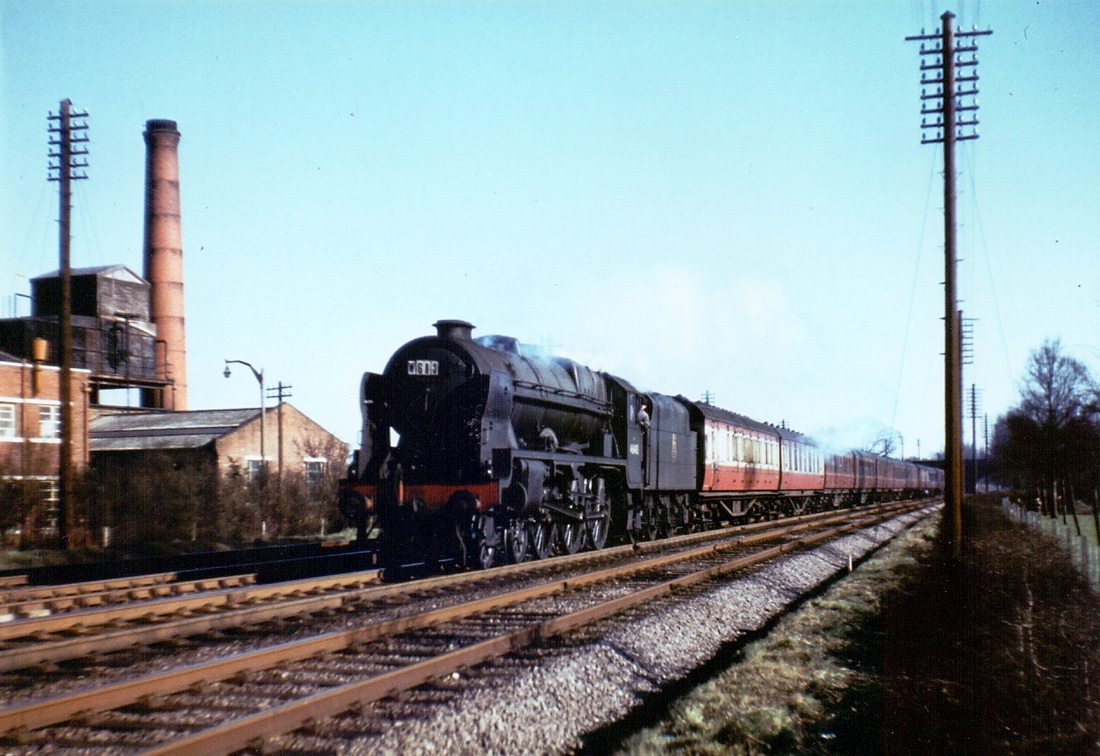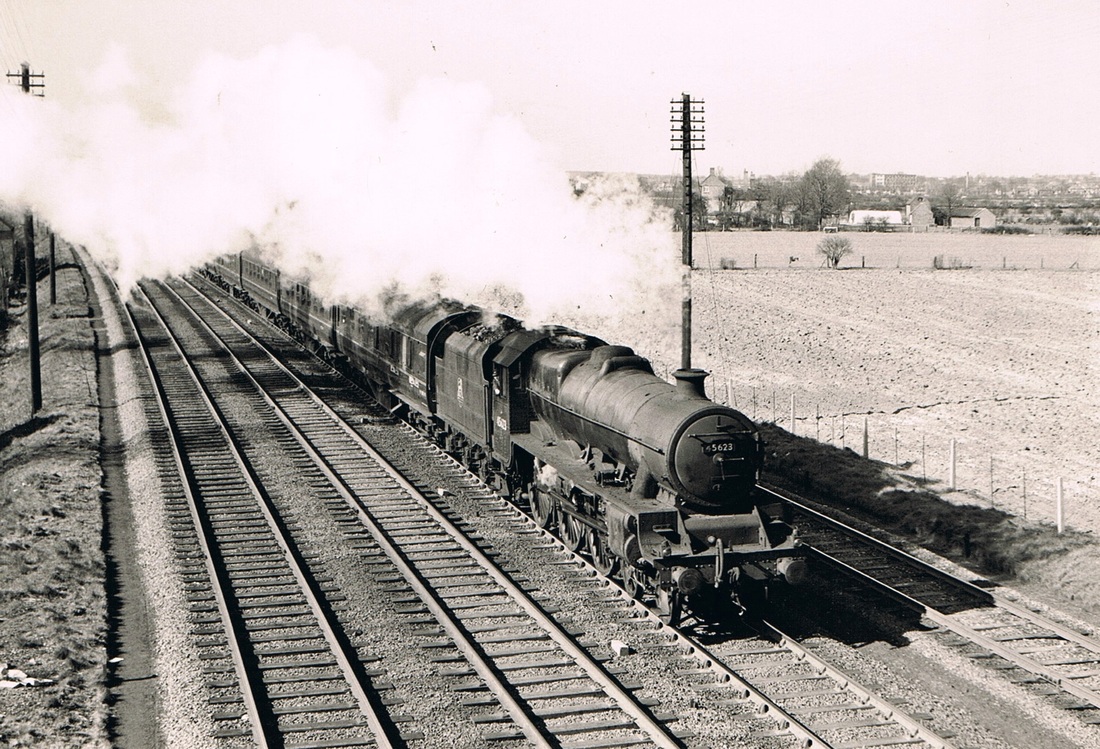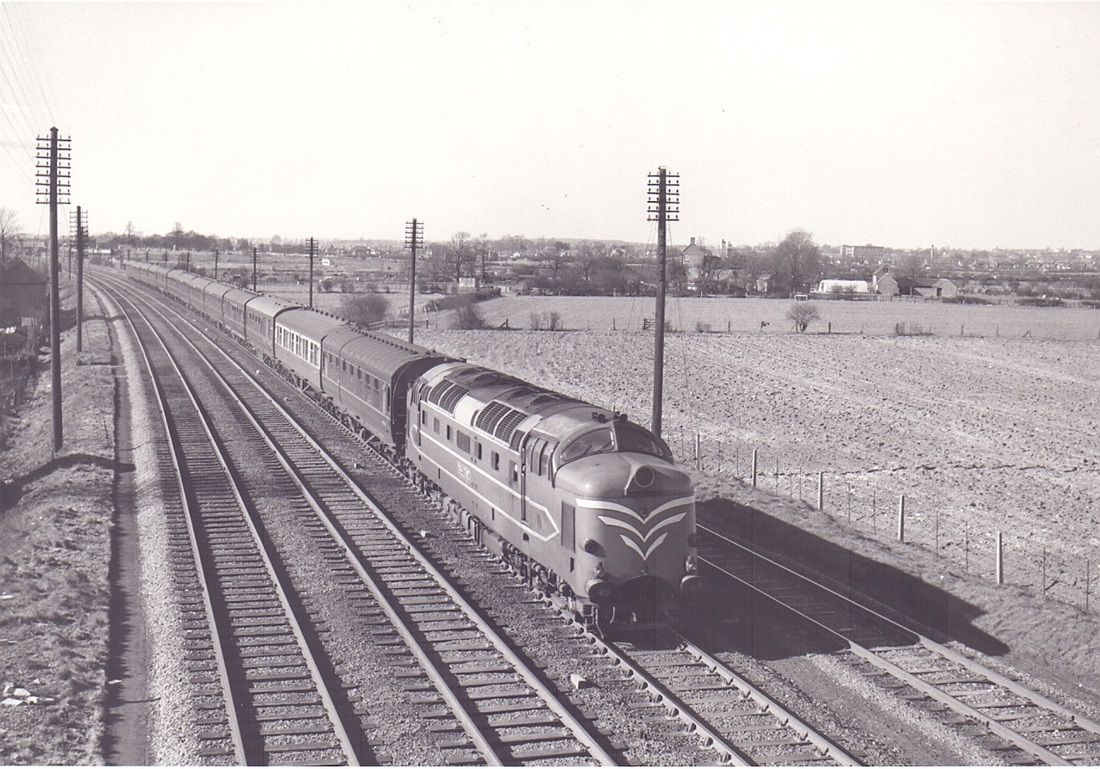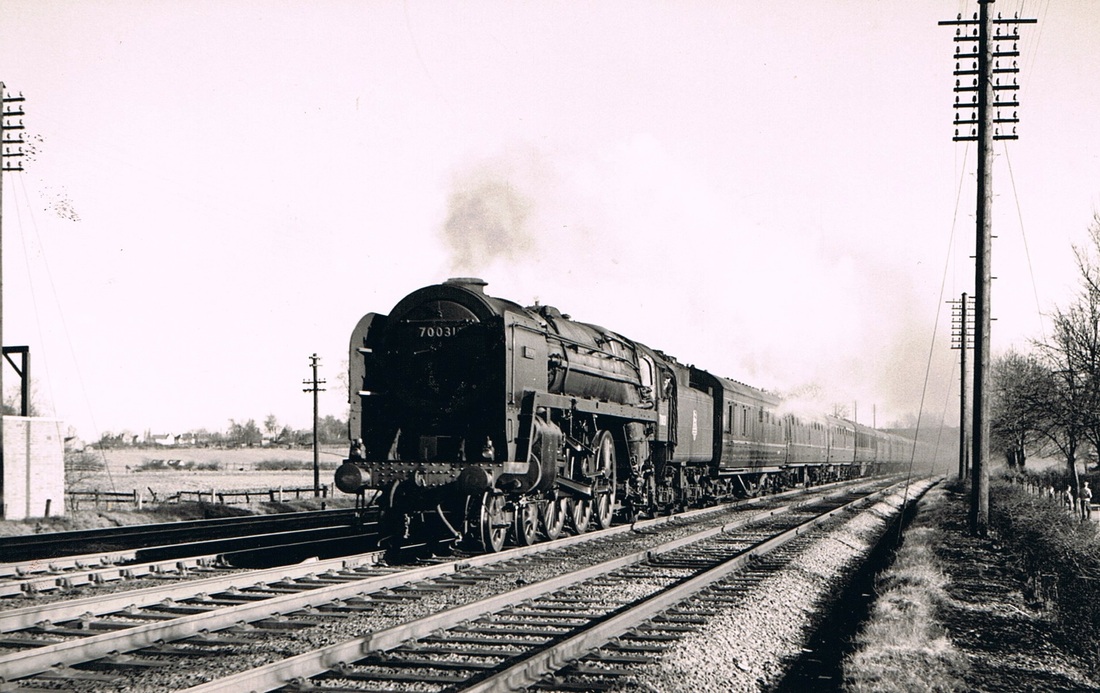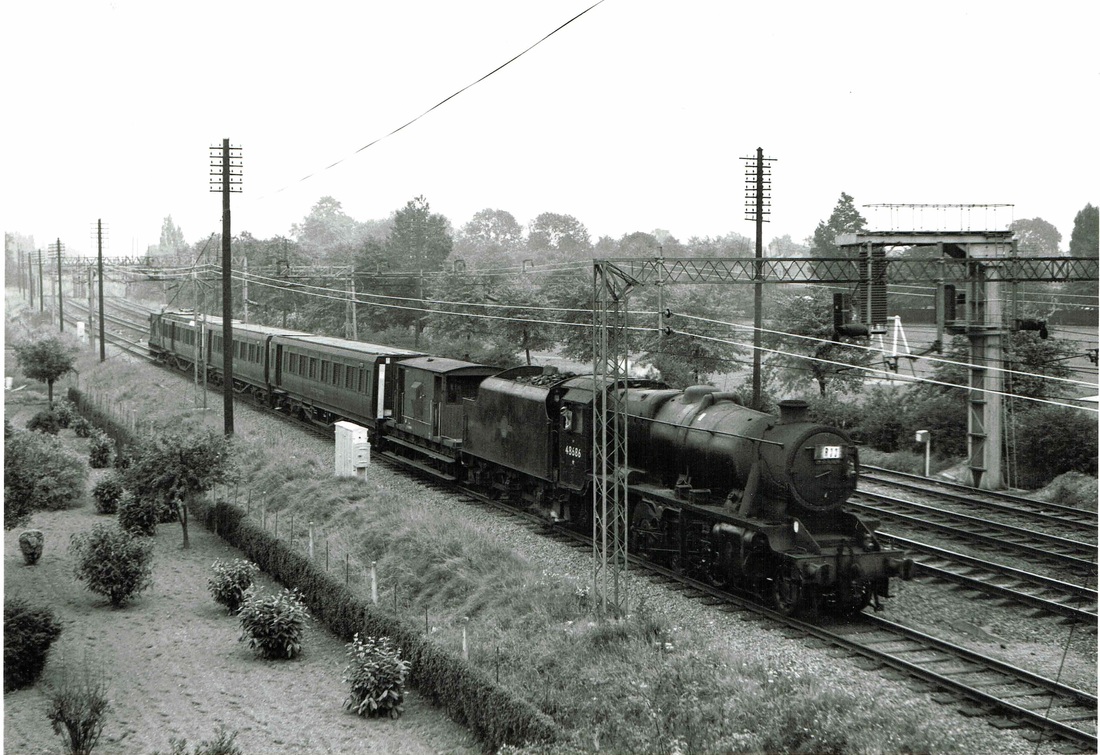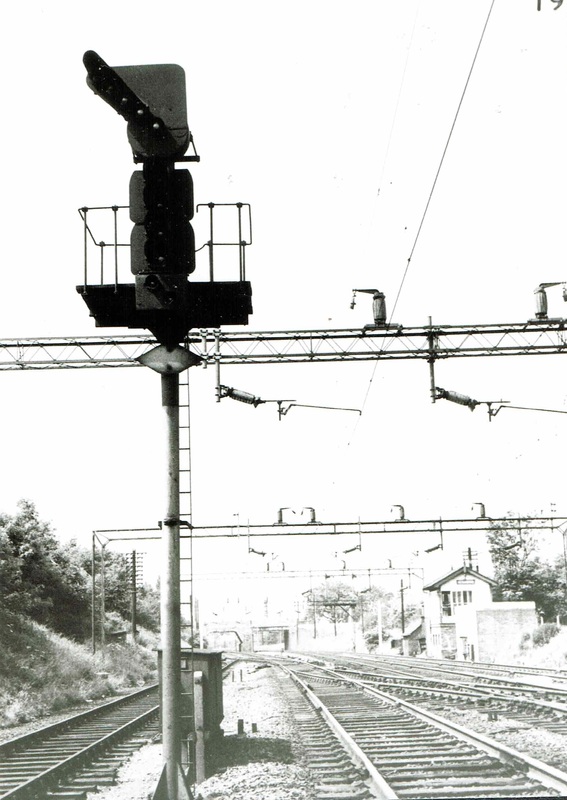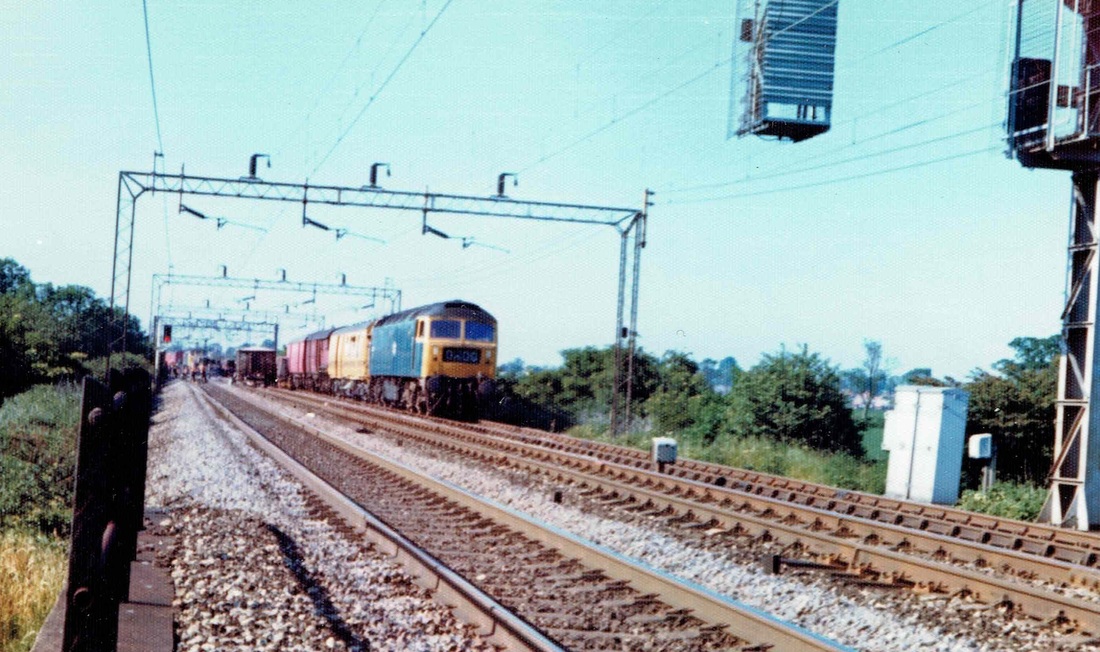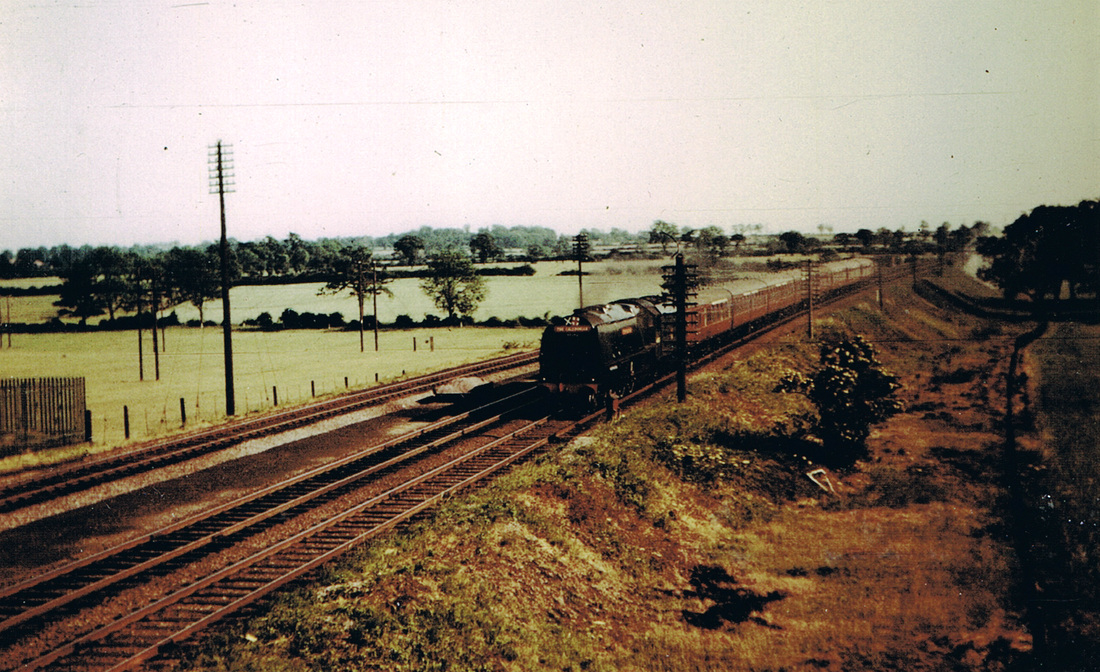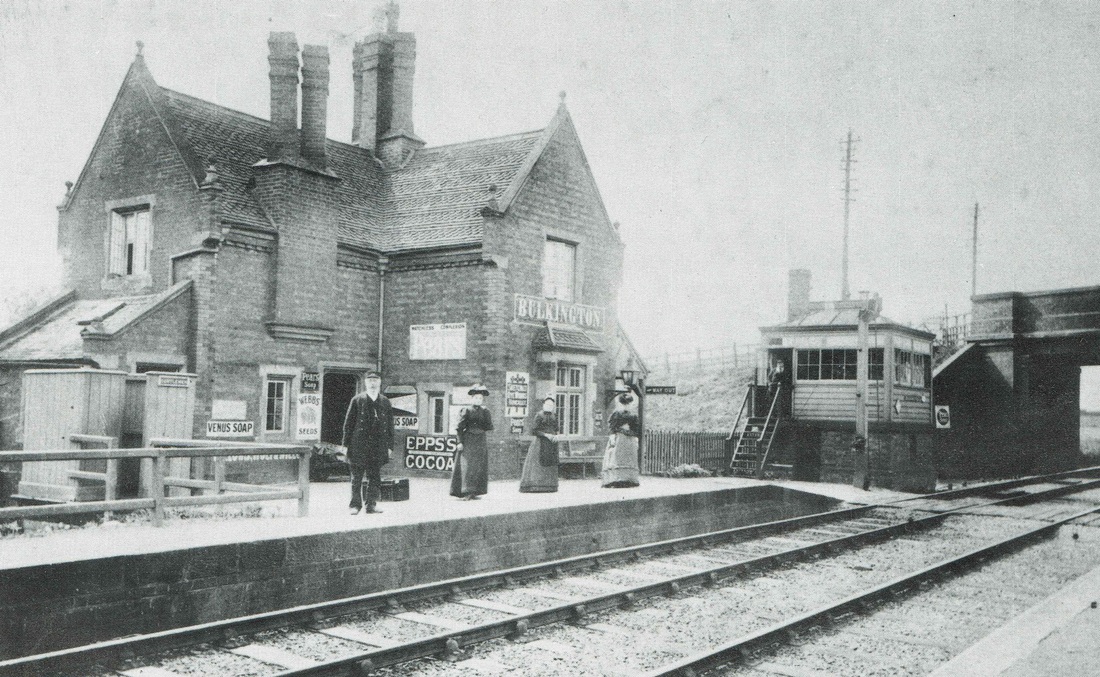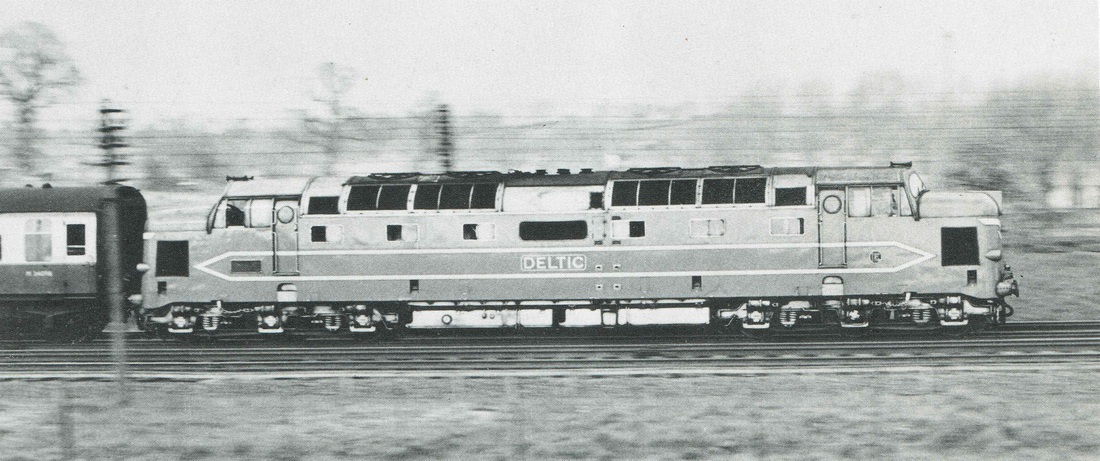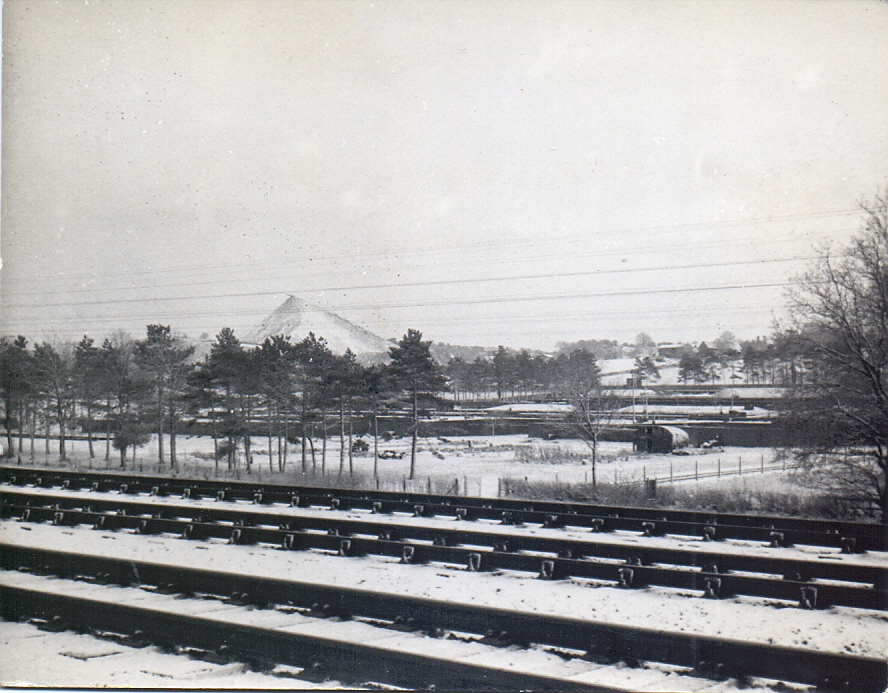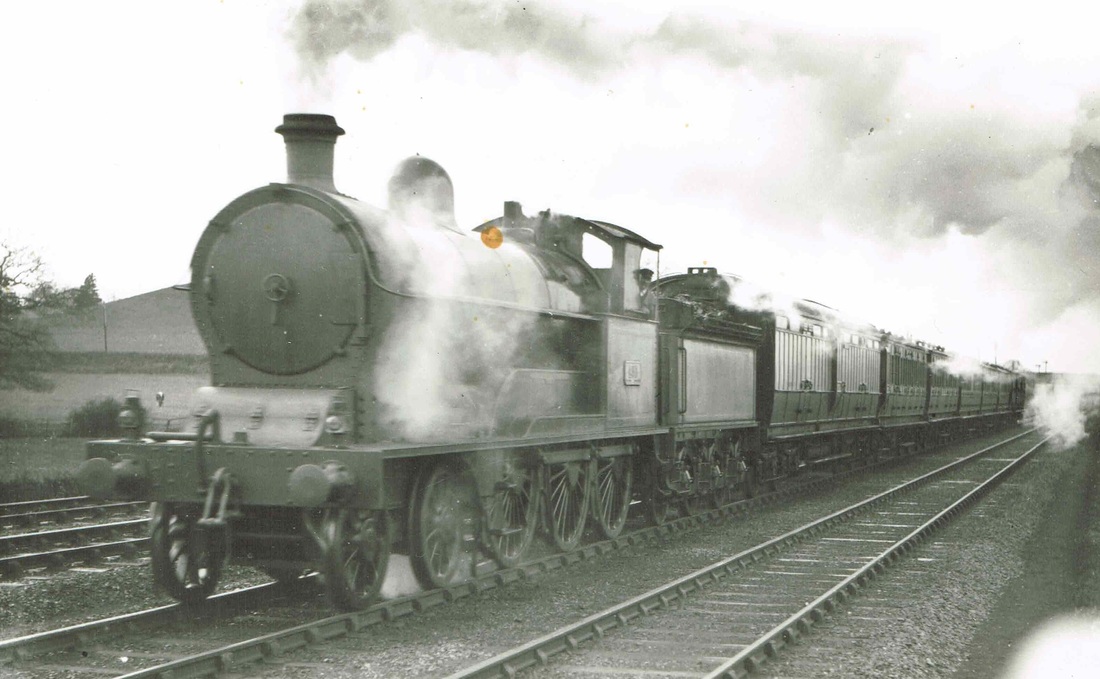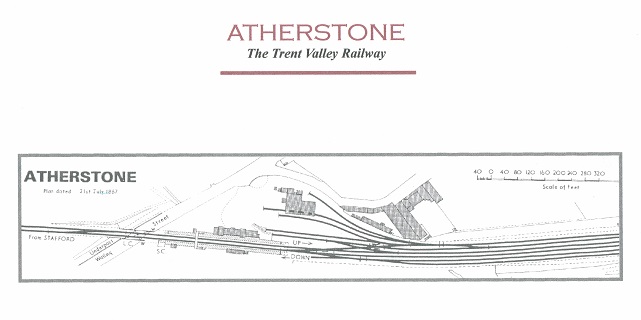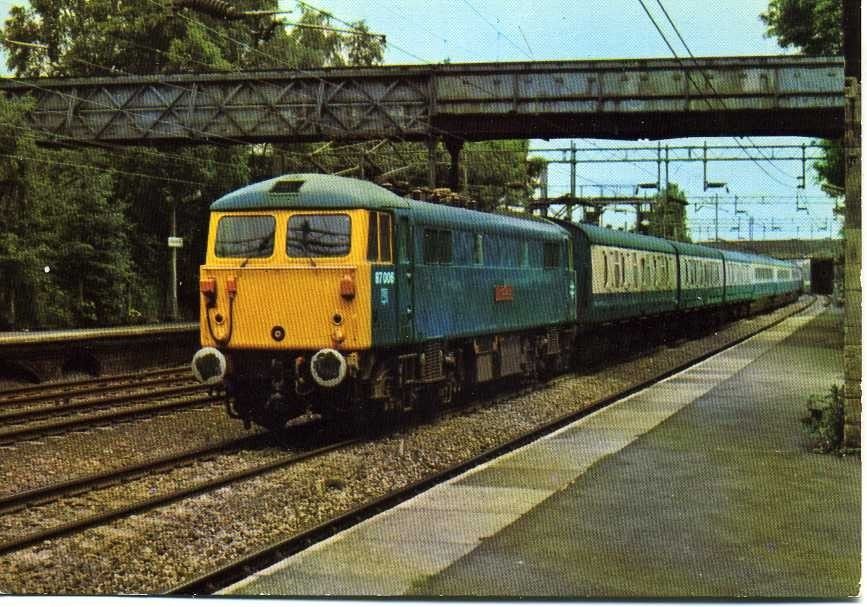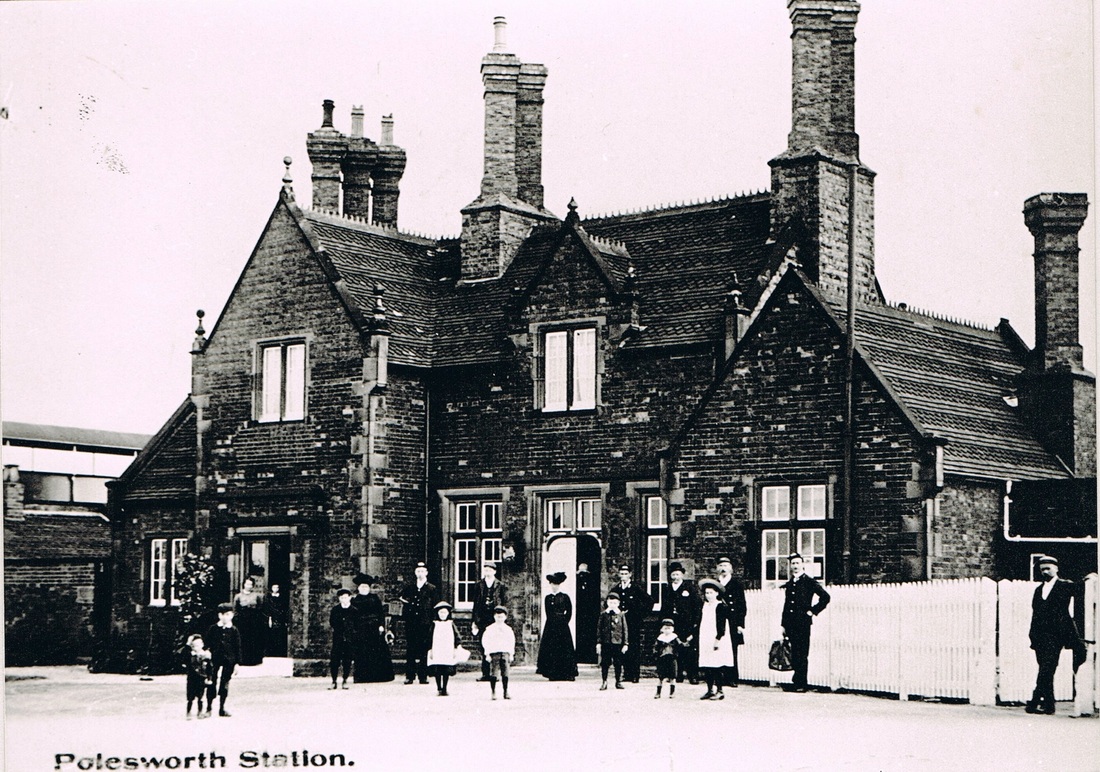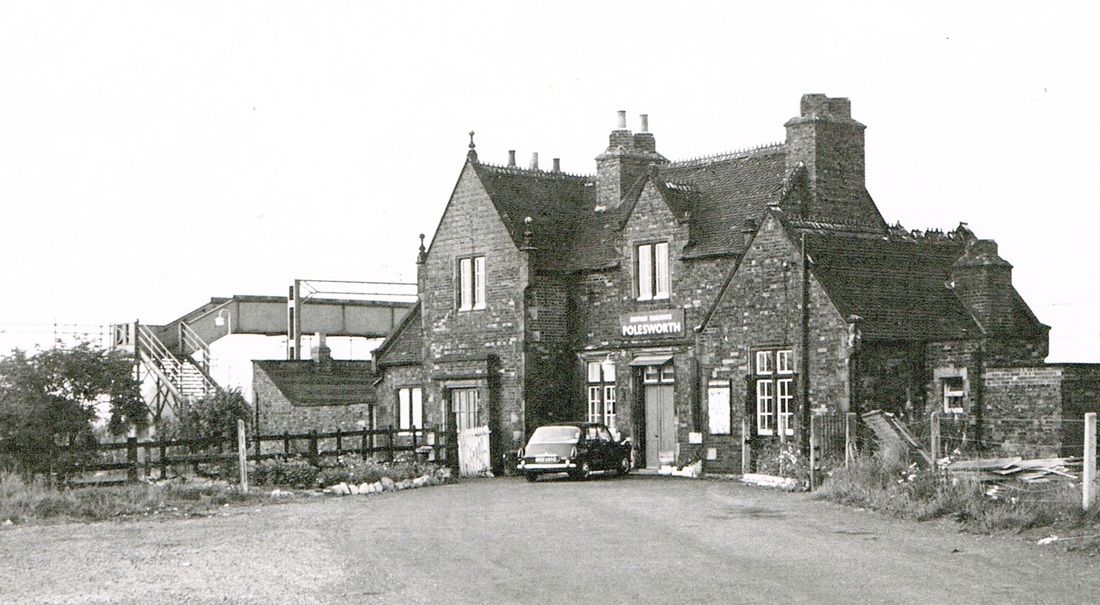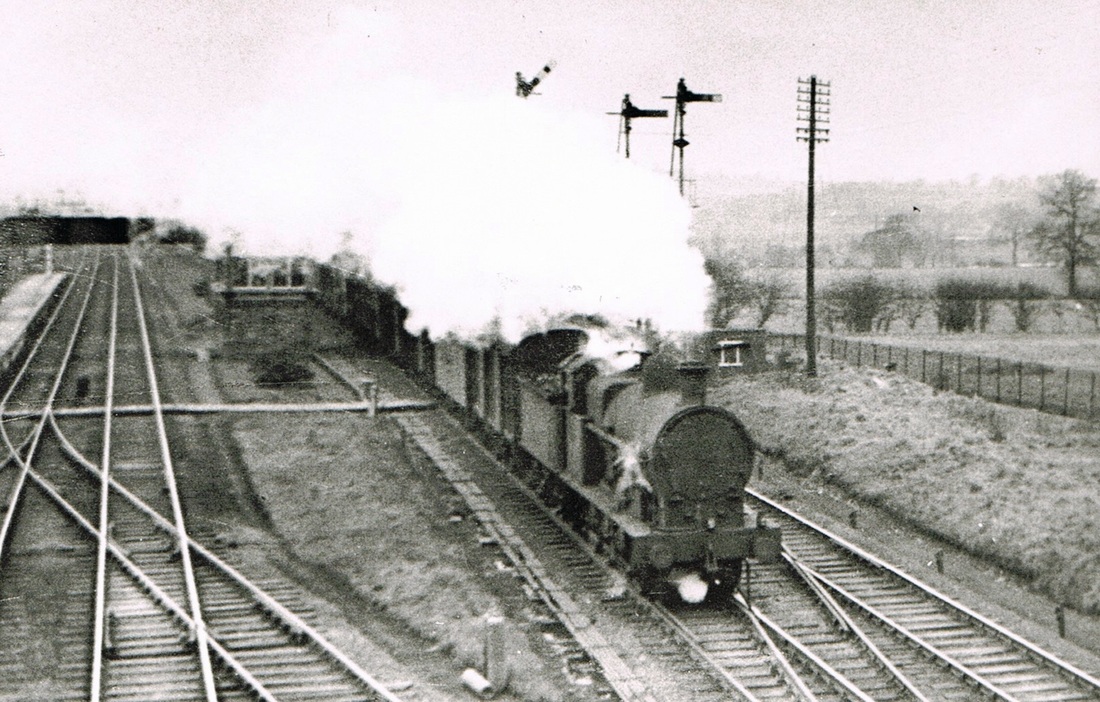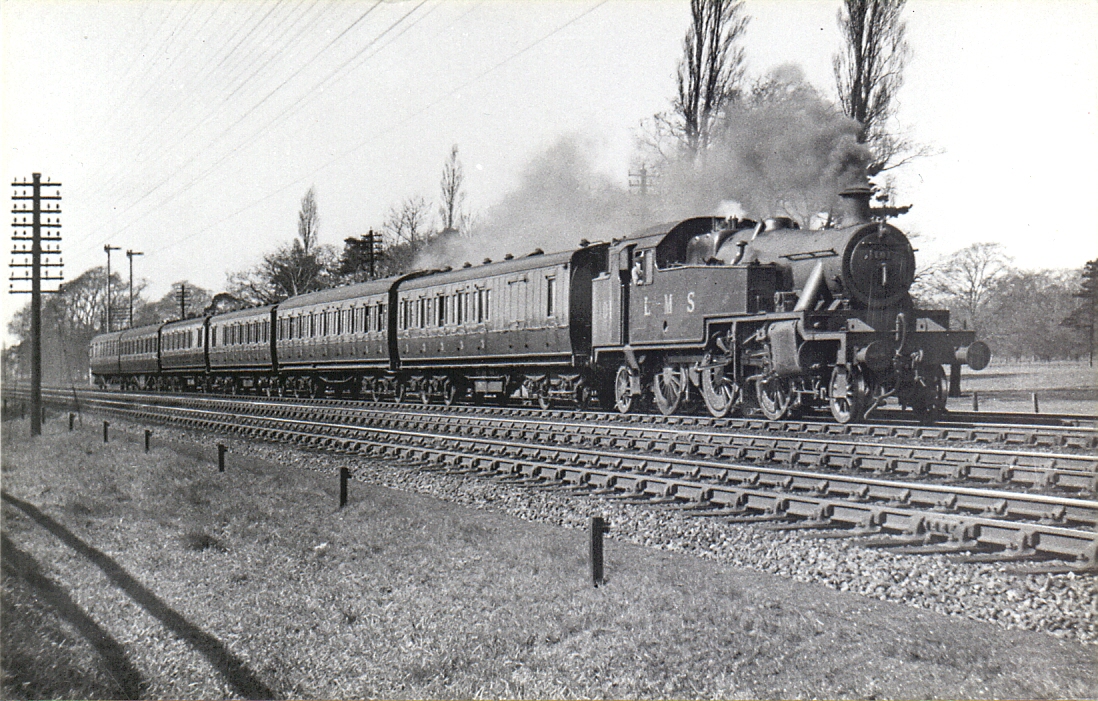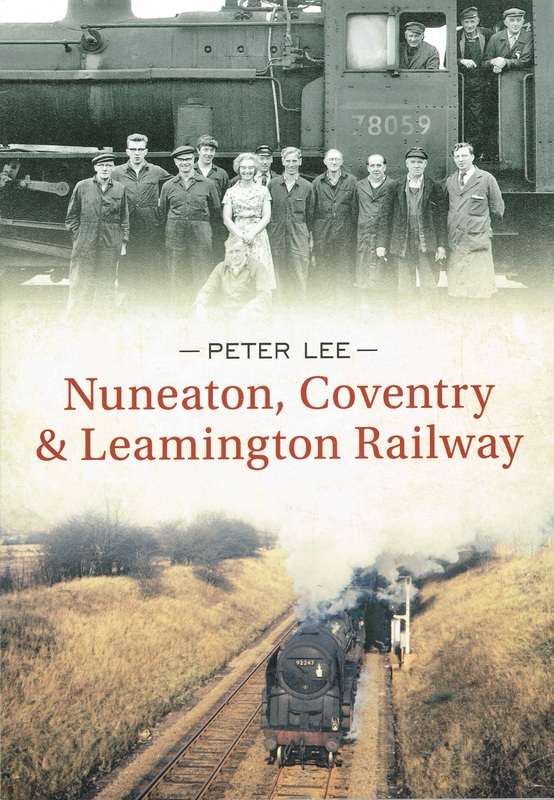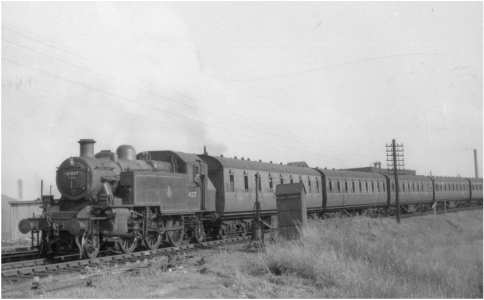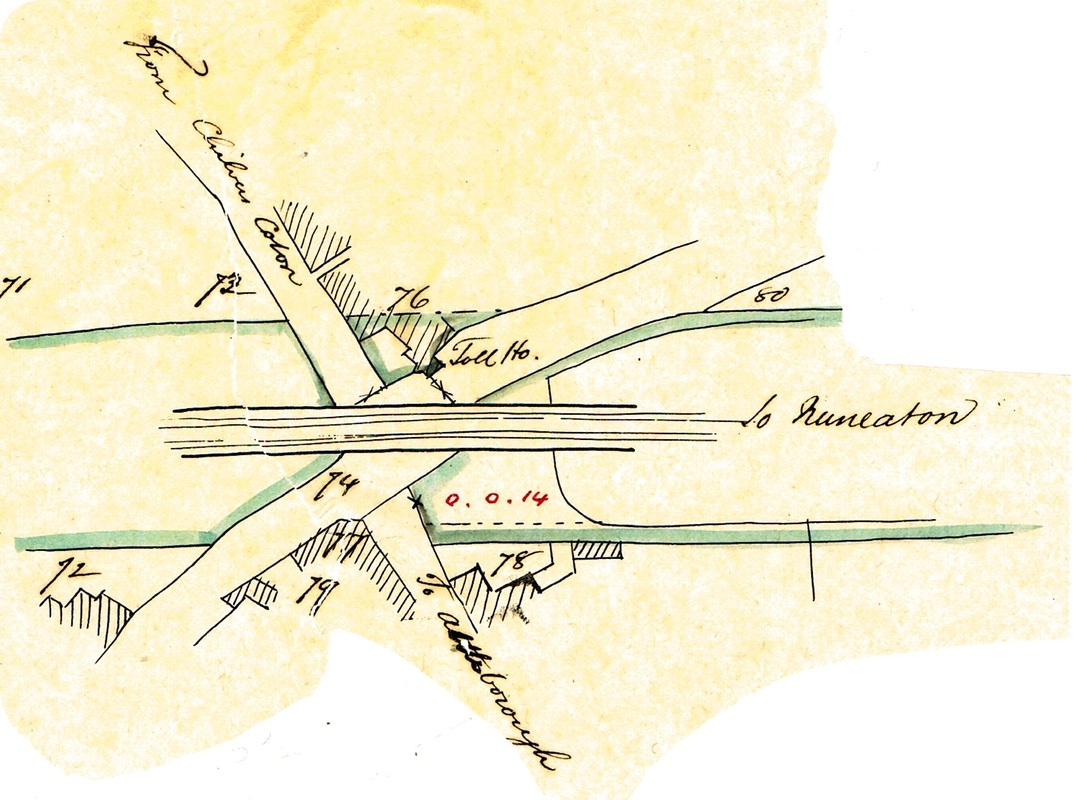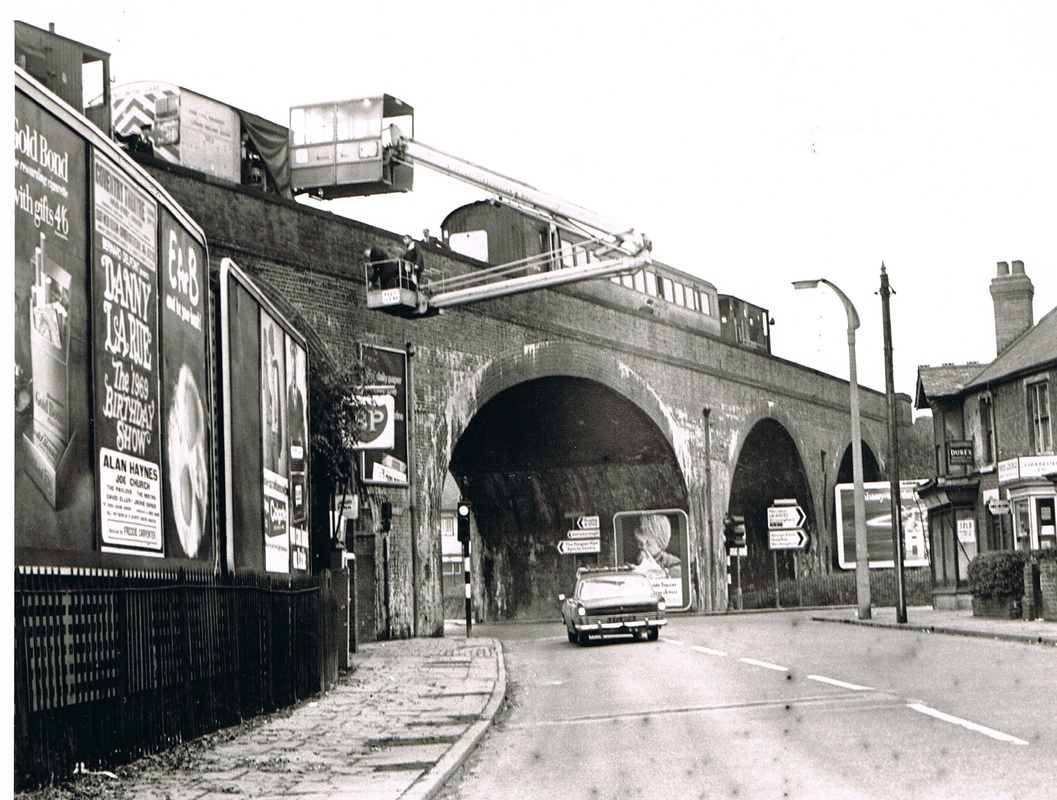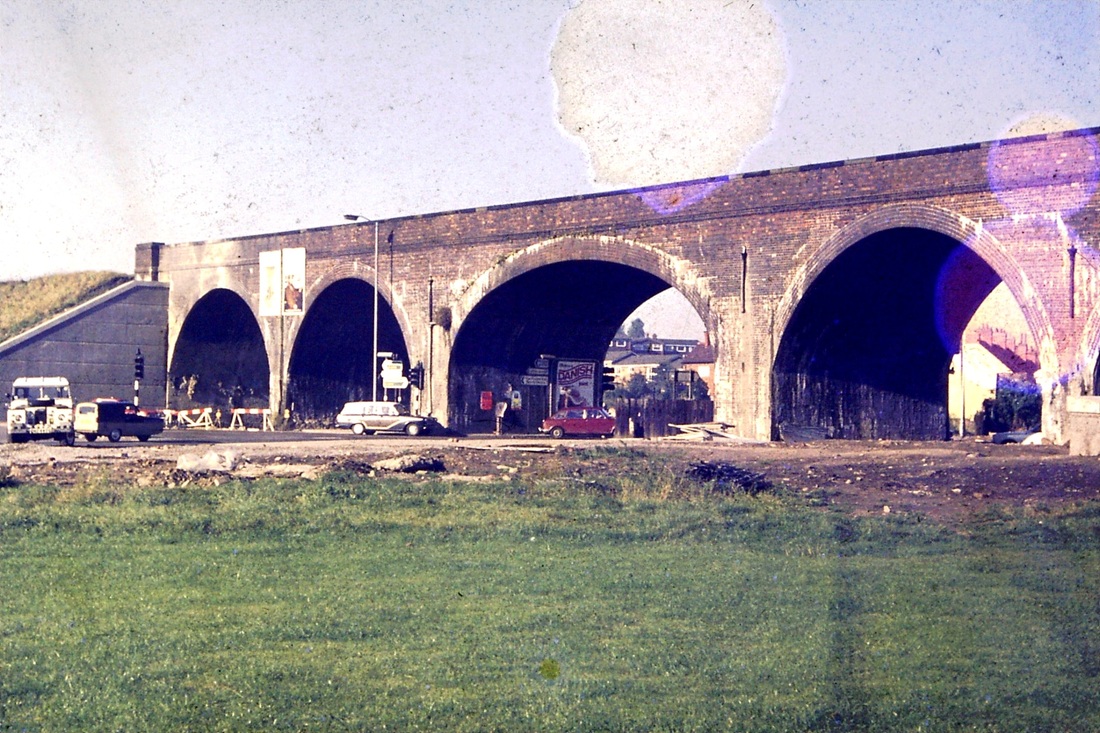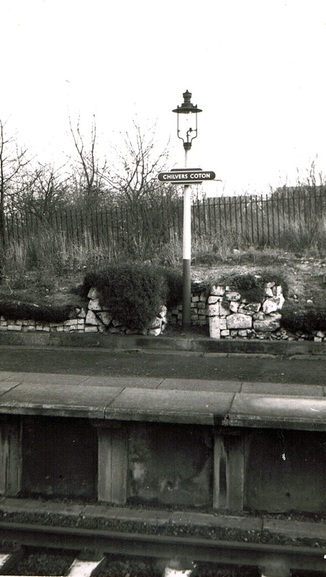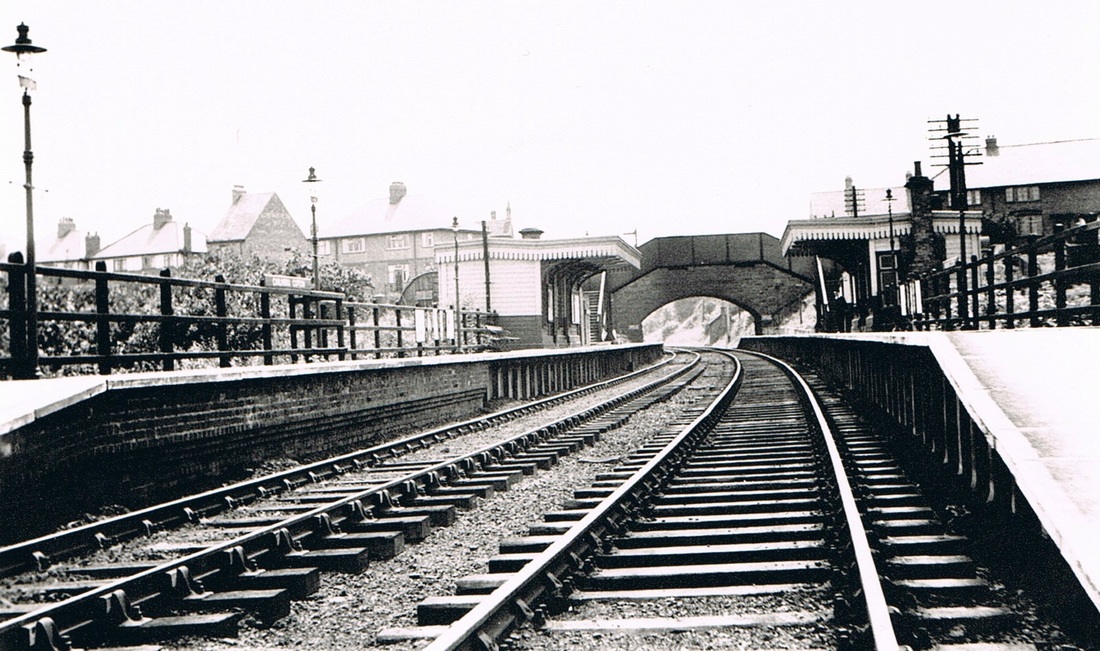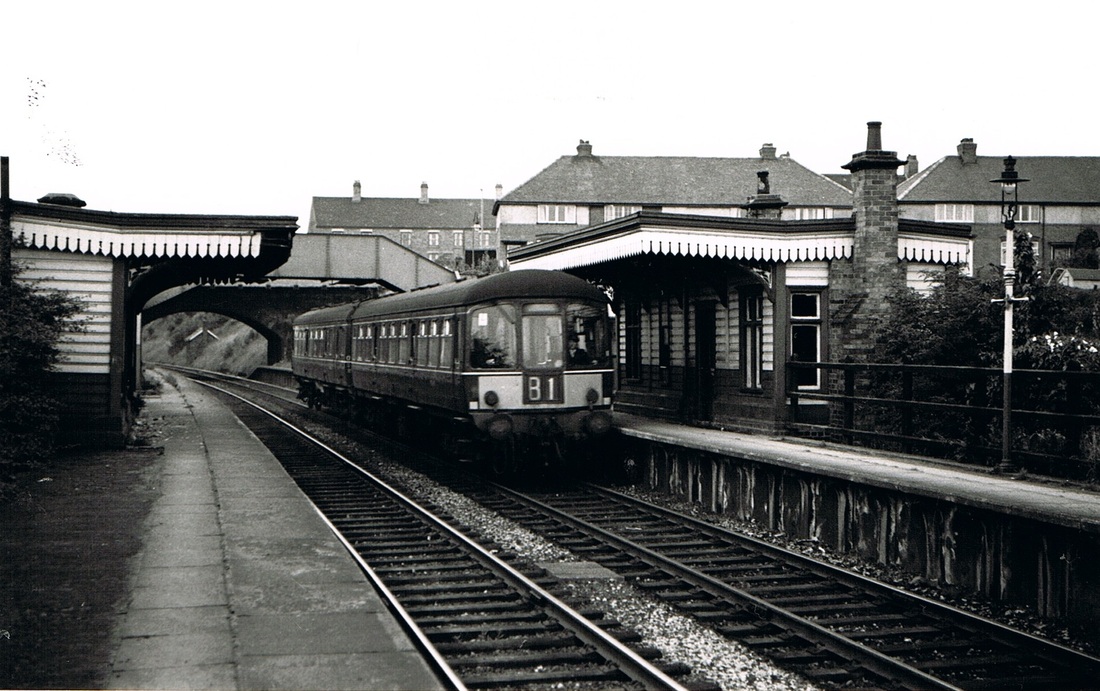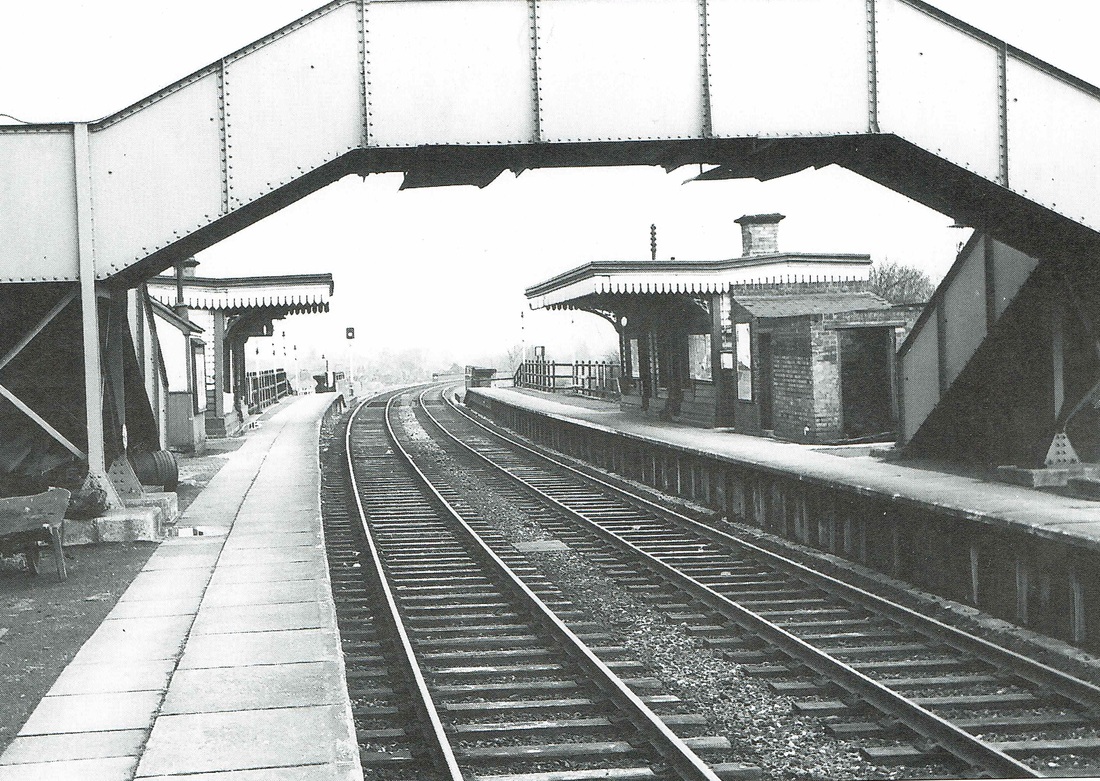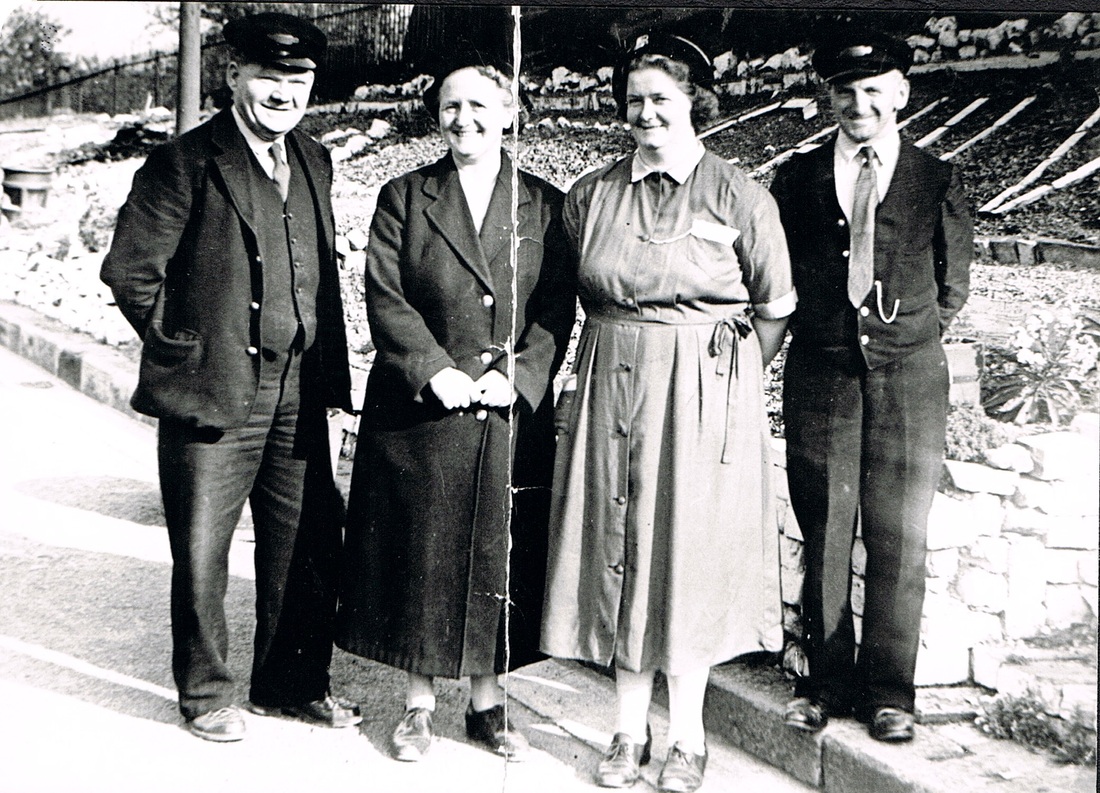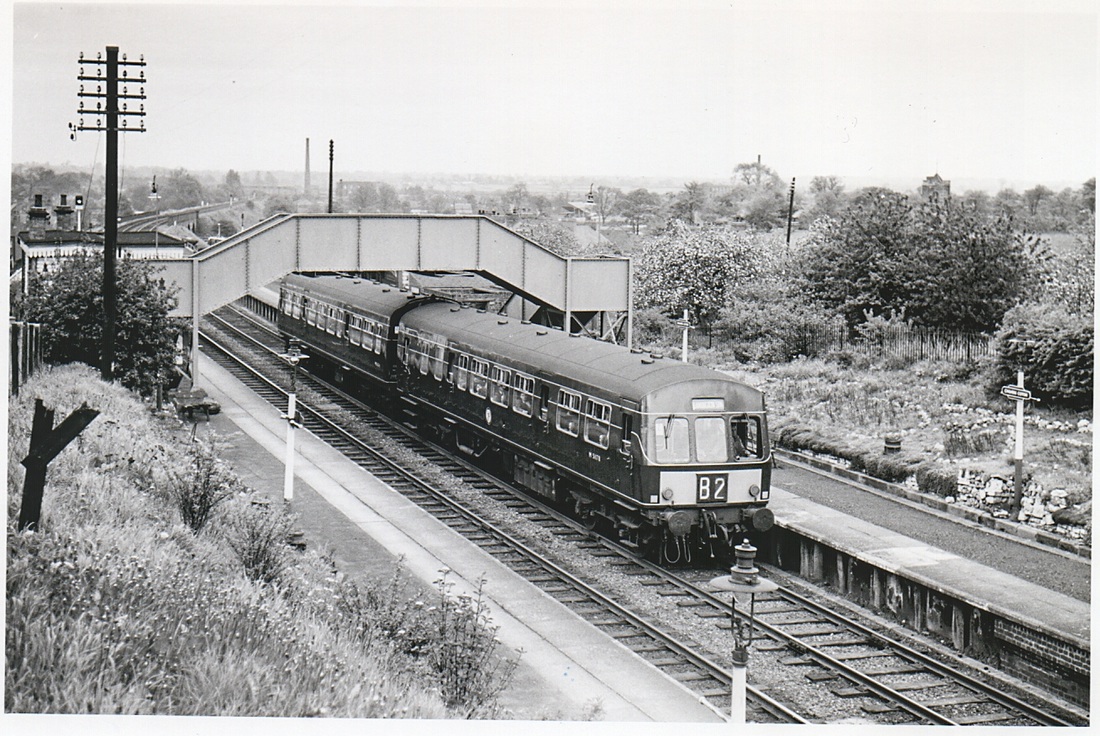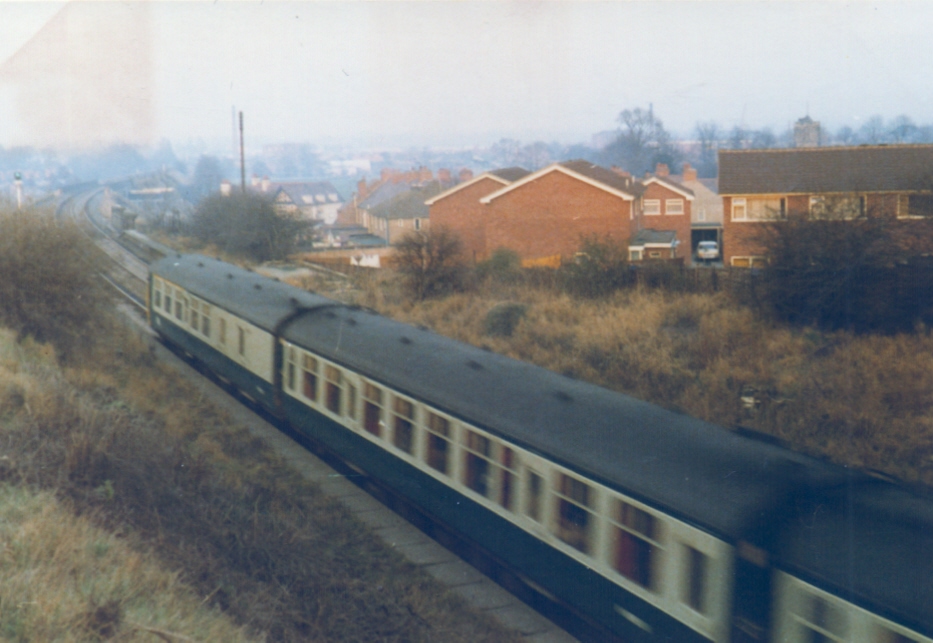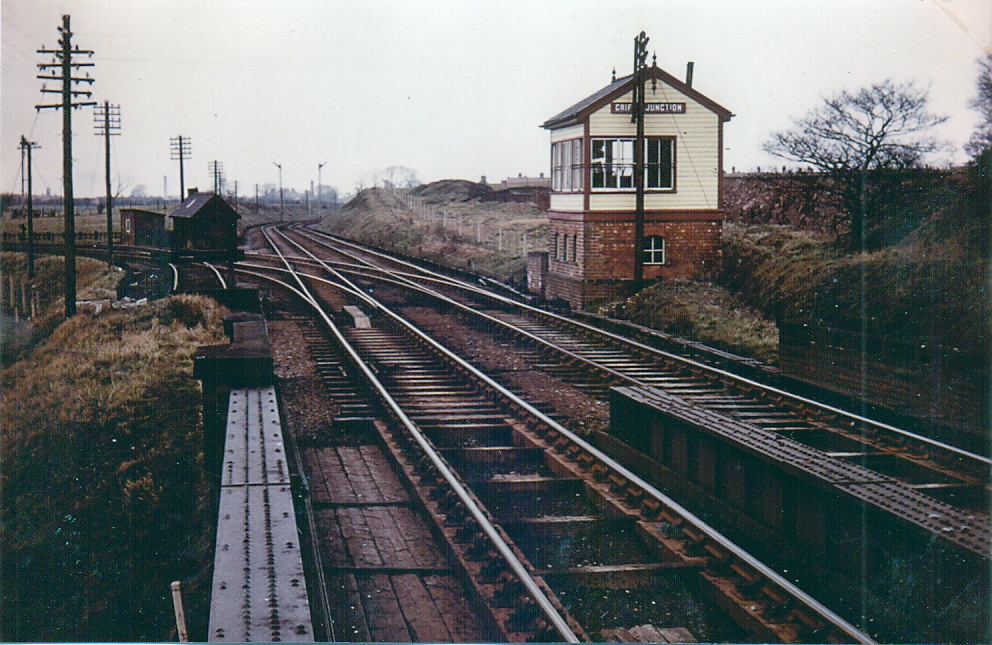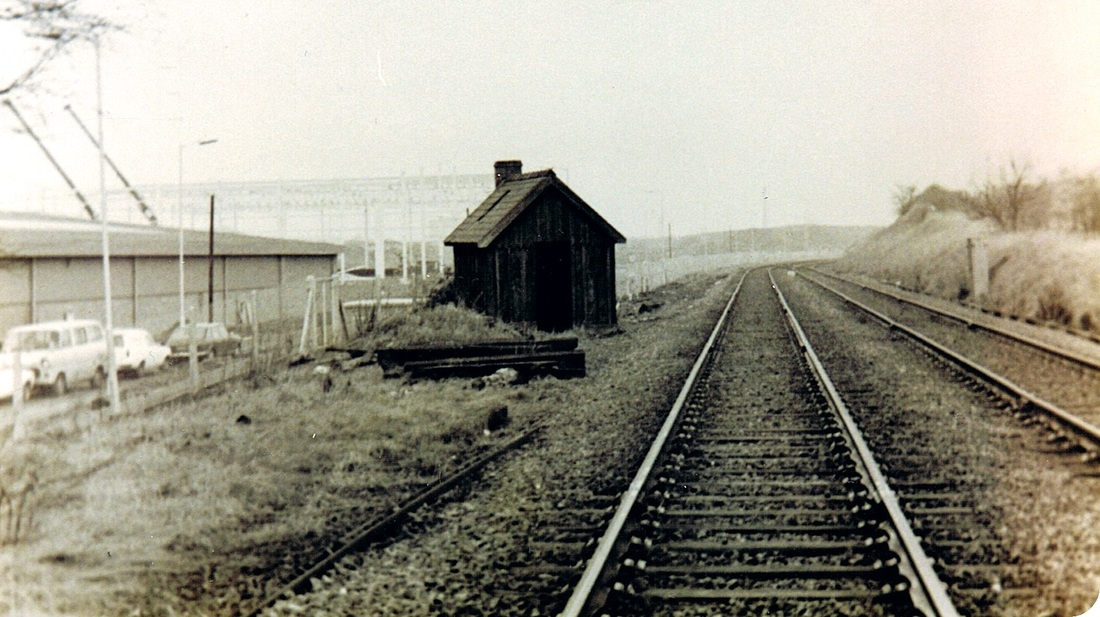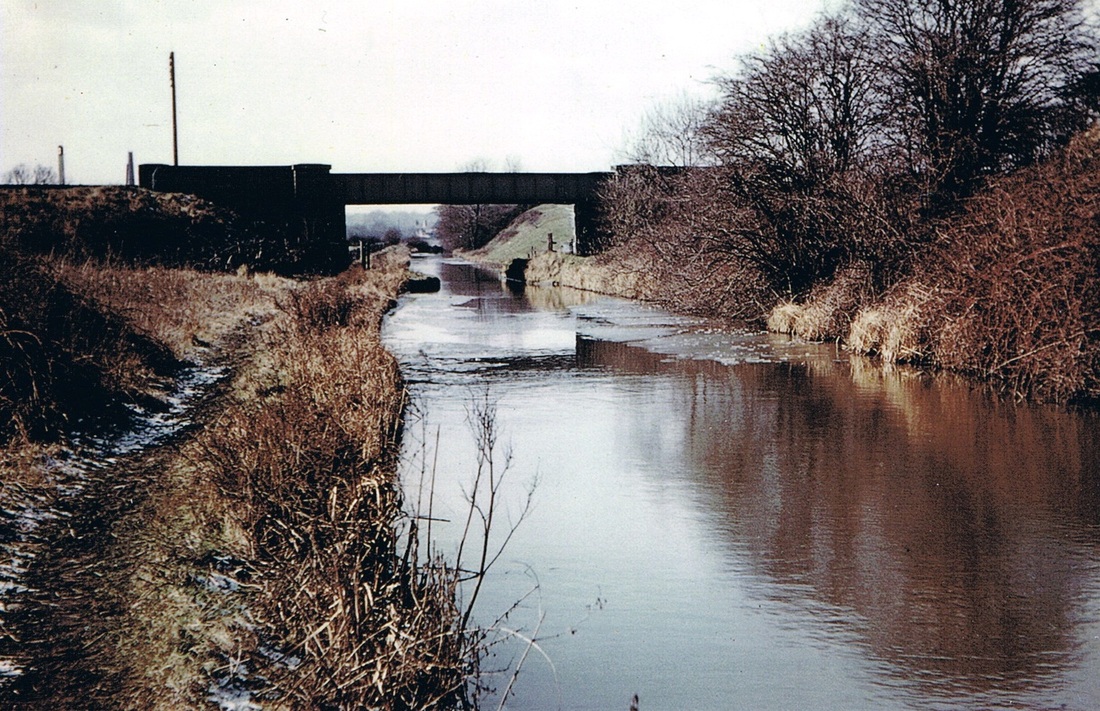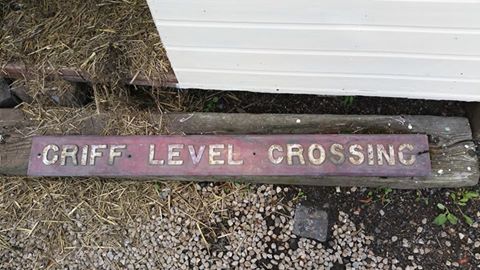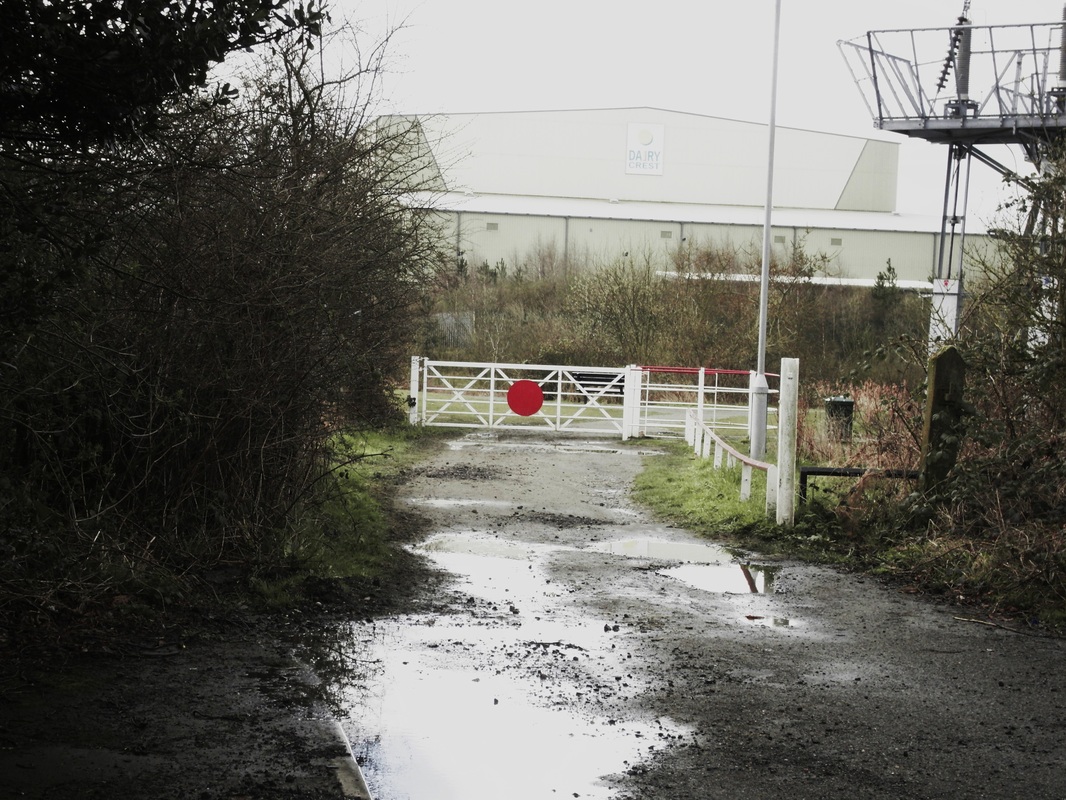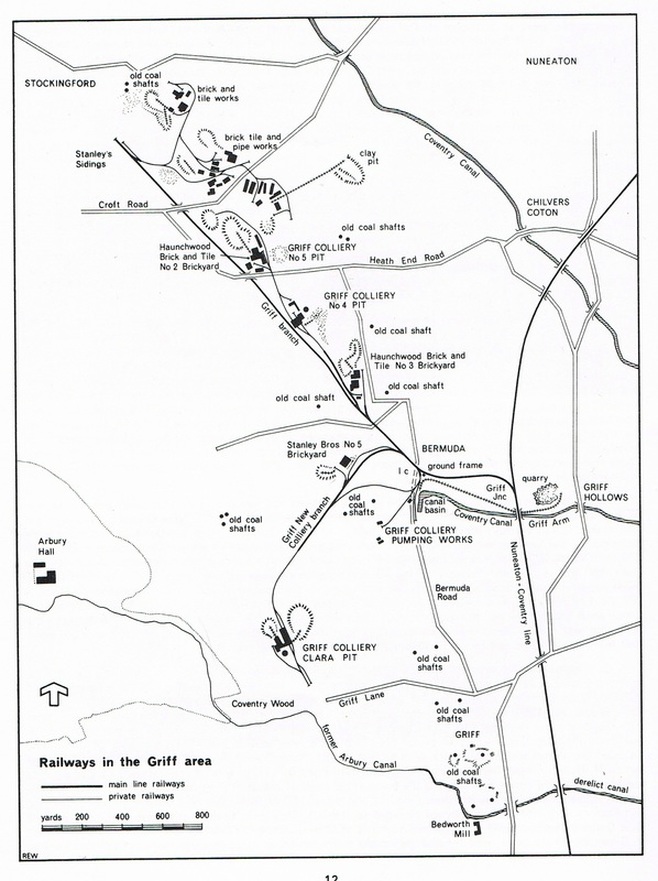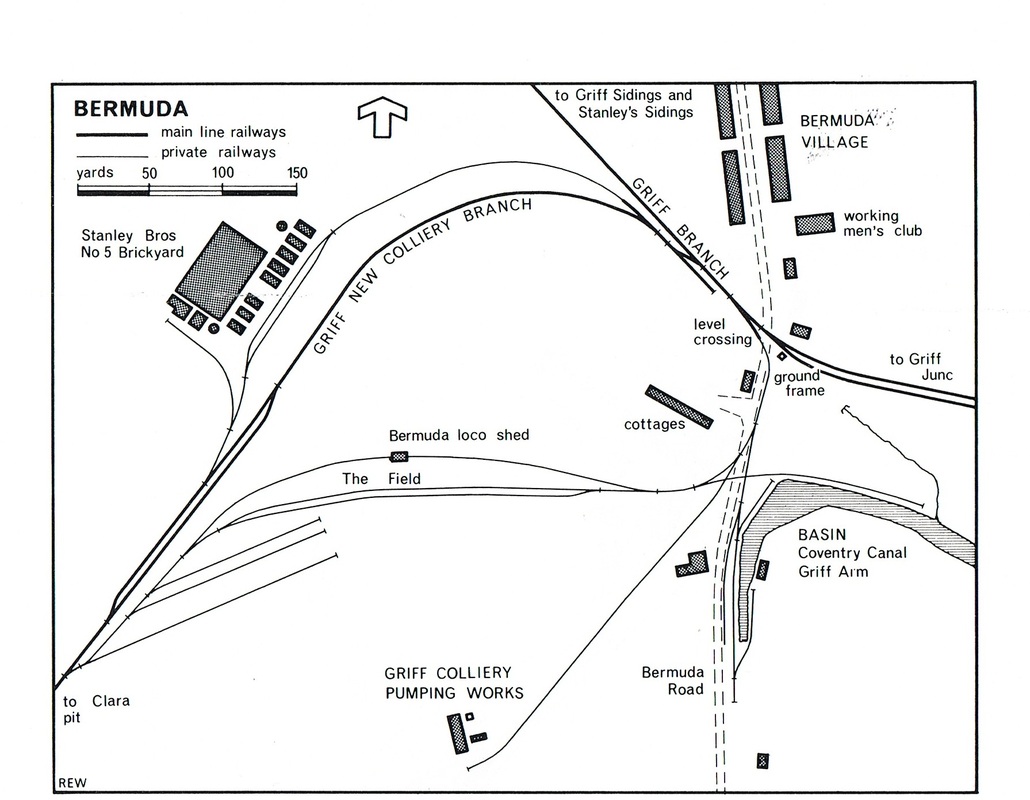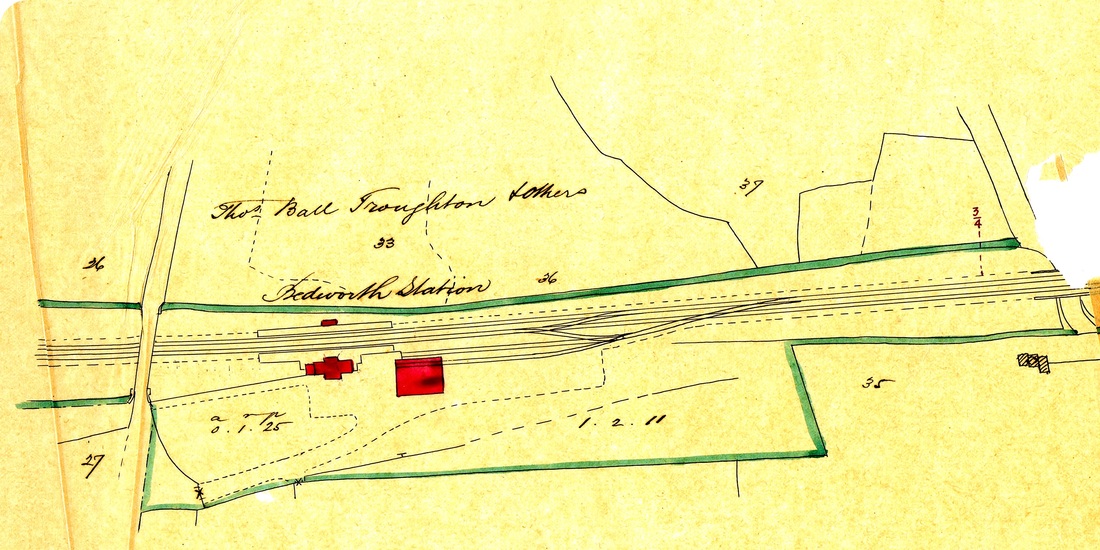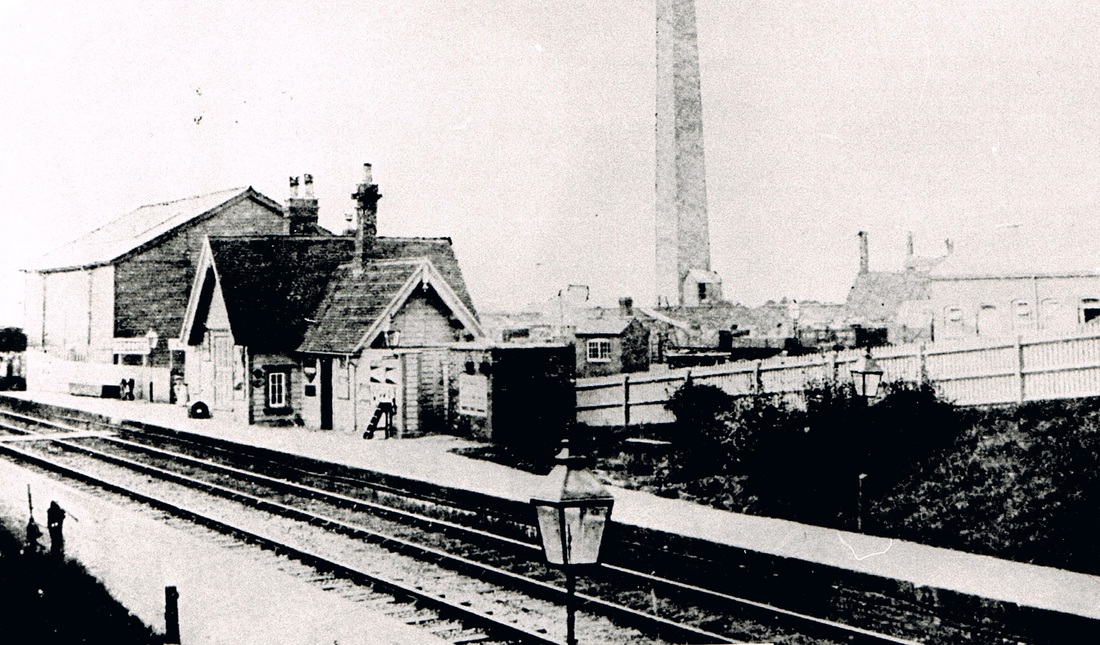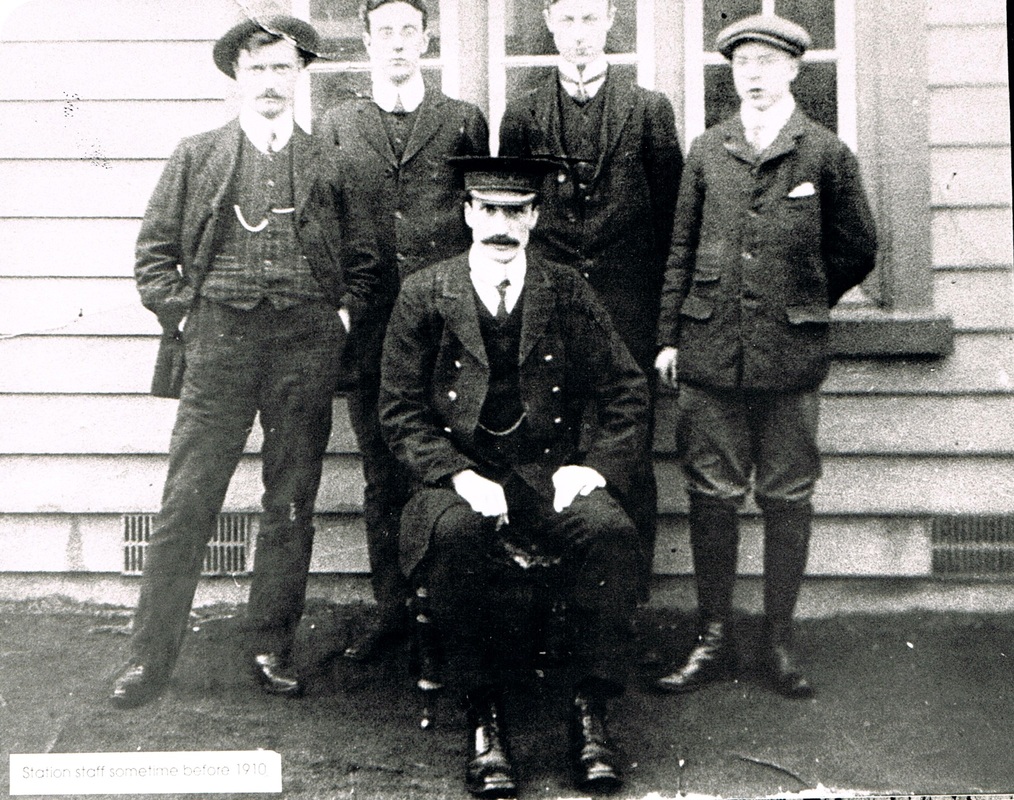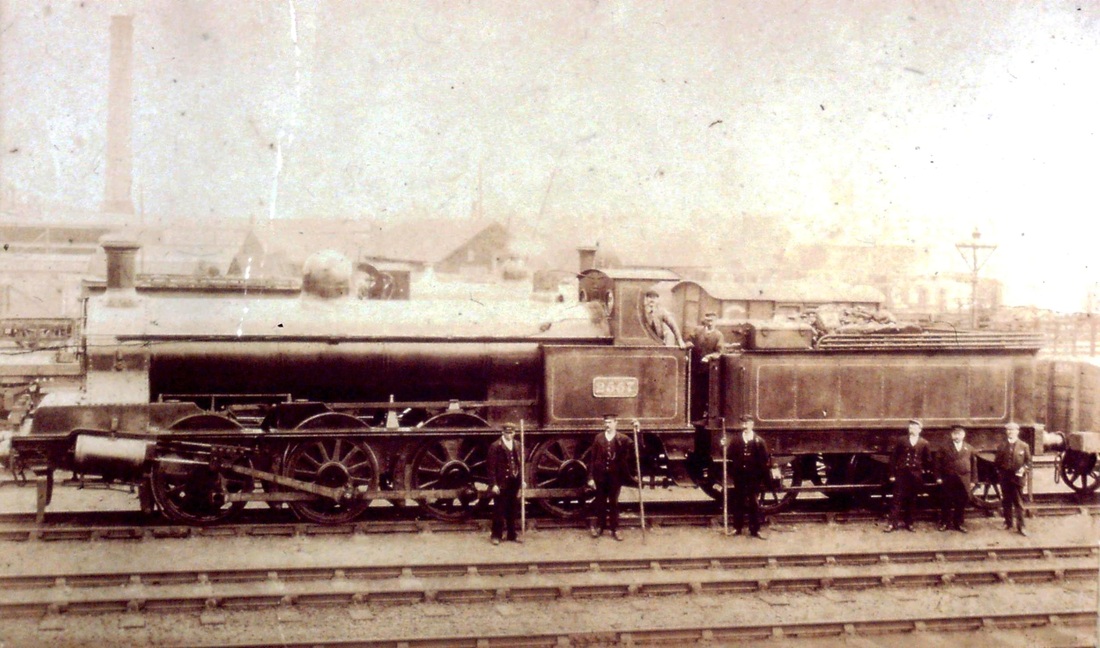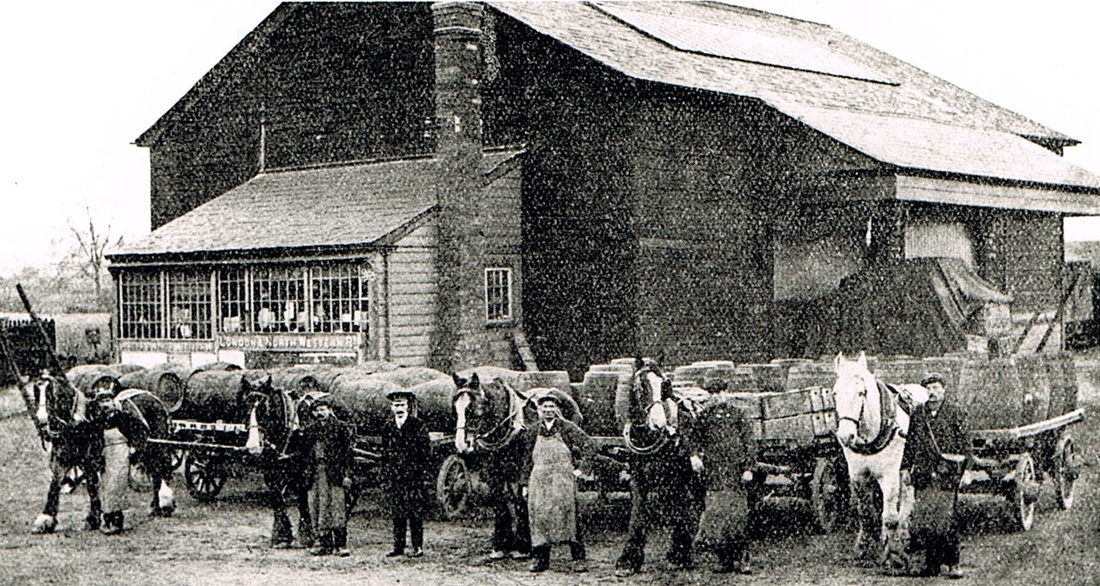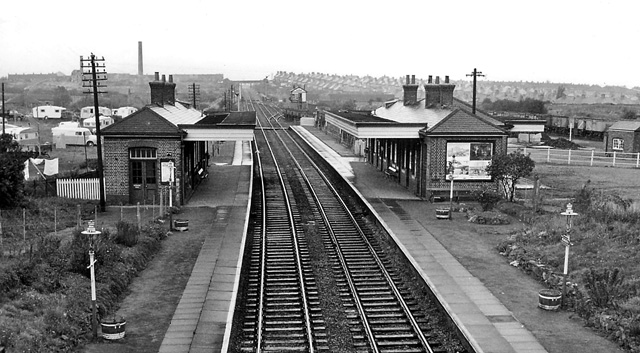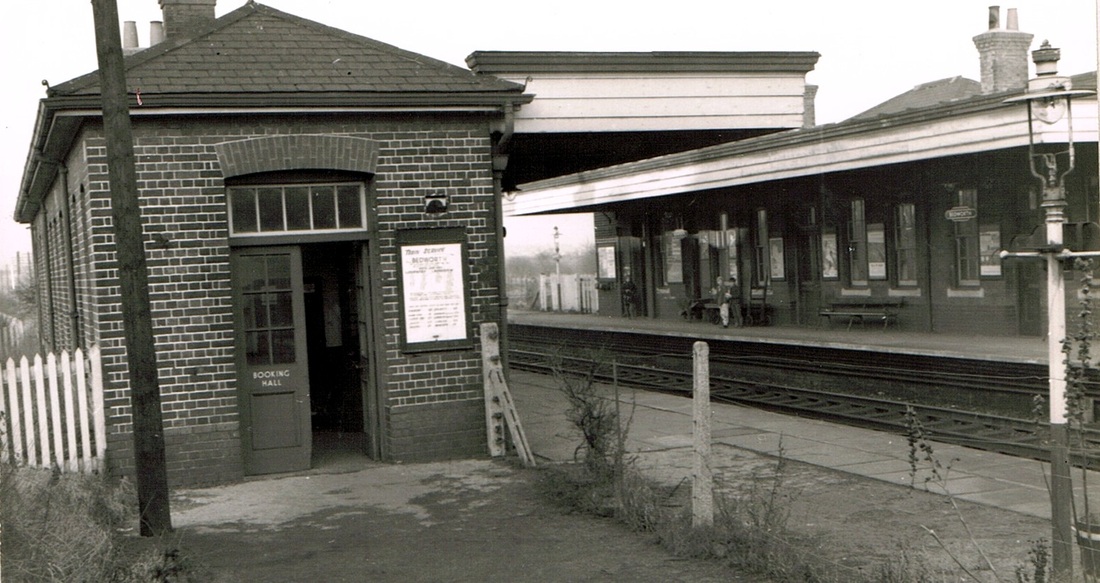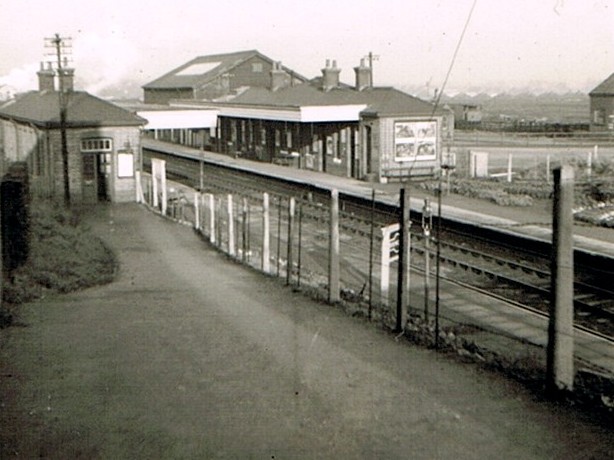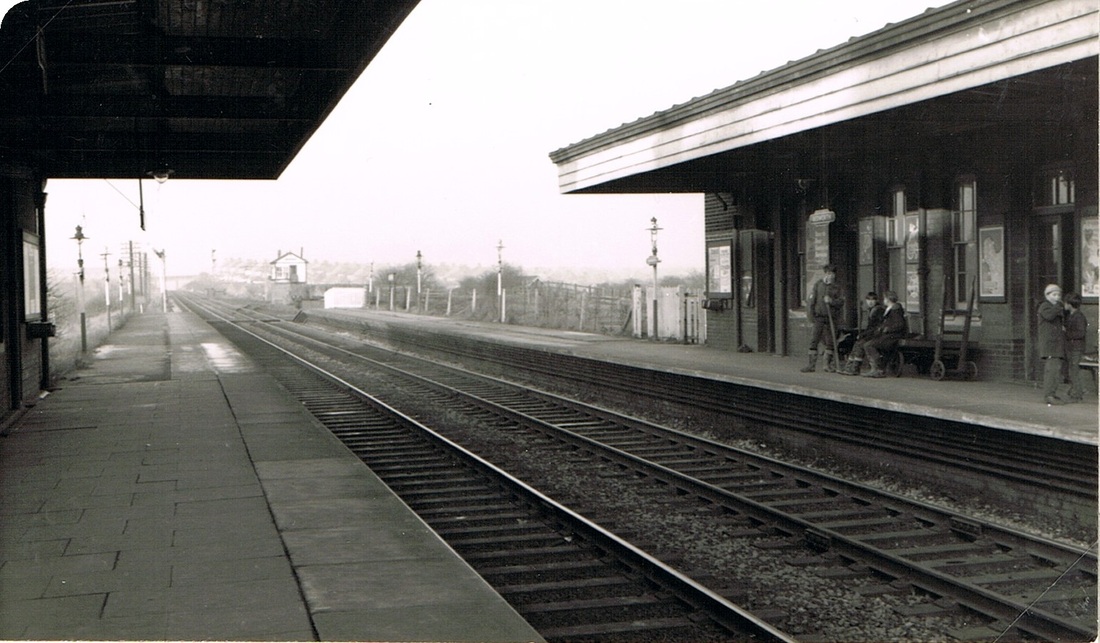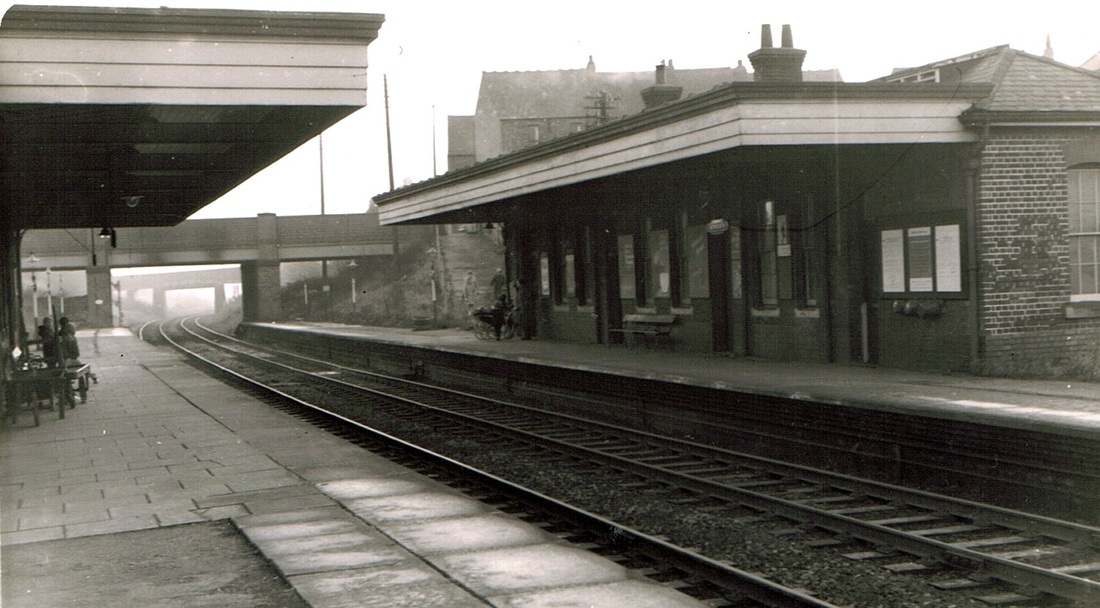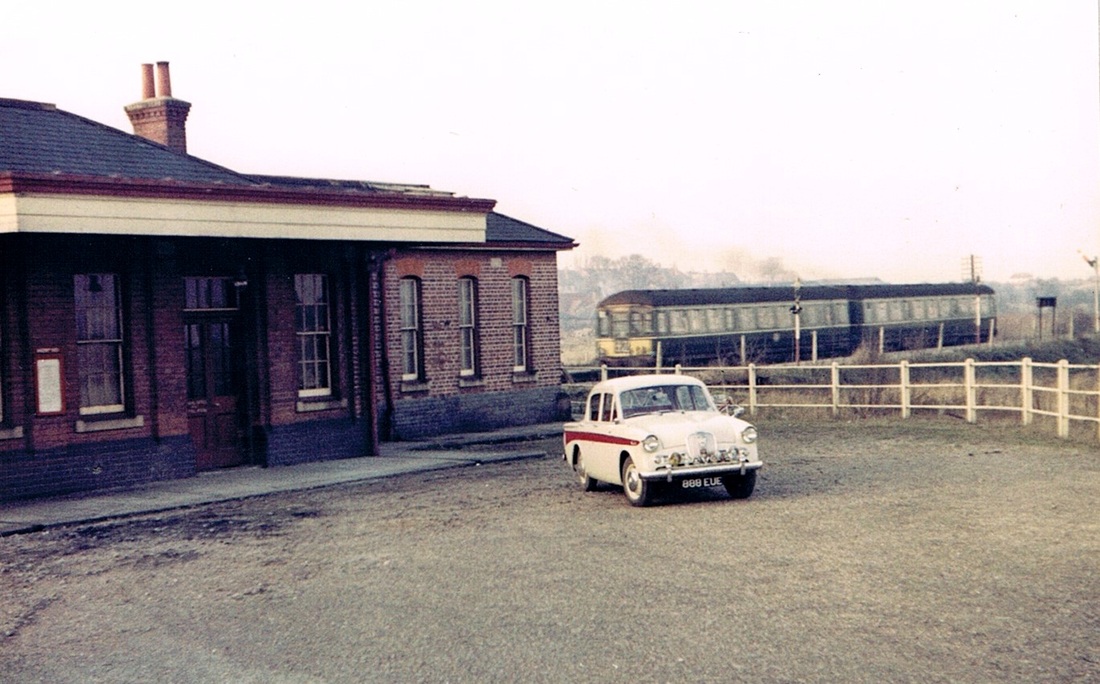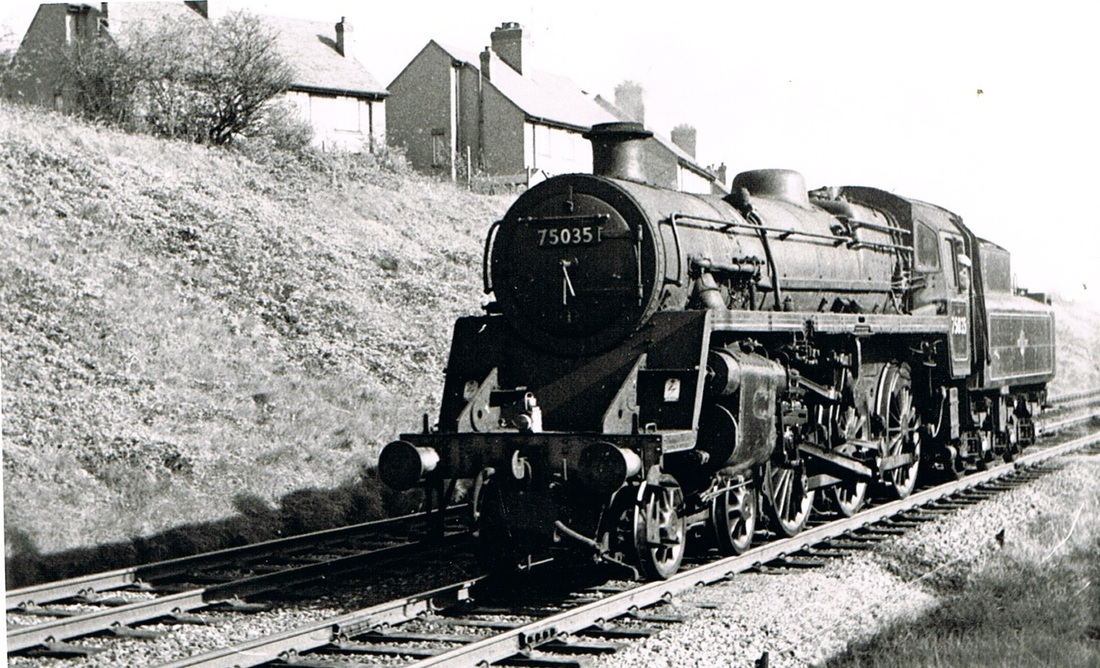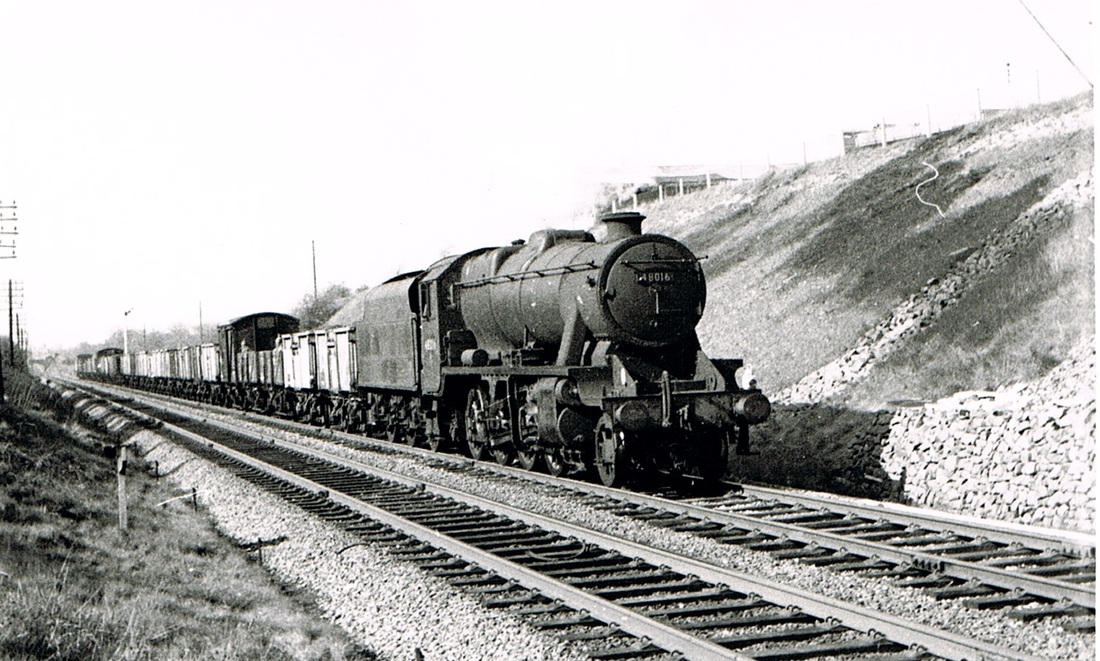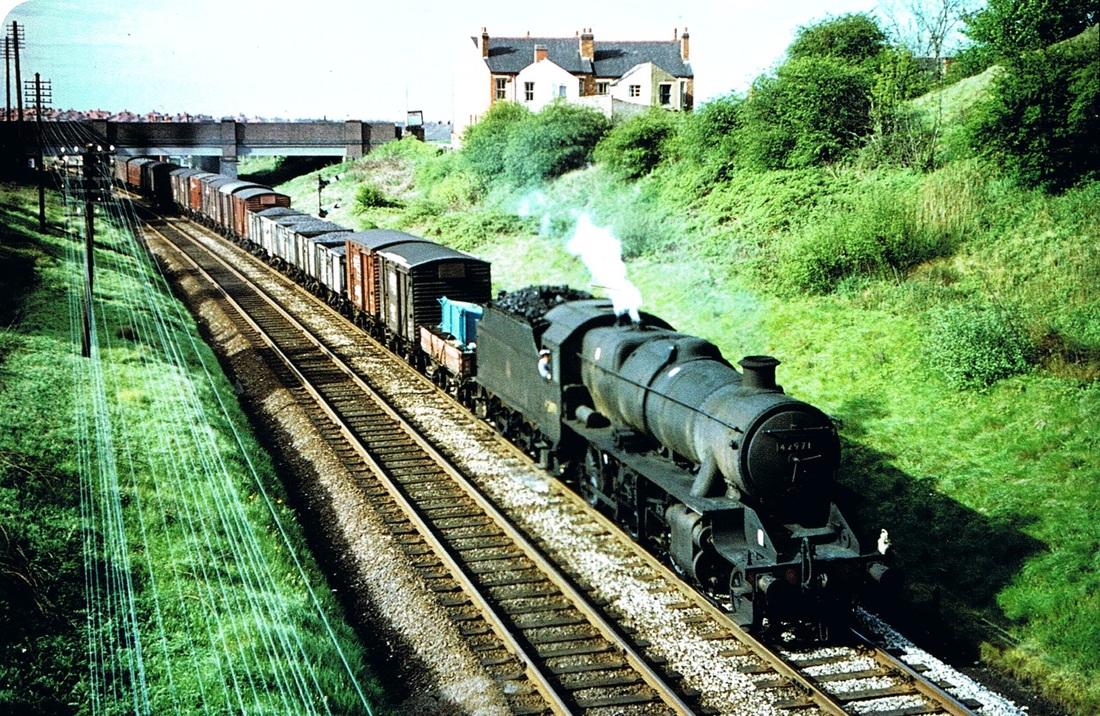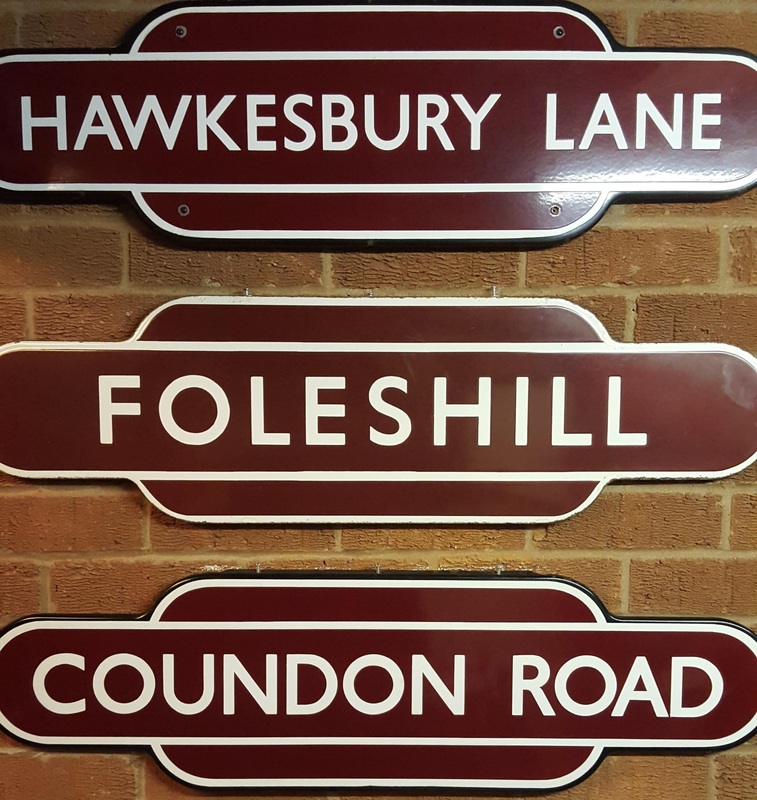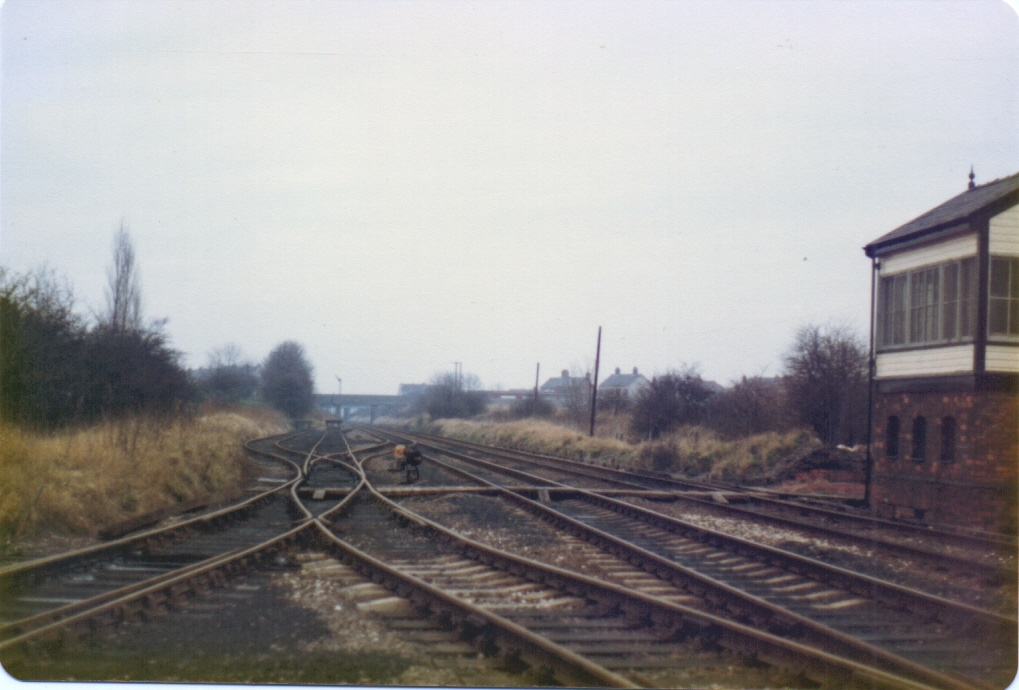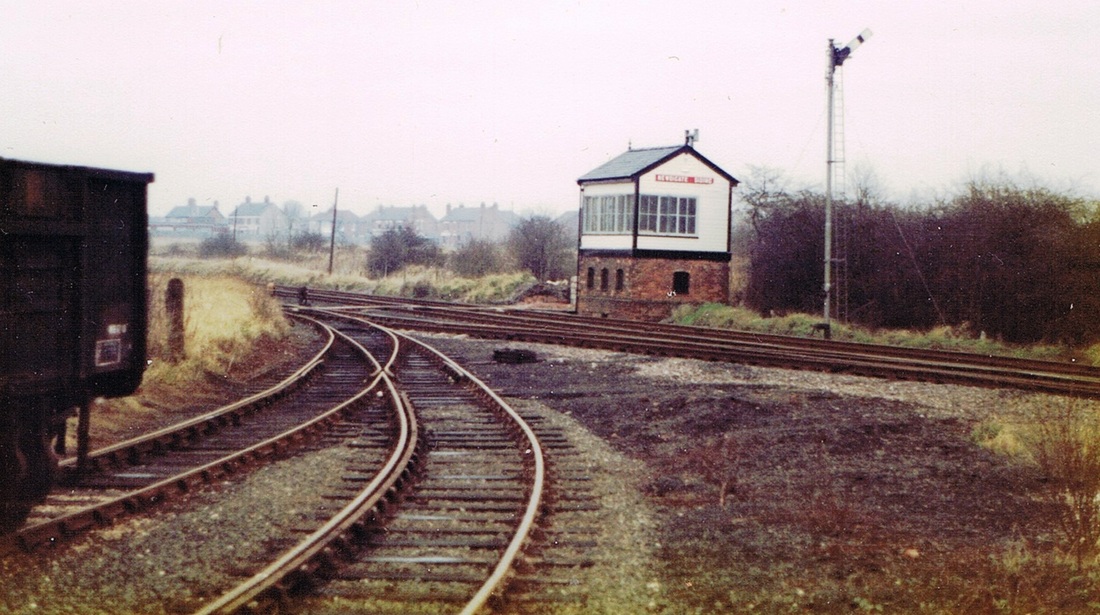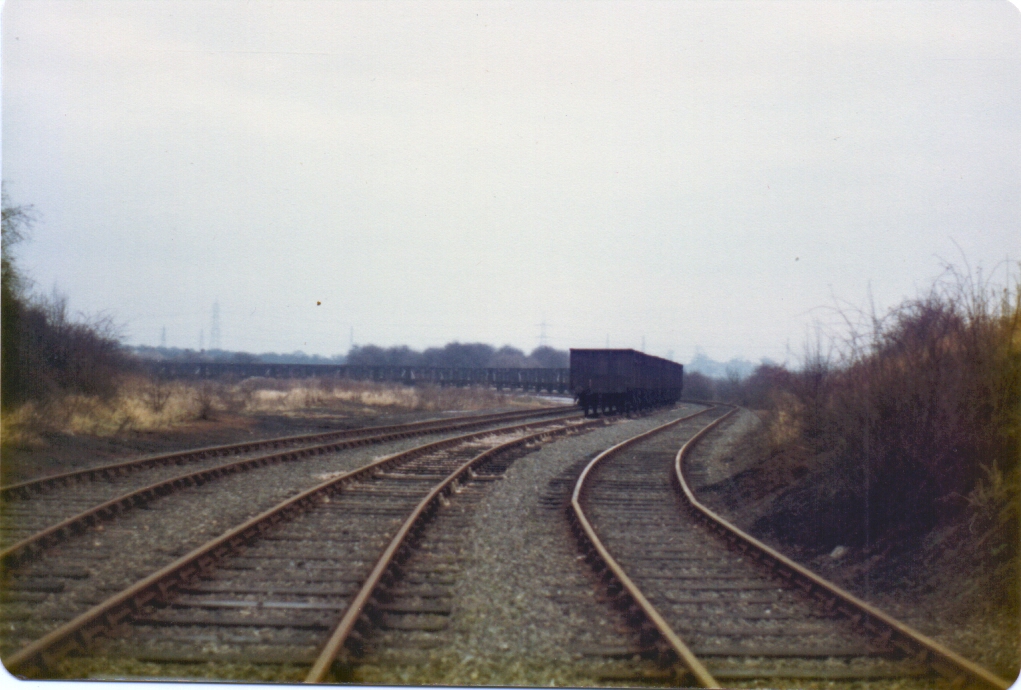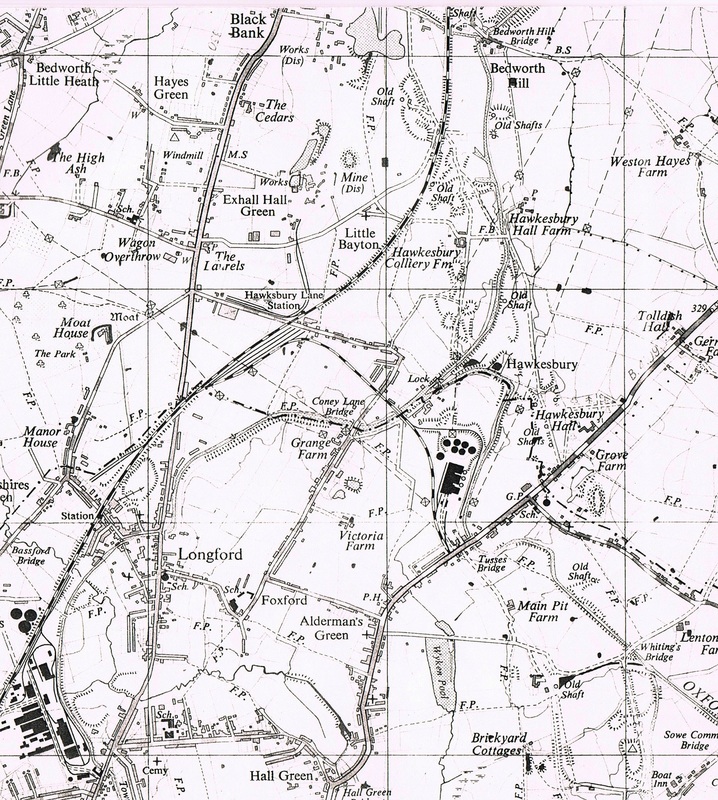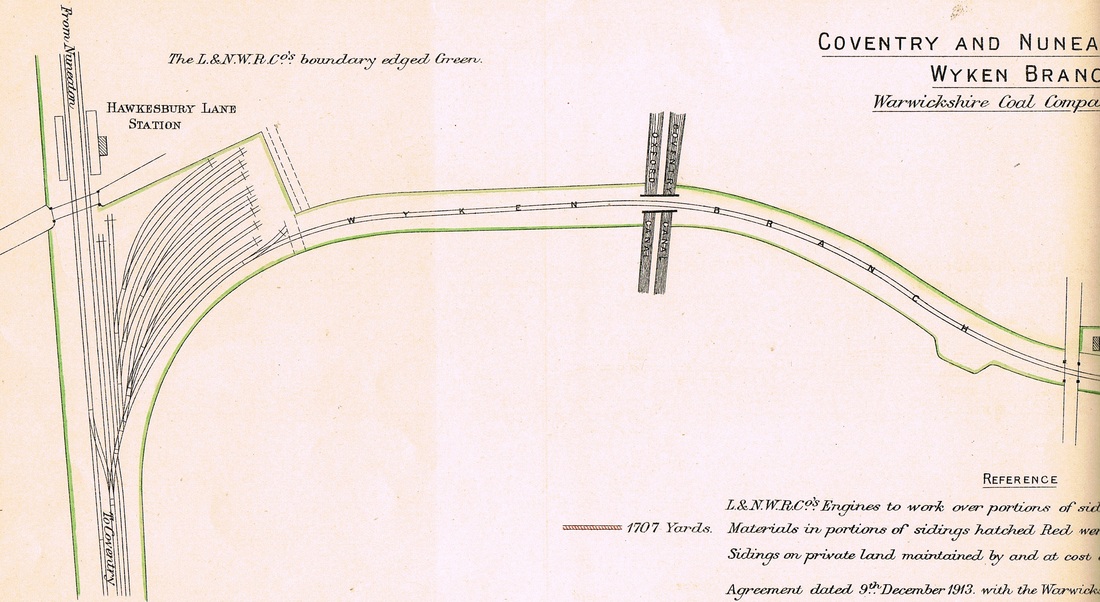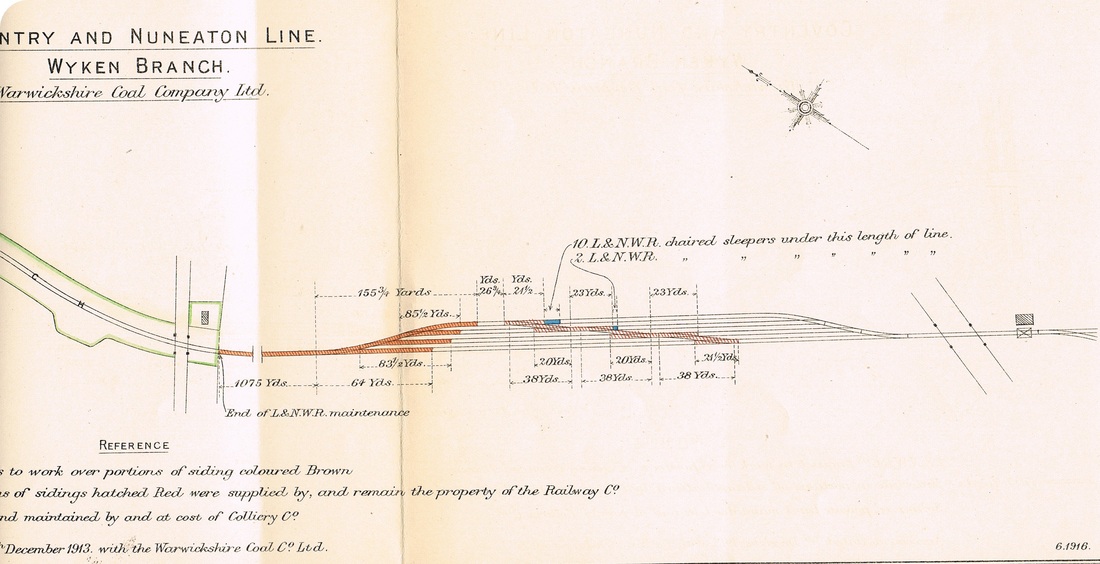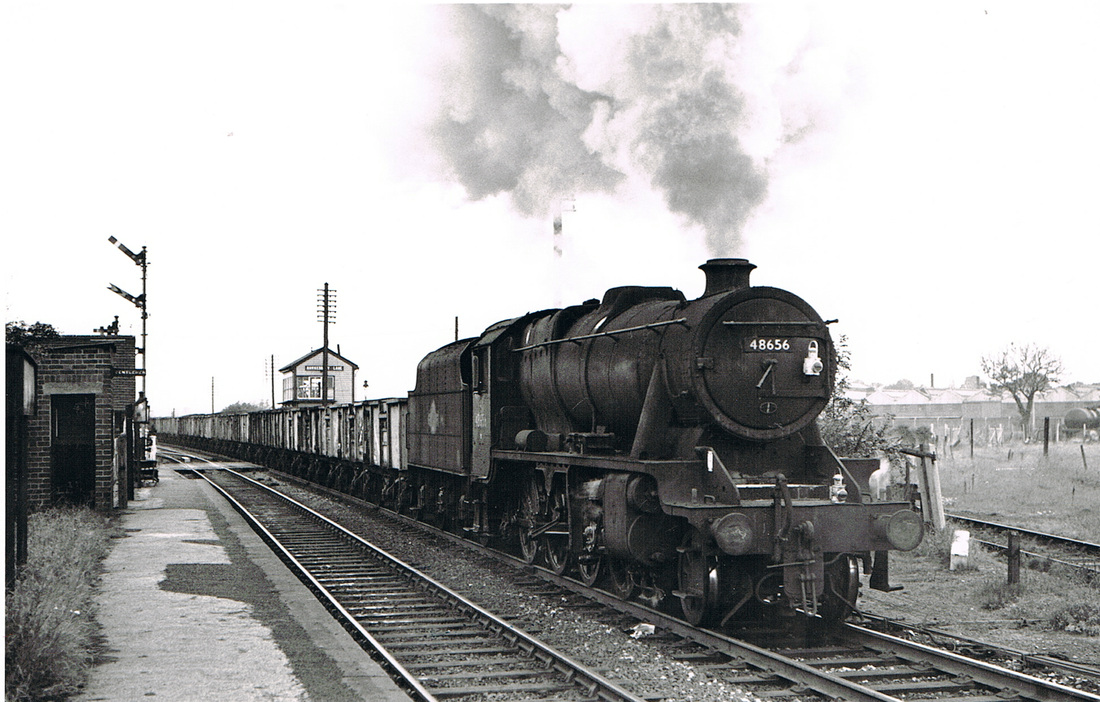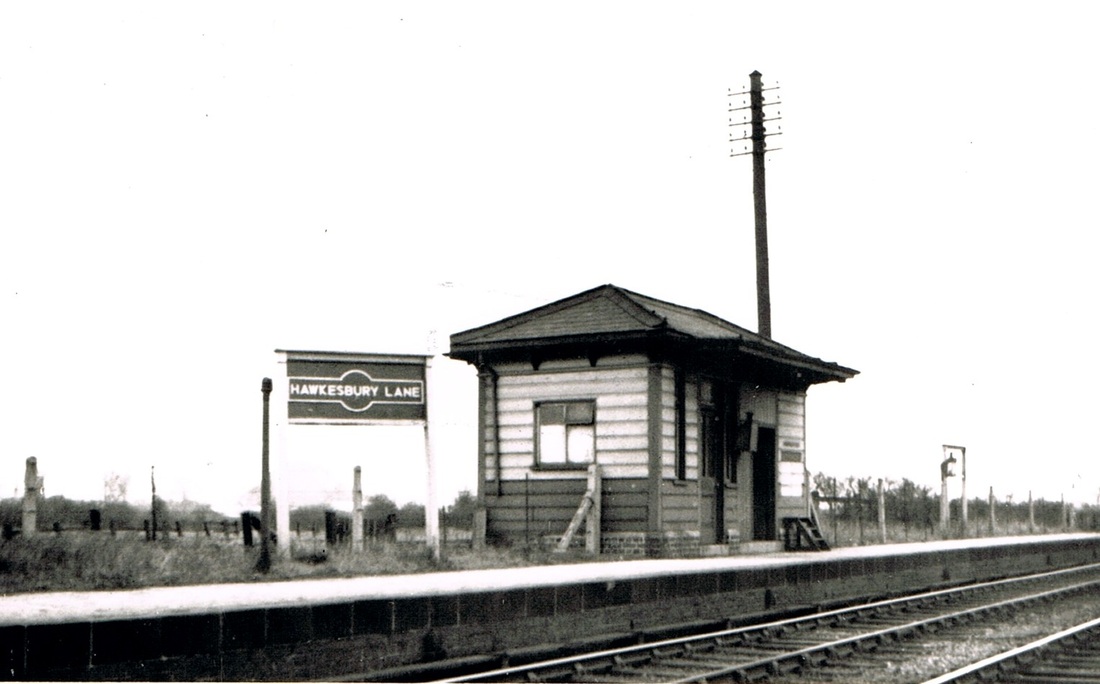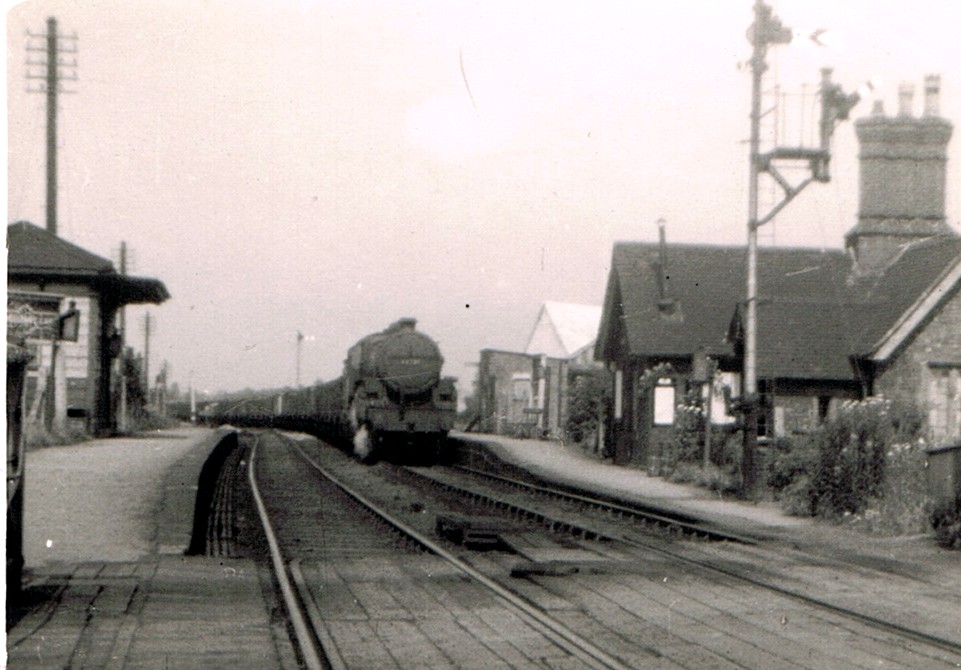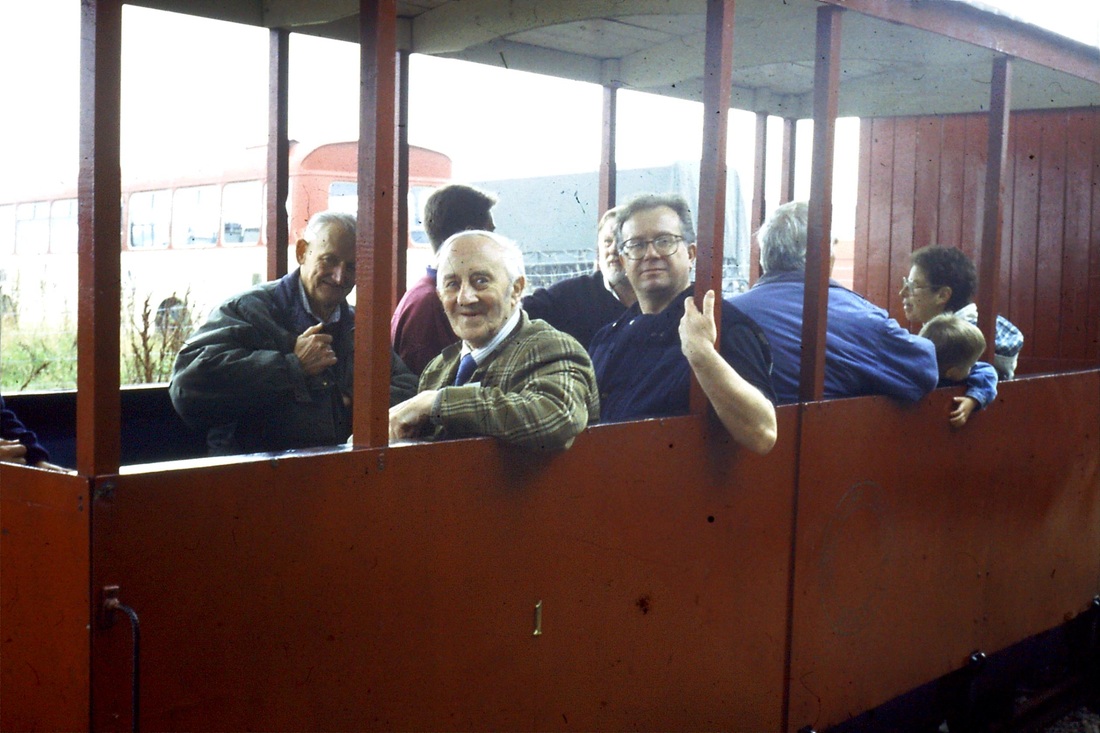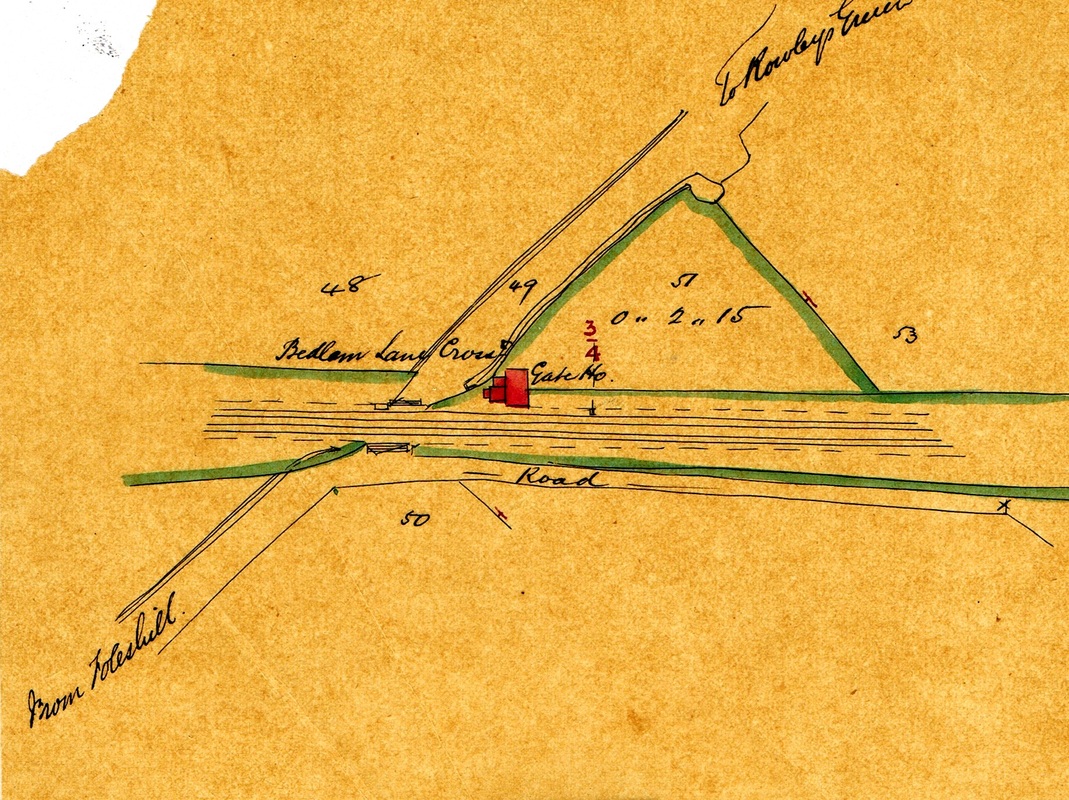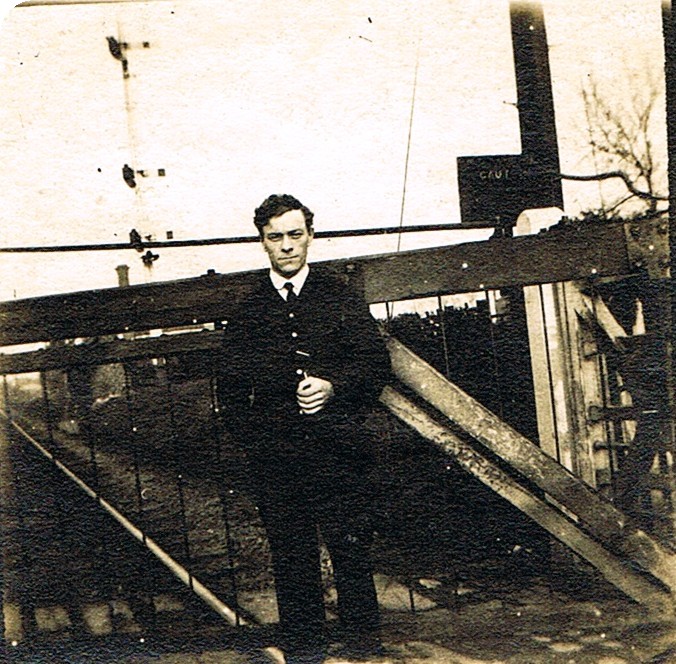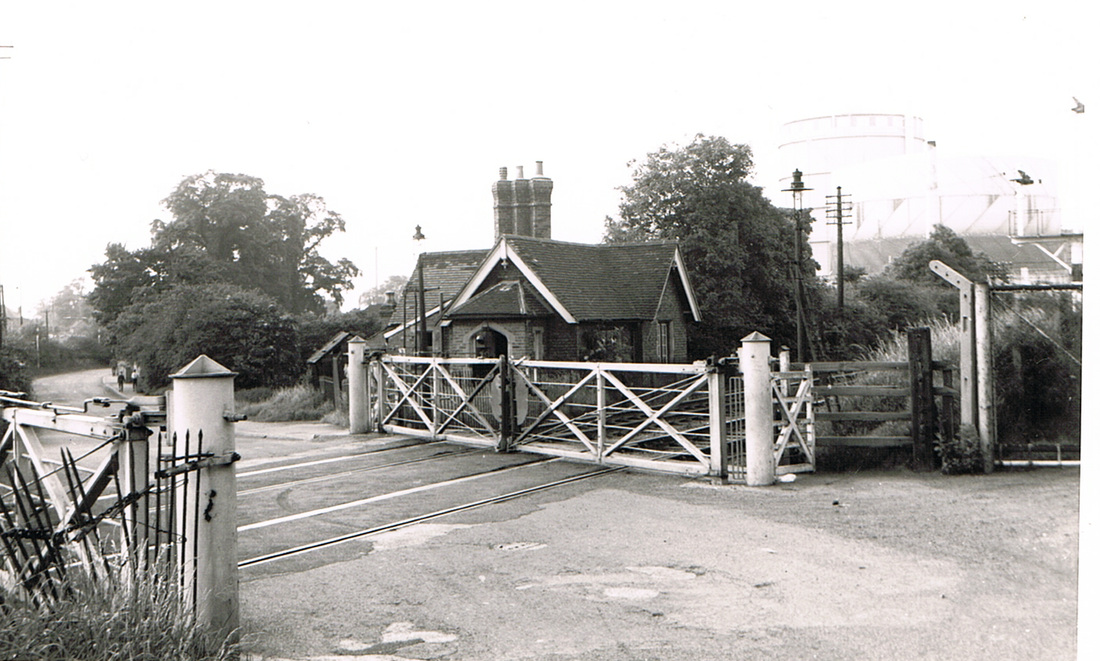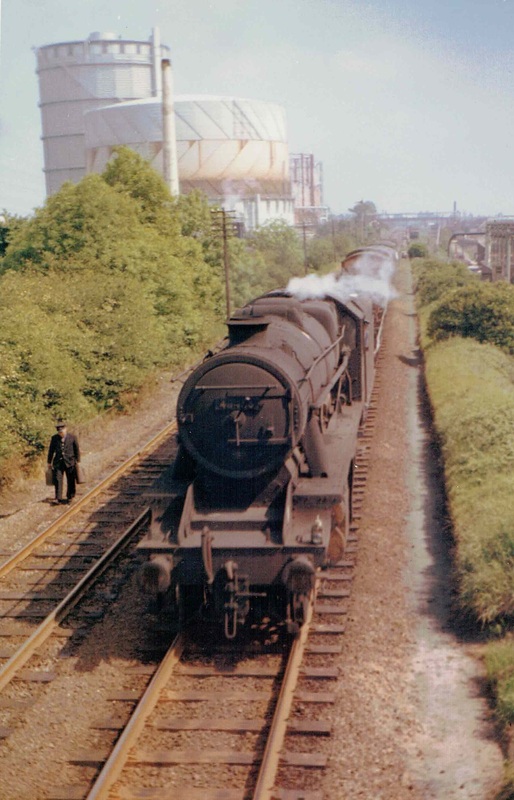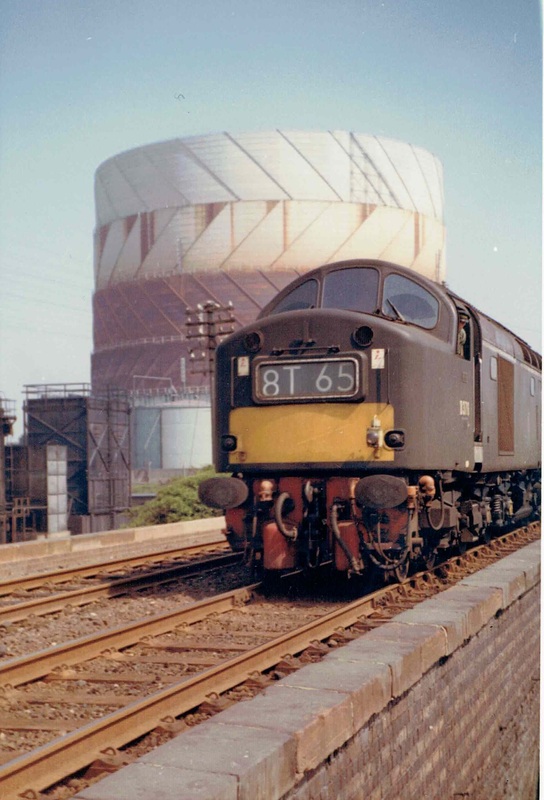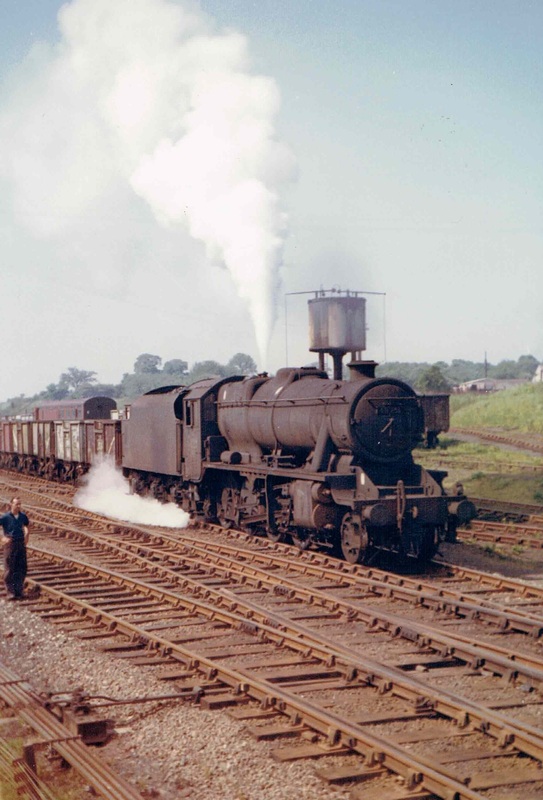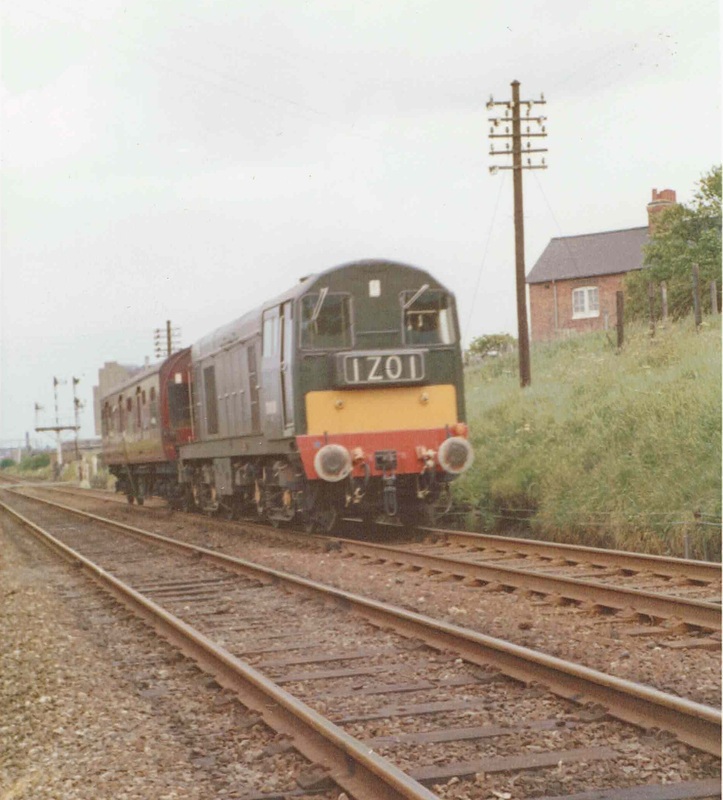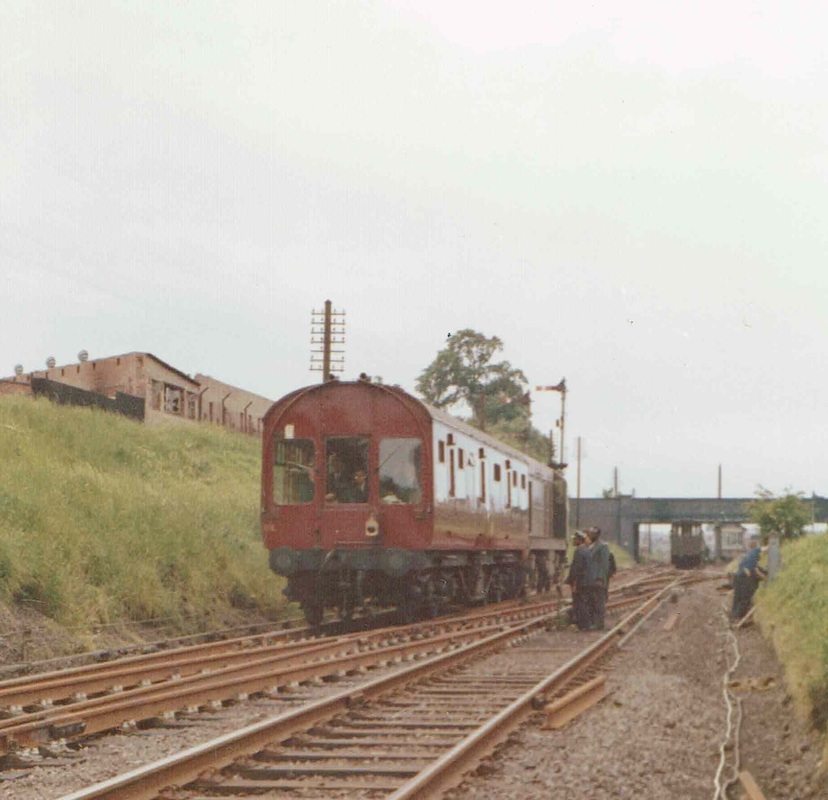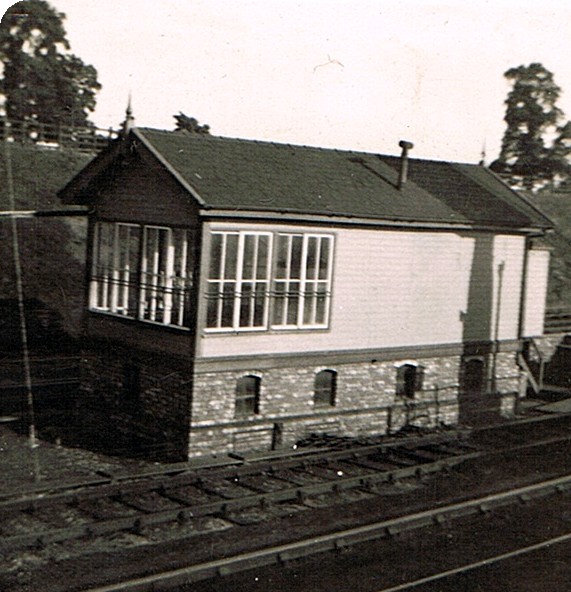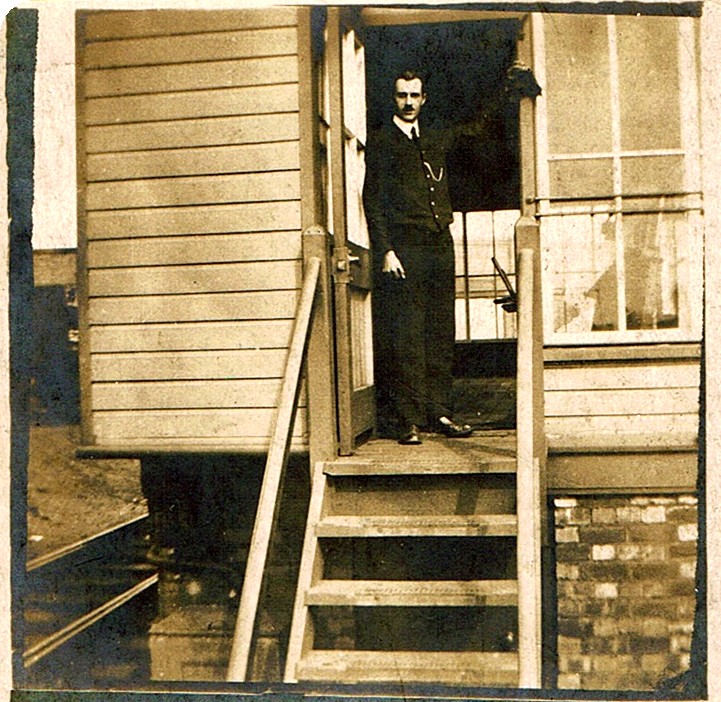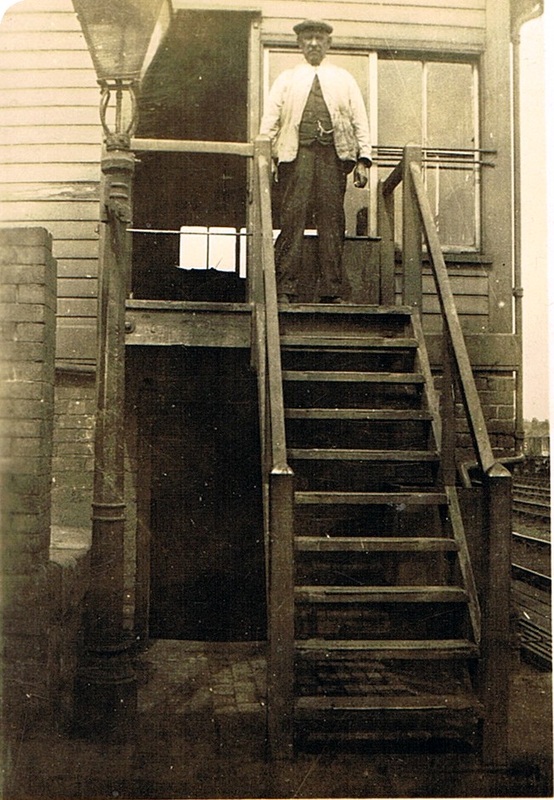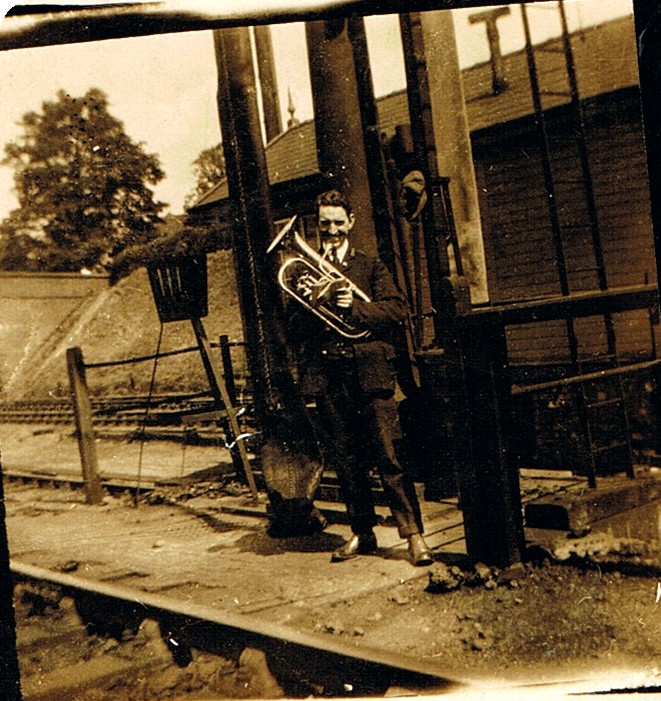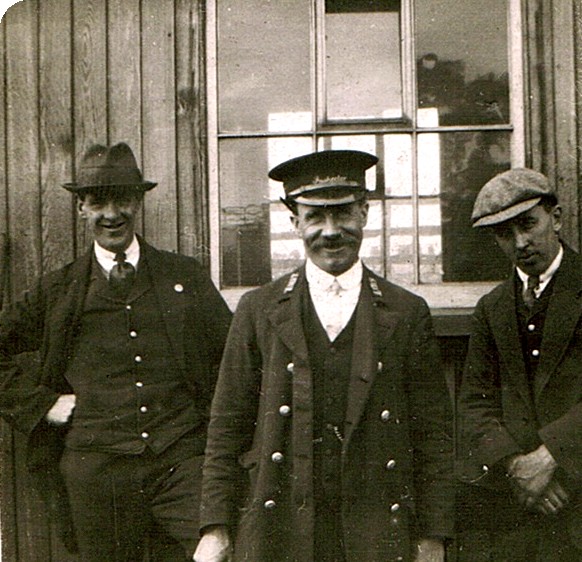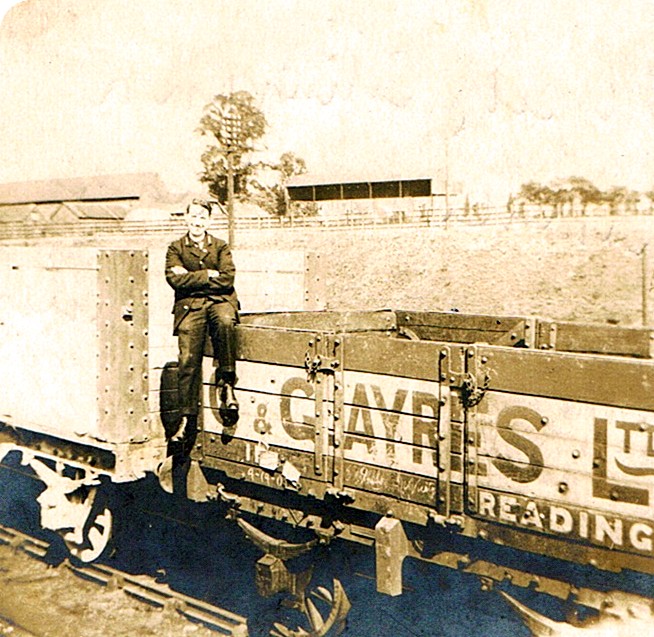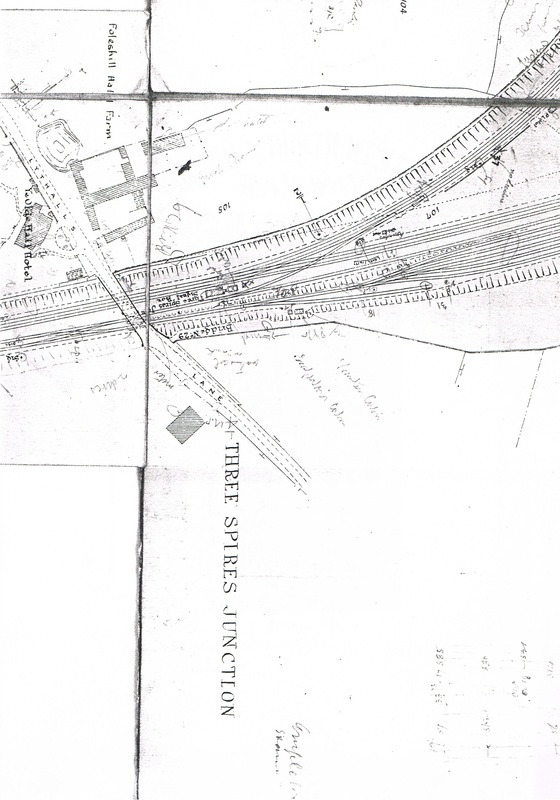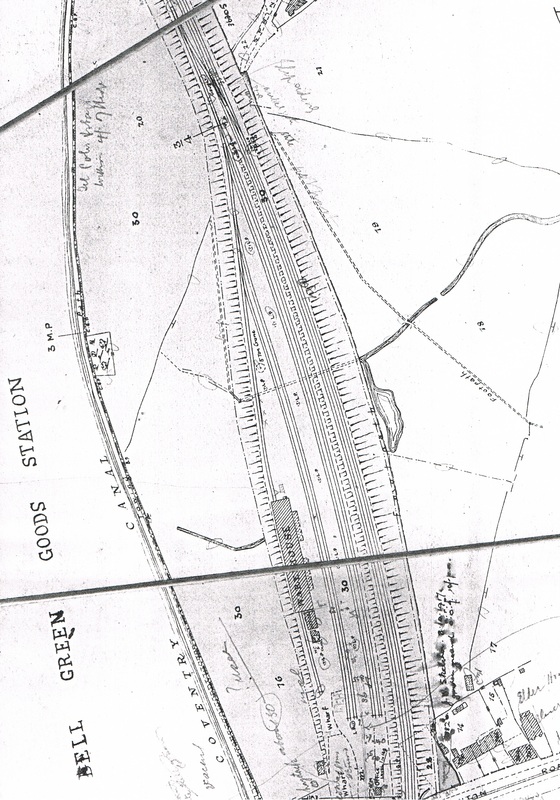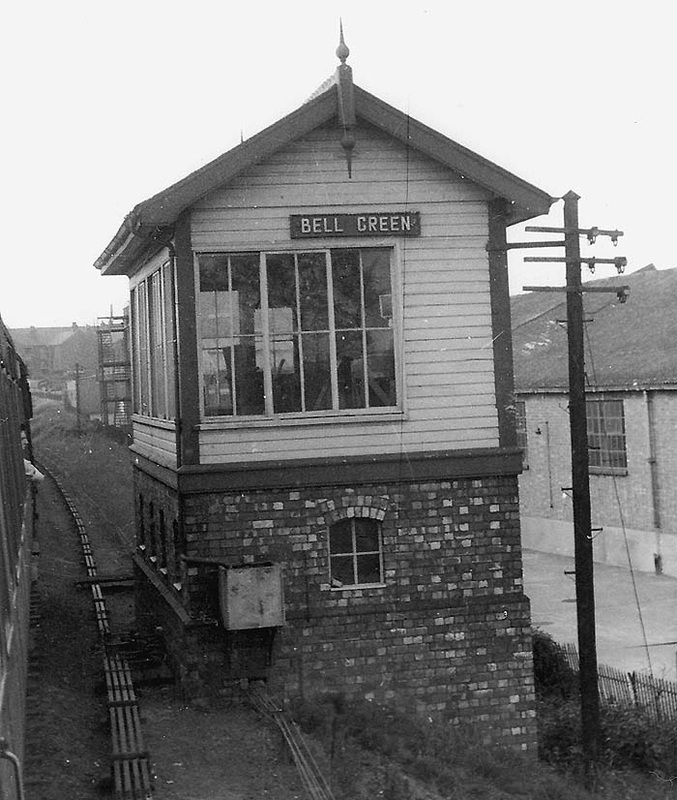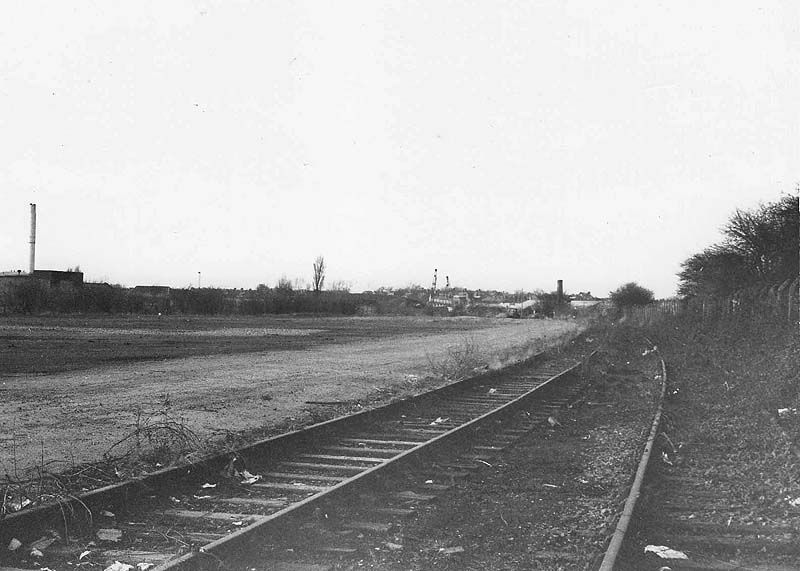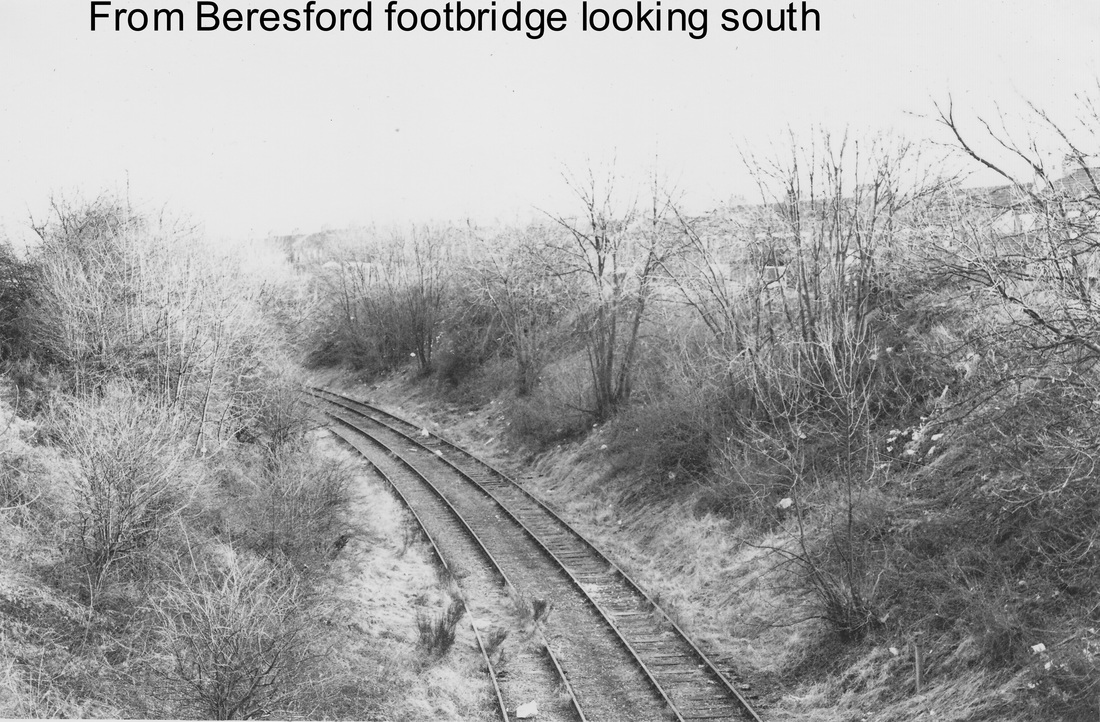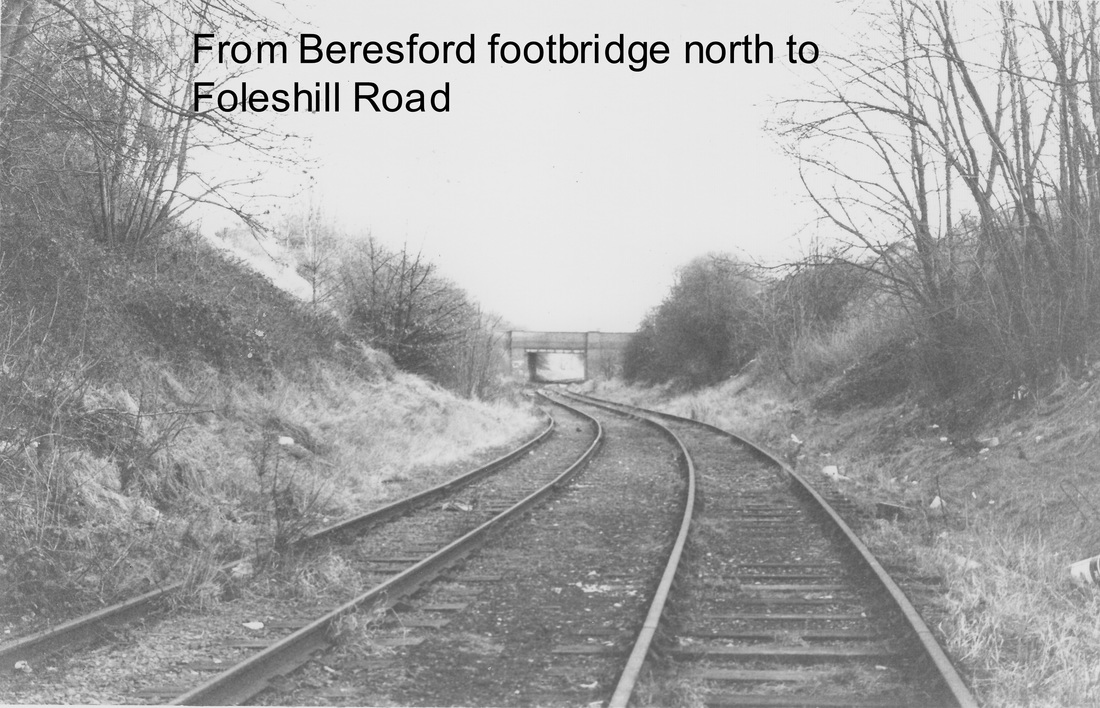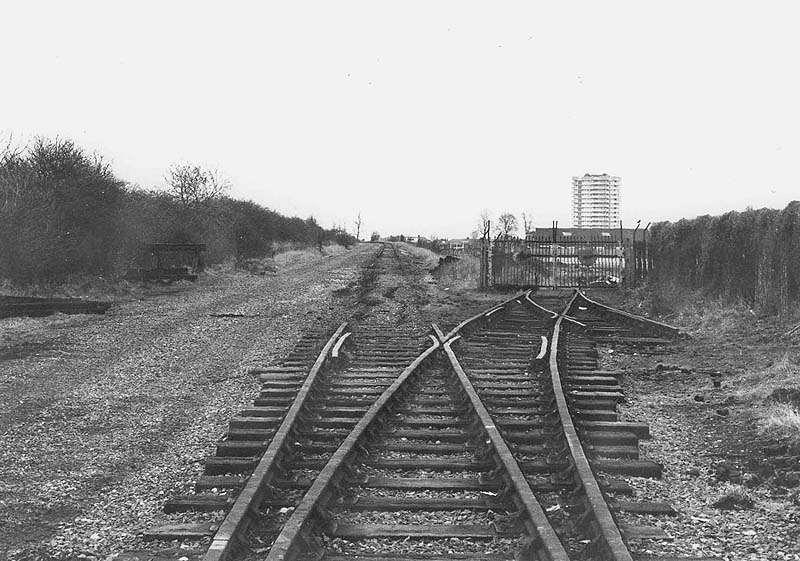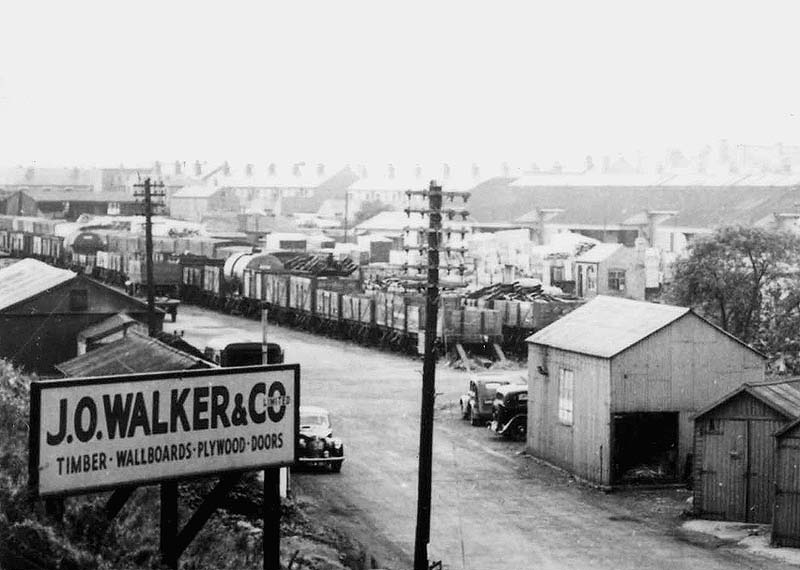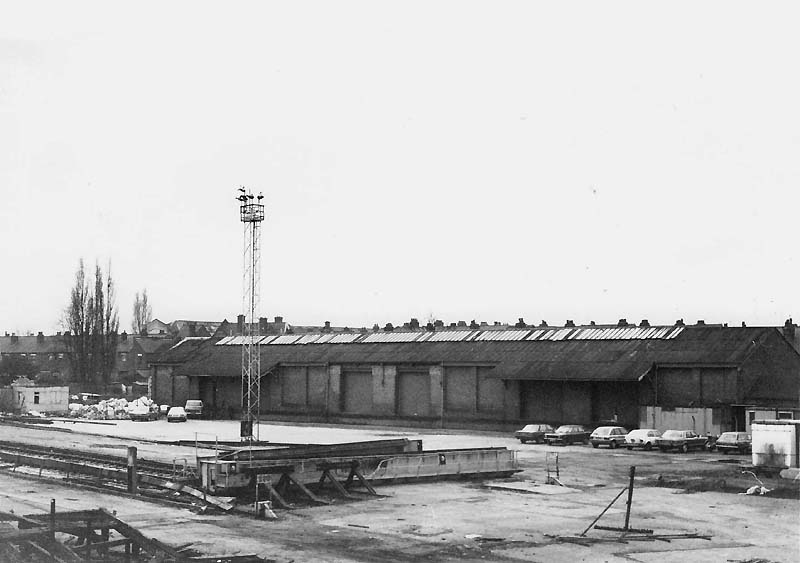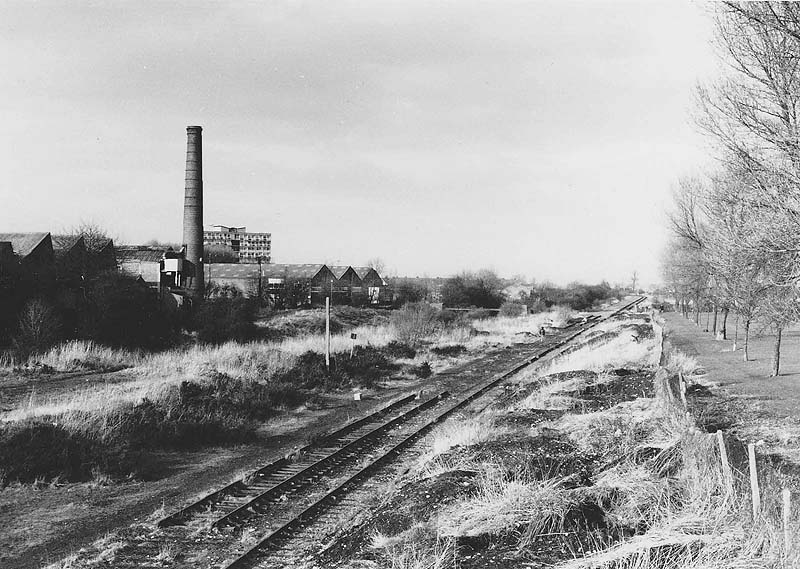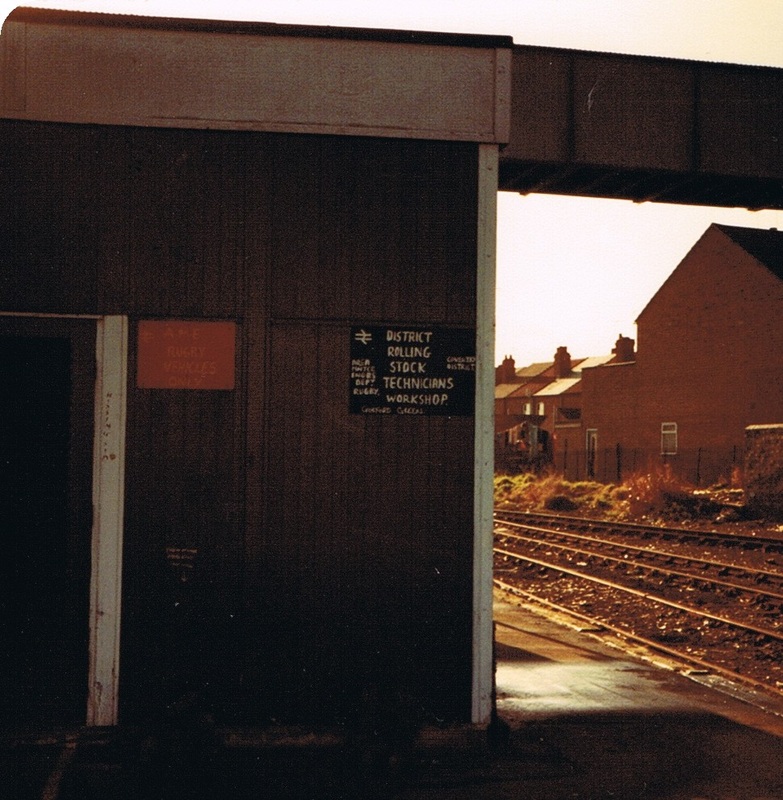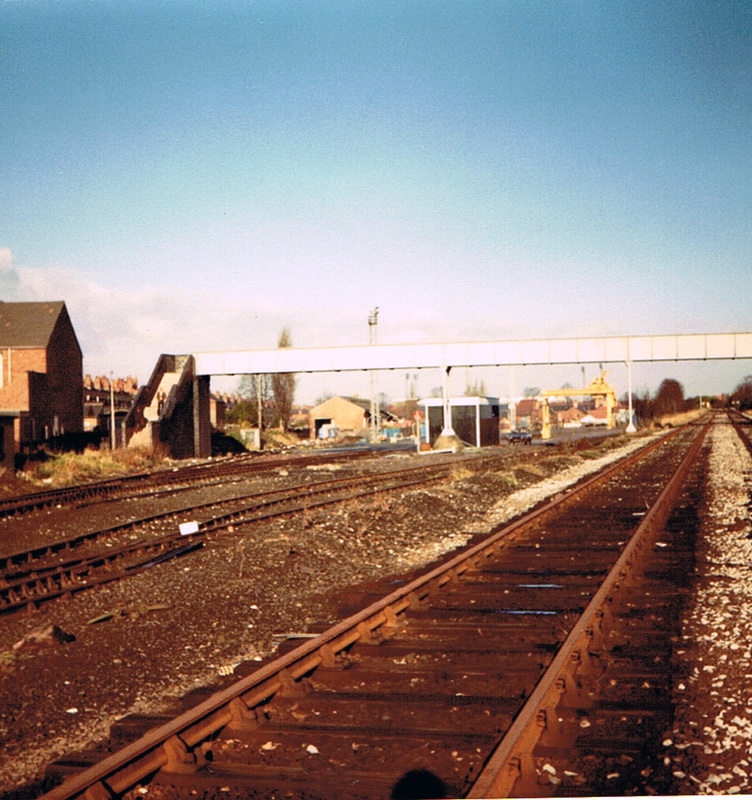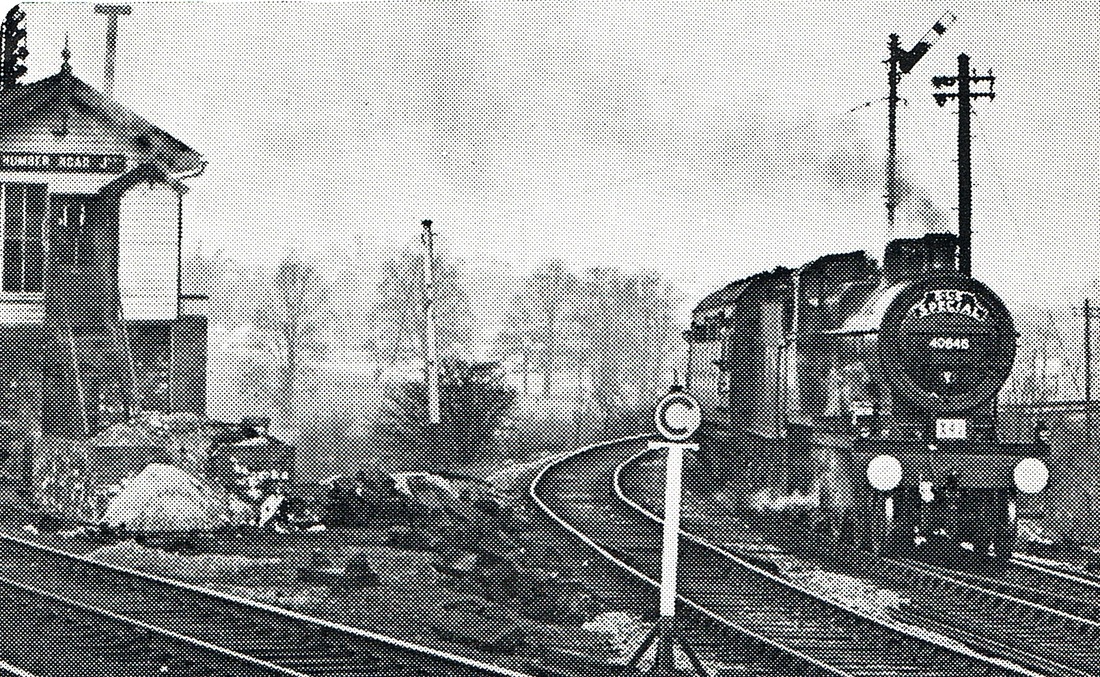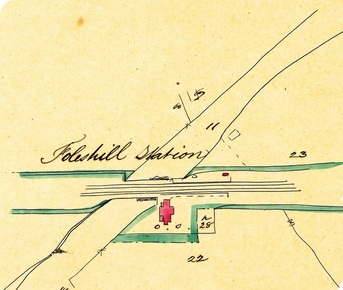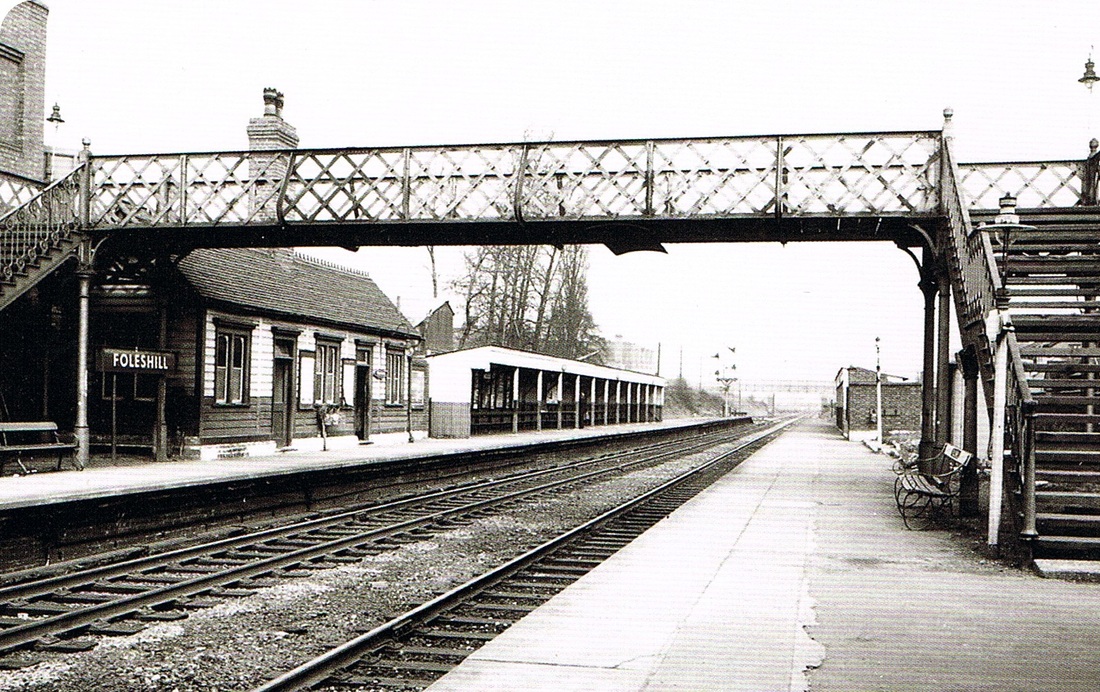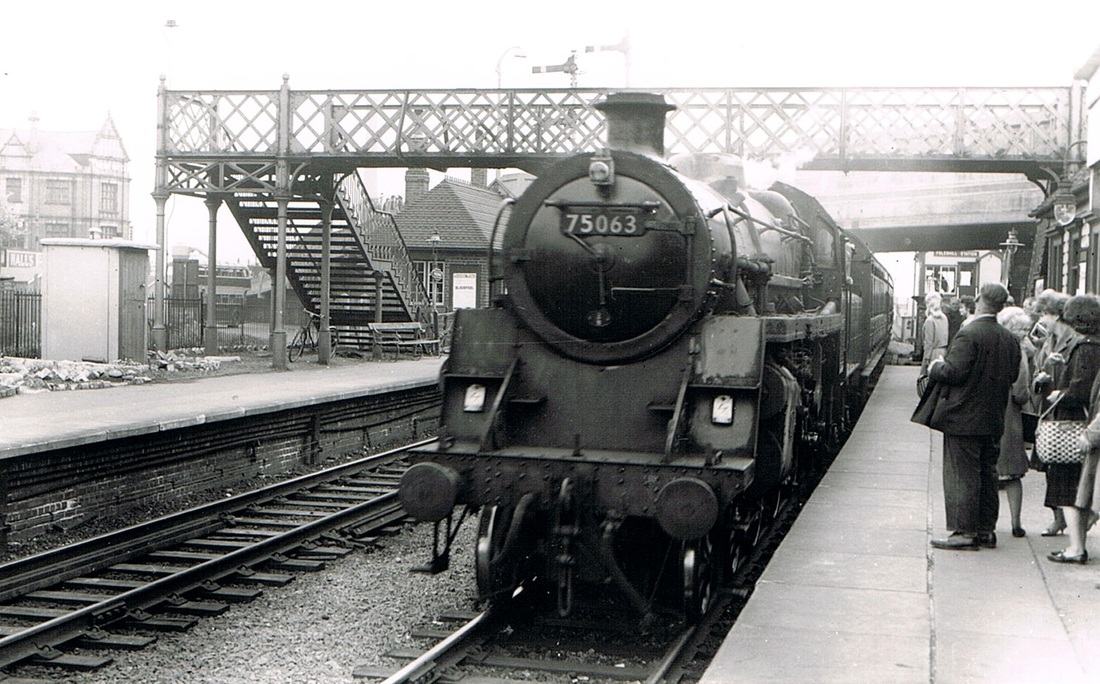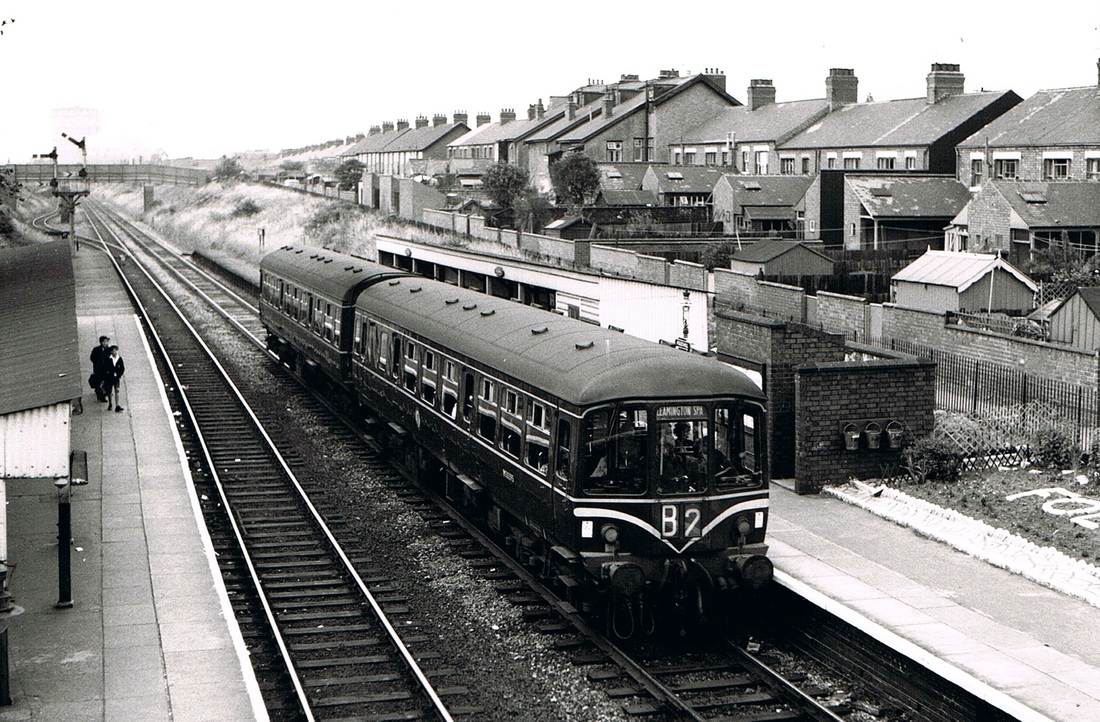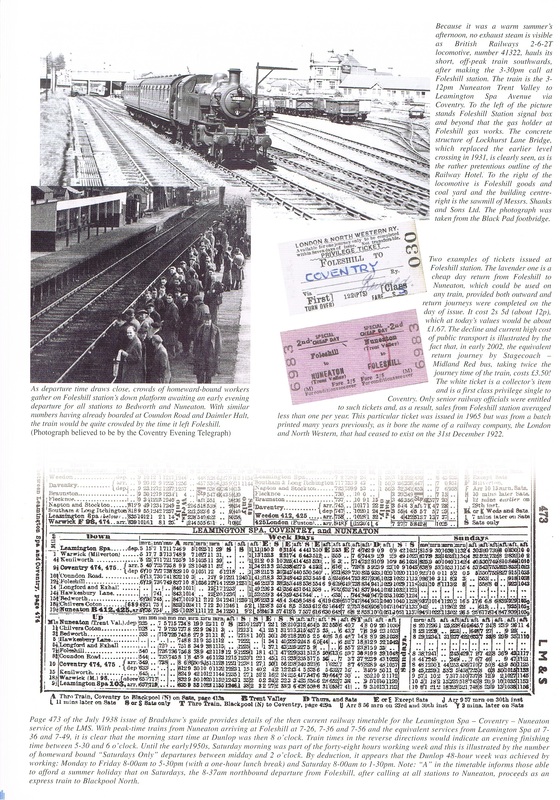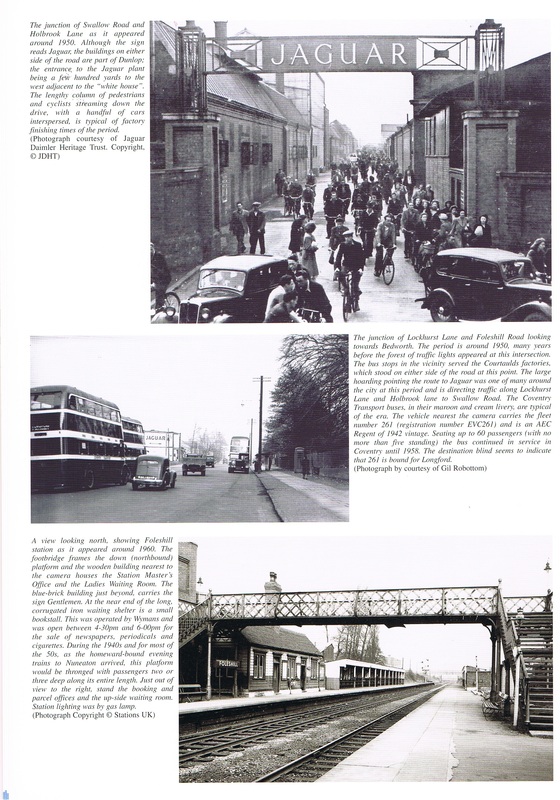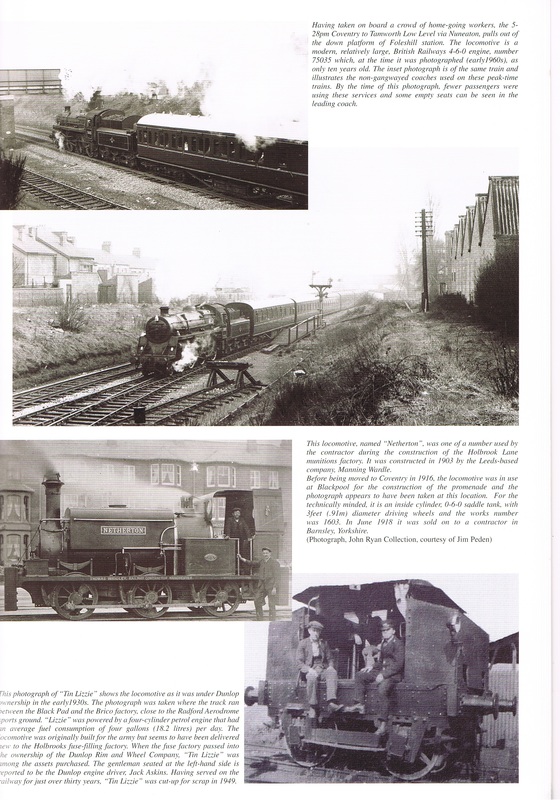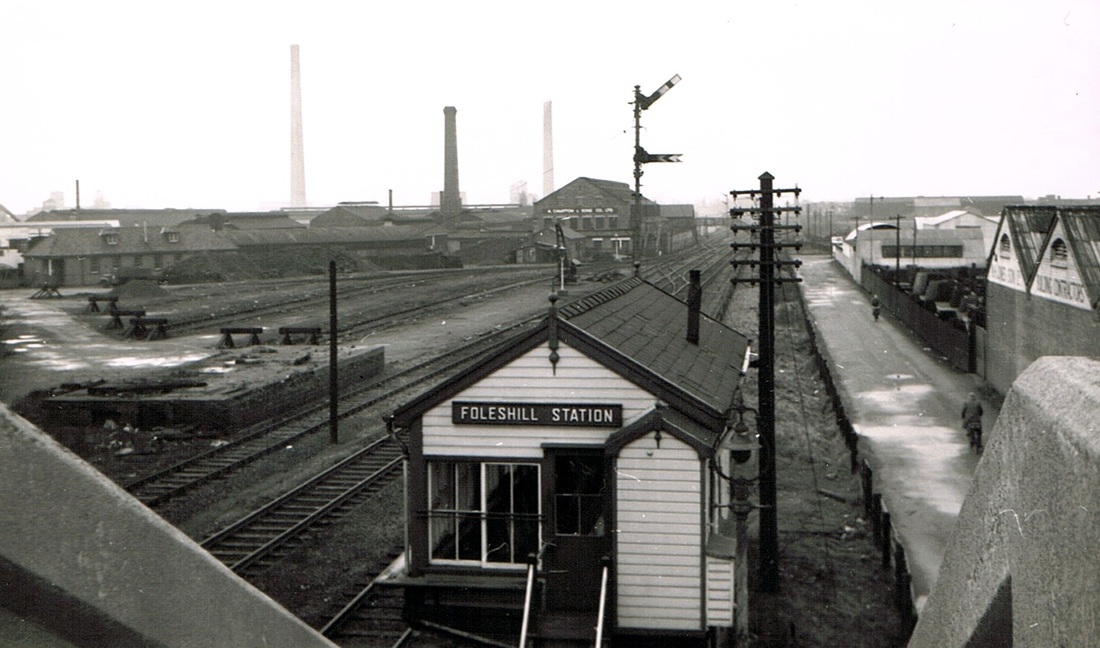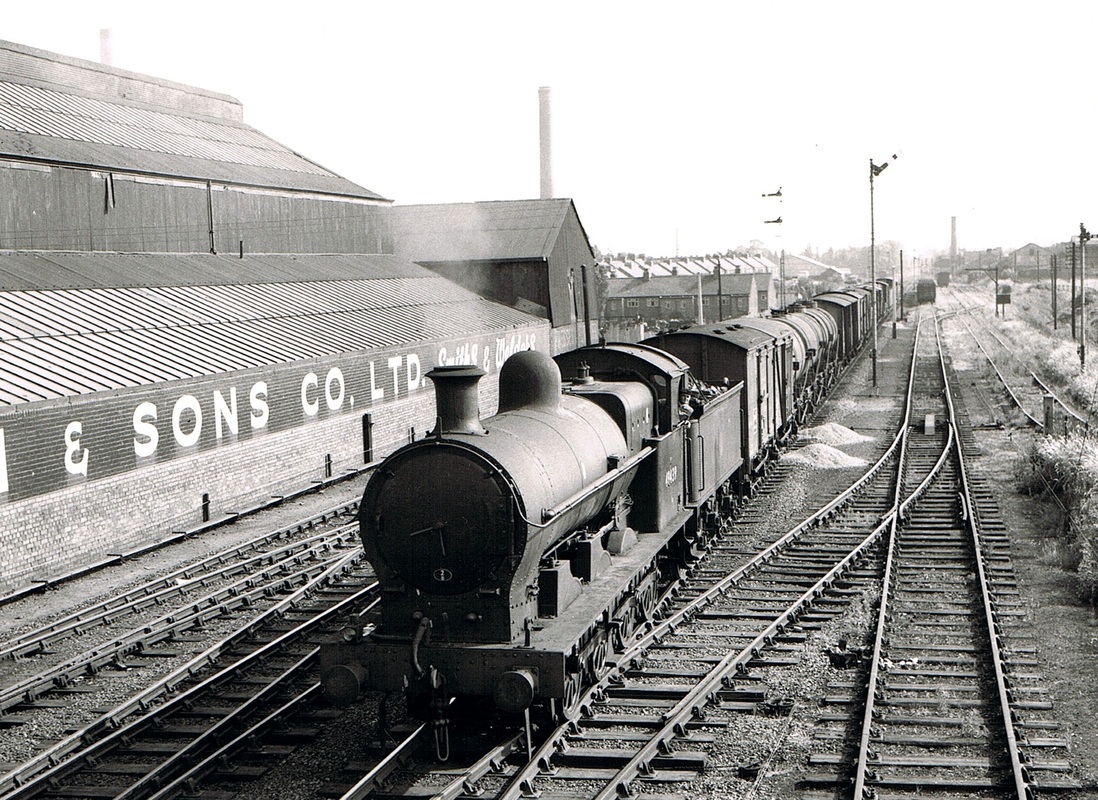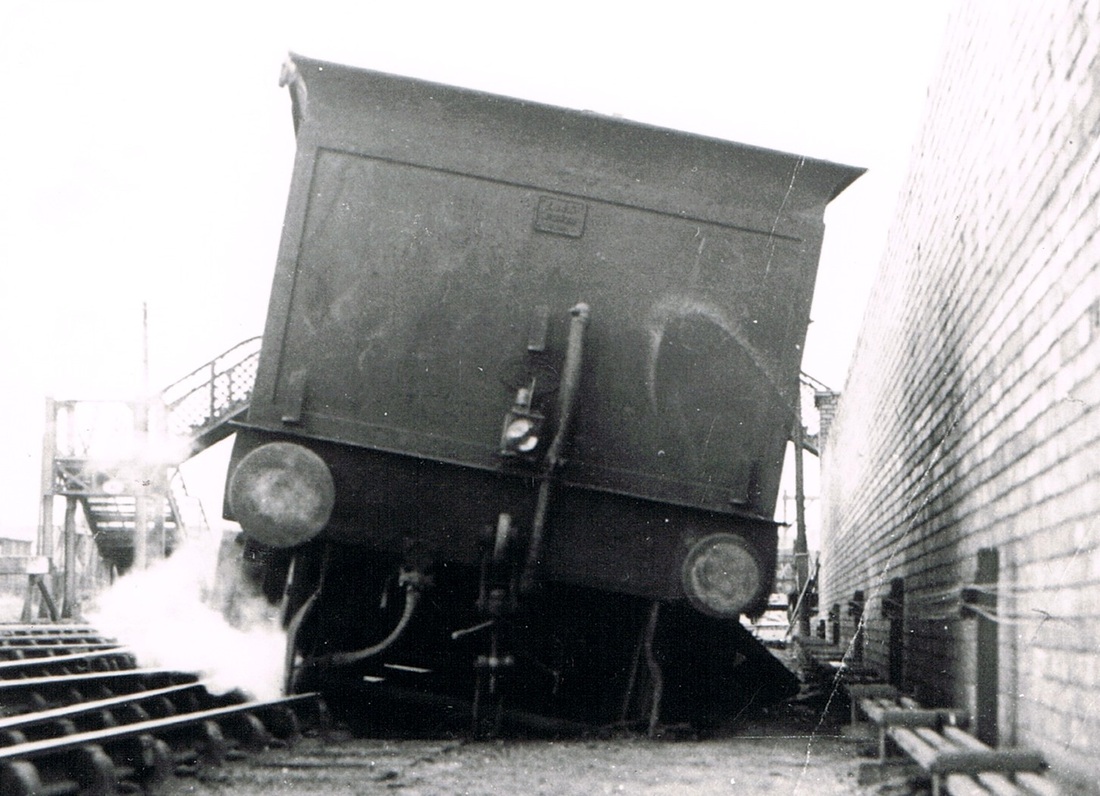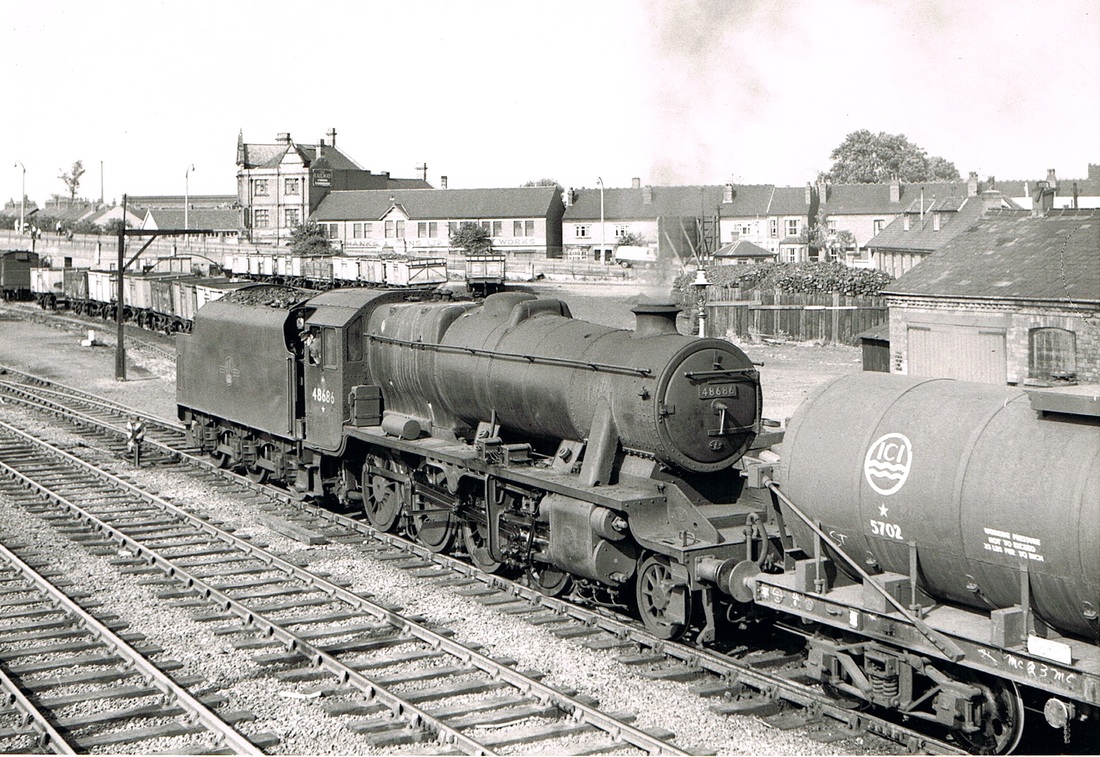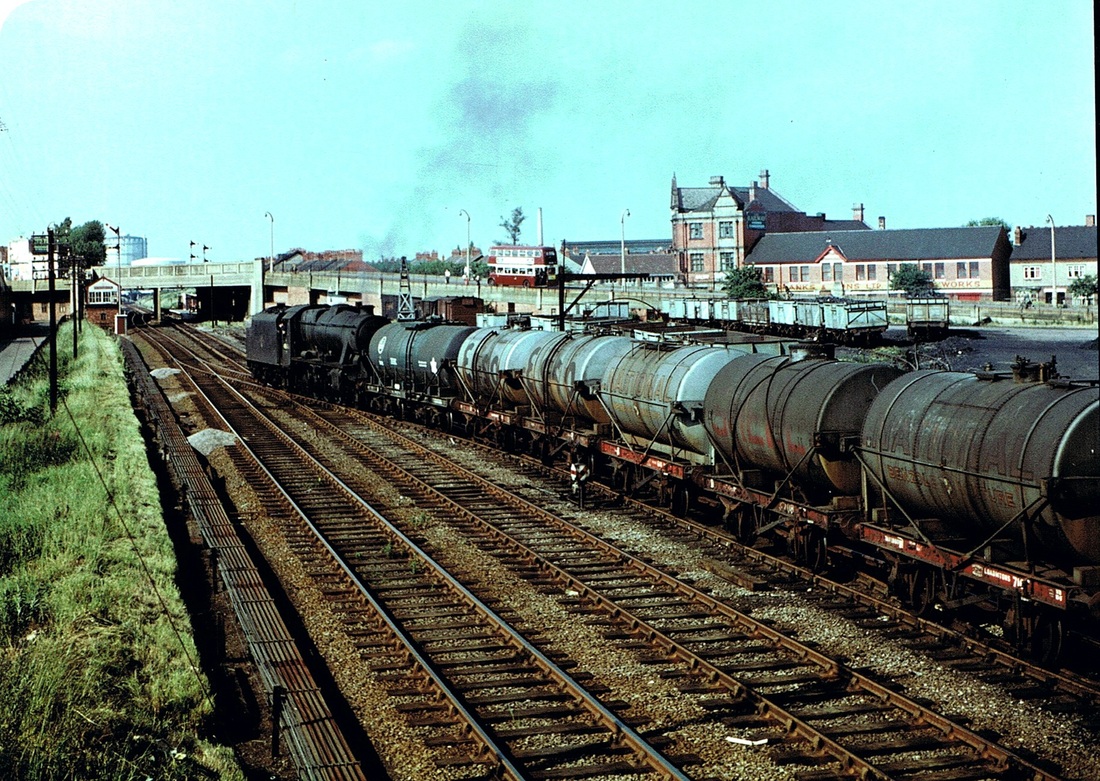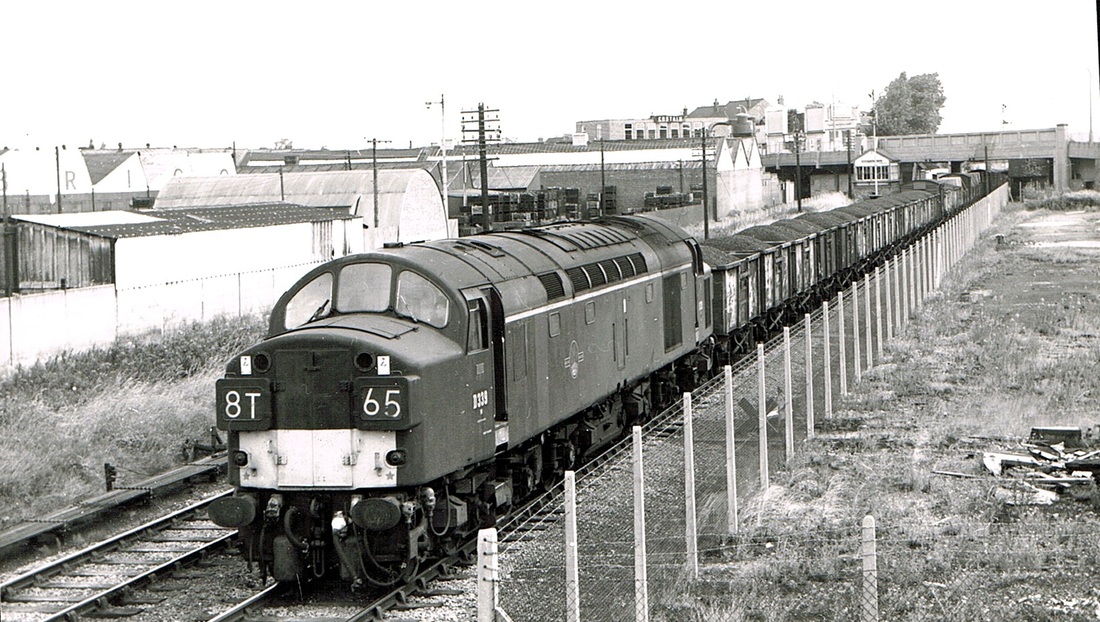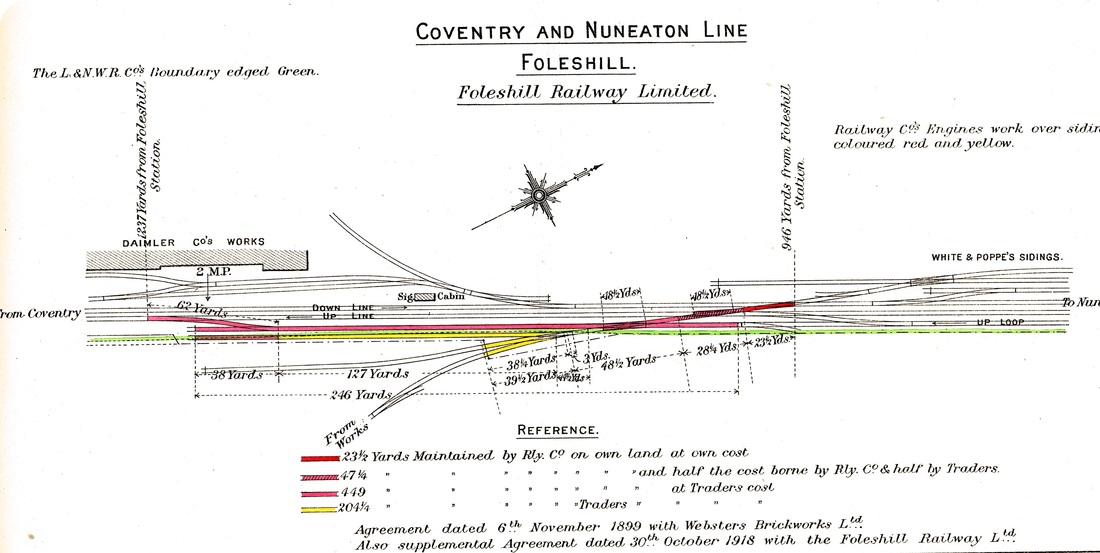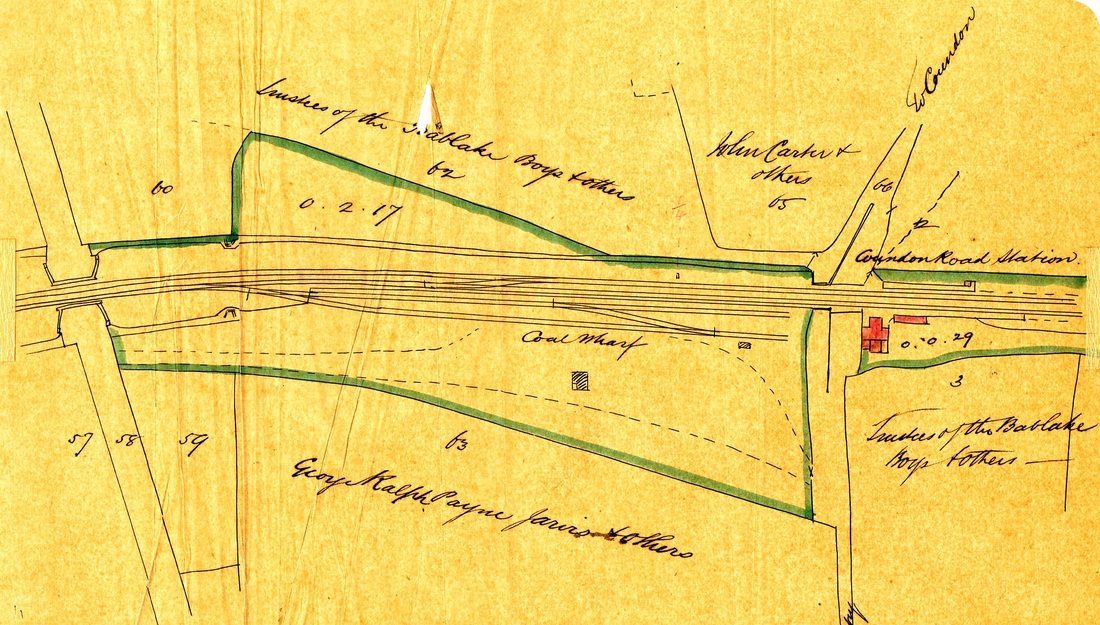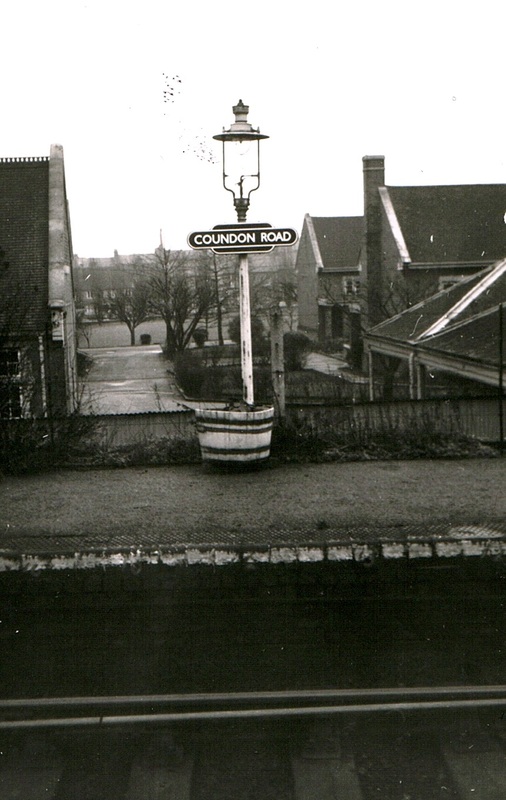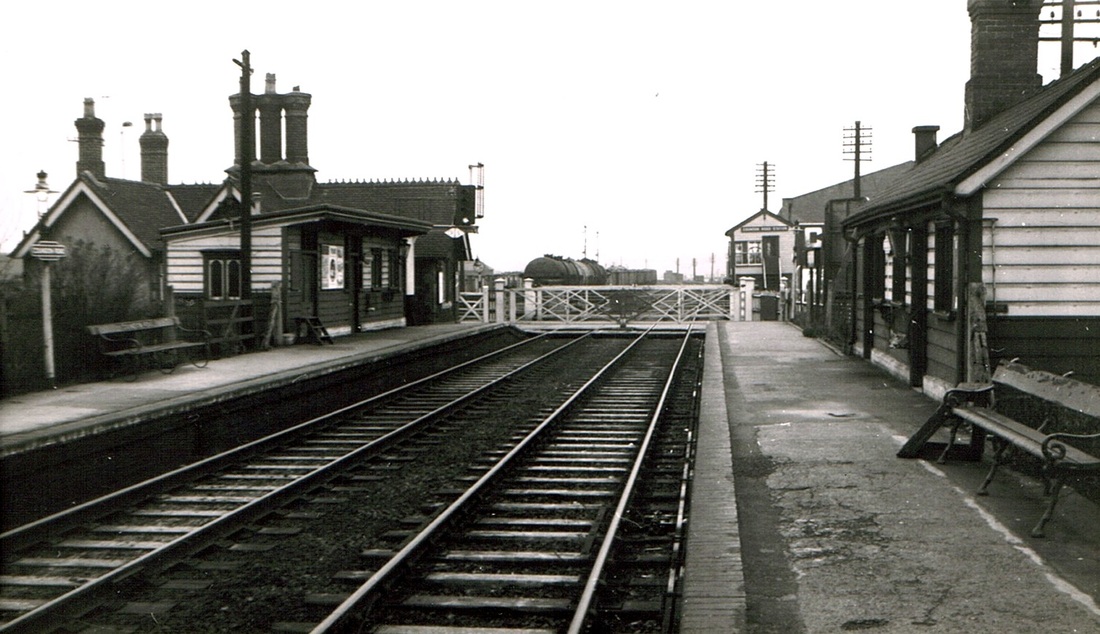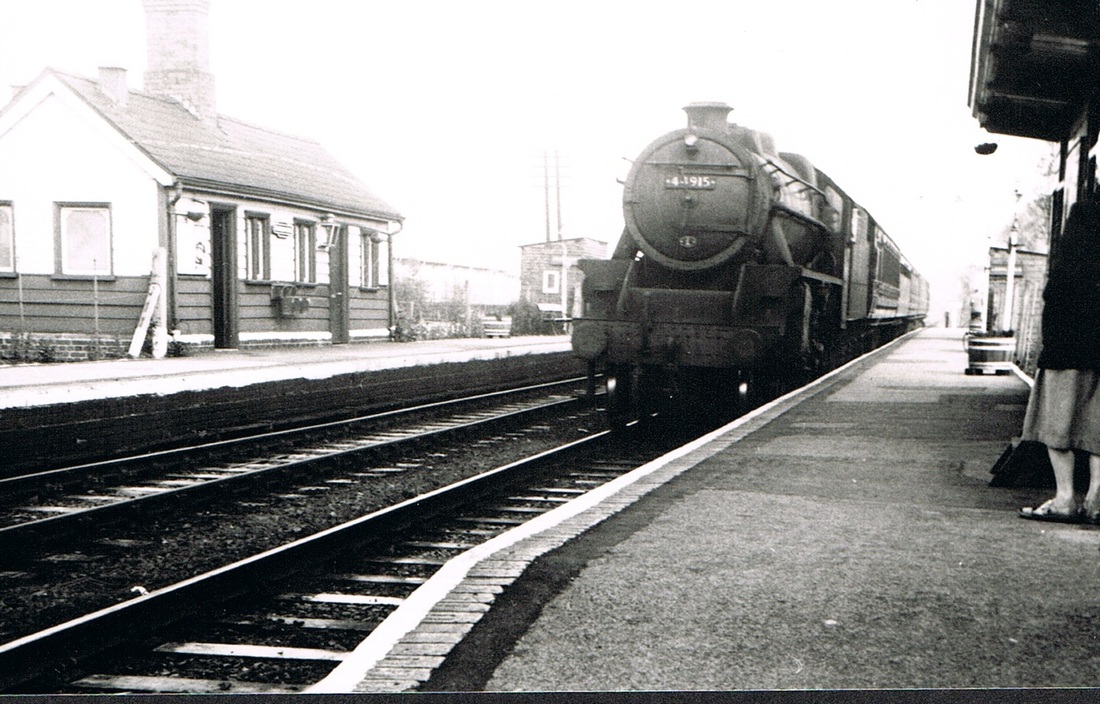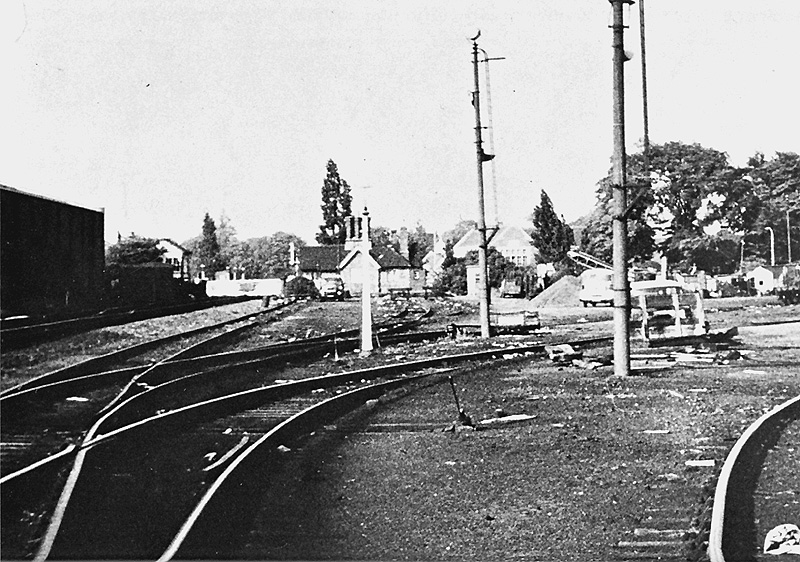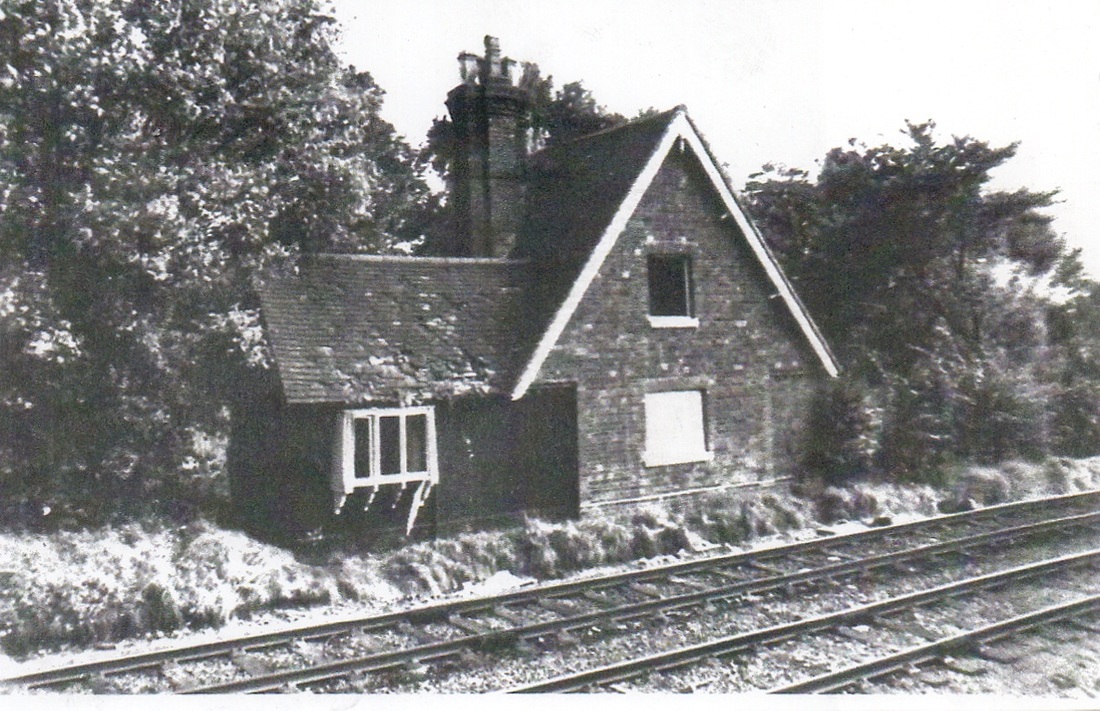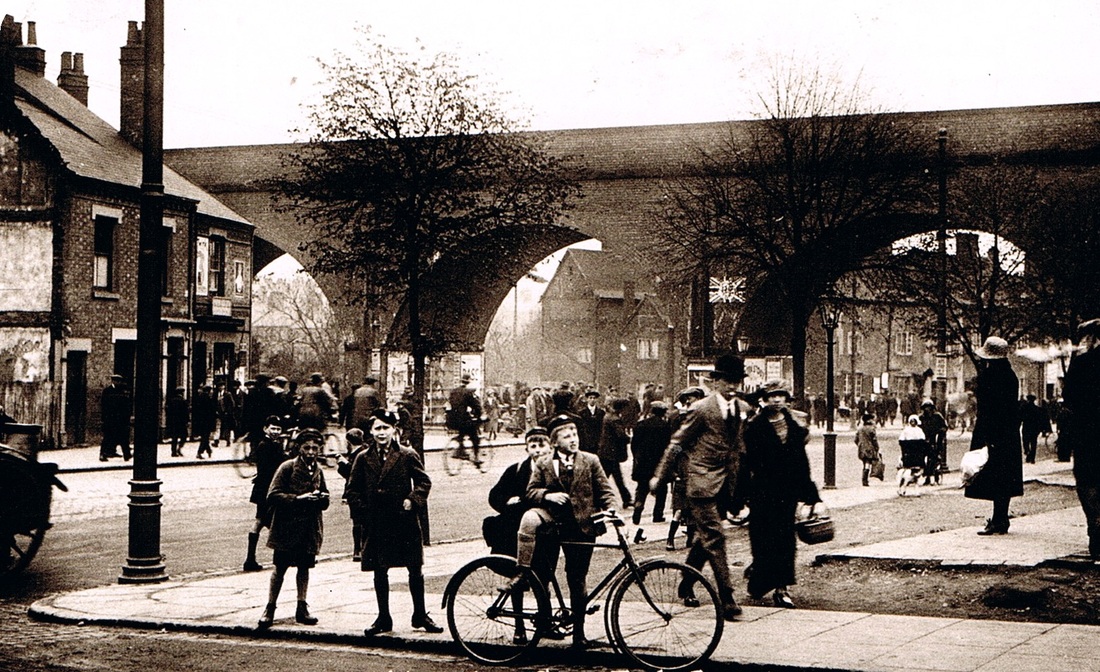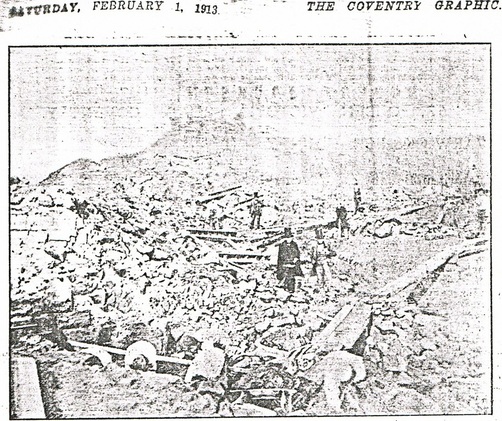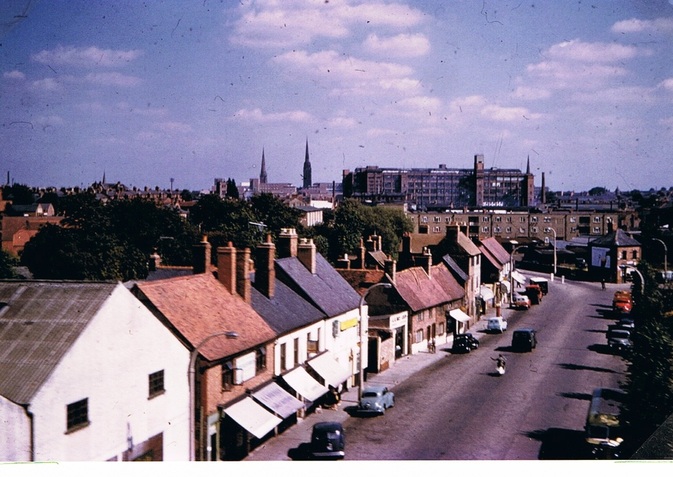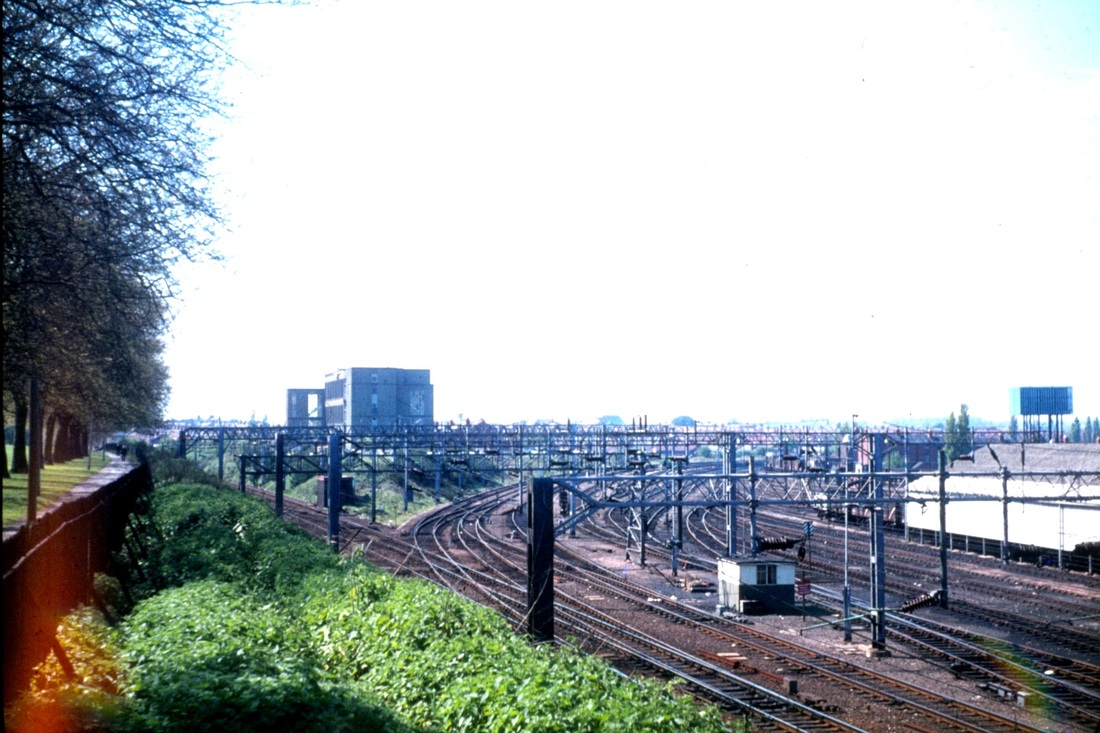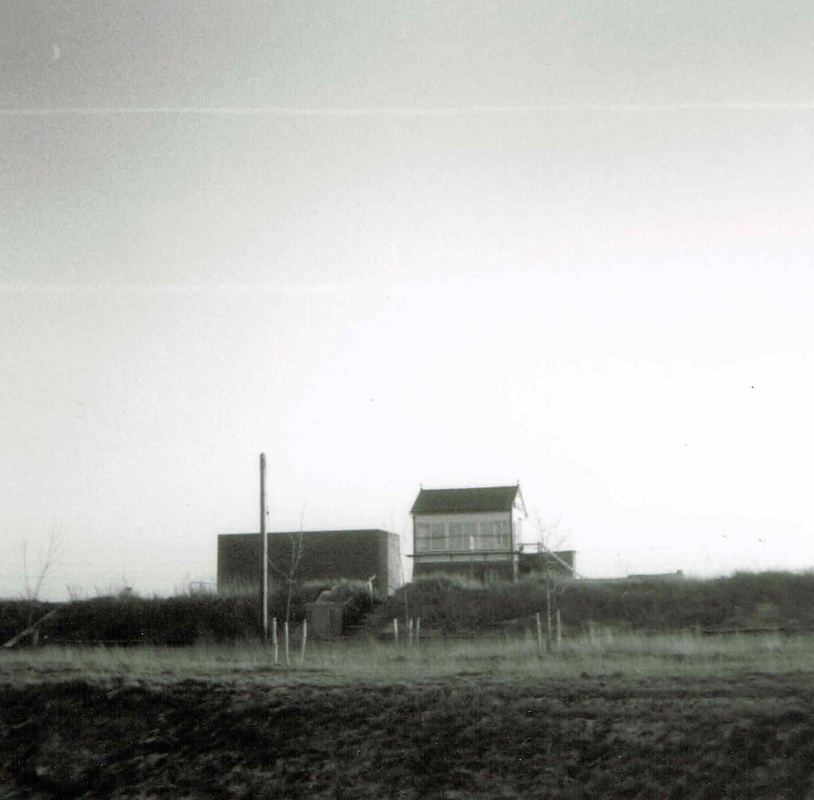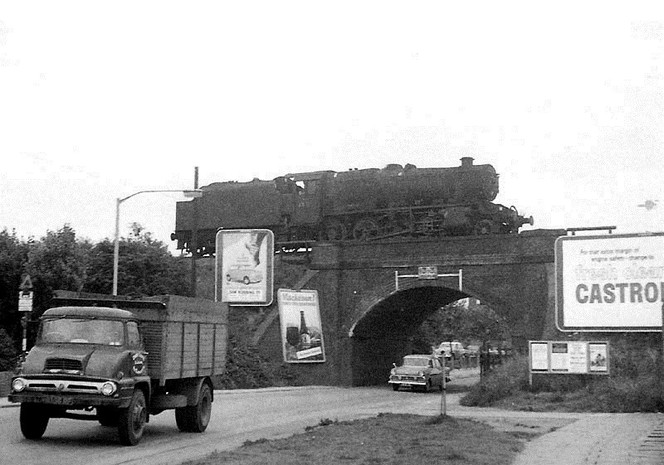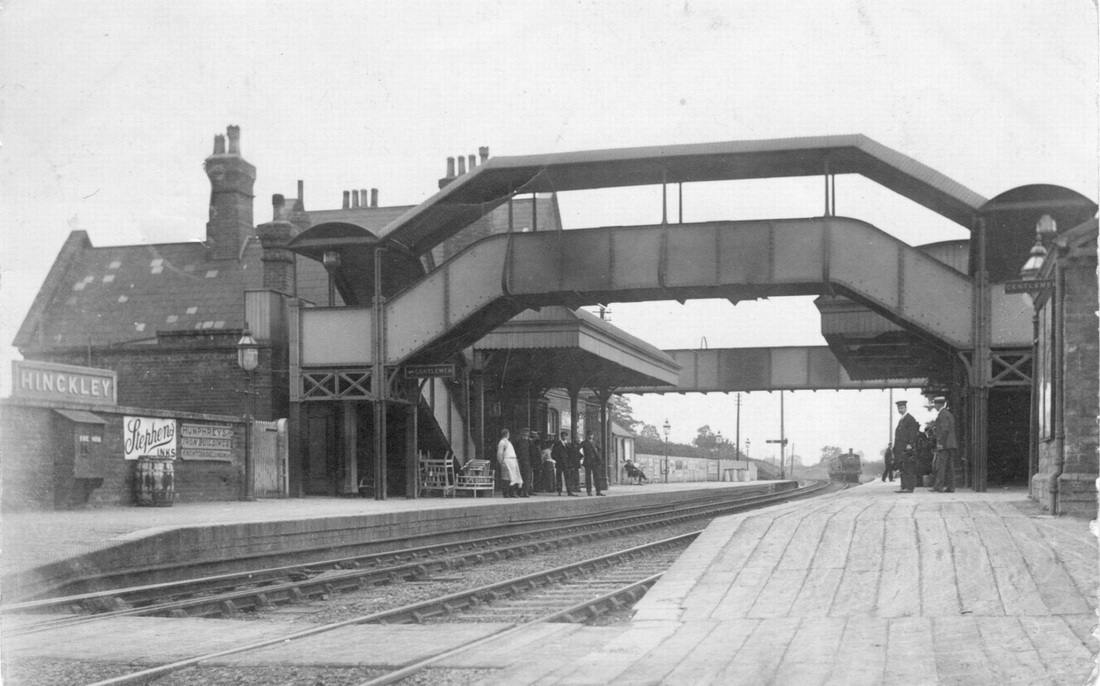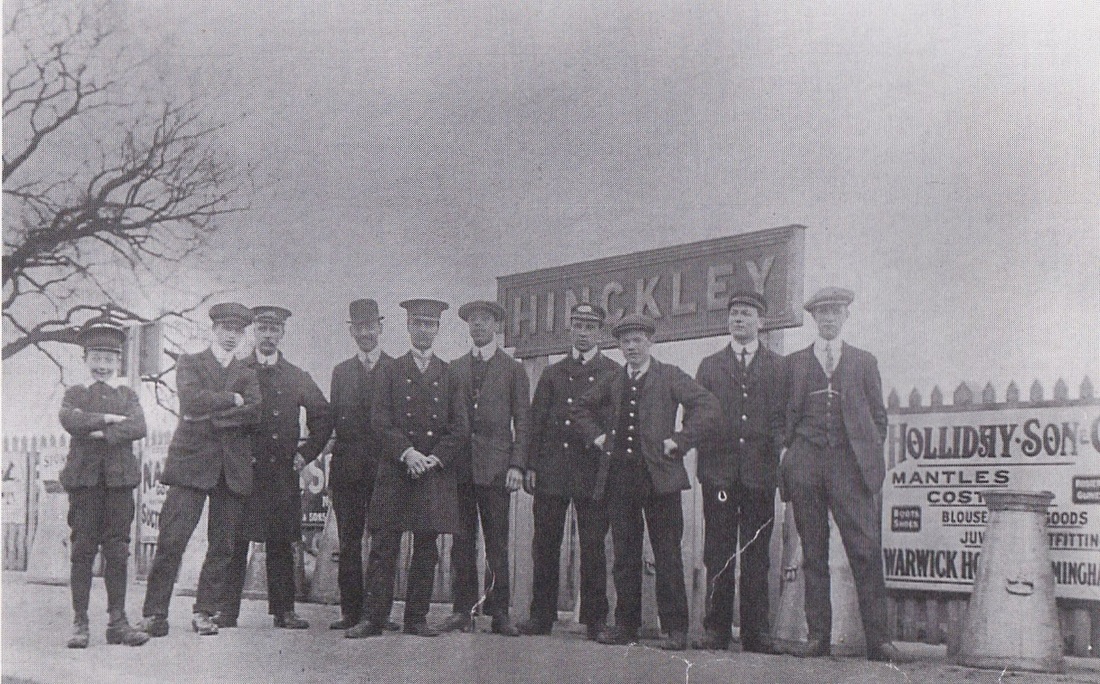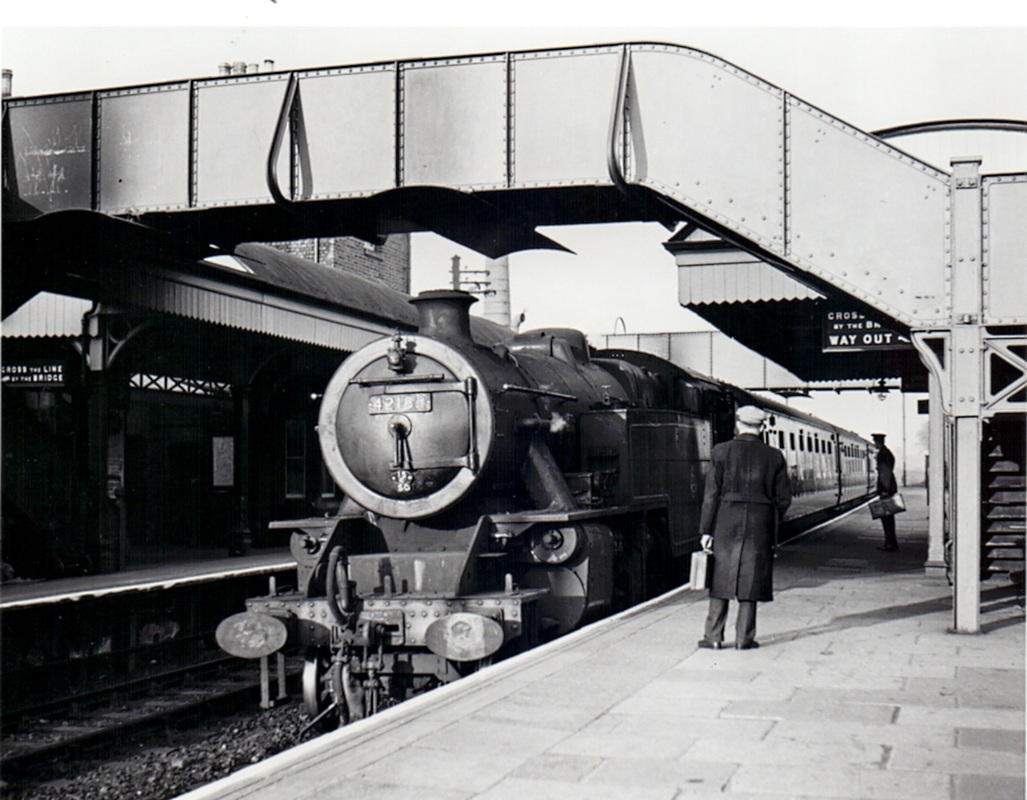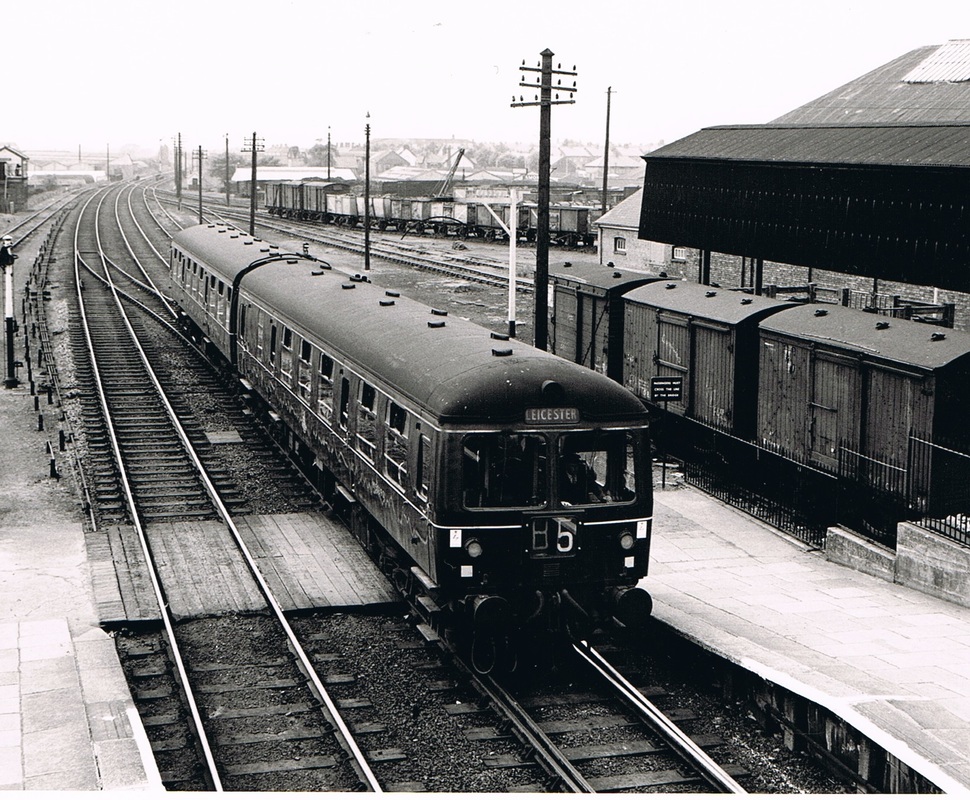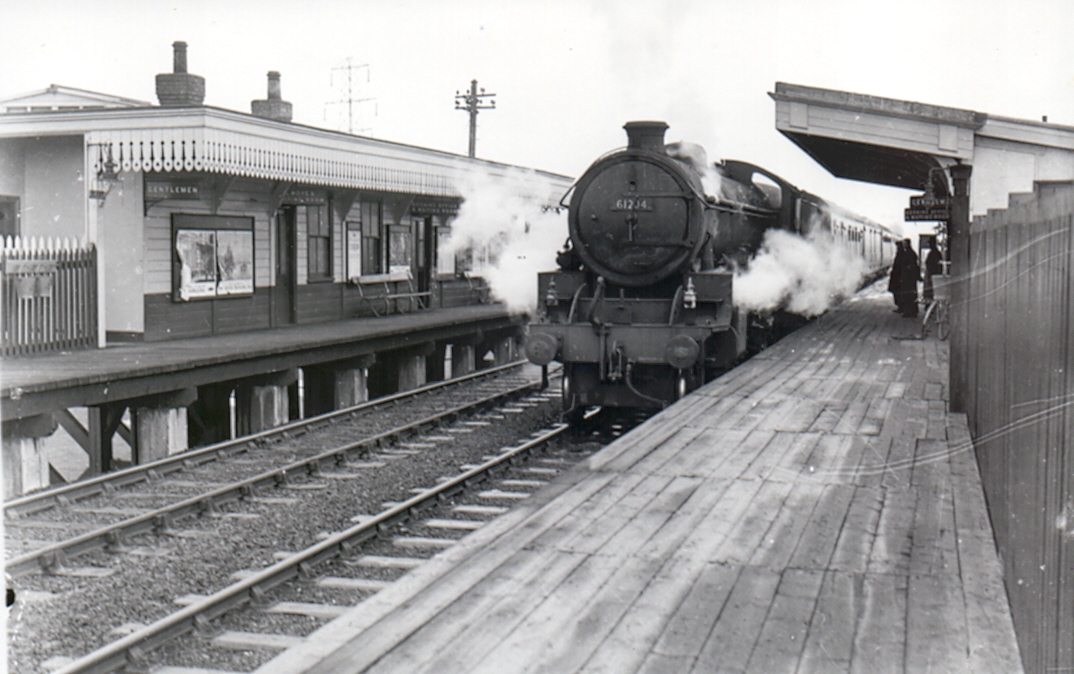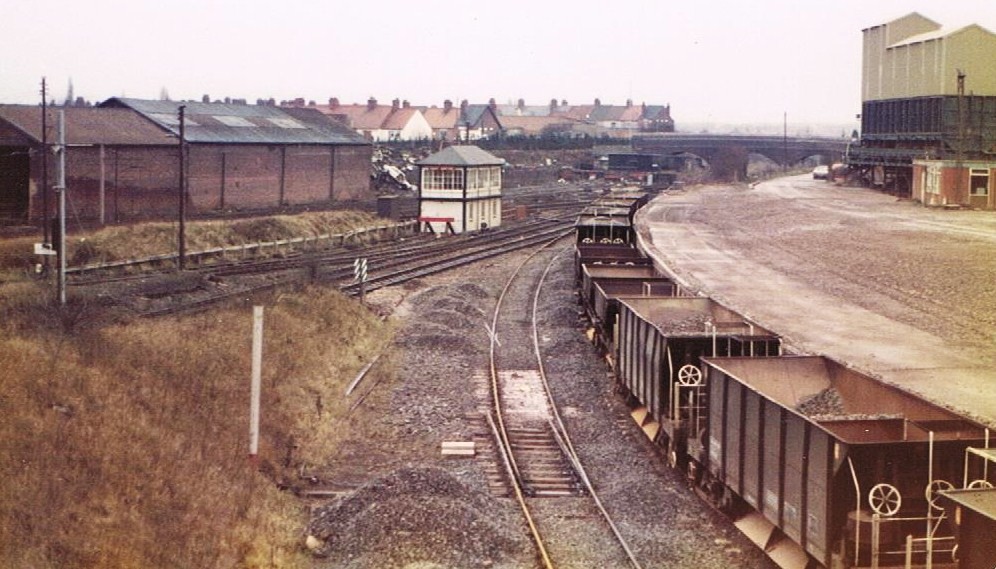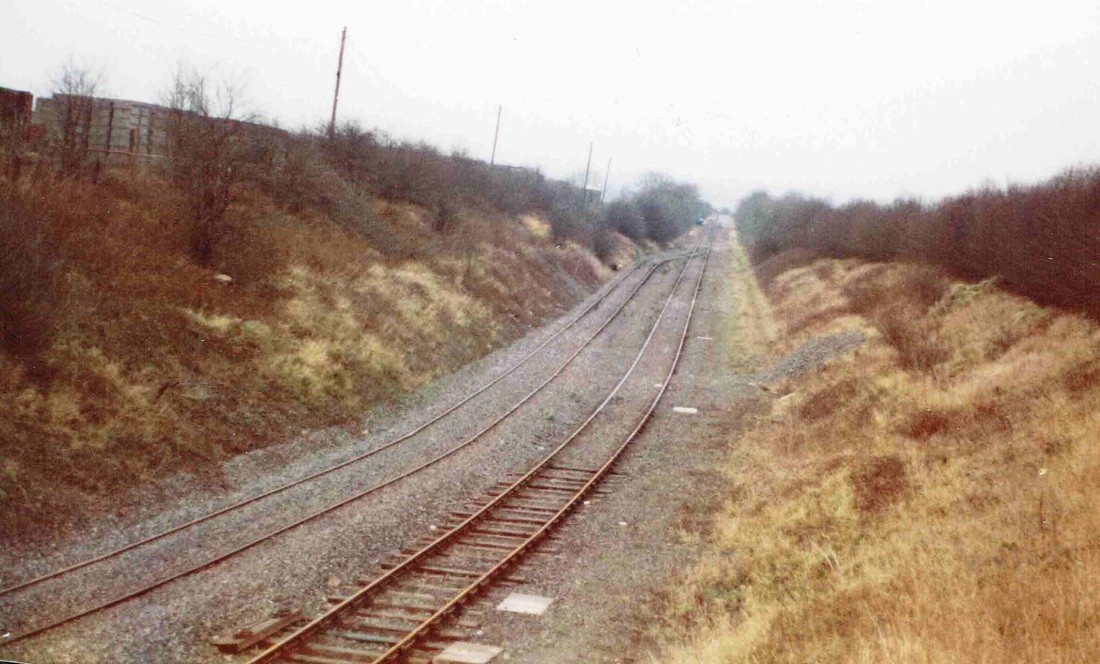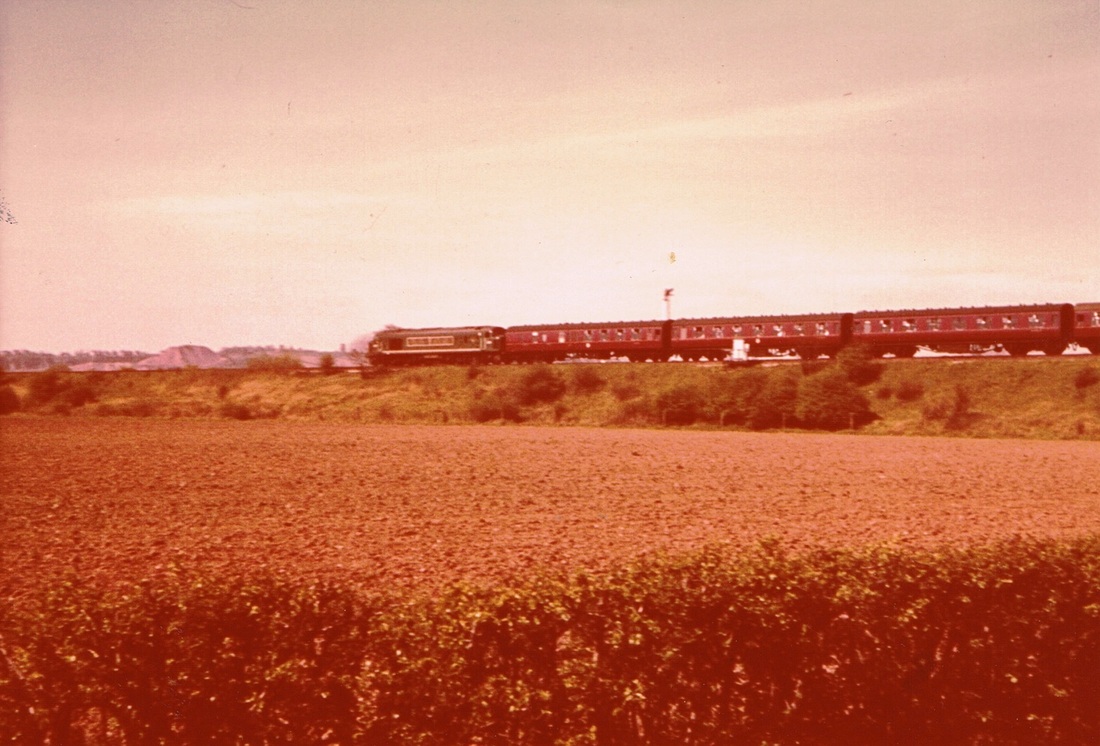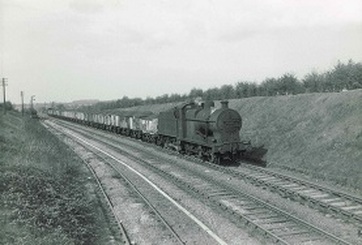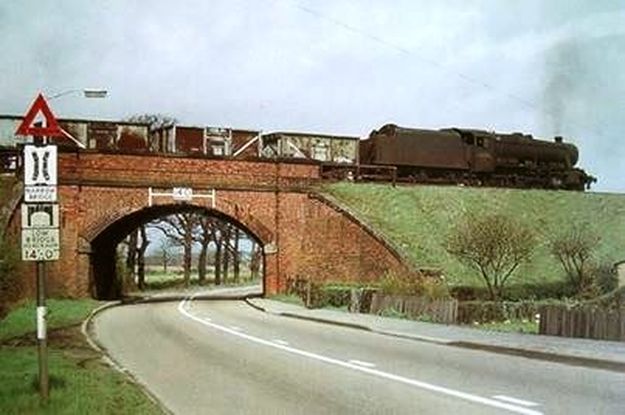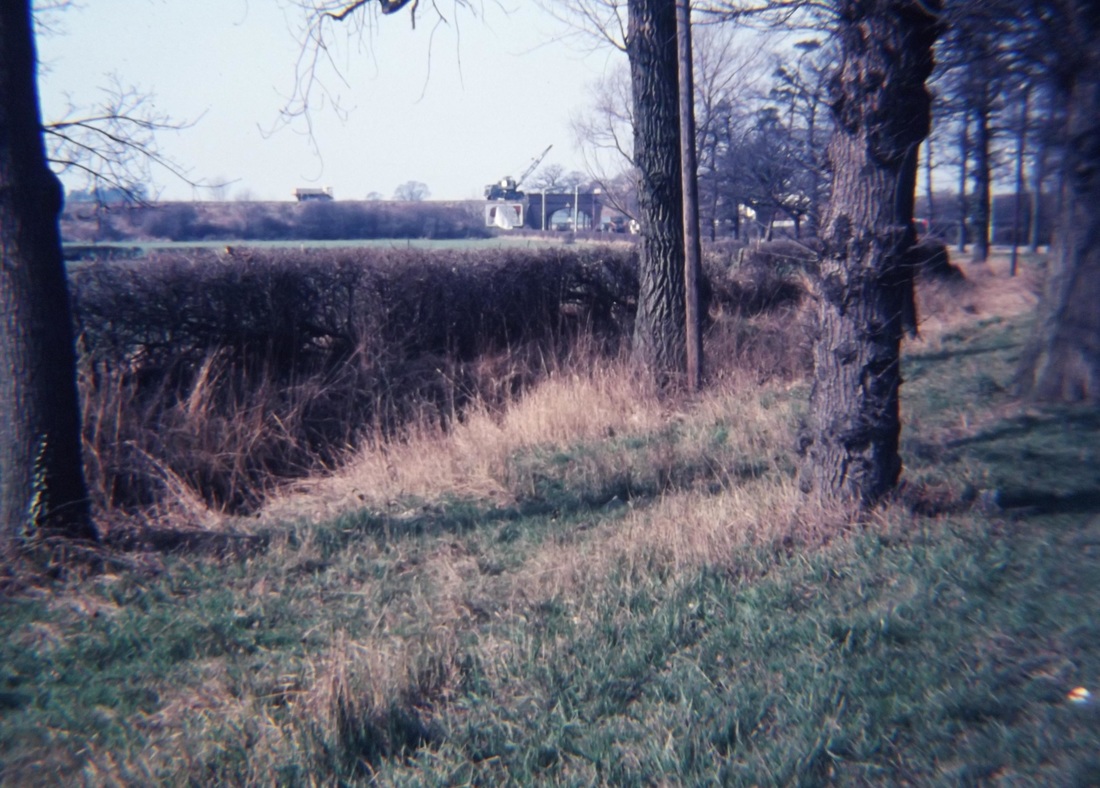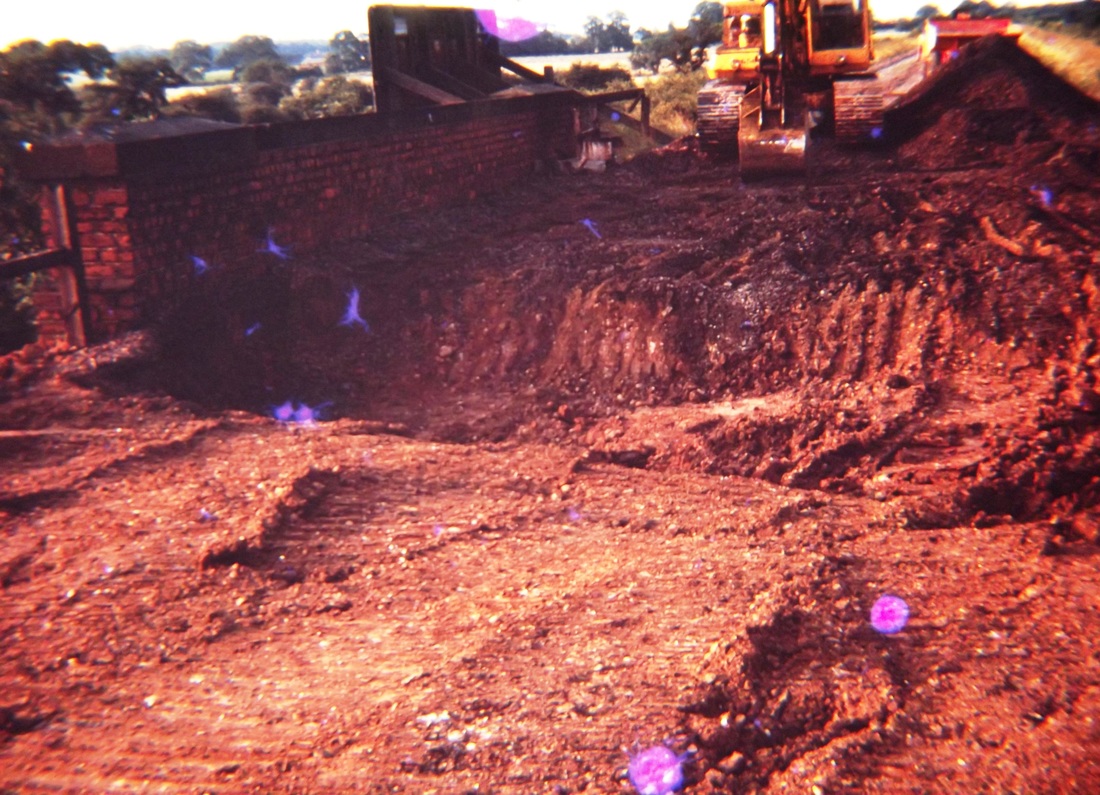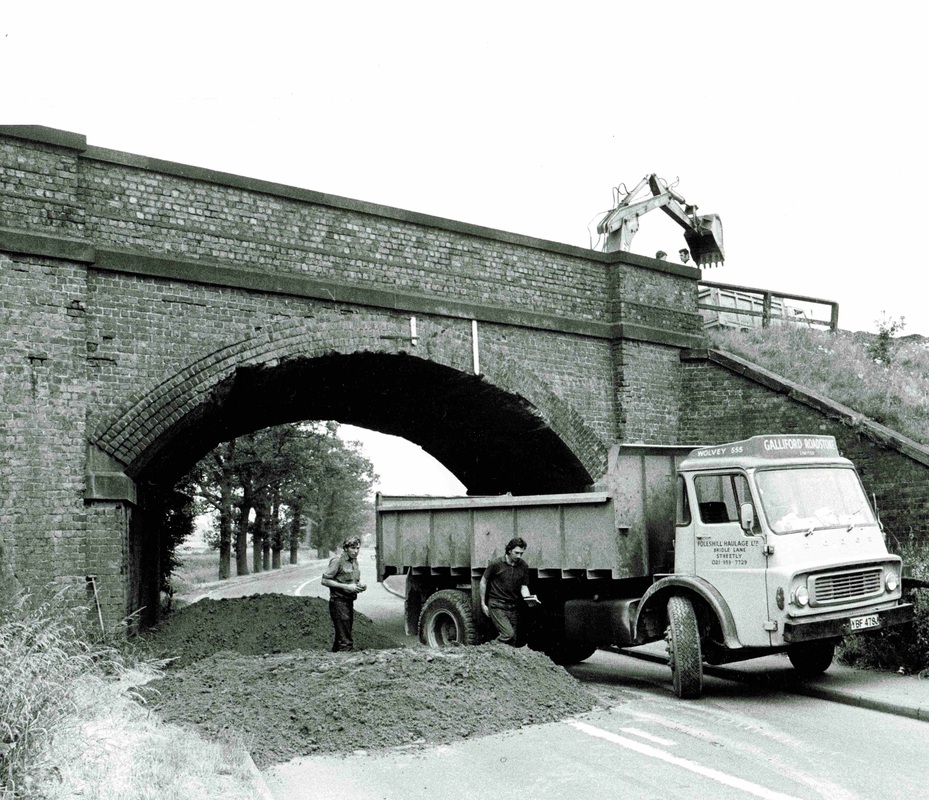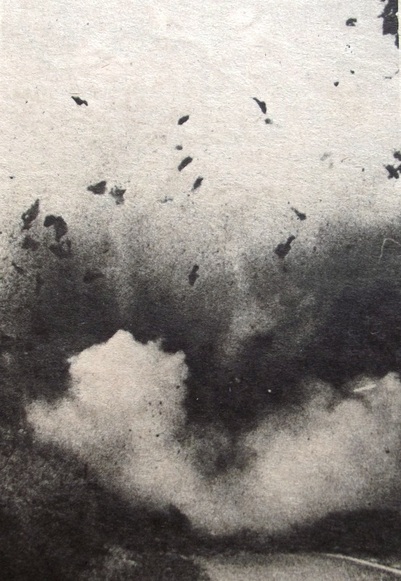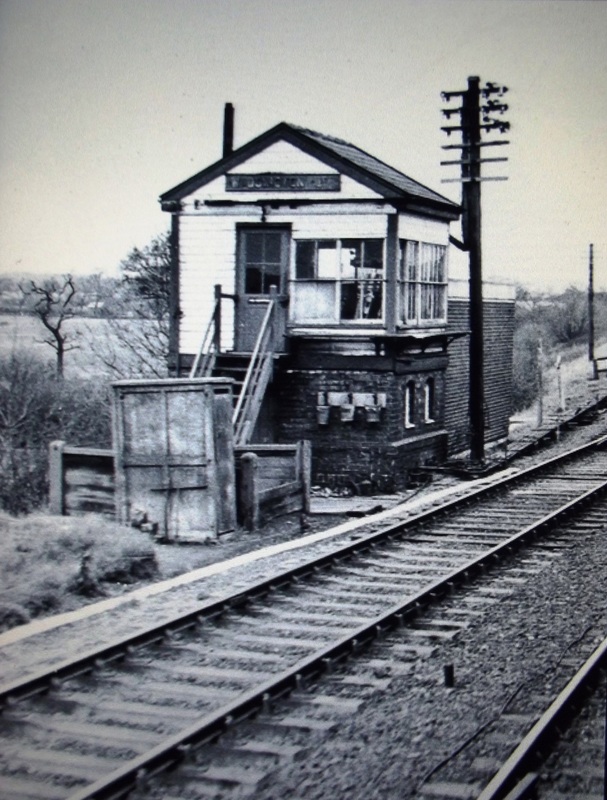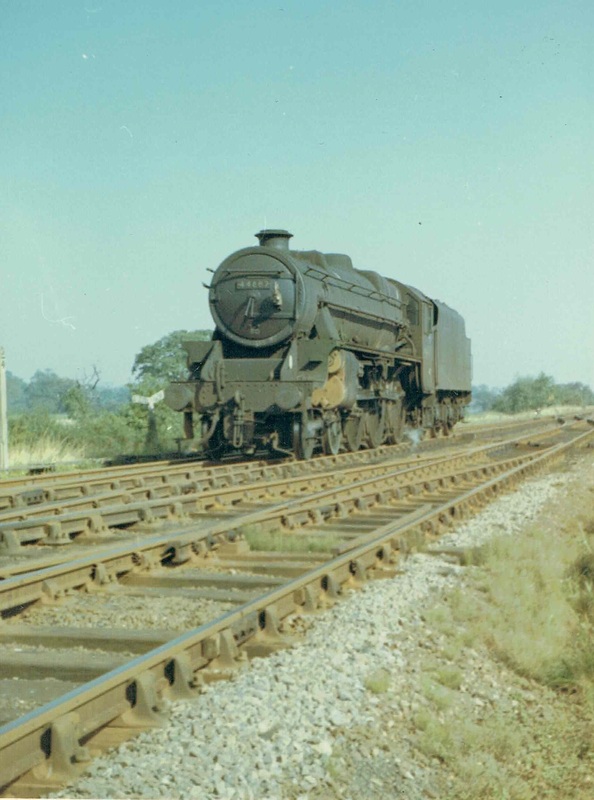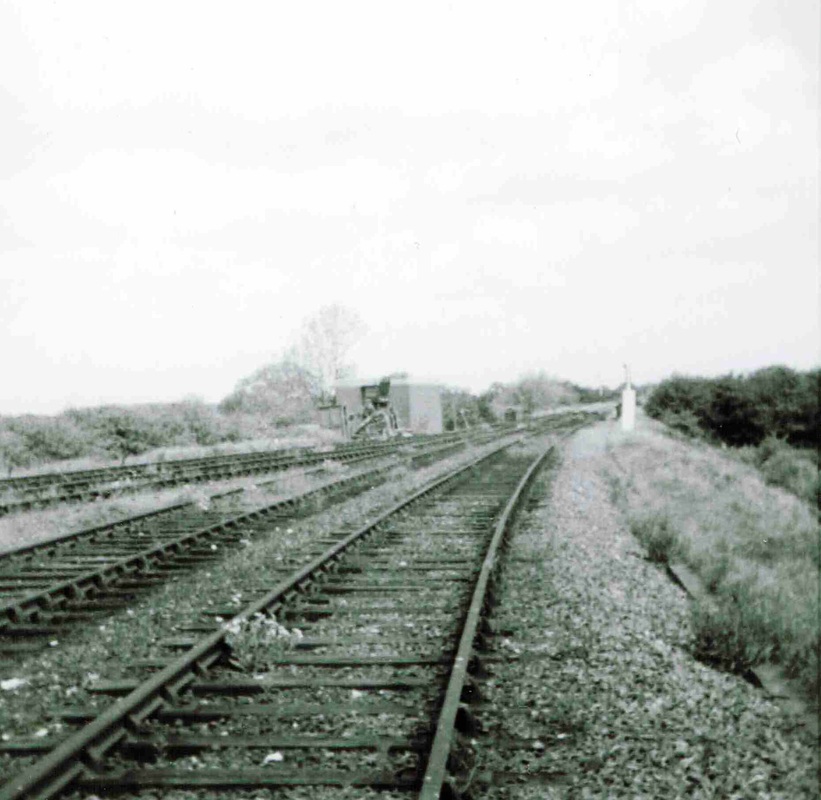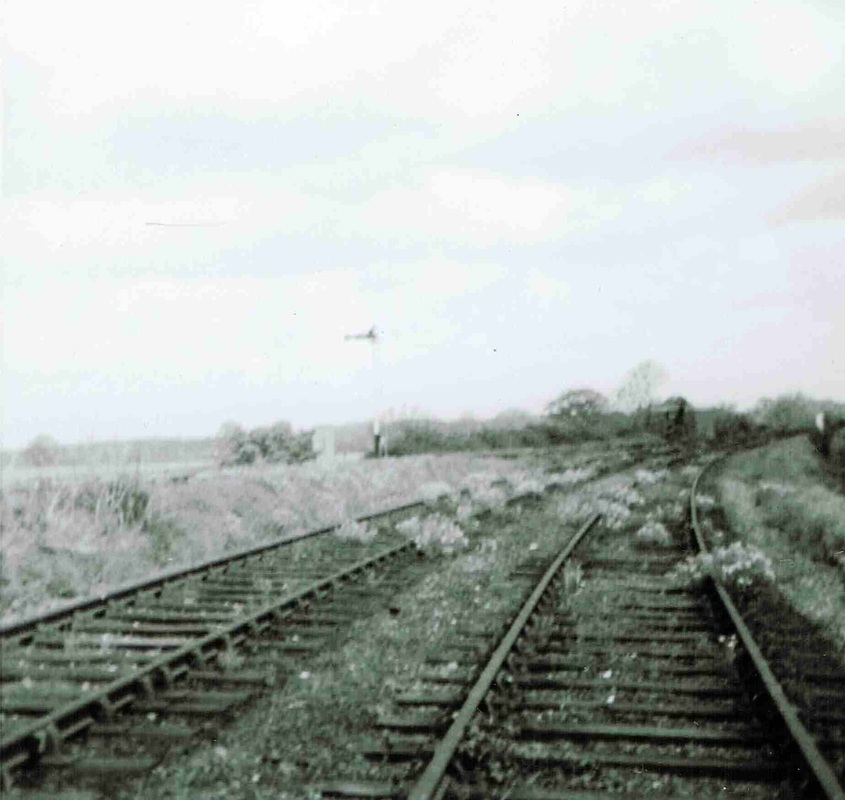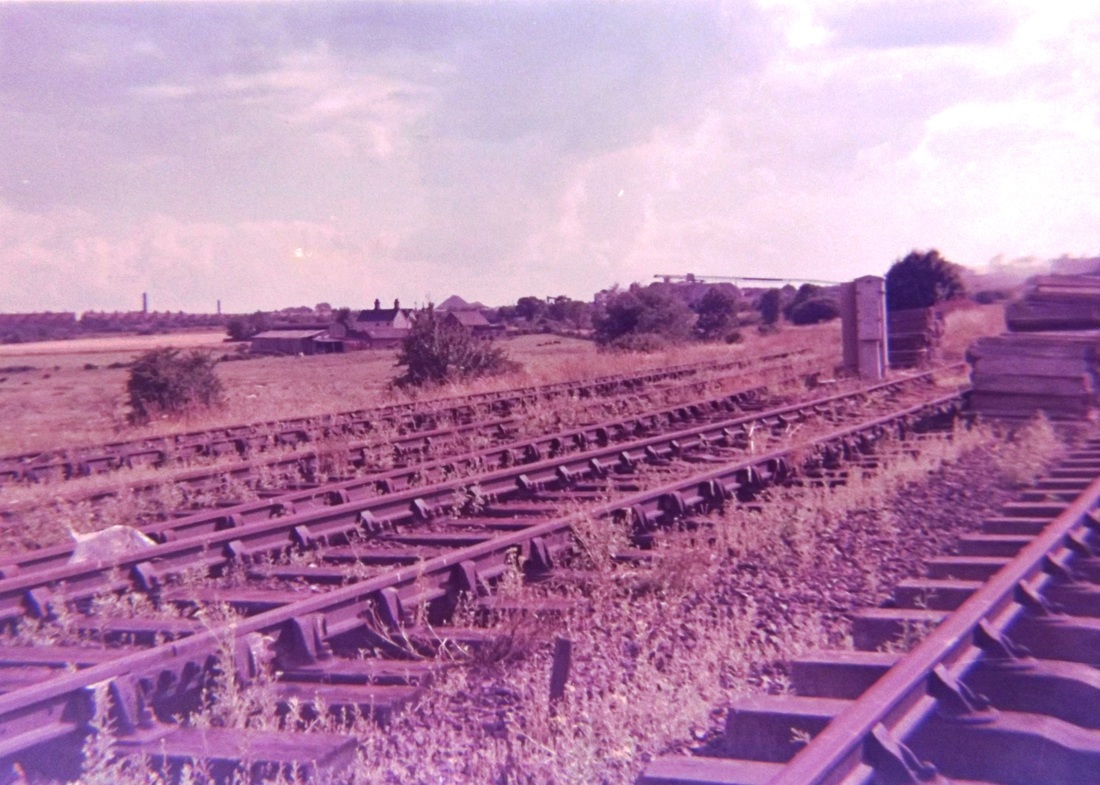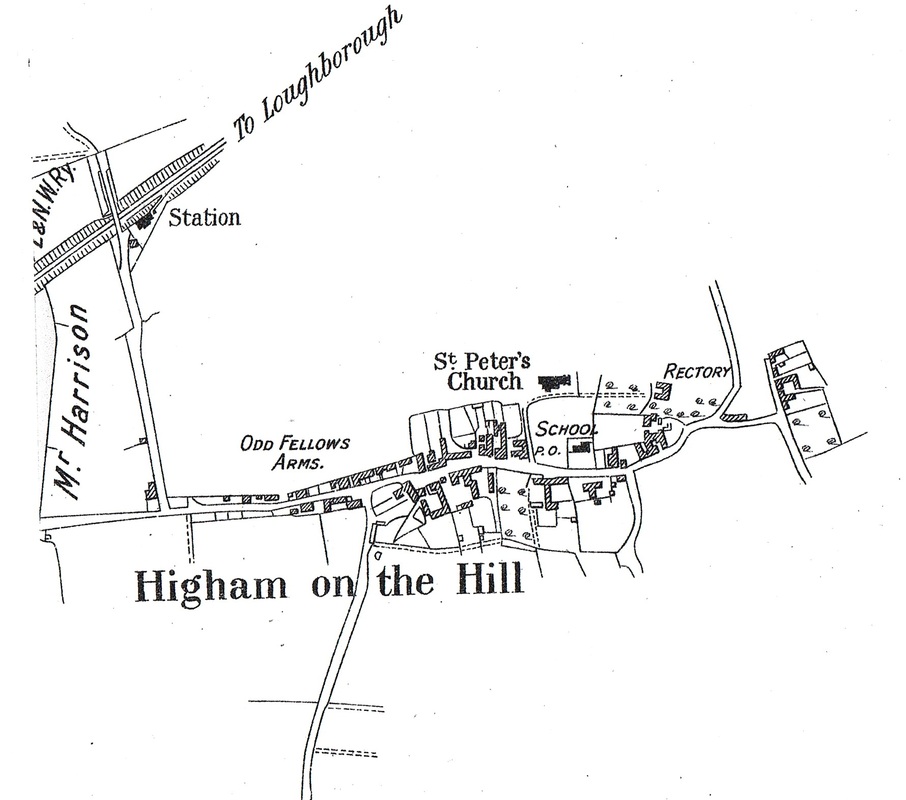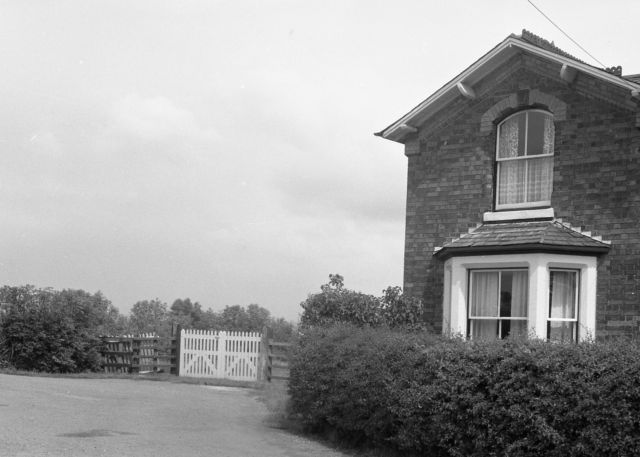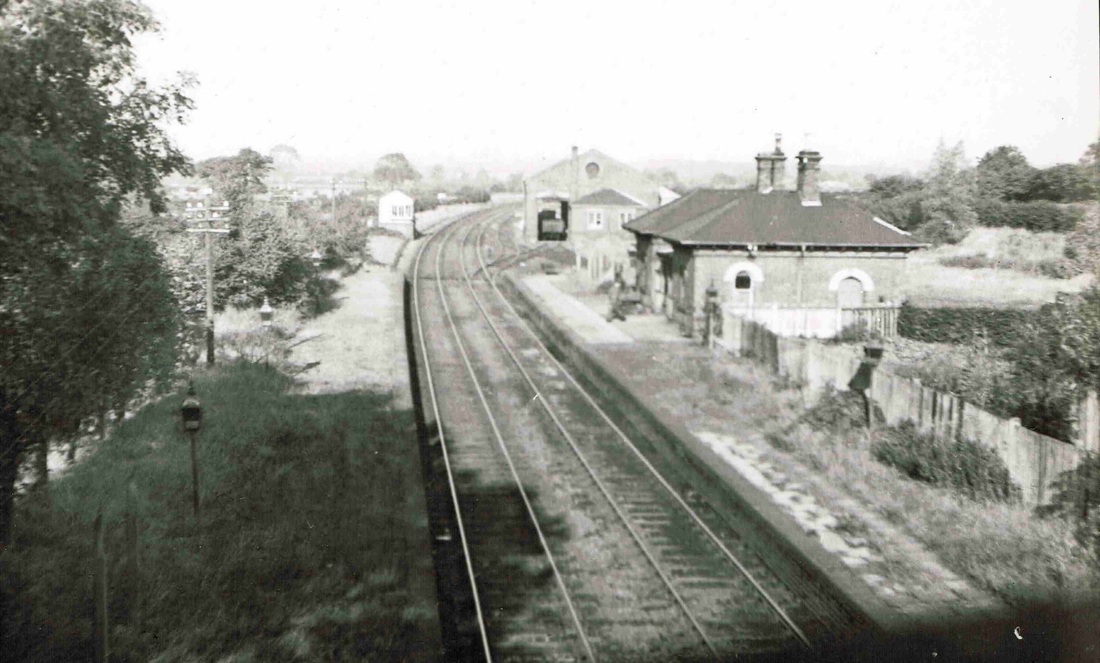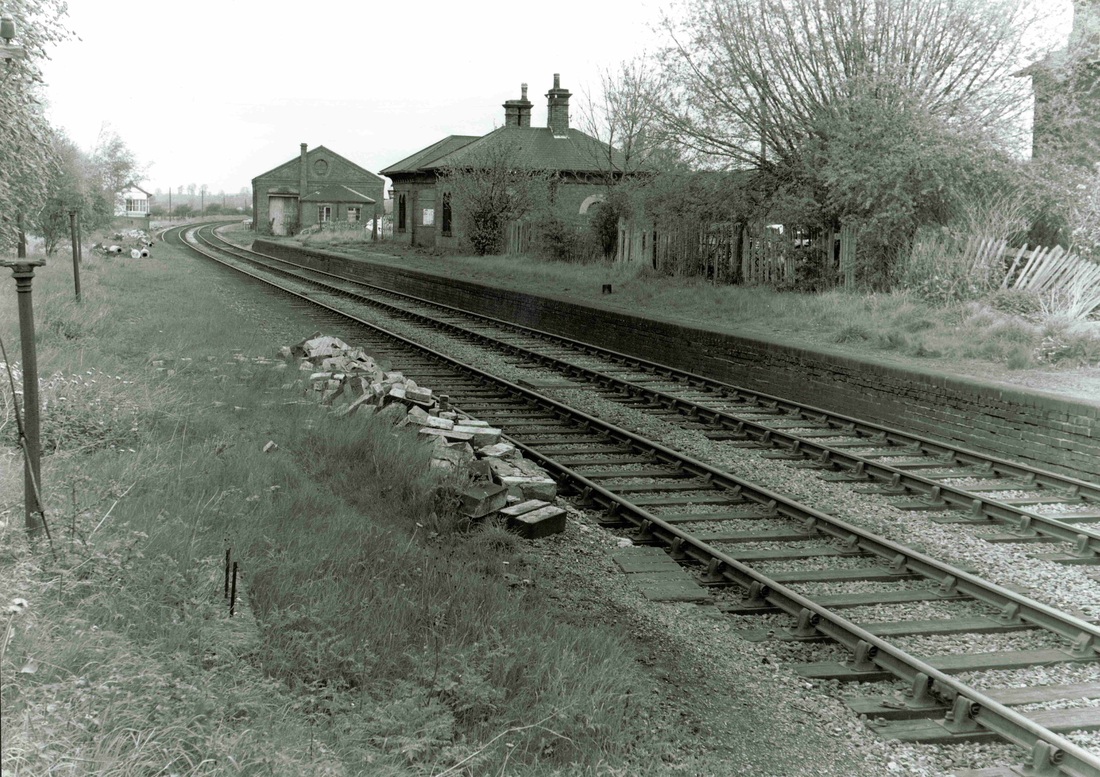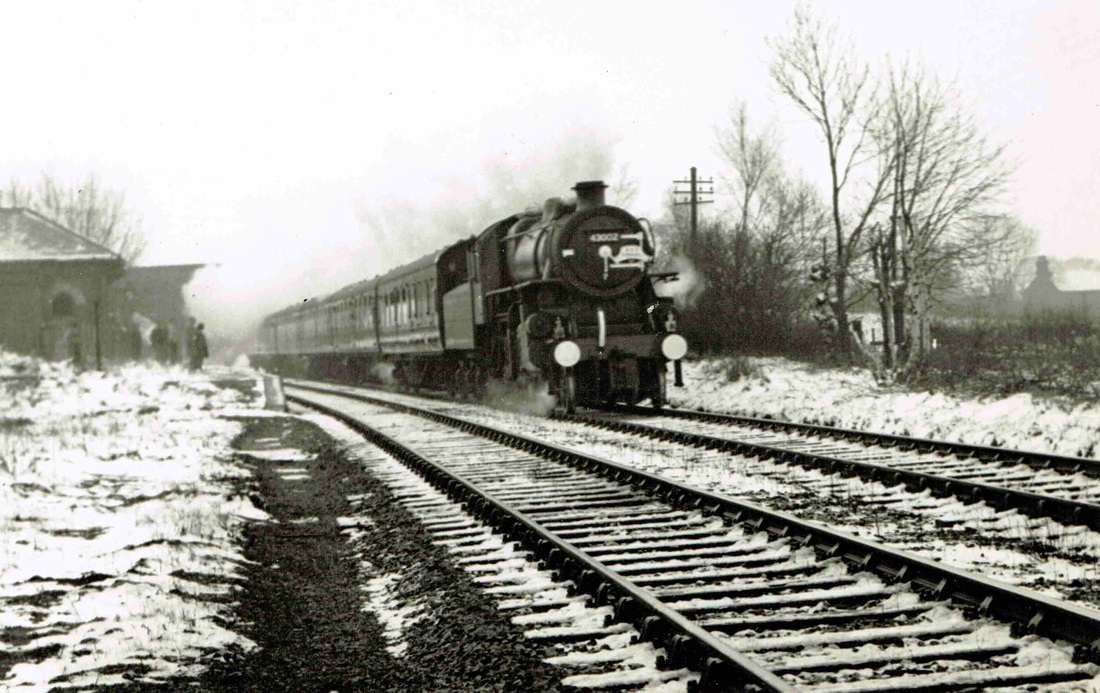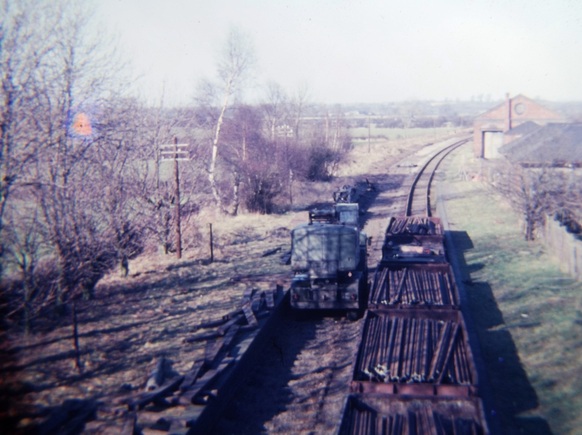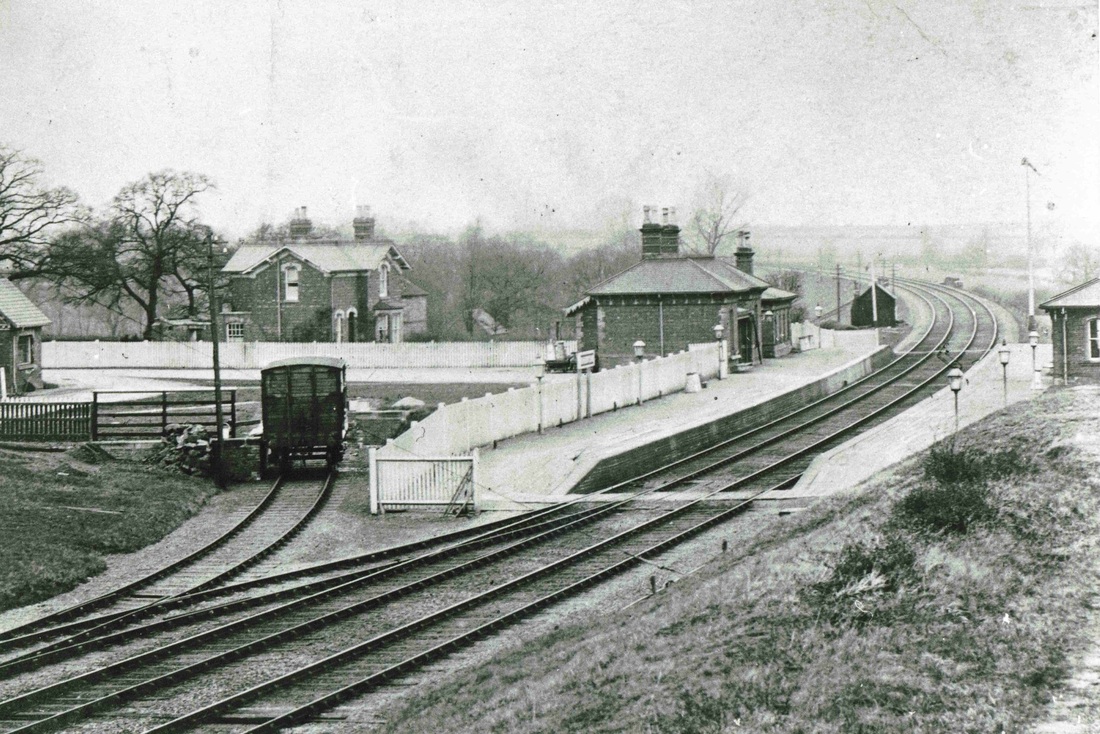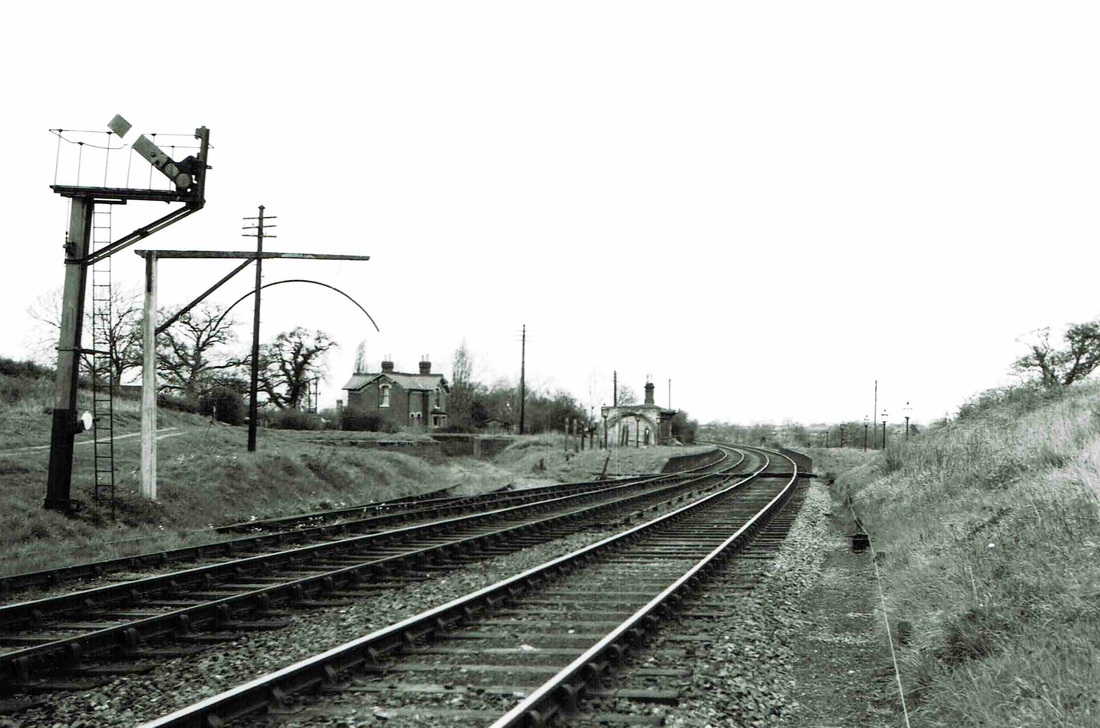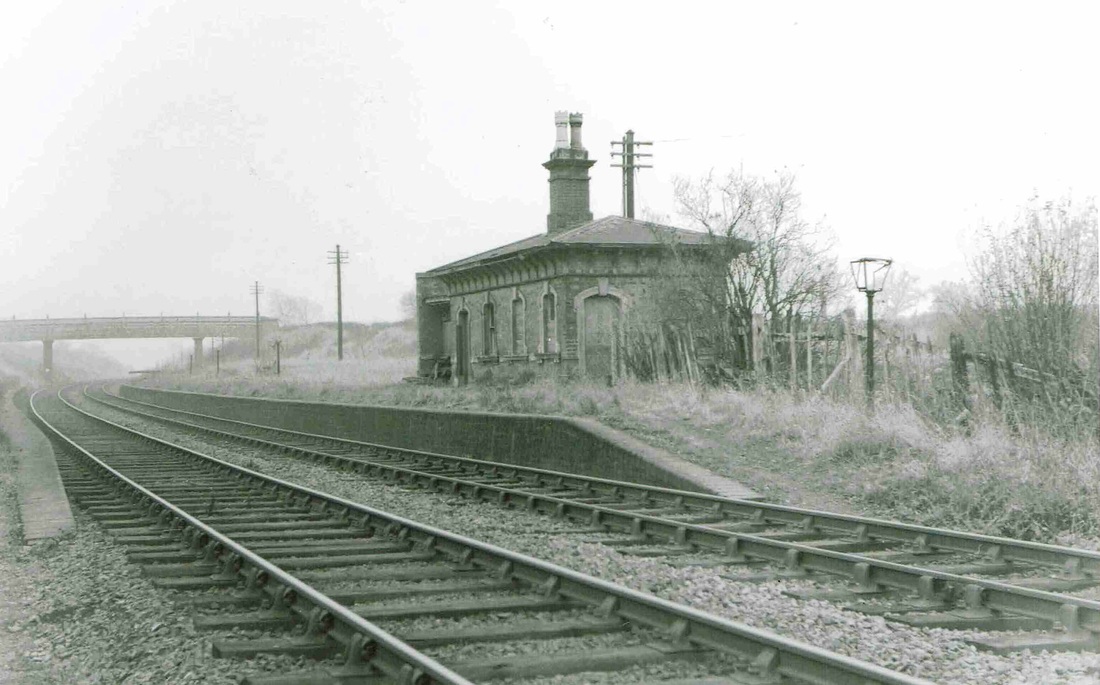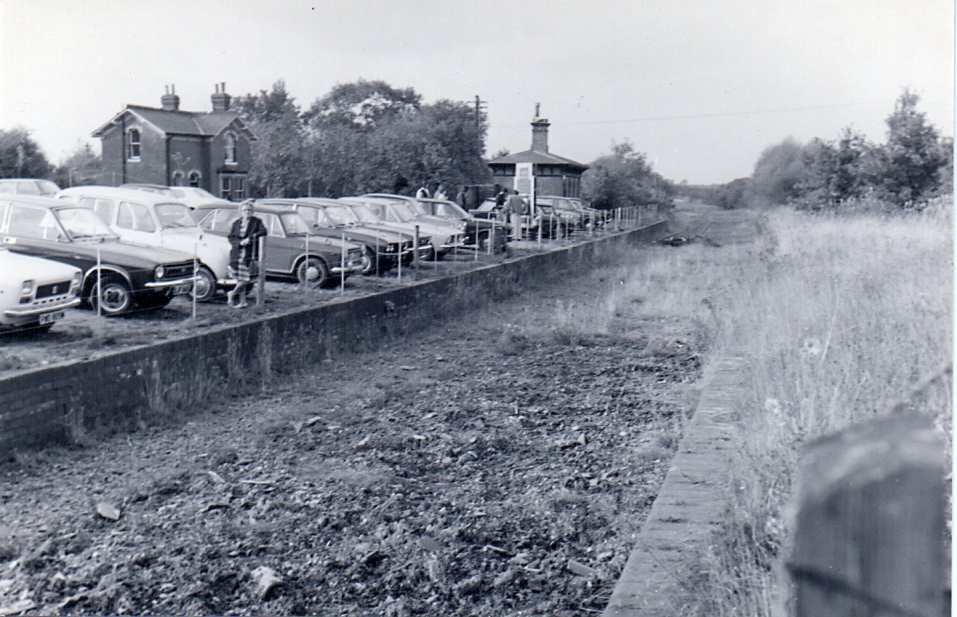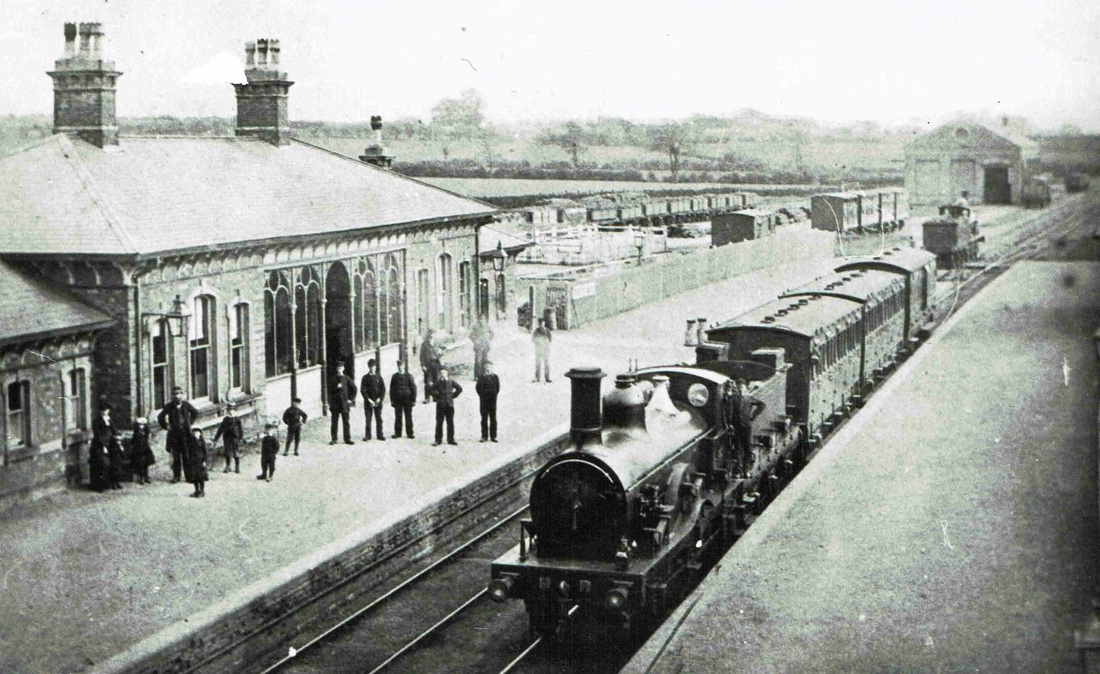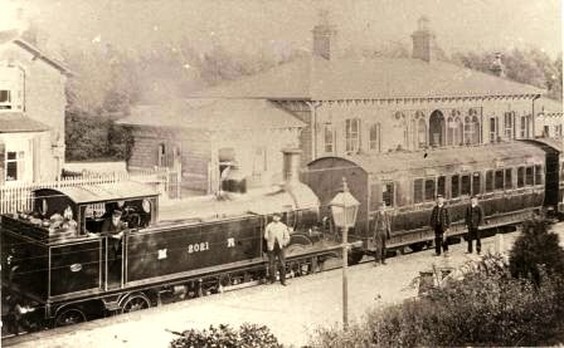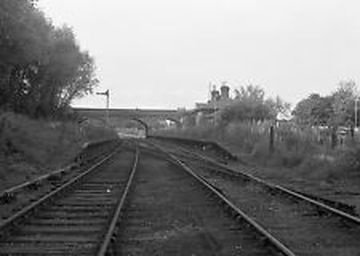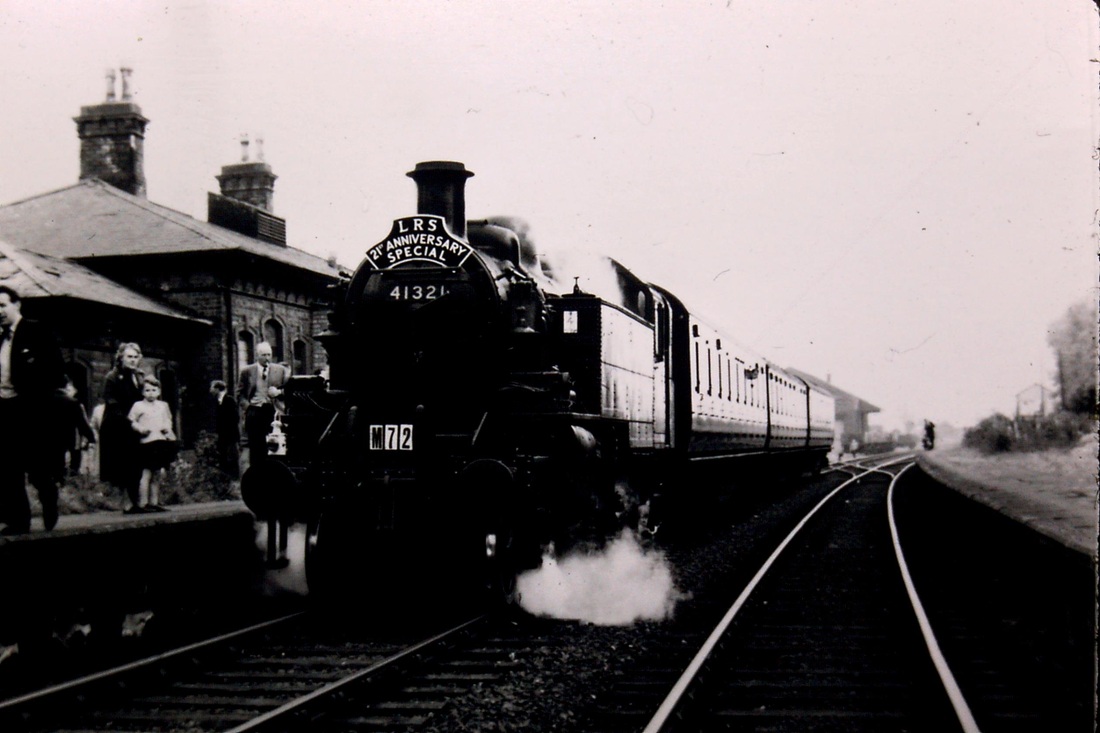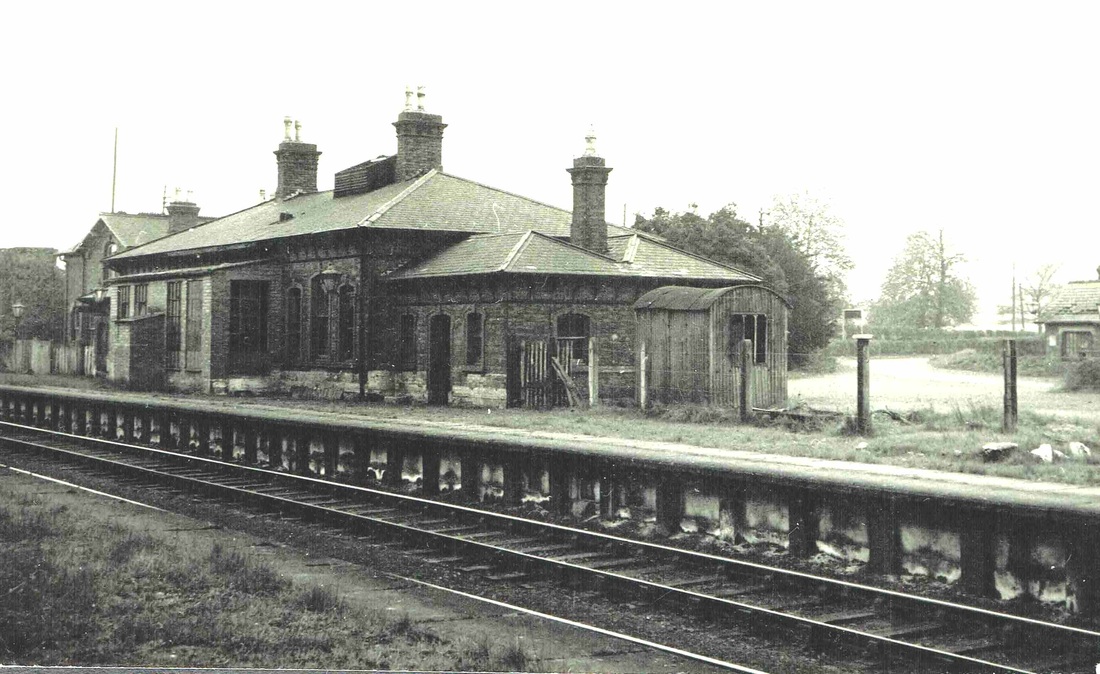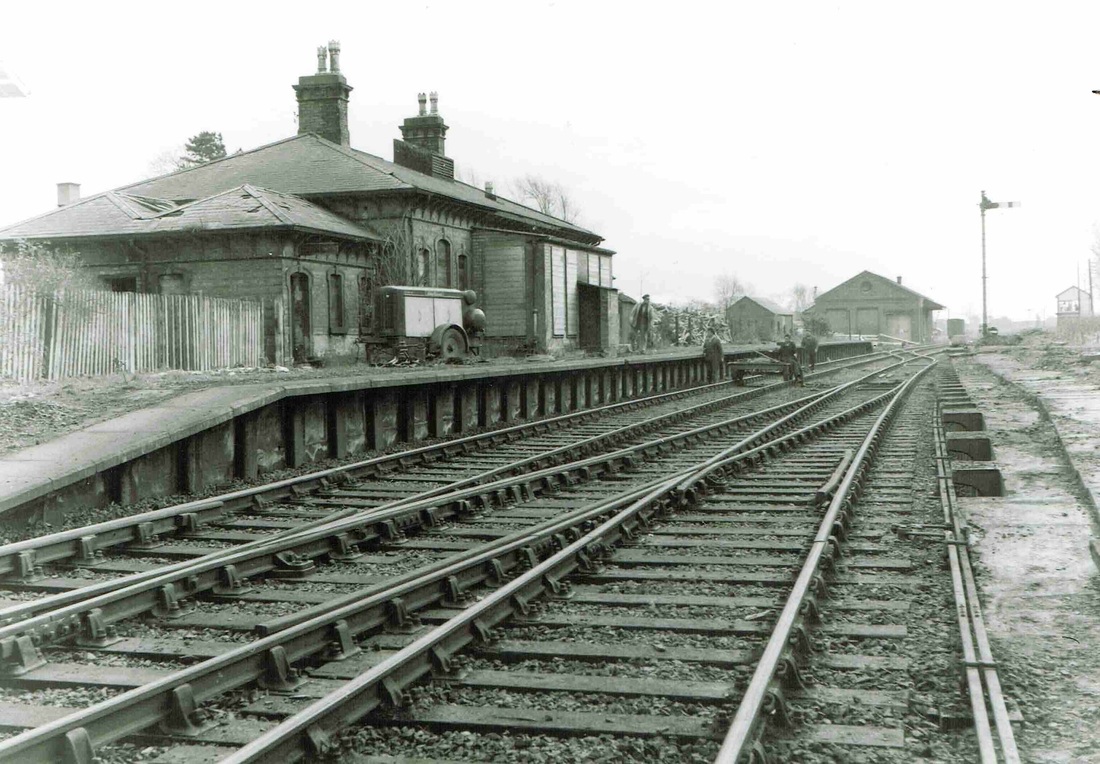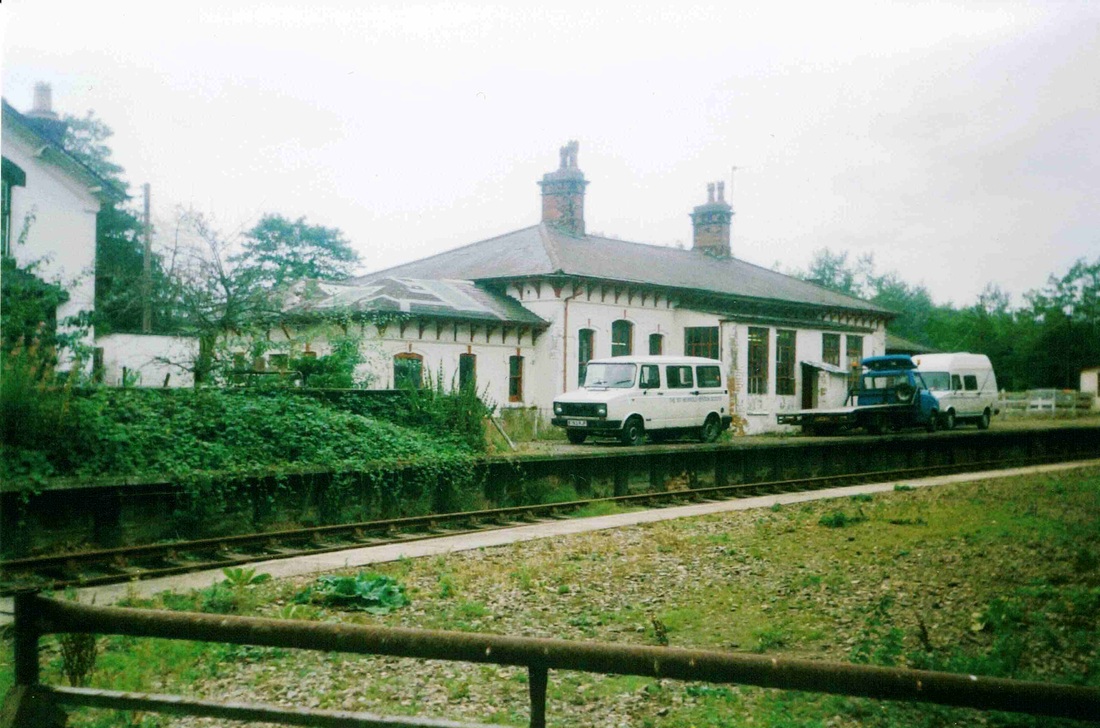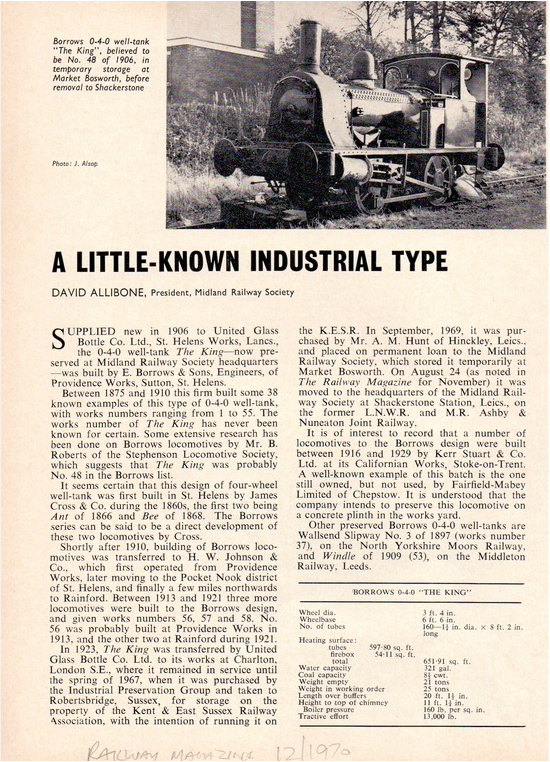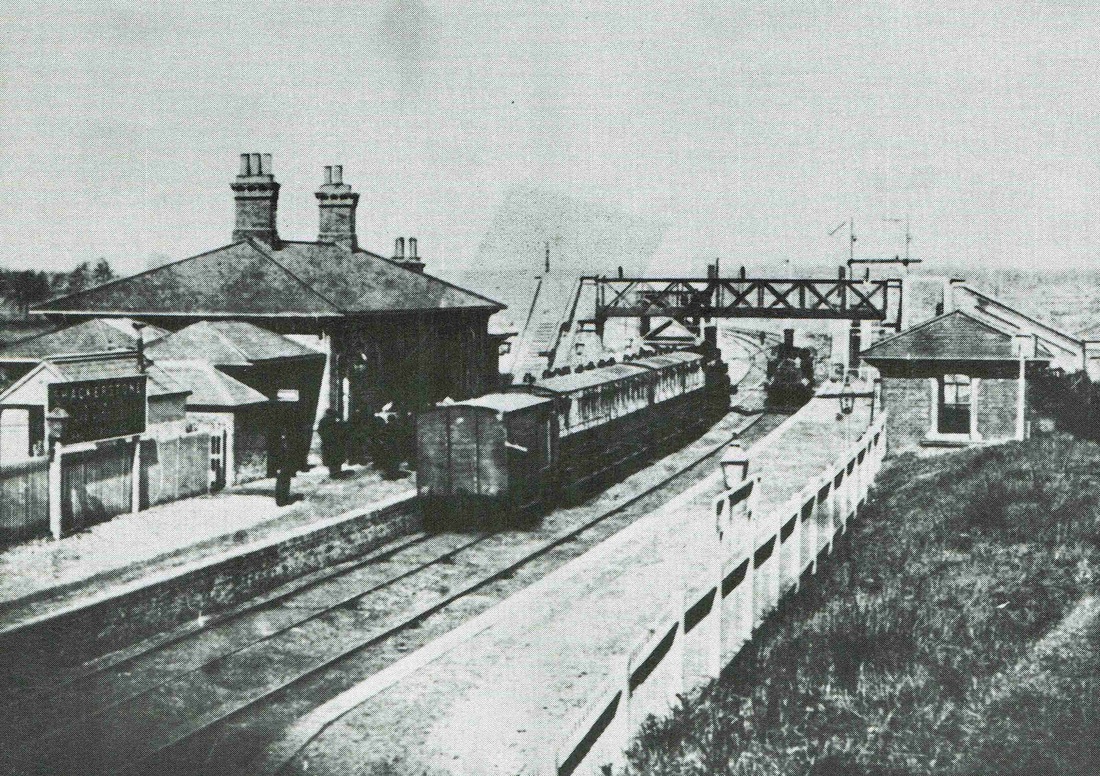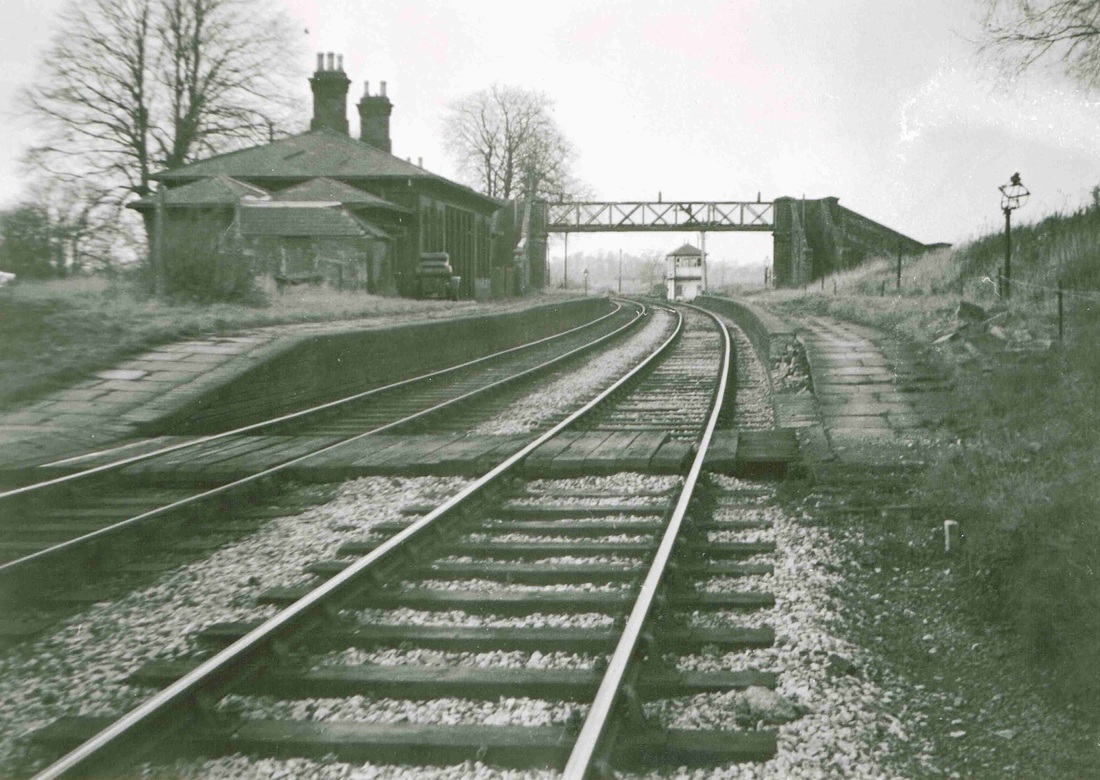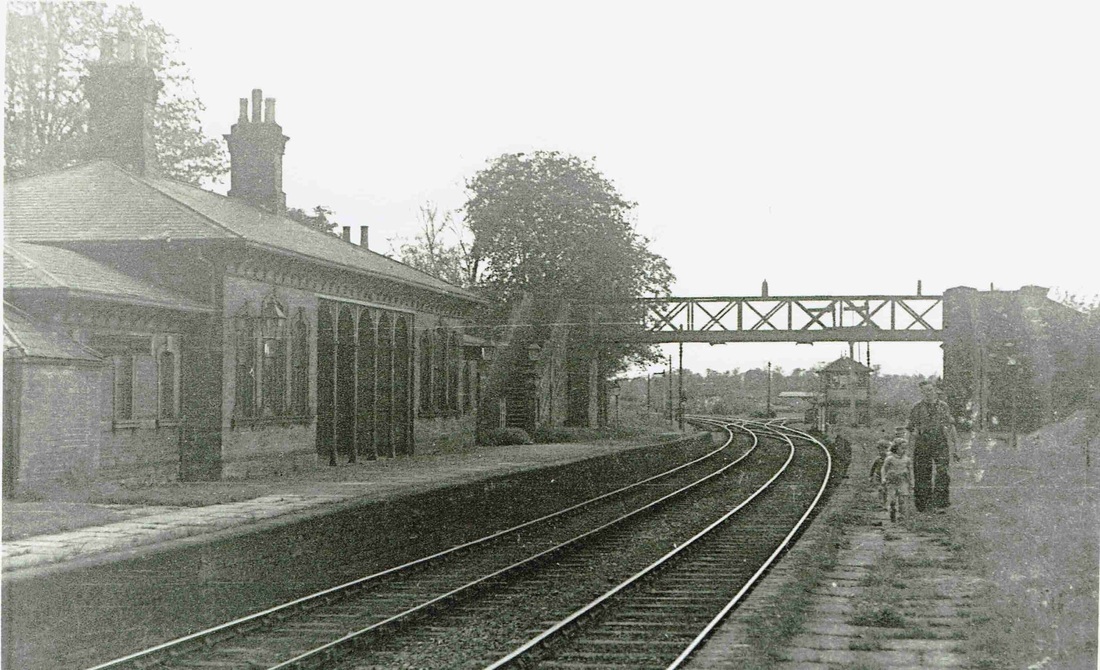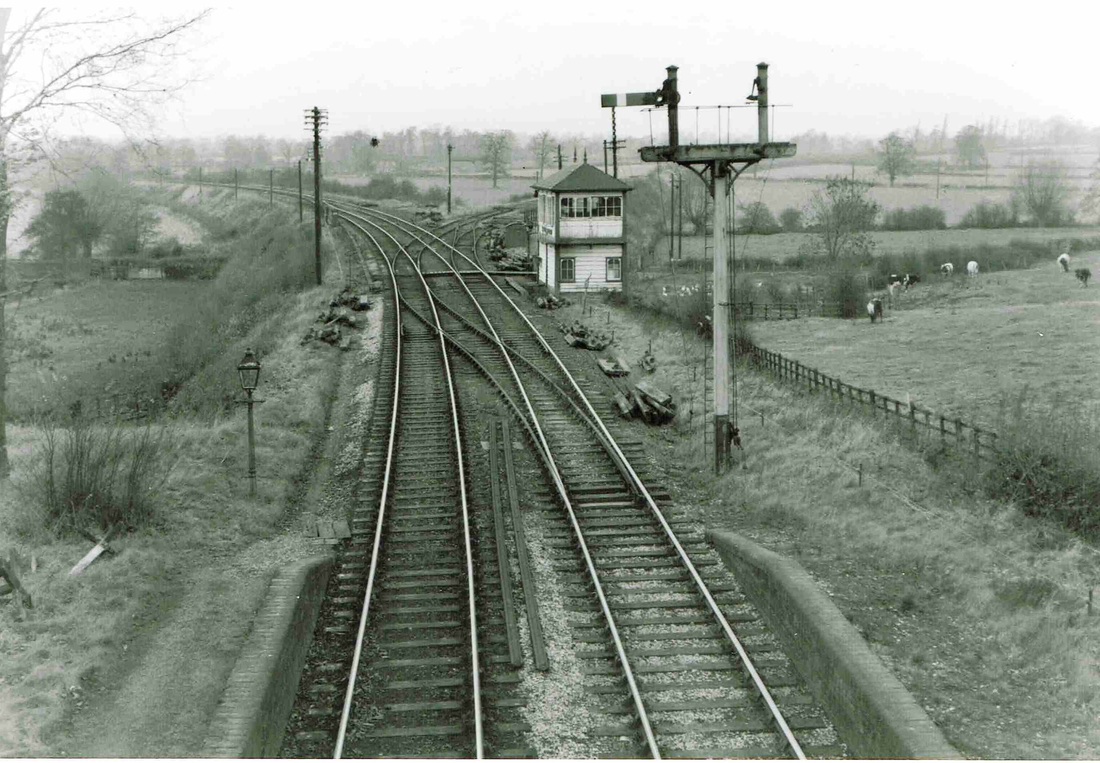The London & North Western Railway was the largest railway operating company in the country in the early years of the 20th century and operated the West Coast main line which included the section through Nuneaton, Atherstone, and North Warwickshire - part of the Trent Valley Railway. The LNWR was also a very important employer locally. The growth in traffic generated from the North Warwickshire area was phenomenal in the period 1880-1940. Other important LNWR branches were the branch lines from Nuneaton to Coventry, the South Leicester Railway to Hinckley & Leicester, the Griff Colliery branch (built by the LNWR to tap coal reserves and brickyards in the Chilvers Coton and Stockingford areas of Nuneaton) and the LNWR entered into joint agreement with the Midland Railway, to build and operate the Ashby & Nuneaton Joint Railway, giving access to the Leicestershire coal districts. The joint line brought huge amounts of coal from the Leicestershire coal field into the marshalling yards at Nuneaton station for despatch to London and the Home Counties, and in the direction of the South West of England. In 1917 Nuneaton Train Control with a staff of 17 dealt with 90,000 wagons per week. The West Coast main line passenger service today is operated by Virgin Trains and the London Midland Railway whilst Birmingham - Nuneaton - Leicester services are operated by Cross Country Trains. Freight traffic is covered by Freightliner, DB-Schenker, and other operators although freight traffic from the Nuneaton area currently comprises just petroleum to the Murco sidings on the Coventry line. There are no sidings used for freight anywhere in this area other than that one location near Bedworth plus the branch to the Prologis site at Keresley which is currently out of use. Most freight is express container traffic. 21st Century traffic is not covered by this web site. I like the old stuff. (PL)
The Trent Valley Railway, opened 1847.
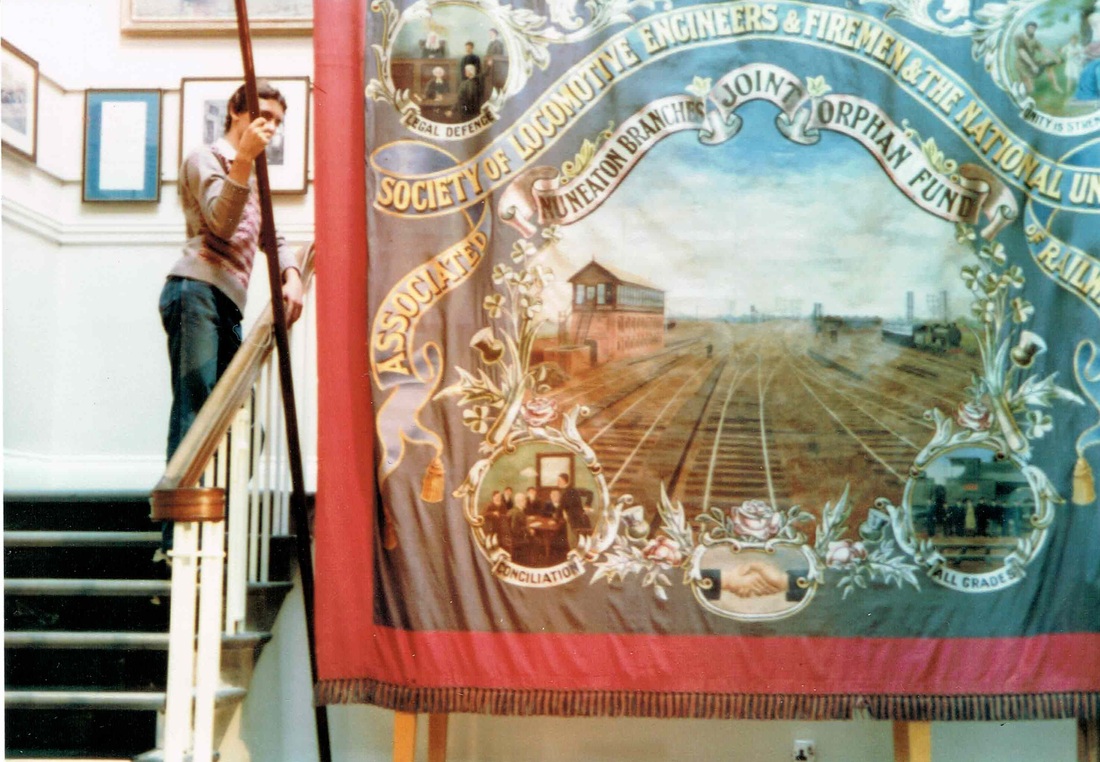
The Railwaymen's Union Banner displayed in Nuneaton Museum & Art Gallery in Riversley Park on 10th September 1980. The banner was made in 1922 by Slingsby's the local silk regalia manufacturer in Nuneaton. The image on the banner shows Nuneaton Nr. 1 signal box on the left and a loco coming in on the right from the Coventry line with a LNWR train. Immediately to the left of the local train the loco shed can be seen. The lines in the centre are the Trent Valley main line. (Geoff Edmands)
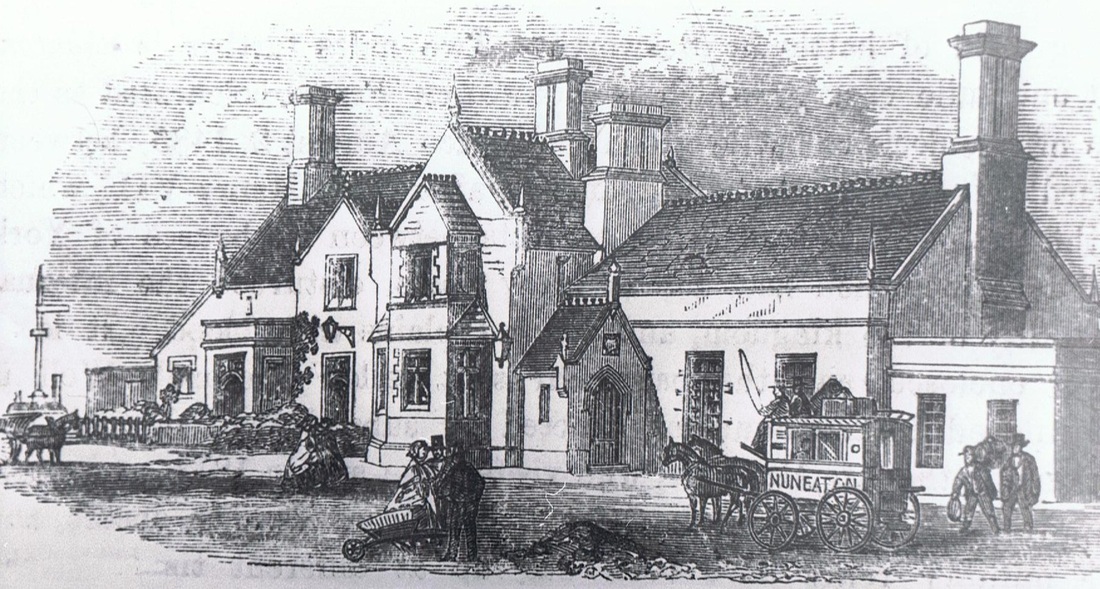
A drawing of Nuneaton's first station. When the Trent Valley Railway was built the Trent Valley Railway (the TVR was independent until 1846) commissioned an architect John William Livock (1815-1883) to design a unified series of station buildings and level crossing gate keepers cottages for the line. This was the result at Nuneaton. This building sufficed between 1847 and the 1870's but the track layout was altered in 1873 and new more commodious station buildings erected.
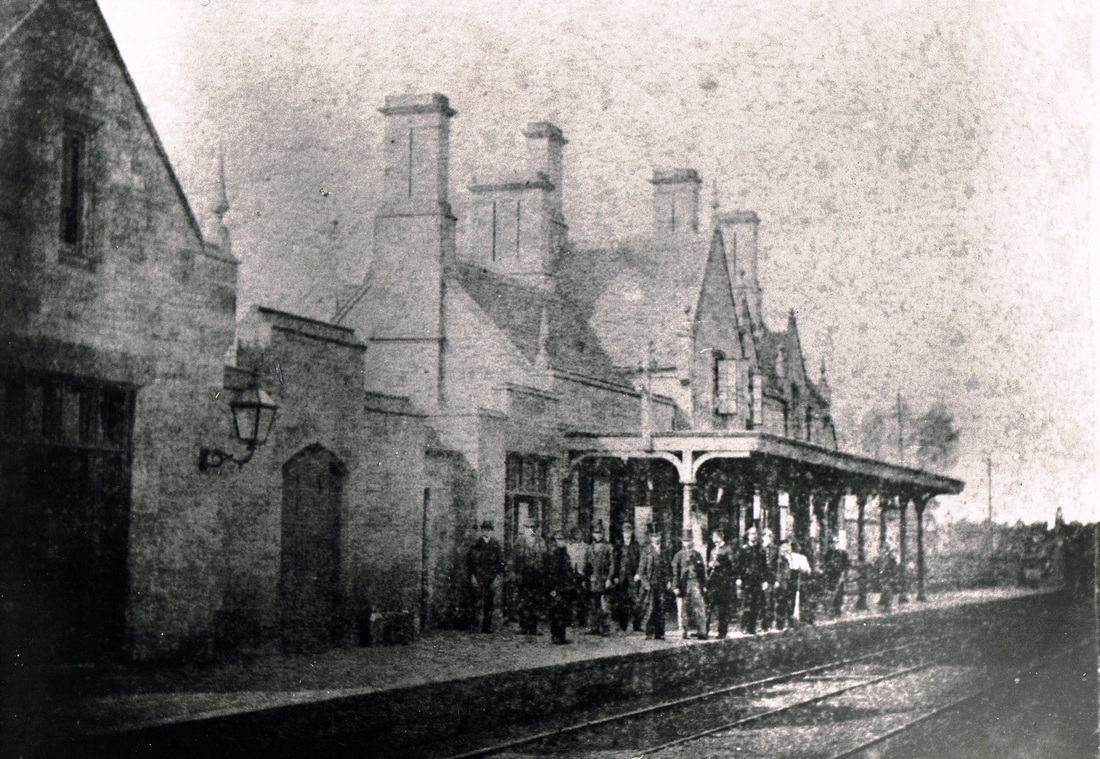
Nuneaton's first station - the Livock Building - platform side before removal in the 1870's. It was the epitome of a picturesque country station built with just the two platforms at a time when Nuneaton had a population of just under 8000 people. In this condition it survived for 25 years or so before increasing traffic and patronage required a larger station to be replace it. We are looking north in this view with the station staff assembled for their picture to be taken.
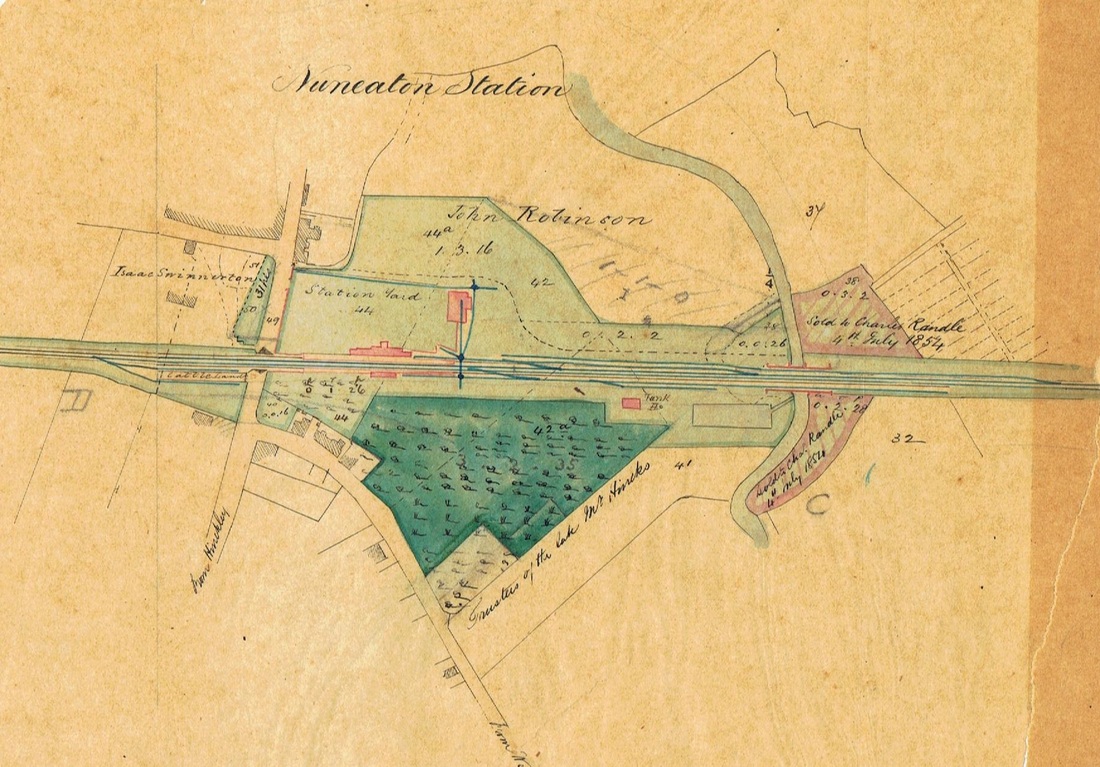
The original layout of the first Nuneaton station as drawn on a delicate sheet of paper pasted within the Trent Valley track plan and section. Note that to transfer trucks from one side of the line to the other turn plates were provided so wagons could be trundled across the line at right angles one at a time towed by horses. As traffic increased, and steam engines became more powerful a conflict between horse drawn wagons and fast expresses (40 mph at least) was a problem. The turnplates lasted until the 1870's when this layout was radically altered. A start had been made in the 1860's when an island platform was put in, then in 1873 the Ashby & Nuneaton joint line was opened and all the new traffic entering the system at Nuneaton plus the increased passenger trains meant new paths and easements were needed for the train and the (old) Livock station was removed. On the left of this drawing you can see the name Isaac Swinnerton. He owned the timber yard which remained in his family for a further 60 years. This yard had been constructed to supply much of the timber and ballast wagon bodies for this section of the TVR. If you look closely just sketched in below Swinnerton's name you will see a series of hatched lines. This shows the original road layout before it was altered for the construction of the TVR, and where the green strip is to the right of Swinnerton's name was an ancient pub - The Dun Cow - said before its demise to be the most haunted pub in Nuneaton. The roadway above Swinnerton's name is now Regent Street but before the railway was built was called Brick Kiln Lane (as there was a brickyard half way along it). The obliterated section referred to earlier was called Derby Lane and this passed from there through the level crossing gates you can see here where the line cuts through Bond End and down the roadway which leads off towards the centre bottom of the drawing. It was called Derby Lane because if you walked for several hours you would eventually end up in Derby! The road towards the centre bottom of the drawing today is called Weddington Terrace. Note too that the goods shed which was made of timber is at right angles to the main rail track. There are a selection of sidings to the right of the sidings which would have been used from 1850 onwards to accommodate local freight trains to Coventry and from 1862 to Hinckley, and 1864 to Leicester as empty stock clear of the main lines, and to assemble wagons ready for despatch over the system. The loco shed that was erected in 1850 was off the picture to the right where the old steam shed stood in the triangle formed by the Coventry and Trent Valley lines. On the right the River Anker has been altered and the old course of the river is shown. Where the river ran below the main line is a rectangular reservoir and to its right a pink rectangular detail. This is the old water tank house which was fitted with a steam pump so that water from the reservoir could be pumped to the cast iron water columns that were used to replenish the tanks of the steam engines on duty at the station, or stopped in the station. The reservoir was put in to regulate the flow and have a back up in times of drought. Filters were fitted so that the boilers were not damaged by sludgy river water. (Trent Valley Railway Archive)
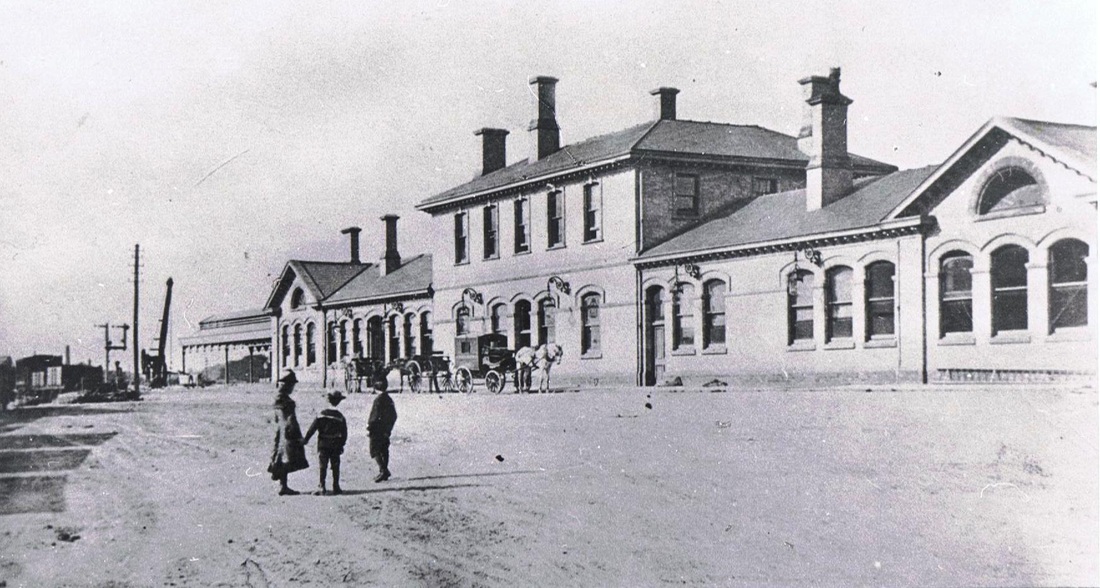
Nuneaton's second Trent Valley Station looking north on the down side, with the Burton on Trent and Loughborough Bay lines with their overhead roof to the left of the picture. A large crane for unloading goods next to it. This new station was erected c. 1873 to replace the vastly too small Livock building. It continued in use until c. 1913 when a contract was awarded to Eli Kelley, a Coventry contractor, to replace it with the third station we see today. Due to the onset of WW1 the work was considerably slowed down and new buildings were erected in the station concourse, whilst the old "Bay Lines" Platforms 1 & 2 and the north end bays were cut through to form continuous through running. This meant all the five platform faces in the station could be used by north-south traffic instead of just three adding to the flexibility of the traffic arrangements needed with a growing station.
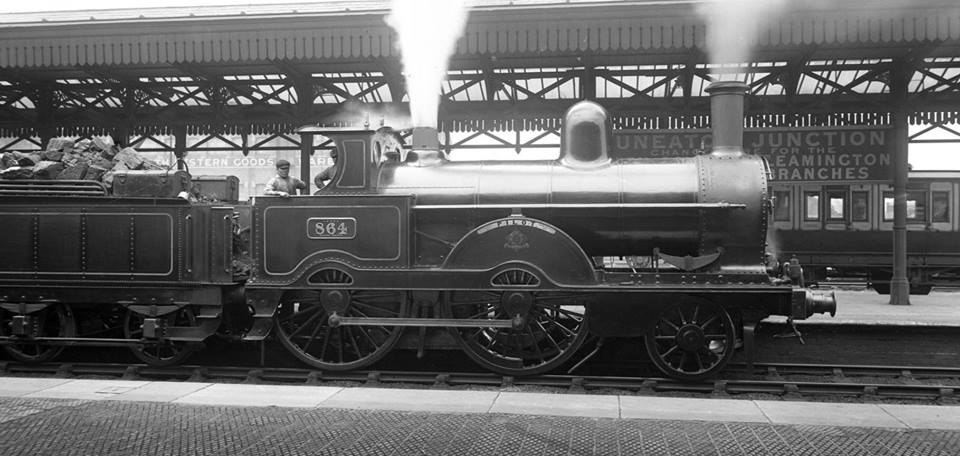
"Jumbo" class or "Renewed Precedent" 2-4-0 Nr. 864 "Pilot" in Nuneaton station c. 1904. The Ashby & Nuneaton bay in the background and you can just see the LNWR goods shed beyond. Nr. 864 was built at Crewe and entered service in June 1896 and scrapped in July 1927. Its LMS Nr. 5063 was not applied. (Charles Verall collection)
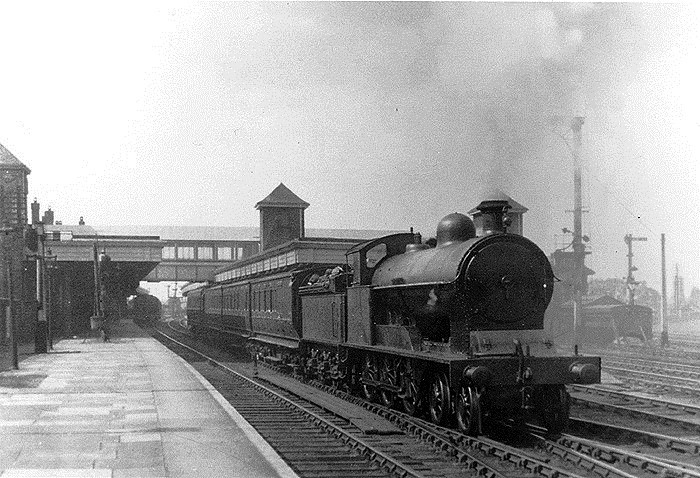
The glorious days of the old London & North Western Railway at Nuneaton. Possibly in the 20's. On the left is Platform 1 and the train is departing from Platform 2, most likely on a Trent Valley local train. The loco is either a "Prince of Wales" class or a 19" Goods 4-6-0. (Perhaps some LNWR buff can clarify this?). A local Coventry line train is in Nr. 1 platform.
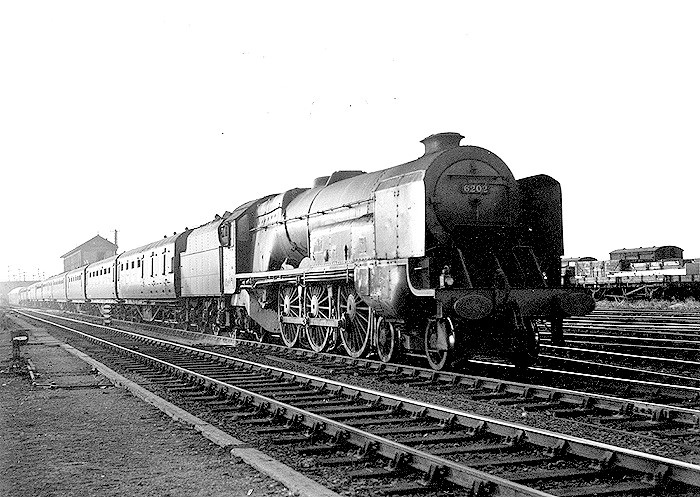
The famous Turbo Pacific 4-6-2 Nr. 6202 "Princess Anne" which was involved in the 1952 Harrow accident, and scrapped thereafter having just been converted back to a conventional loco here passing south through Nuneaton on an Up express. Nuneaton Nr. 3 box stands high above the carriages. The rocker bridge in the background. (Arthur Flowers)
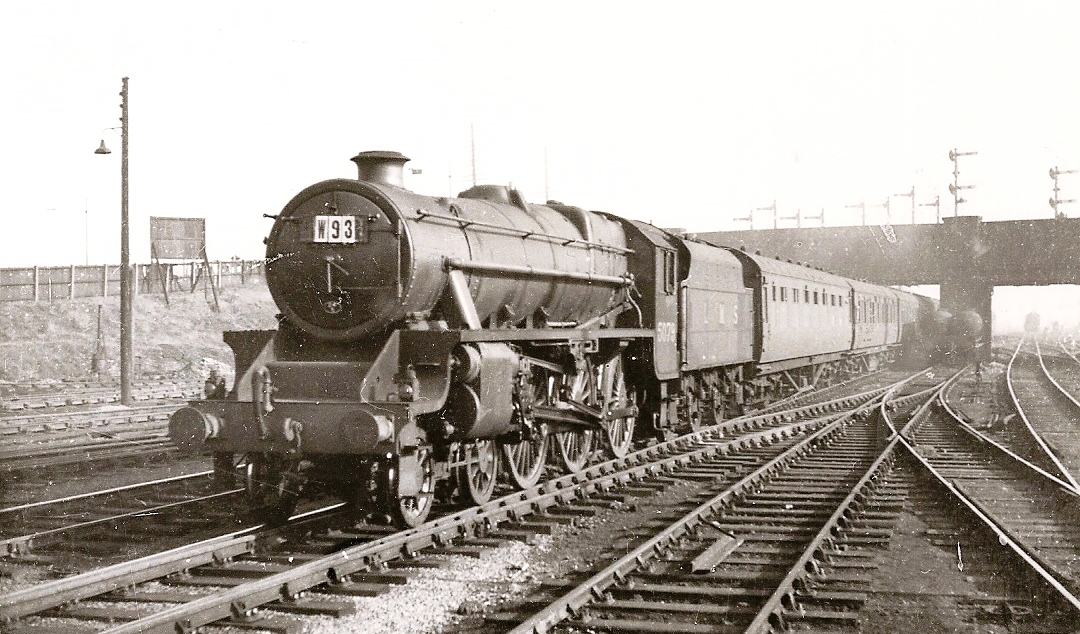
Sometime in the 1940's a Black 5 4-6-0 Nr. 5079 heads a down express through Nuneaton under Leicester Road bridge. On the right can be seen the engine release road with a gas tank parked in the siding against the abutment of the bridge. Can anyone explain what it was doing there as gas lighting of carriages seems to have gone by then? Nr. 5079 was one of a batch built by Vulcan Foundry in 1935 and withdrawn in 1962.
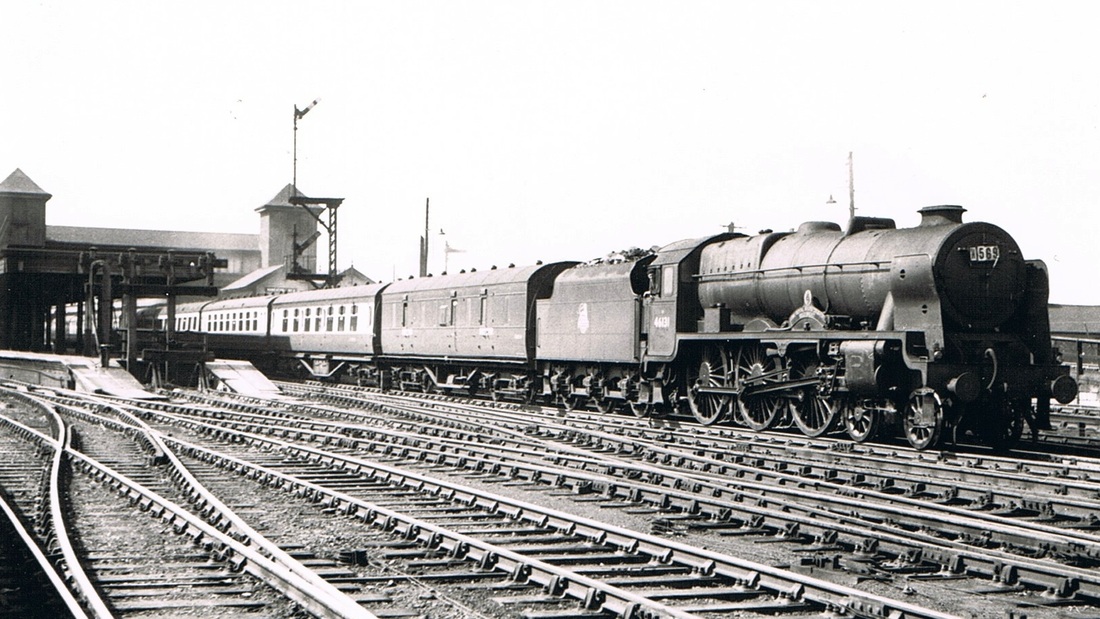
A Scot" 4-6-0 Nr. 46131 "The Royal Warwickshire Regiment" on an up express passes Nuneaton station in the 50's. The complicated trackwork associated with the engine release roads is evident in the foreground. The Scots were regarded as "rough riders" and old railwaymen have told me their smoke deflectors did not fulfil any practical purpose, Nr. 46131 was from a batch built by North British in 1927 and rebuilt with a 2A tapered boiler and double chimney in 1944. It was originally named "Planet" but the name was changed in 1928. Withdrawn from traffic in 1962. (D.J.Montgomery)
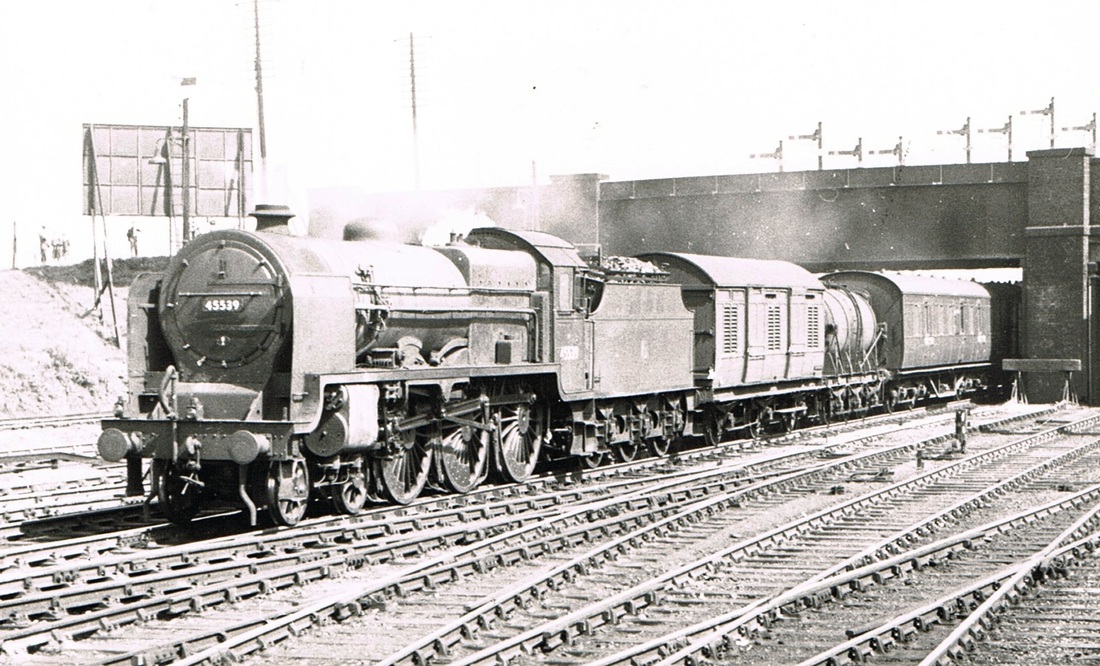
"Patriot" Class 4-6-0 Nr. 45539 "E.C.Trench" built at Crewe and entered service in 1933, withdrawn 1964, heads north through Nuneaton station on a fitted freight under Leicester Road bridge. The engine release road goes up to the abutment of the bridge so that tank engines working local services in platforms 1 and 2 could be released from a train after the platform road was cleared. This arrangement was dispensed with in the 1950's (c.1958) with the advent of diesel multiple units on local passenger services. The first vehicle in the train is a West Coast Joint Stock six wheeled van (for fish or meat traffic). (D.J.Montgomery)
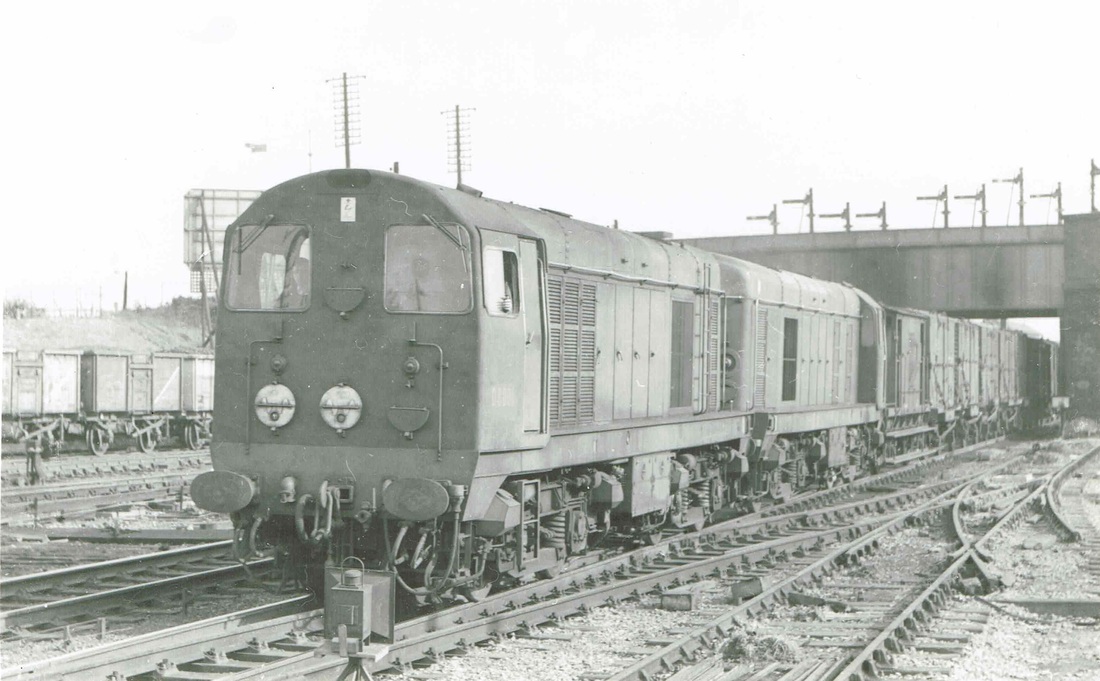
This scene might be repeatable today because Class 20's are still around but I doubt you would see them on a fitted freight. More likely some kind of excursion or special working these days. But much else has changed from this scene with two Class 20's hurtling through Nuneaton at a very fast pace. Leicester Road bridge has been lifted and widened and entirely rebuilt. The old semaphores have gone. The last 10T mineral wagon (extreme left) was taken out of service in the 1970's. As you can see here the small lay by sidings are in the process of being dismantled as Nuneaton Nr. 2 box has been decommissioned. I guess this view was taken c. 1960. (D.J.Montgomery)
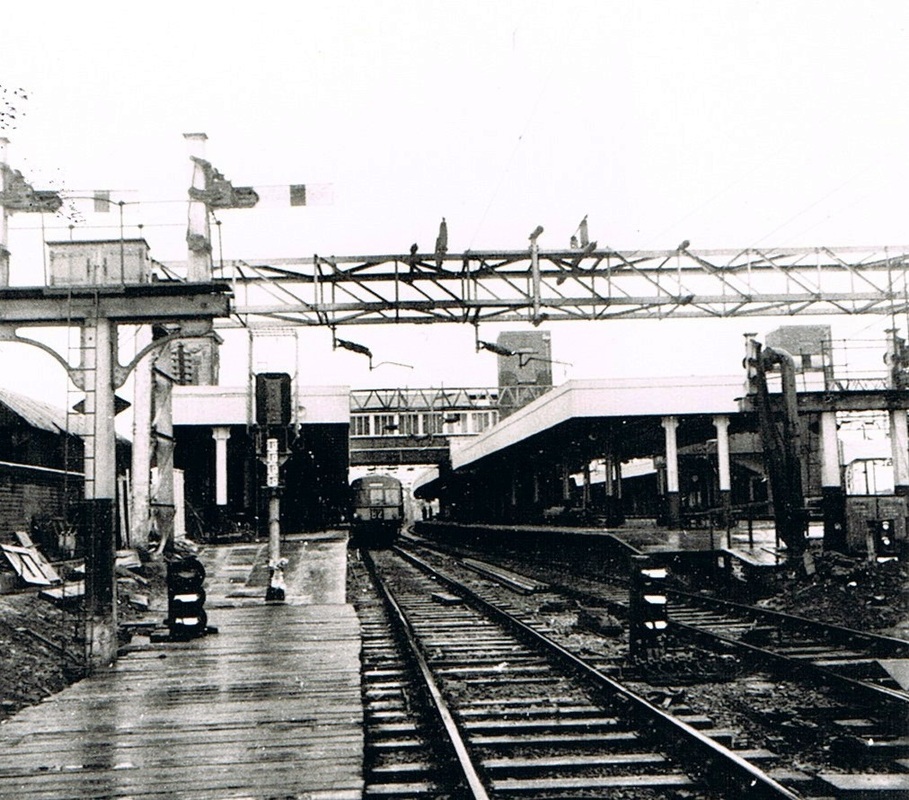
Nuneaton Trent Valley station c.1962/63 Platform 1. A Coventry-Leamington service in the platform. The photo was taken by a signalling engineer responsible for installing new colour light signals and the removal of the old mechanical signalling. Both systems of signalling can be seen together in this view but the old signals were taken away shortly thereafter. Both platforms 1 and 2 were subsequently extended. (courtesy: Vic Holloway)
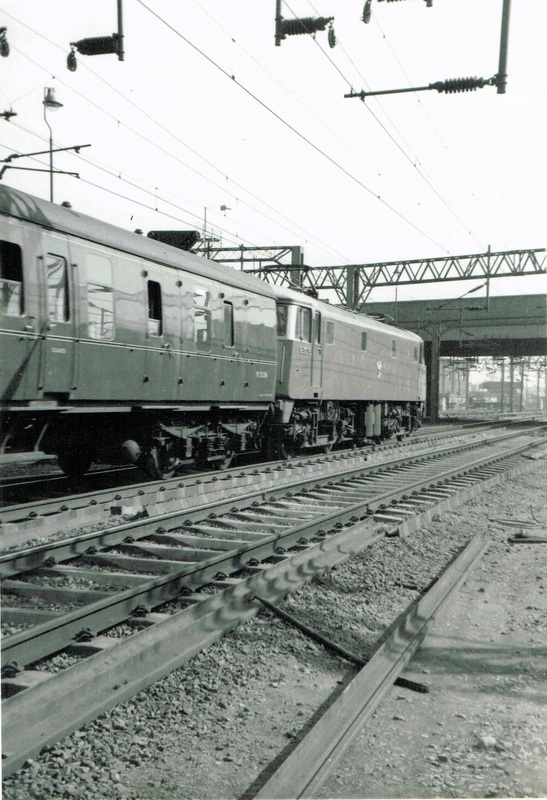
A class AL1 electric hurtles south through Nuneaton approaching the Leicester Road bridge with an Up express. Sometime in the late 1960's. Al of these electrics were scrapped by the 1990's. Scrapping had started as early as 1968 but the bulk were disposed of between 1985-1992, the last going in July that year. (Michael Mears)
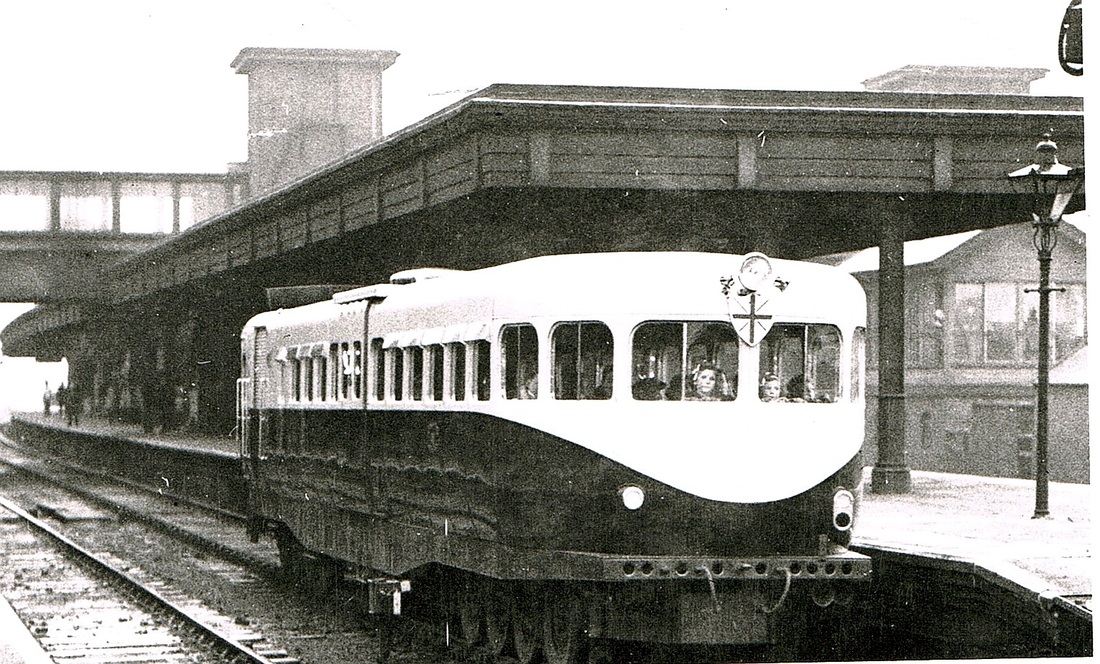
Now here's a novelty. What is this gadget? A Michelin railbus leaves Platform 2 at Nuneaton station in the late 1930's on its way to Coventry and Leamington. It was most unusual because it had rubber tyred rail wheels. The bodywork had been hand crafted at the Nuneaton Sheet Metal works at the Bull Ring, Nuneaton. It was an attempt by Michelin, the tyre people, to introduce rubber tyres into the rail industry and led to the use of rubber tyred trains on the Paris Metro. There were difficulties with these prototypes (There was at least two, maybe three) was that the rubber tyres although very quiet for the passengers were too quiet for platelayers and railwaymen working on the track who regarded them as "silent killers". Note the kids peering through the front window. Where was the driver? He occupied a little conning tower on the top. The prototype was very Gallic and led to the numerous French railcars of this variety seen on secondary railways in subsequent years. Existing French "Picasso" railcars are very similar and you can see a number of these preserved on French railways today. These railcars had severe limitations. They could not be coupled to other rail vehicles so could only be used on light train loading services. Much of the Coventry line services loaded to 5 carriages at peak times. The Second World War put paid to the experiment, as the railway companies had to dispense with operating complications and they reverted to the trusted technology of steam propulsion.
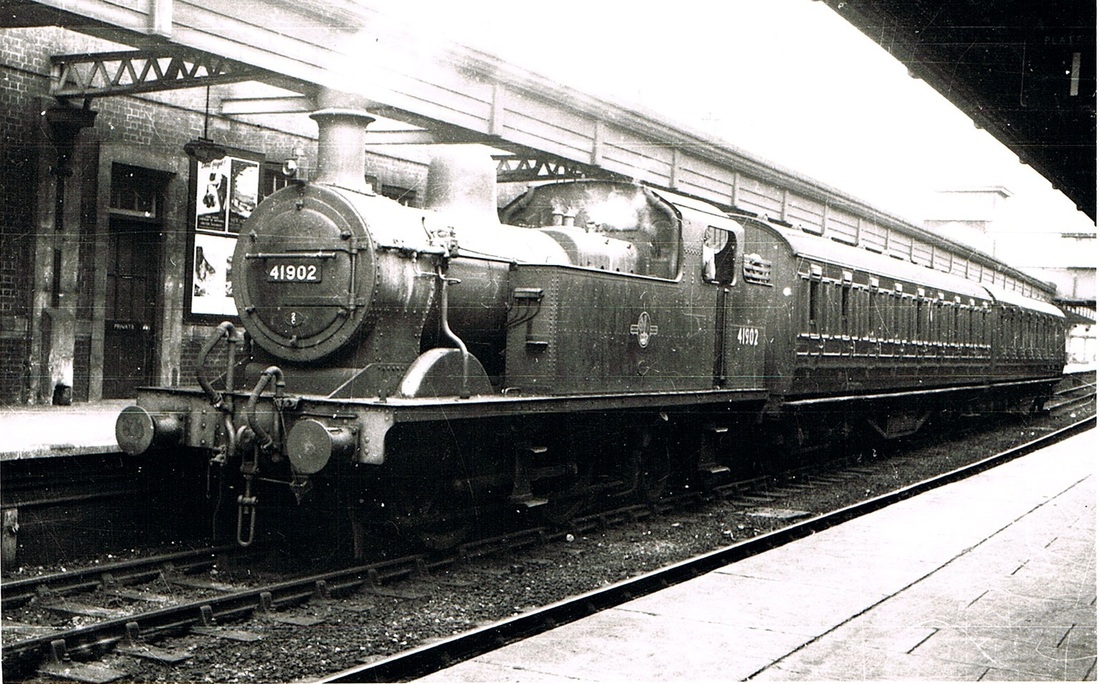
LMS class 0-4-4T Nr. 41902 stands in platform 2 at Nuneaton station on a Leamington push pull train. This engine was shedded at Warwick for a time to work local services. This photo was taken in the period 1956-8 when this engine was used on this train. 41902 was transferred from Bletchley to Rugby and then transferred to Warwick shed in August 1956 to replace the last Webb 2-4-2T Nr. 46604. The use of the push and pull unit we see here was dispensed with in November 1958 with diesalisation, and effectively, Nr. 41902 found little further use and was withdrawn in 1959. R.S.Carpenter)
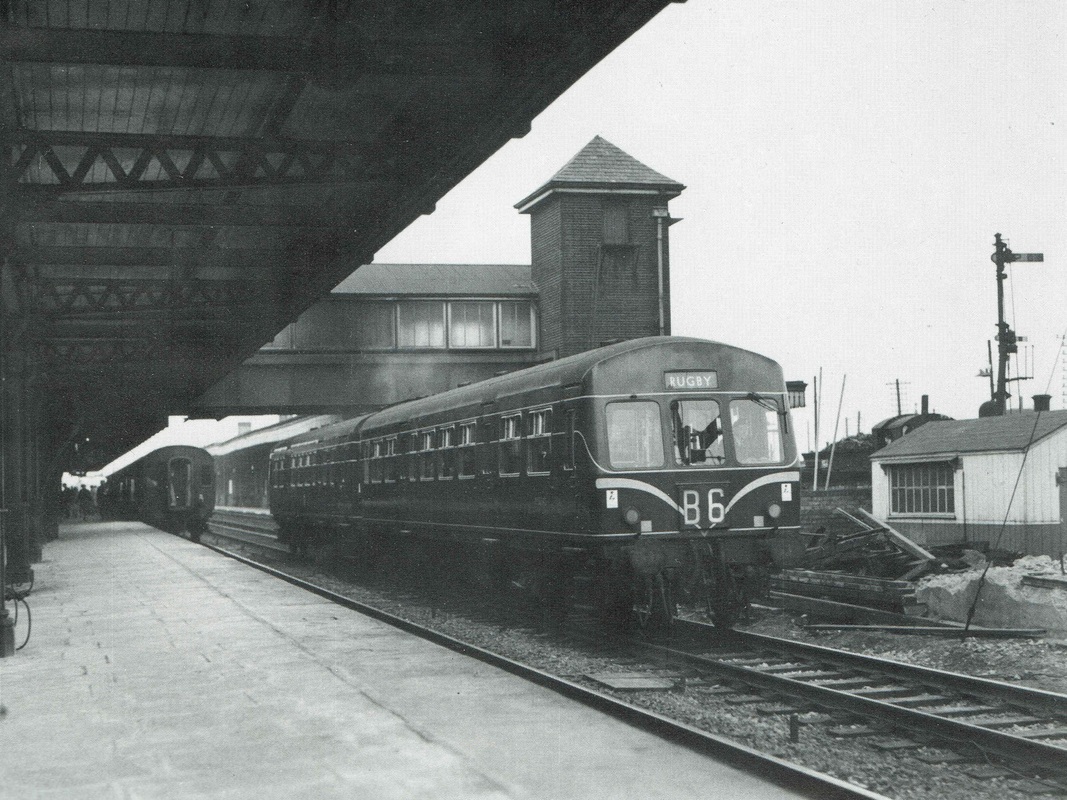
A Metro Cammell DMU draws away from Platform 4 at Nuneaton TVR station with the 4.40pm Tamworth-Rugby local service on 11th March 1961. The debris on the right of the DMU indicates where Nuneaton Nr. 2 box had recently been demolished. A tender cab "Super D" 0-8-0 is partly obscured by the inspector's cabin on the right. (Michael Mensing)
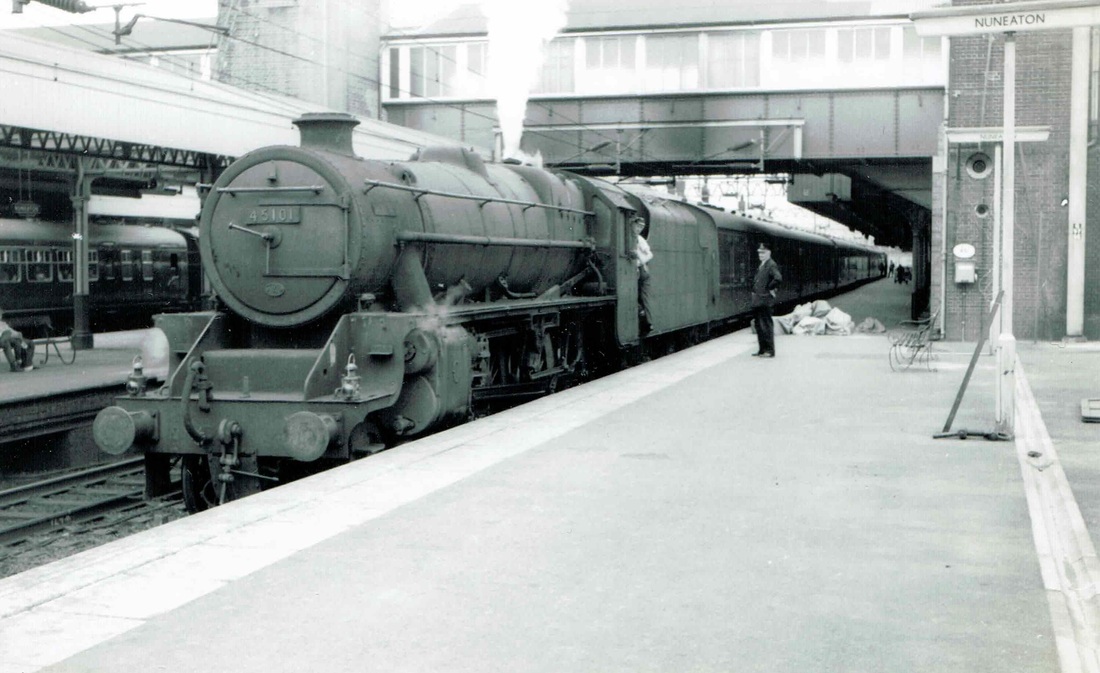
Black 5 4-6-0 Nr. 45101 about to leave Nuneaton an Up express which has stopped at Nuneaton to change from an electric loco to steam haulage as the overhead supply had only been energised to that point, and the electric would head a train back north. 13th June 1964.
(Geoff Edmands 2723 1/50:8 (Woolworths Film) )
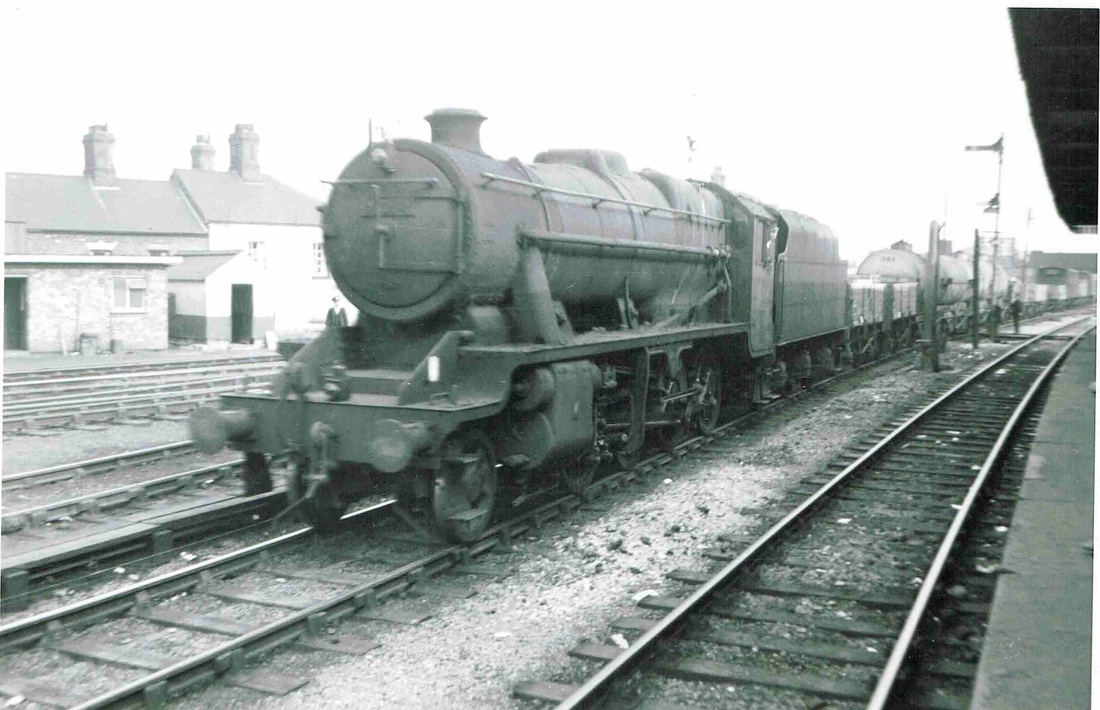
A view from Nuneaton station Platform 5 in the 1950's. An unidentified 8F 2-8-0 (too grimy) is running on a mixed freight, bringing a train in from the south and going through the station but stopping shortly to remove wagons for transferral into the marshalling yards whose throat is on the left of the picture. (The white building in the background is the Graziers Arms public house). Note the shunter on the boarded crossing in the distance who is probably waiting to unhook some of the wagons being drawn onto the goods loop for detachment and re-marshalling.
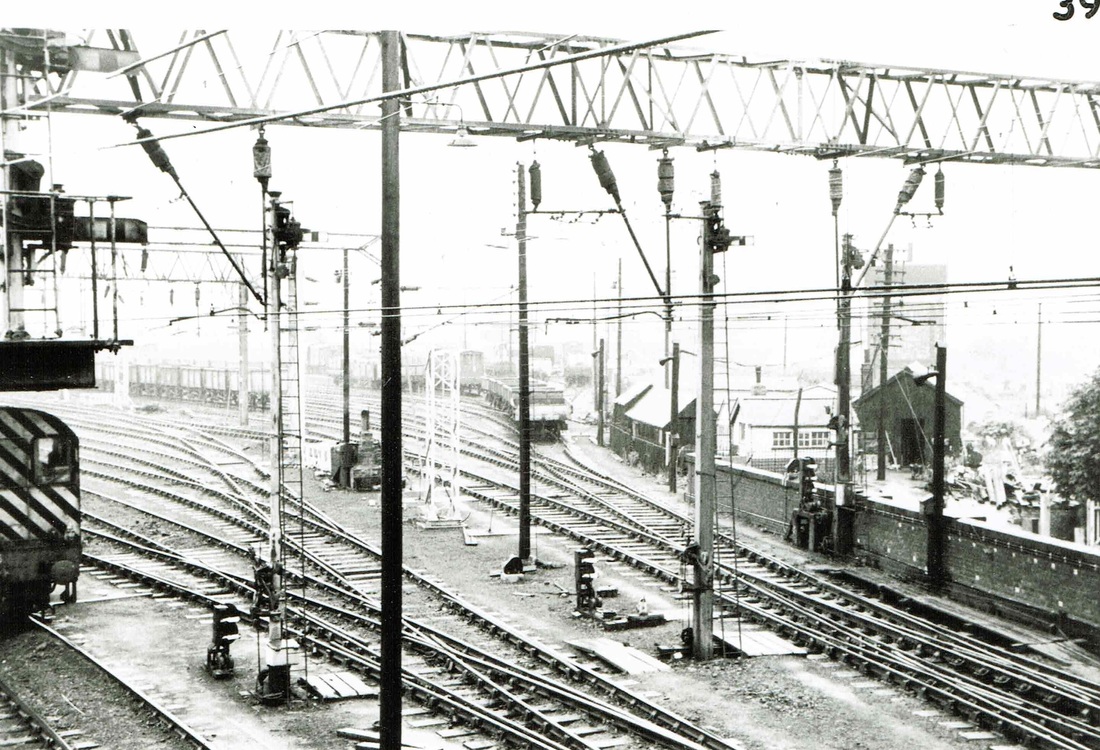
The marshalling yard throat at the south end yard next to Nuneaton station. Above the gable end of the hut on the right hand side you can see the "Tank House". This was a large steel water tank to supply the water columns in the goods yard which took its supply from the River Anker. But it was also used as a tied cottage for the railwaymen engaged in the goods yard. "Titch" Jarvis was resident for some years until he was killed in a shunting accident in the north end yard. Imagine living in the "Tank House" with a big tank of water swilling about over the top of your bedroom at night and the gurgling of cast iron pipes as the water columns were used by steam engines in the adjacent goods yard. The photo was taken from Nuneaton "Up Sidings" signal box window. An 08 shunter lurks in the loop at the left hand side. Electrification has taken place and this scene will soon be swept away as Nuneaton marshalling yard is disposed of, part of the site turned into an industrial estate and this immediate area turned into a new formation for the rail tracks leading through Platforms 6 & 7 at Nuneaton (The Leicester-Birmingham route). (Attribution being checked)
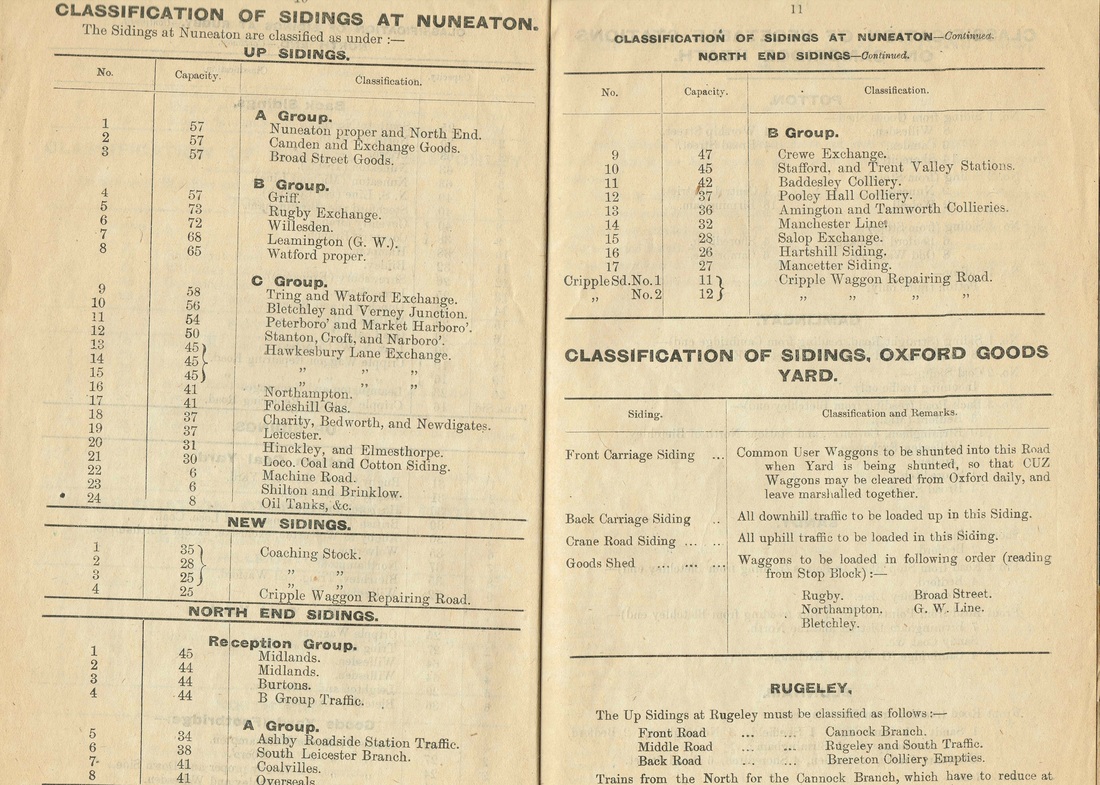
This official LNWR pamphlet issued to railway staff lists the various sidings in the UP South End Marshalling Yard (with the hump) and the North End (Goods) Yard that allowed the various wagons to be sorted out and put into the correct siding for onward despatch. The capacity indicates how many wagons it held and the place name, i.e. Nr. 18, Charity, Bedworth & Newdigates - related to empty coal wagons being sent to Charity, fulls to Bedworth (most likely vans) or Newdigate (empties again). The empties would be filled at Charity & Newdigate colliery then probably tripped to Hawkesbury Lane sidings. They would be then be reclassified to onwards transmission to the customer who had bought the coal. The fulls to Bedworth might be beer in barrels, timber, general merchandise, sackfuls of flour, fruit, or any of the myriad of other things routinely sent by rail before 1923. Nr. 21 to Loco Coal and Cotton siding would be full 10T coal wagons brought in from one of the Leicestershire pits that the railway preferred to use for loco coal (Desford sometimes - Nuneaton/Bedworth area coal not deemed suitable for steam raising before WW2). This would then be taken to the loco shed for feeding the coal hopper, and two or three taken down the adjacent "Cotton Hole Siding" to feed the big boilers named Annie & Elizabeth at Fielding Johnsons factory.
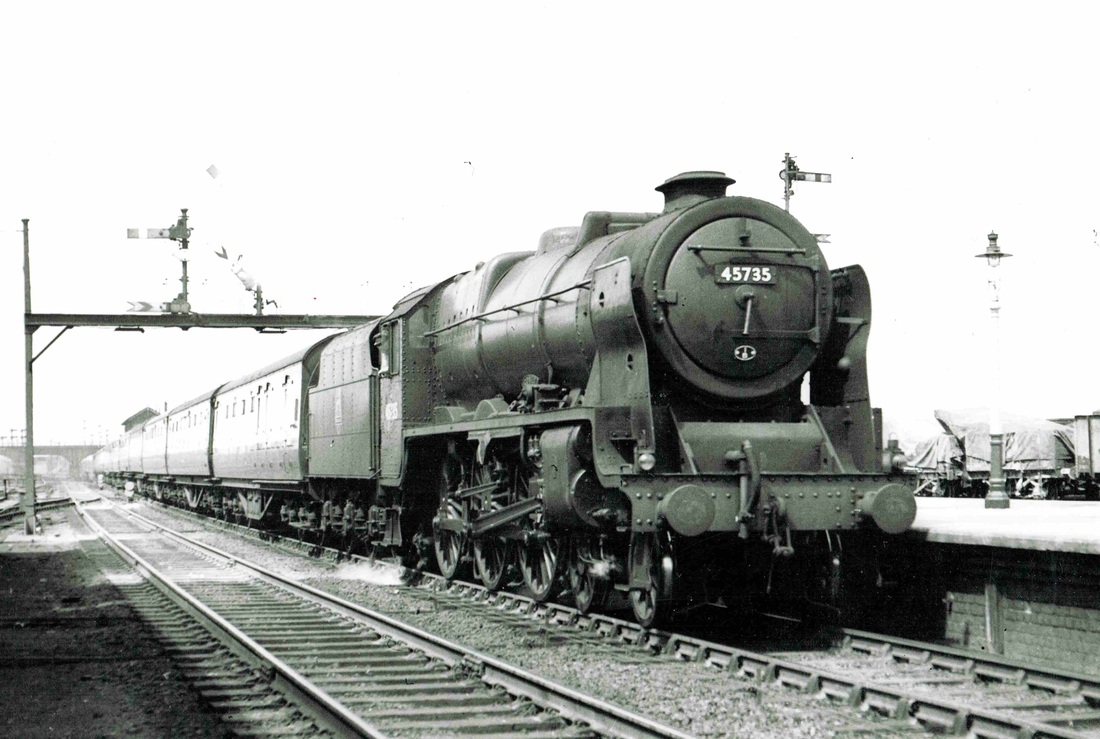
Jubilee Class 4-6-0 Nr. 45735 "Comet" was one of only two of the class fitted with smoke deflectors. Built in 1936 and fitted with a type 2A boiler and a double chimney in 1942, heading an Up express through Nuneaton in the 1950's. The photo must have been taken before December 1958 when it was transferred away from shed 1B Camden. (R.W.Beaton)
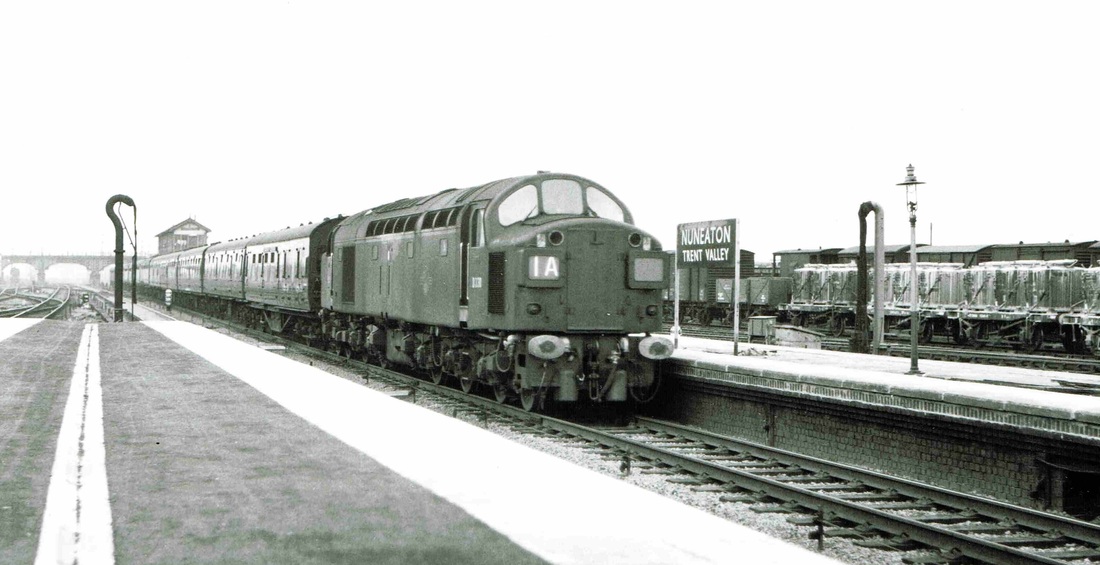
A Class 4 1Co-Co1 EE diesel Nr. D330 heads an up express through Nuneaton station in 1961. Nr. 3 signal box stands above the third and fourth coach and the goods yard is full of old wagons which will soon join the growing lines of redundant wagons sold for scrap. In spite of the fact that the D200 series diesels were modern at the time they too would be superseded on these expresses by electric traction. (Mike Mensing)
South of Nuneaton Station towards Rugby.
Infrastructure
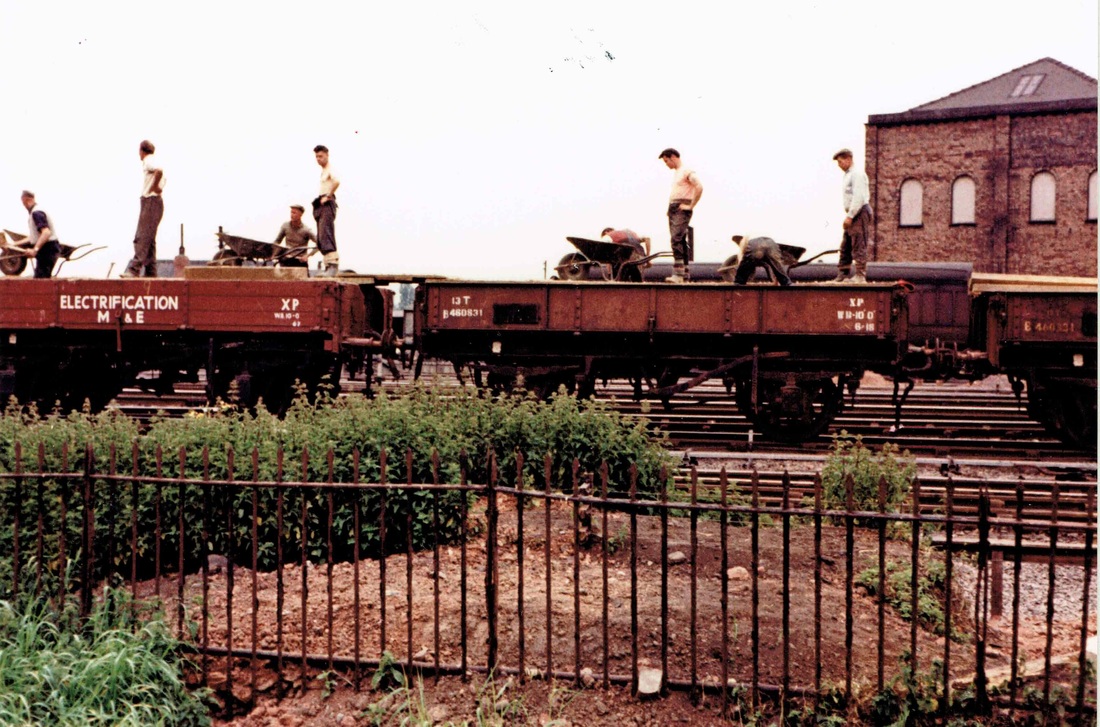
Electrification works gets under way at the south end of Nuneaton. The former BR warehouse (originally a weaving factory) in the background and the set of railings known to generations of railwaymen as the "Birdcage" because a narrow pathway led off on the right to Nuneaton shed, edged with these railings on the track side and the back garden walls of the houses in Glebe Road on the other and this had a slightly claustrophobic effect on the enginemen using it. The Birdcage was taken up and pushed back as the electrification posts went in, and still maybe there buried under the foliage and creepers that have grown up over the fenceline. I estimate the year is 1962 when these two photos were taken.
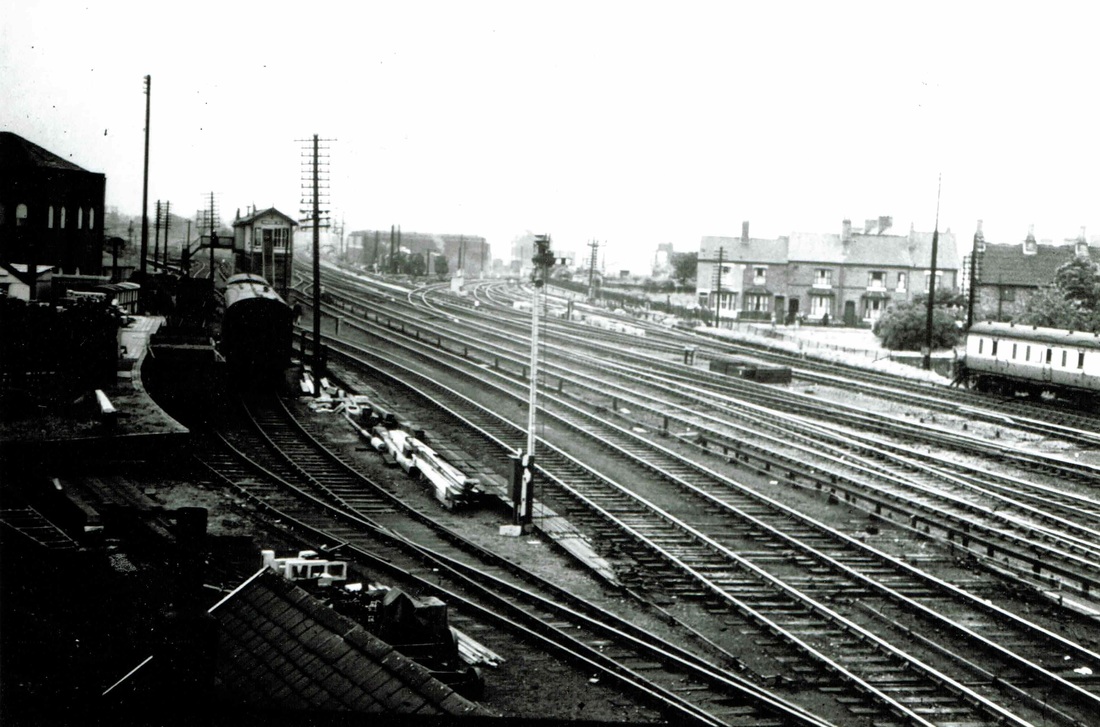
A view of the south end of Nuneaton station taken from the Leicester Road bridge in the 1950's. The S&T sidings to the left in this view. Loco shed visible in the centre. Coventry line off to the right main line to London straight ahead. Hump roads trail off to the right hand bottom corner of the picture. Houses in Wheat Street can be seen. Nuneaton Nr. 1 signal box above the S&T coaches on the left. These were old vans used for workshops and storage of S&T equipment.
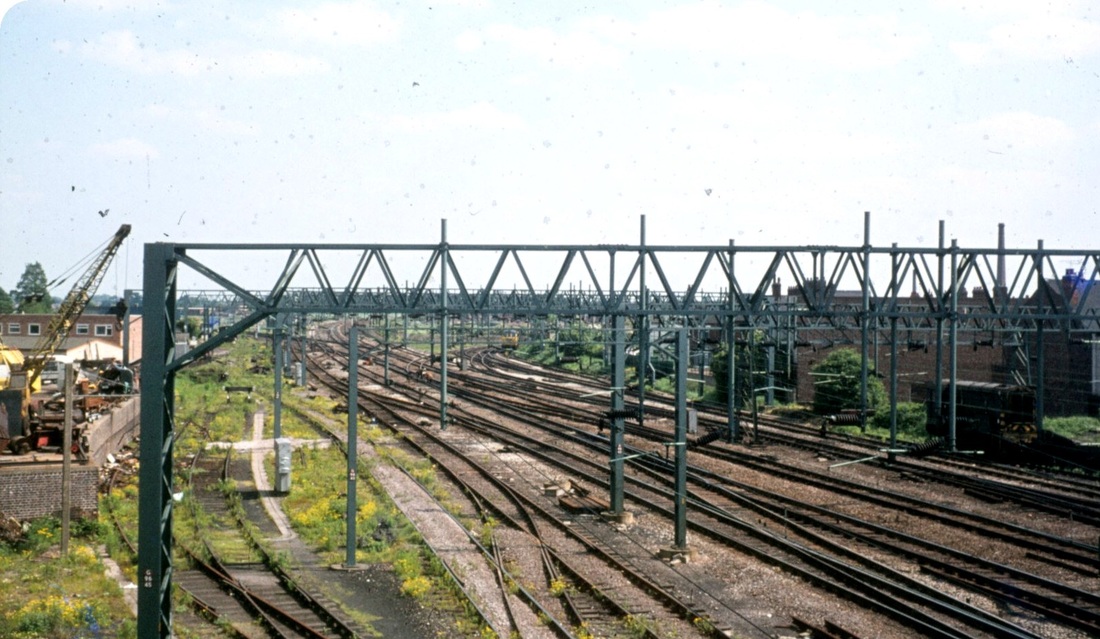
The south end of Nuneaton station from Leicester Road bridge looking south with the main Trent Valley line straight ahead. The South Leicester line towards Hinckley and Leicester off to the left and the Coventry line curves away to the right. An 08 shunter is parked in the siding on the right. The former Signalling and Telegraph (S&T) sidings are in the foreground on the left. The line immediately to the right of the S& T sidings was the hump shunt loop which was no longer used for shunting the yard when this picture was taken. This layout has been modified today to facilitate Leicester-Birmingham trains through the new Platforms 6 & 7 at Nuneaton station. (Peter Lee)
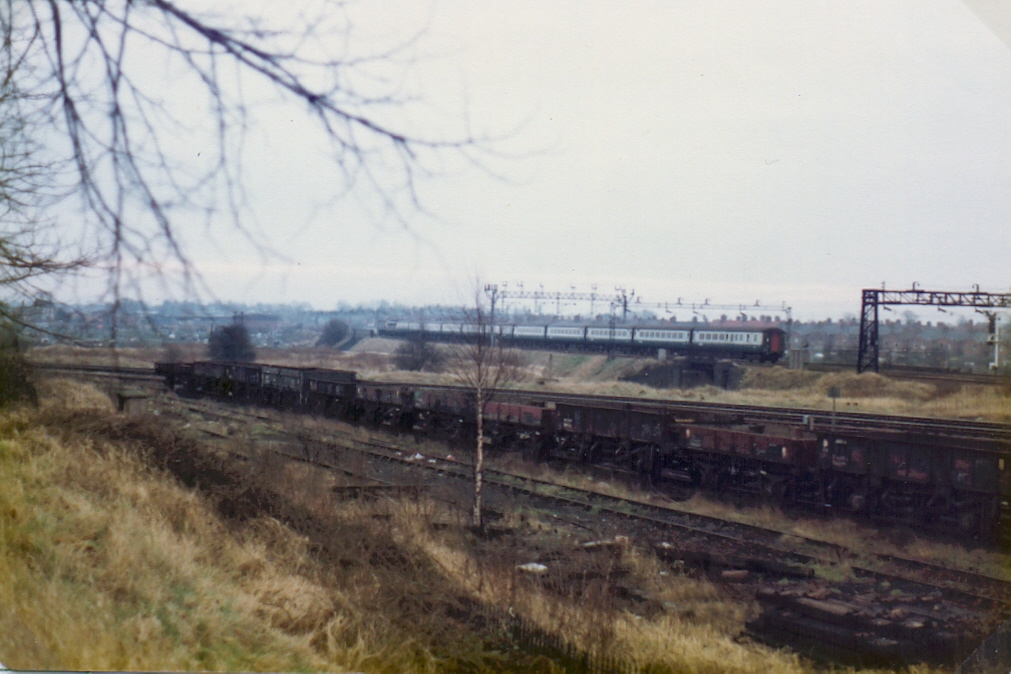
The Bone Yard, or cemetery sidings as it was known to generations of railwaymen. These were once the carriage sidings and full of carriages used on local passenger trains but by the 1980's when I took these photos the sidings were neglected, overgrown and full of old cast off wagons which were used for permanent way work. The Leicester line goes around the corner on the left and an electric can be seen on the main line to Rugby. These sidings were later disconnected and a short spur put in to house a track machine, sections of track still exist but are stubs left in as it was not thought worth while lifting them. (Peter Lee)
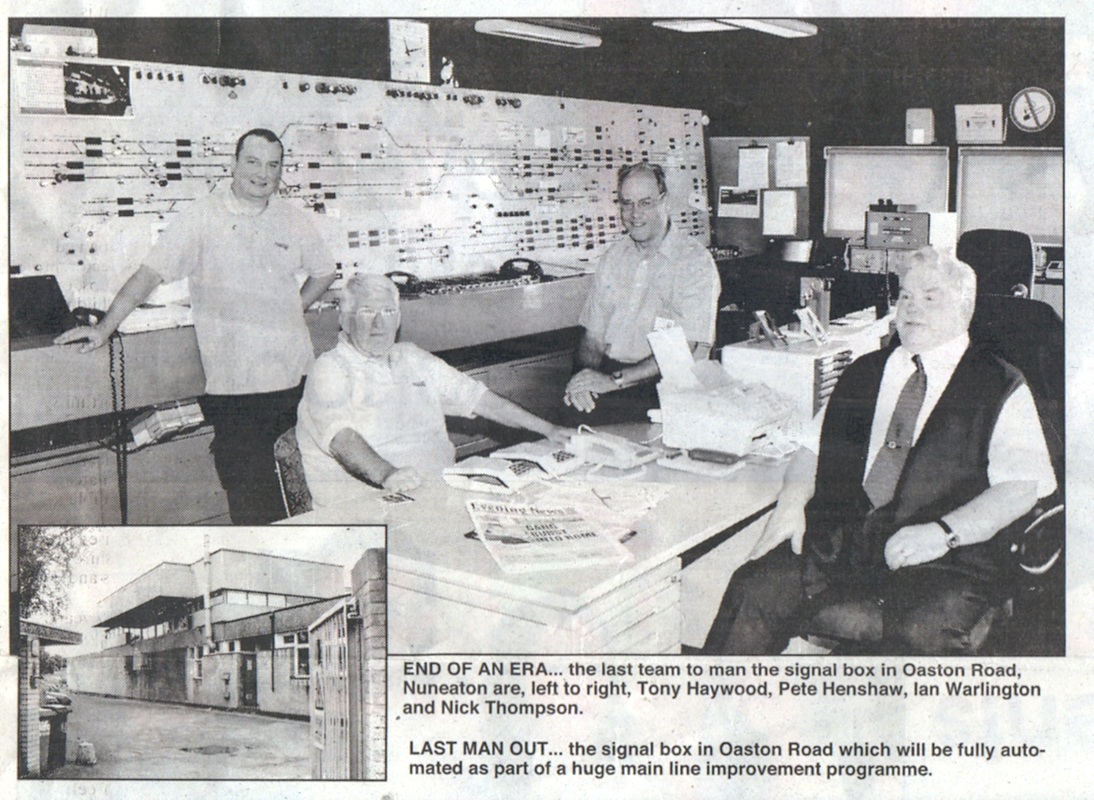
The story of the last manned signal box ended in 2008 when Nuneaton Power Box was switched out. This is the newspaper cutting from the Heartland Evening News (Saturday, August 23rd 2008) which commemorated the event. The power box opened in 1963 and replaced the old mechanical Nrs 1,3 boxes at Nuneaton. This was the time Network Rail invested hundreds of millions of pounds in upgrading the Trent Valley main line including new junctions at Rugby, two additional platforms there as well. This allowed a massive increase in services along the Trent Valley line. Nuneaton Power Box, although it lost its staff continued in use for about five years as part of the automated system. (Heartland Evening News)
THE STORY OF NUNEATON'S FIRST LOCOMOTIVE DEPOT CAN BE DOWNLOADED HERE
| Nuneaton's first loco depot was a very small affair when the Trent Valley line first opened. This is its story and the people that worked there. | |
| File Size: | 10453 kb |
| File Type: | doc |
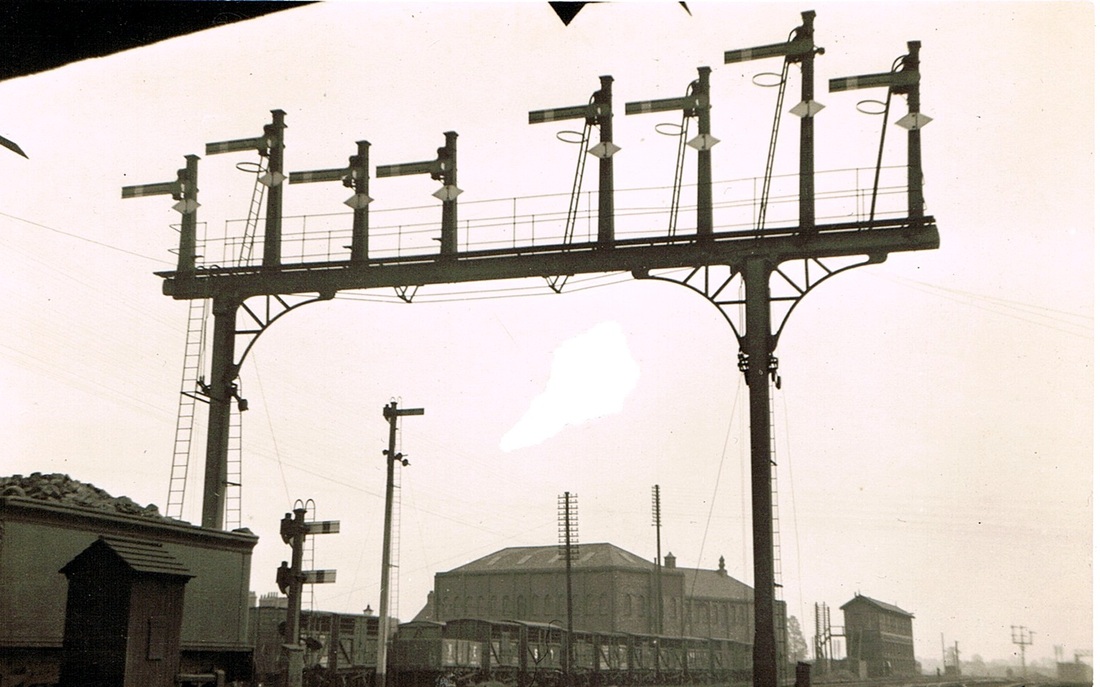
Looking under Leicester Road bridge in Nuneaton on the Trent Valley main line with a fine set of gantries controlling the main line. Nuneaton Nr. 1 signal box in the distance (180 levers). c 1933. The large building in the centre is the former silk ribbon weaving factory built in 1844. (E.H.C.Shorto)
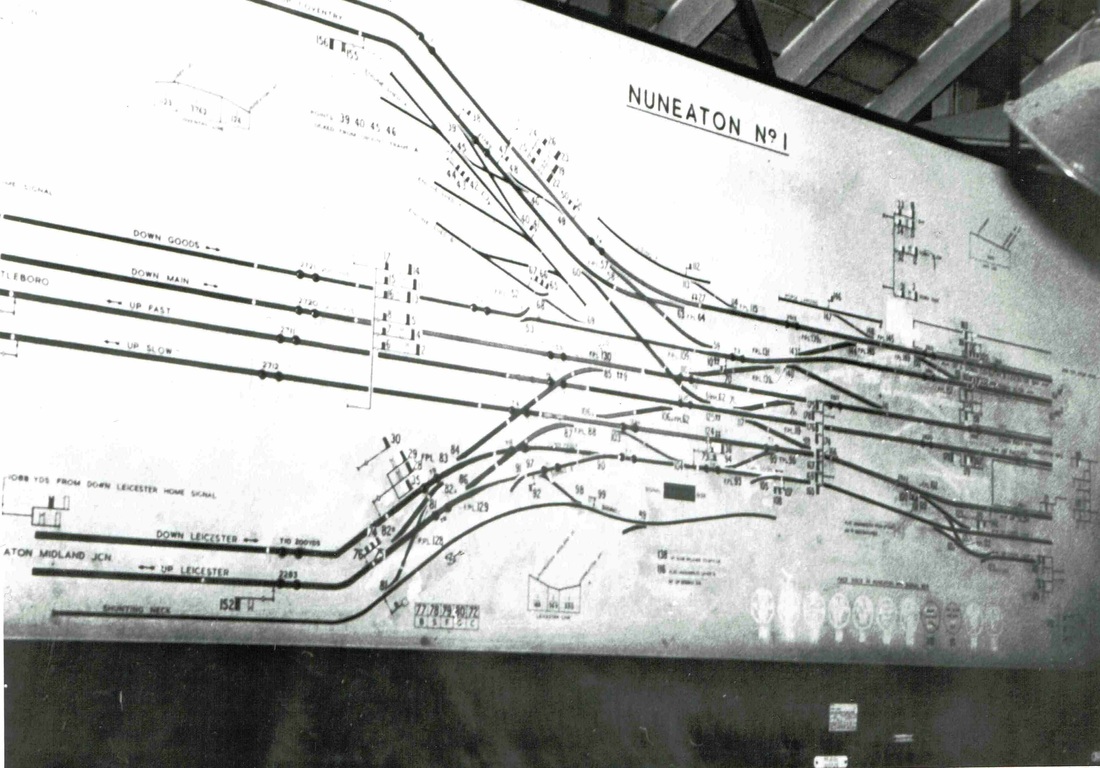
Nuneaton Nr. 1 box signalling diagram. The lines going off top left go to Coventry. The lines bottom left are to Hinckley and Leicester. The tracks leading from left to right are the Trent Valley Main line and the photo was taken in the late 50's or early 60's as the whited out outlines on the right indicate that the track which used to be the engine release roads has been removed by this time and whereas an intermediate box Nuneaton Nr. 2 box intervened between Nrs. 1 and Nr 3 box at the north end of the station, Nr. 2 had by this time been removed so Nr. 1 signalled through to Nr. 3. Nr. 1 box stood at the south end of the system at Nuneaton and controlled everything south of the Leicester Road bridge.
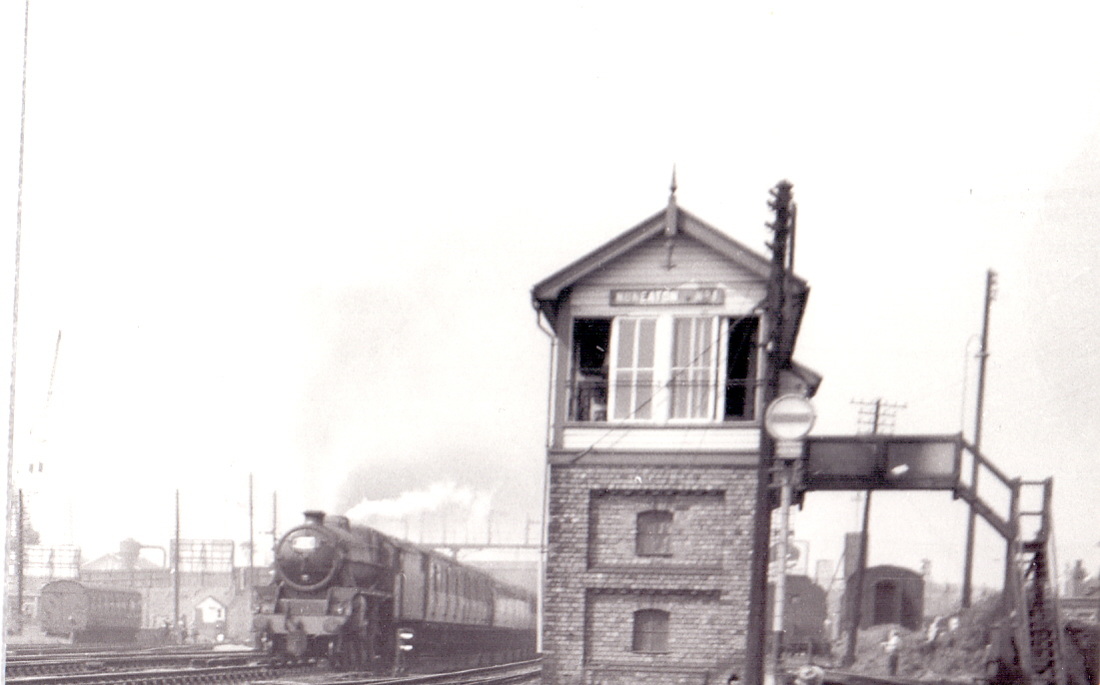
An "Up" express passes Nr. 1 signal cabin at Nuneaton in this unusual view of the box. A "Black 5" is the train engine. You can see the smoke blackened bridge where signalmen entered the box over a loop line where trains being marshalled in the Nuneaton marshalling yards were drawn forward before setting back over the hump. S&T vans on the right. (Ken Wood)
General views of Nuneaton Station, including details of the goods and marshalling yards, local traffic and train movements.
Nuneaton LNWR Goods Warehouse and Down Goods Yard
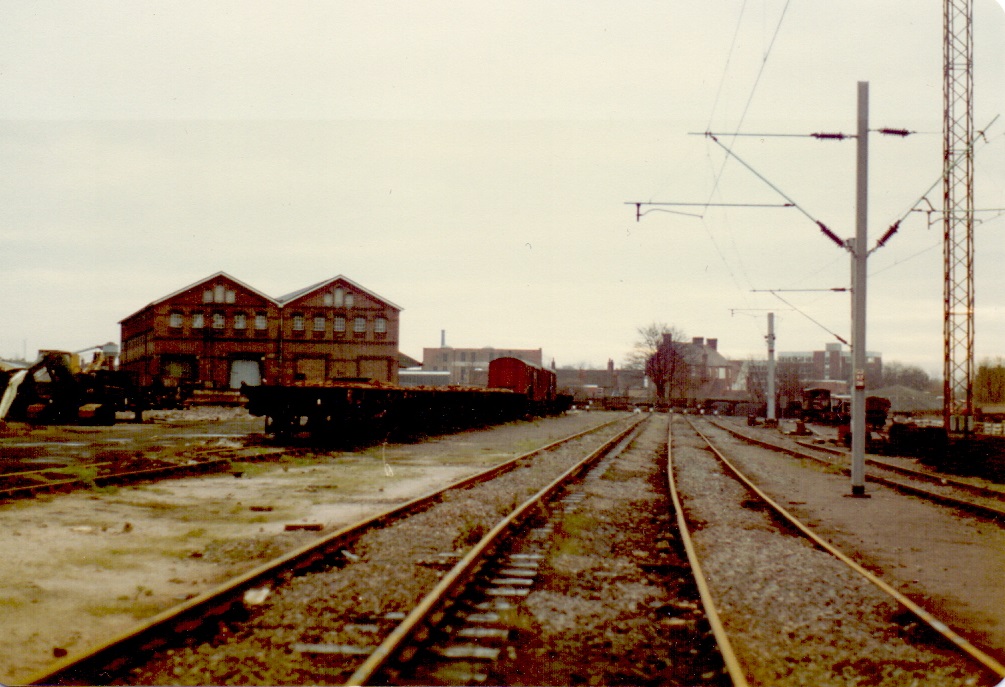
Nuneaton goods yard. The north end yard in its last days. Sometime in the 1980's. The wagons are probably cripples and may never have been in service again. The large LNWR warehouse goods shed in the distance. The square office block of F.H. Biddle's factory above the dark red vans. On the right the modern block is Blackburn House. Just to the left of the goods shed you can just see a large hopper which was associated with Nuneaton Timber Company's premises in Regent Street. (Peter Lee)
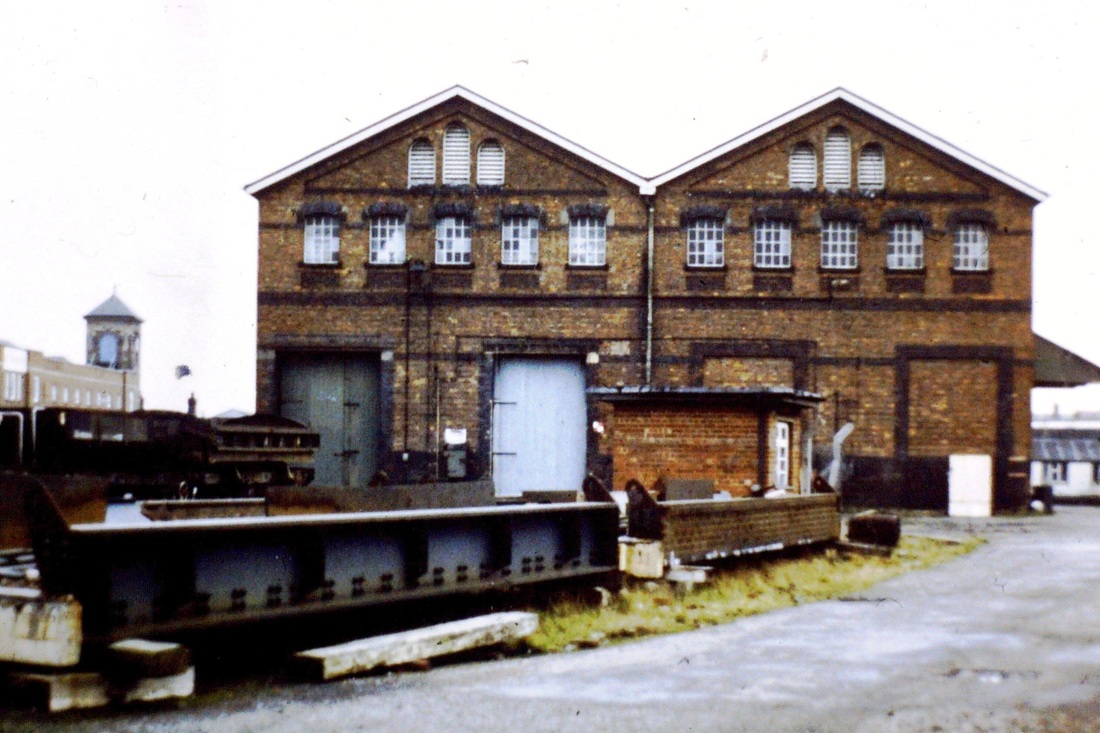
The LNWR warehouse in the down yard at Nuneaton Trent Valley station. There is a multi level car park on this site today. The remnants of a bridge in the foreground was dumped here but later re-used in another location. There was no goods traffic when I took this photo in the 1980's, the shed was empty and the goods yard used for permanent way vehicles and crippled wagons. (Peter Lee)
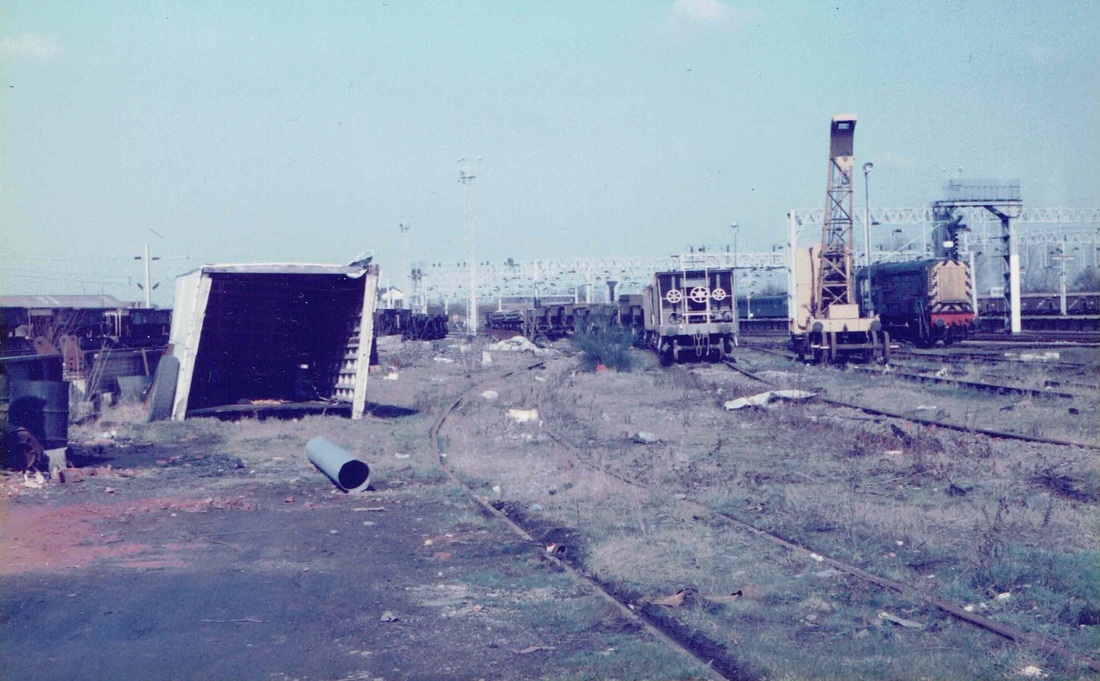
Nuneaton down sidings goods yard in the early 1980's. By this time the sidings had become a general dumping ground for railway detritus. The gable end of the down sidings signal box can be seen in the distance, and junk lies around. The wagons on the left and to the left of the crane may be cripples laid aside for attention, although whether they were ever put back into traffic is open to debate. Nuneaton's sole shunter an "08" "Dobbin" is parked and at this late date would soon be surplus to requirements. (Peter Lee)
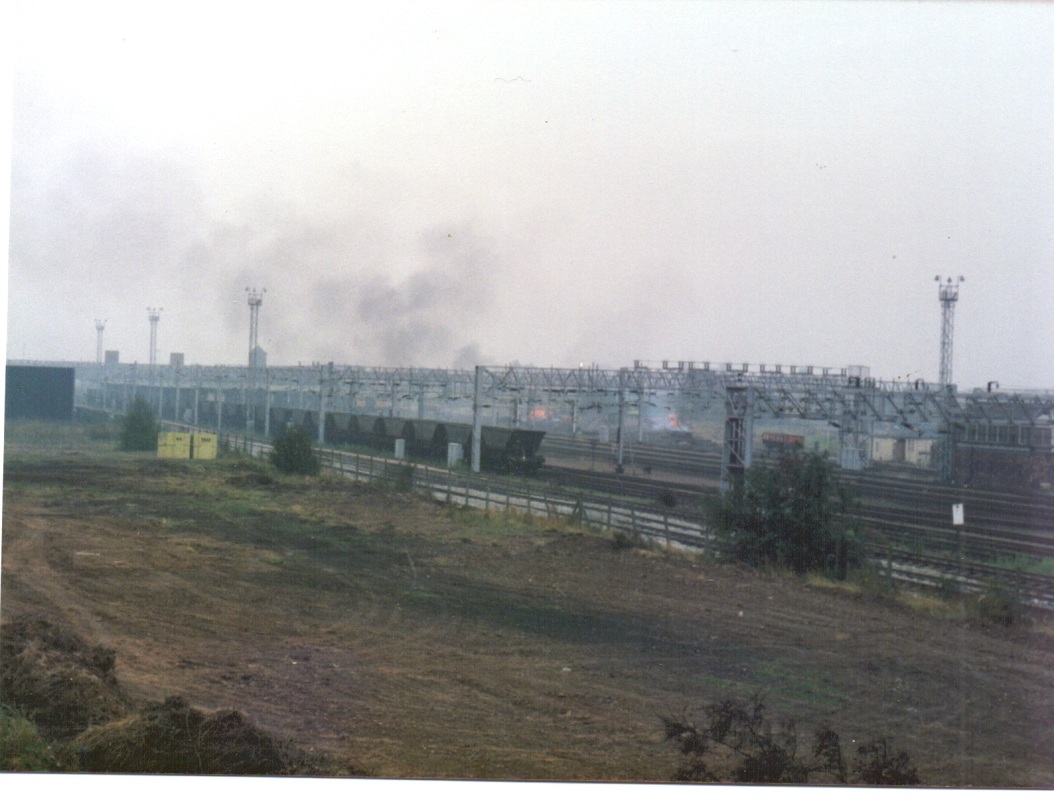
Nuneaton station from an unusual angle with the former goods yard being cleared on the right. Bonfires of old timbers can be seen. A stone train in what is left of the yard. The entire area in the foreground had been formerly covered in sidings but the old marshalling was taken up, and this site is now obliterated by the new loop line from Birmingham to Leicester and the new Platforms 6 & 7 occupy the view in the middle of the photo. The stone trains are no more too. (Peter Lee).
Nuneaton Marshalling Yard Hump
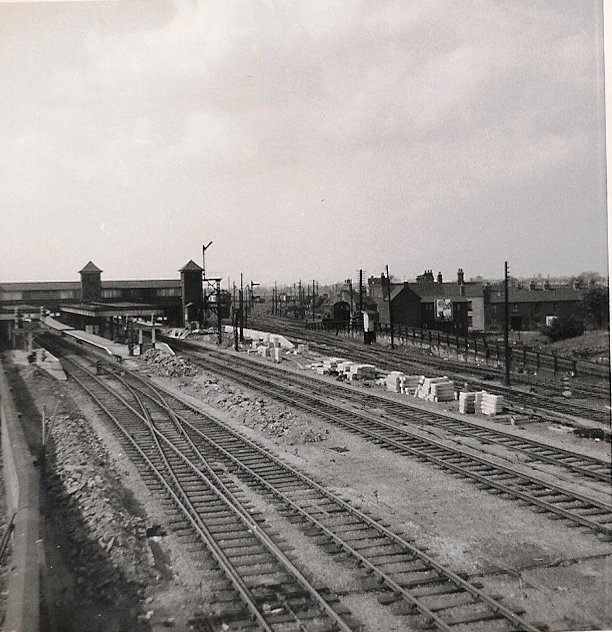
A photograph taken around 1960 showing the south end of Nuneaton station with platforms 1,2,3,4,5 from left to right. Recent changes have taken place by the removal of the engine lay by roads at this end of the station that allowed release of passenger engines from local trains so that they could be stowed away during train movements or before release to the shed for servicing. In the days of rapidly reducing steam power these were not needed. The local services were now increasingly handled by diesel multiple units, the old Nr. 2 signal box which stood between platforms 4 & 5 has gone which was responsible for actuating these points and attendant mechanical signals and transferring train movements between the much bigger and important Nrs. 1 and 3 boxes. The goods hump on the right was at one time one of two at Nuneaton. This was the front hump and the other one was known as the back hump, but this was taken out during rationalisation of siding facilities in the 1930's. Hump shunting in the marshalling yards at Nuneaton was a 24 hour operation up until this time particularly as the marshalling yards despatched vast quantities of coal. An 08 diesel sits on the hump.
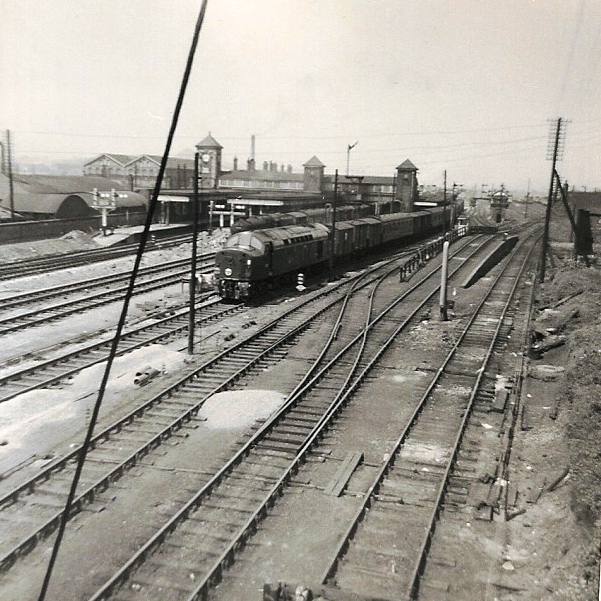
Another view taken roughly about the same time of the south end of Nuneaton station but the other side of the Leicester Road bridge with a good view of the hump. A Type 4 heads through Platform 5 on an up parcels/van train. What appears to be a Black Five 4-6-0 stands in platform 4 with an up express. The current Platforms 6 & 7 occupy this space at Nuneaton station whose passenger traffic is heavier now than back then and still today the modern equivalent of the van train in the form of Class 66's, and 70 diesels head container trains in ever increasing numbers.
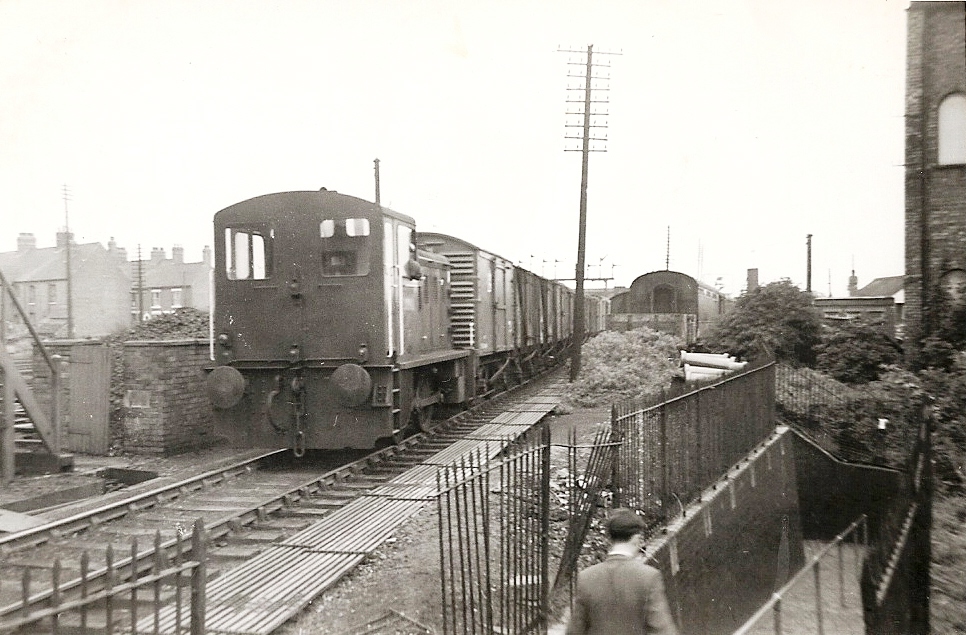
A diesel shunter D2912 propels vans back from the goods yard at the south end of the station with the box steps to Nuneaton Nr. 1 signal box on the left. Note the steps up to the box and a hole in the (birdcage) fence used by signal box staff to gain access to the box. On the right a carriage used by the signalling department locally in the S&T sidings. On the right the foot tunnel which is still extant today, On the extreme right hand edge of the picture is the former ribbon weaving factory in Oaston Road long turned into a warehouse which was burnt down in the 60's. About 1960. A real period piece with the old telegraph posts, and a goodly supply of coal in the signal box bunker.
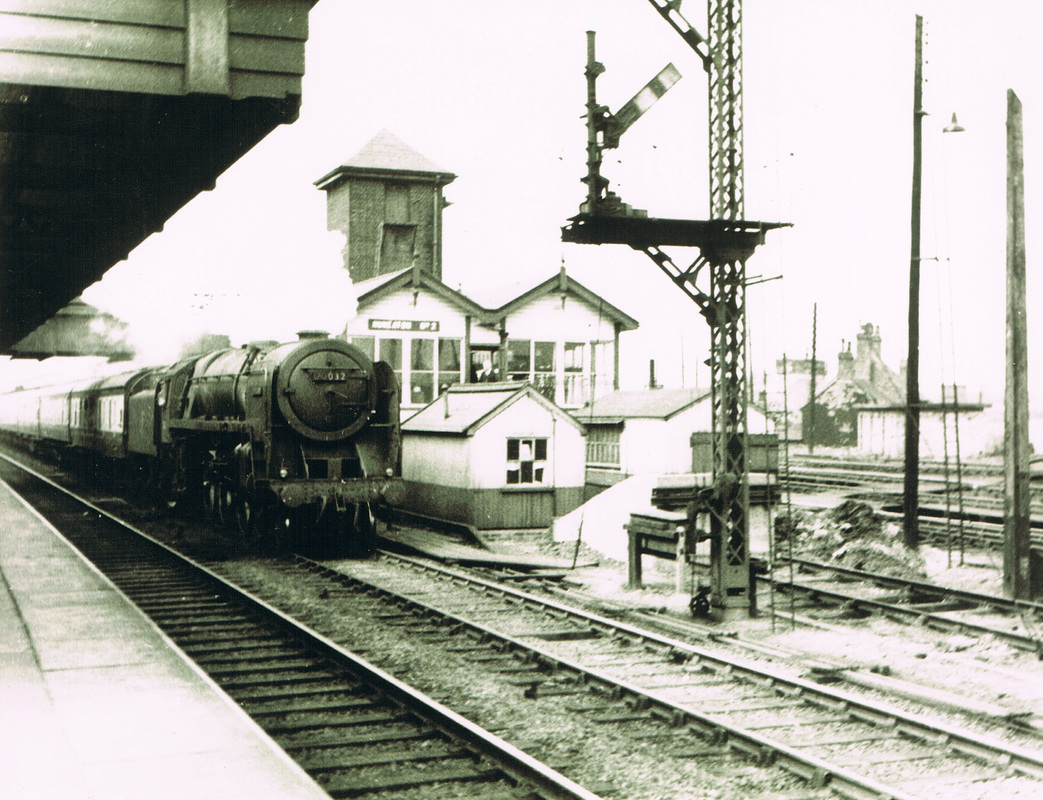
A "Britannia" 4-6-2 Nr. 70032 "Tennyson" on the up Manchester train hurtles through the station past the distinctive and unique double gabled signal cabin Nuneaton Nr. 2 box. This box was removed when the south end of the station was remodelled when dieselisation of local passenger services came in. The short loco release sidings seen on the right were taken out which had been used to allow tank engines on local passenger services to be removed from obstructing the through running lines between services. A signalman can be seen framed in the doorway. There were three principal signal boxes at Nuneaton Trent Valley and two sidings boxes controlling the up and down yards. Nr. 70032 turns up again on a photo further down the page on another Manchester express.
South End Traffic
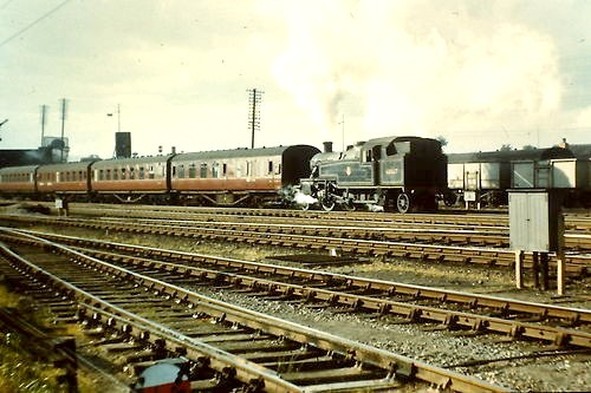
Stanier Class 3 2-6-2T Nr. 40087 was shedded at Nuneaton between October 1952-November 1960 (when it was withdrawn) although it lingered in Nuneaton shed yard until towed away for scrapping at Crewe works in November 1962. The train is a Leicester local. This loco appears elsewhere on this site in stored condition.
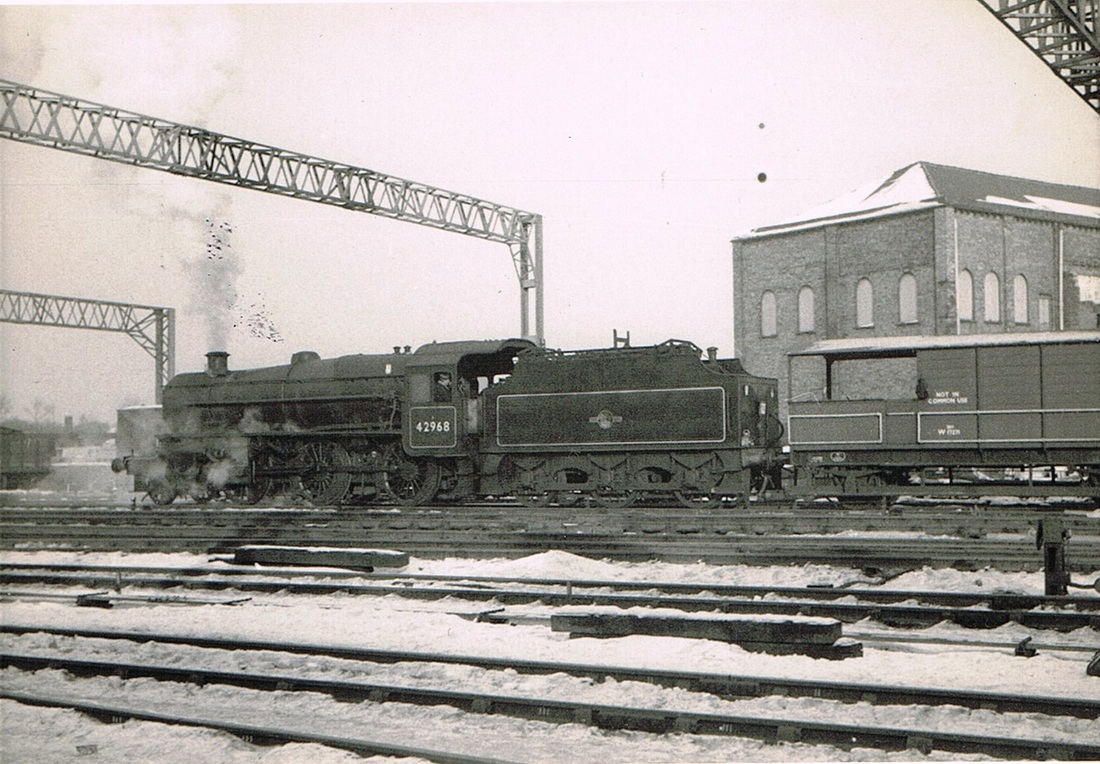
A Stanier Class 5 2-6-0 Nr. 42968 brings a northbound train into Nuneaton in the 1962/63 period when electrification was starting to get underway. 42968 was shedded at Nuneaton in June 1962 and went away in May 1963 and was withdrawn in December 1966. It is the only one of its class to survive the cutters torch and is preserved today on the Severn Valley Railway. Note the old building in the background which was built as a weaving factory in the early part of the 19th century and in recent years used as a warehouse. British Railways owned it latterly and they used it as a store. It was sold by the B.R. Property Board as a redundant asset in June 1967 and then used as a furniture store. Arsonists burnt it down in January 1969 and its site has been replaced by apartments.
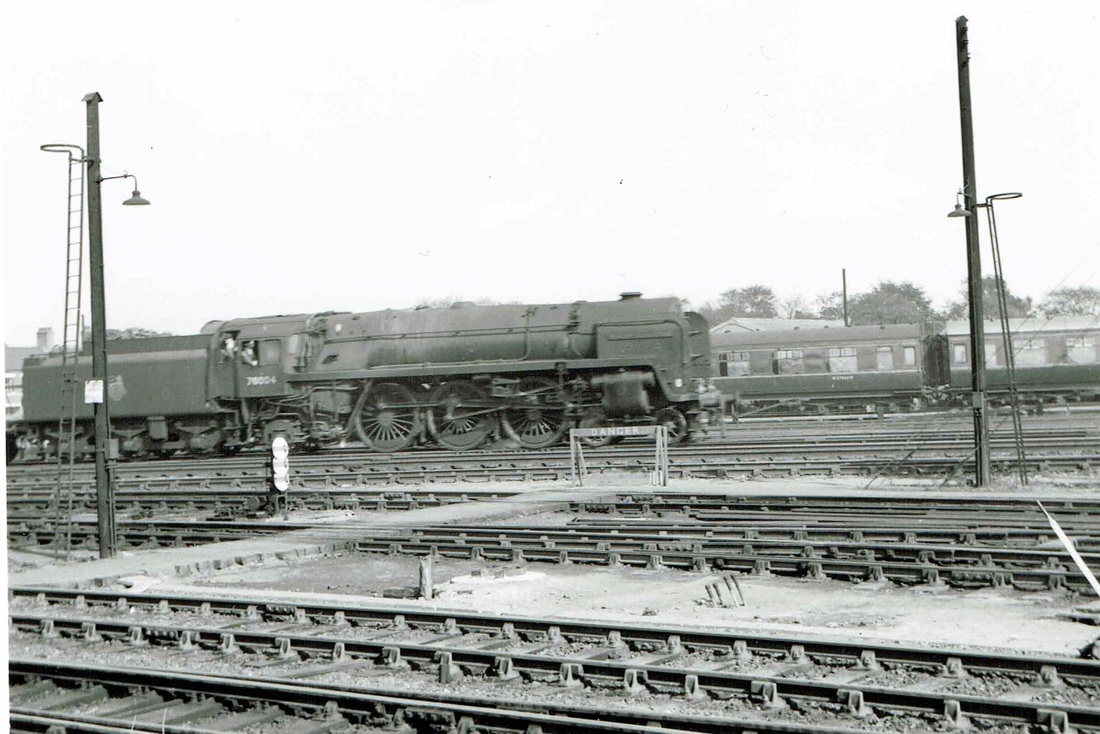
A Britannia Nr. 70004 heads south along the Trent Valley main line in the late 1950's. In the background is a rake of carriages in the "cemetary" or "bone yard" sidings. Nuneaton's carriage sidings. In the foreground the Coventry line with the boarded crossing enginemen used to reach the shed with the pathway off to the right. The doll signals control egress from the shed yard.
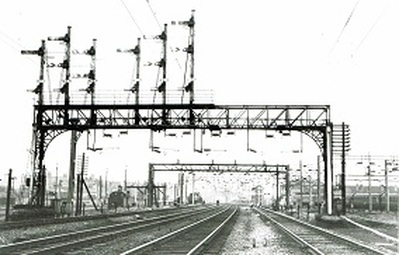
Someone has dashed out into the "six foot" and risked their lives to get this photo of the magnificent signal gantry at the south end of Nuneaton station looking towards the station. Just to the left of the main line parked in the "Back layby road" is 40087, a Stanier tank then laid off and stored. It was officially allocated to Nuneaton until November 1960 but lay stored like this until November 1962 when it was withdrawn and towed away to Crewe for scrapping.
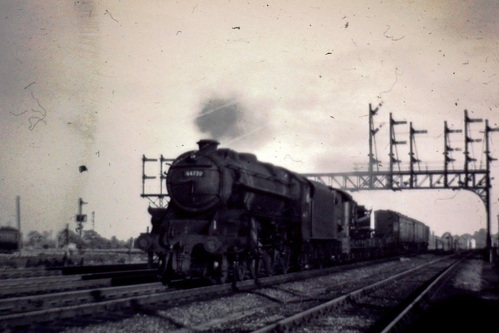
A rather poor image but one needing to be included nevertheless of a Black 5 on a breakdown train on the down fast at Nuneaton passing under the signal gantry adjacent to Nuneaton loco shed. The Leicester line can be seen going off to the right. I would imagine this is the Rugby breakdown crane. (Maurice Billington)
Nuneaton Loco Shed The development of Nuneaton's Motive Power Depot from an allocation of three locomotives in 1855 to over 80 in the 1950's. From a small wooden one road shed, to four then to eight roads. A major depot on the London & North Western Railway.
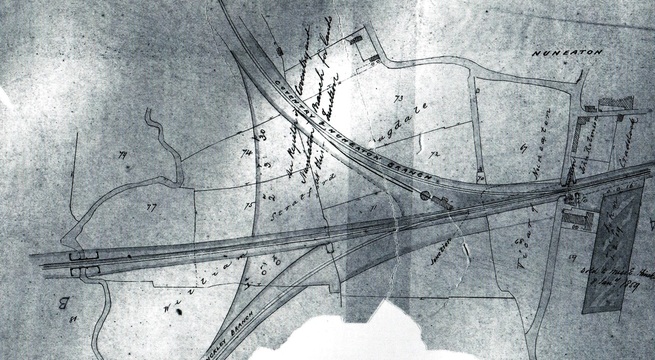 The shed as it was in 1862, with a turntable placed in front. The condition of the turntable made the building unusable in the 1870's and it had to be replaced with a larger table. This plan is from the Trent Valley track plan and section.
The shed as it was in 1862, with a turntable placed in front. The condition of the turntable made the building unusable in the 1870's and it had to be replaced with a larger table. This plan is from the Trent Valley track plan and section.
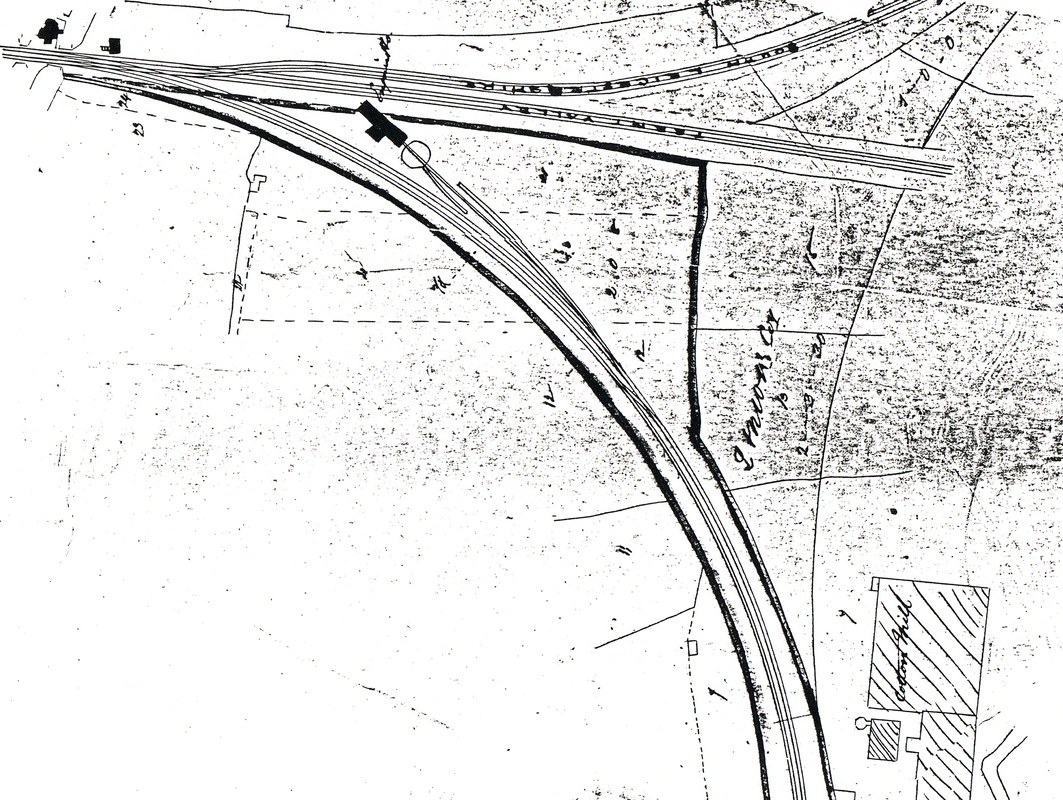
A later drawing of the Nuneaton shed with a new turntable and extra siding added to increase capacity. At this time the same loco which worked the Coventry passenger service was used on the Leicester service as well without changing the coaching stock. The later Nuneaton Cotton Mill has been erected by this date. The wooden shed blew down in a gale in September 1878 and was replaced by a four road shed below.
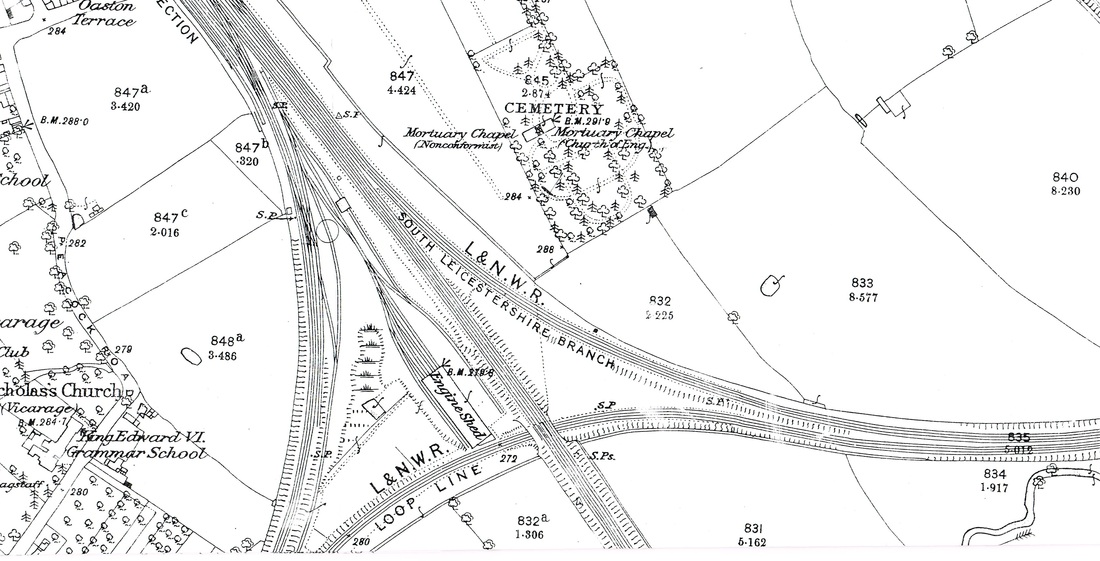
The "new" 1878 shed was already authorised when the old timber shed blew down in 1878. The old shed being made of wood did not do too much damage to the two engines parked in it. The four road shed was later extended to eight roads as traffic increased. Note that by this time the Ashby & Nuneaton joint line loop has been put in at the rear of the shed. This was a loop insisted upon by the Midland Railway as part of the Ashby & Nuneaton scheme to give their trains working from Ashby direct access via the Stoke Golding-Hinckley branch direct access to the Nuneaton Coventry line where they had gained running rights. The road we know today as King Edward Road is called Peacock Lane on this plan. (Its ancient name). (Ordnance Survey).
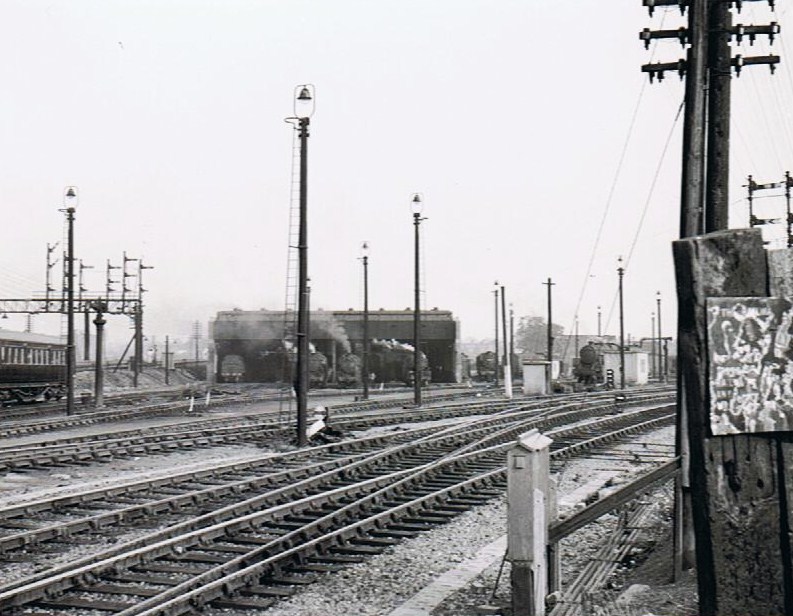
Nuneaton loco shed (Nr. 4 on the LNWR) was a very busy place. During WW2 there were over 100 engines on the shed some days, and as late as the 1950's anything up to 80 locos allocated. After dieselisation and the closure of so many collieries in the area in the early 1960's work for locos based at Nuneaton was reduced considerably, Nuneaton shed closed on 6th June 1966. (Maurice Billington)
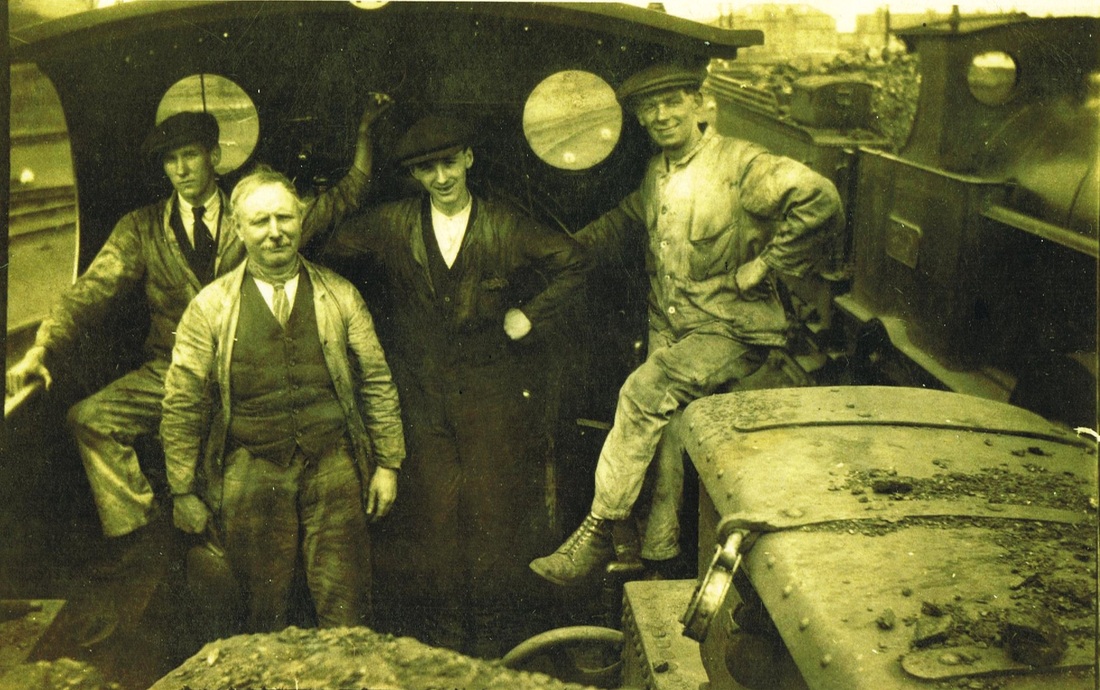
Engine fitters at Nuneaton in the 1920's including Charlie Woodford the thin fellow in the middle. This looks to be either a Coal engine or a "Califlower" 0-6-0. As you can see being an engine fitter was a filthy job, squeezing between the moving parts of an engine dealing with day to day routine repairs.
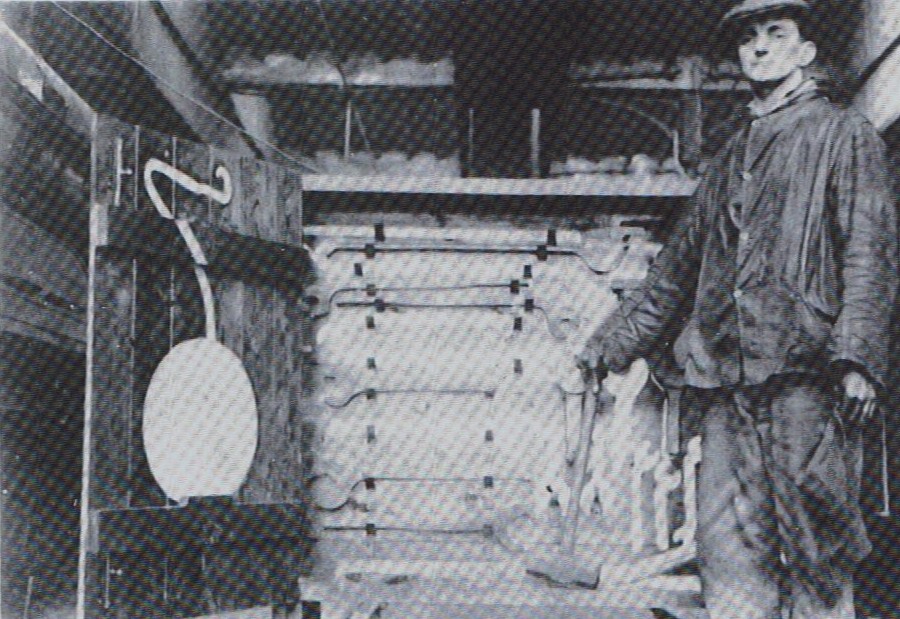
Charlie Woodford with his tool box. Mid 1930's. To the left is an ex LNWR "19" Goods. Nuneaton had a few ex LNWR "Experiment" 4-6-0's during this period "Buffalo", "Chillington" were examples, which spent their last days at Nuneaton shed. Charlie told me that when these "Experiments" were taken out of service their brass nameplates were sold for 10/- per pair (which was more scrap value than anything else). Note that Charlie's box is marked up with the location of the tools which are represented by painted outlines and yes in those days you could fettle an old steam engine with a range of spanners and a cast iron "ommer". One of the old fitters at the shed was known as "Fizzer" for his propensity with a blow torch in loosening tough bolt threads and another used the expression regularly whatever the diagnosis "It'll tek up when its warm". Meaning it will loosen when he's put of bit of heat into it. (Charlie Woodford)
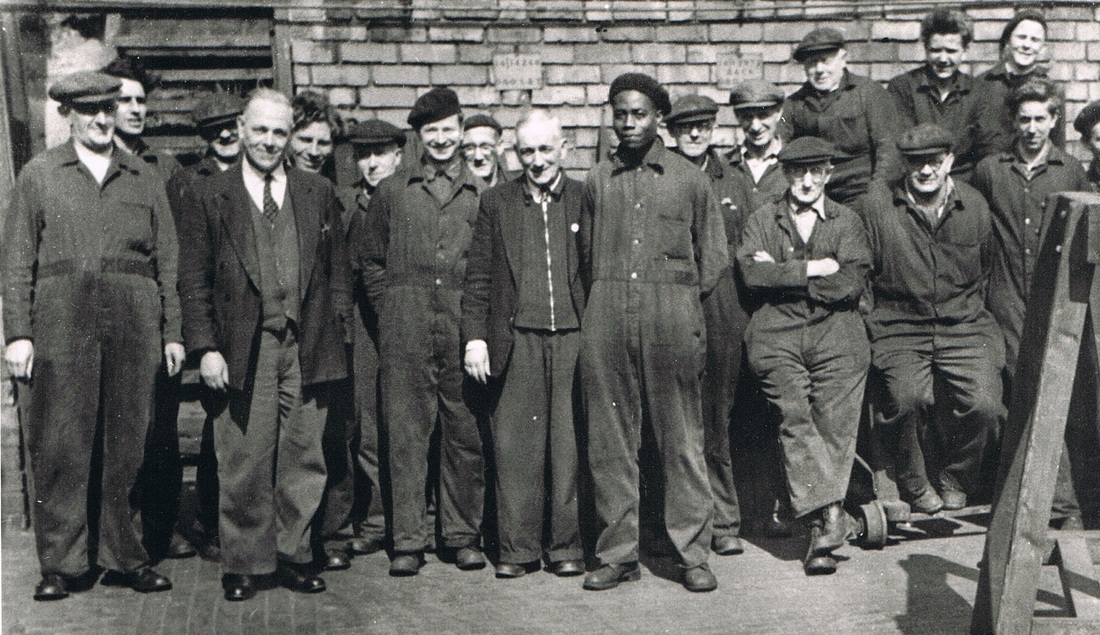
Nuneaton loco shed fitters in 1957.
Known names are left to right:
Charlie Woodford, Brian Southall, W.Osborne, Mr. (Dad) Shear - shed master, Ernie Morris, office clerk, Bill Draycott, Harry Gunn, George Brooks, Jack Perkins, running shed clark, ?, Jack Green, fitter, Tim Healey, Ossie Wilkes, tuber, George Summers, fitters mater, ?, ?, Tommy Nixon, fitters mate, Alan Burnham, fitters mate, Bobby Robins, Boiler Smith, Fred Ward, Grade 3 fitter. (Mick Lee)
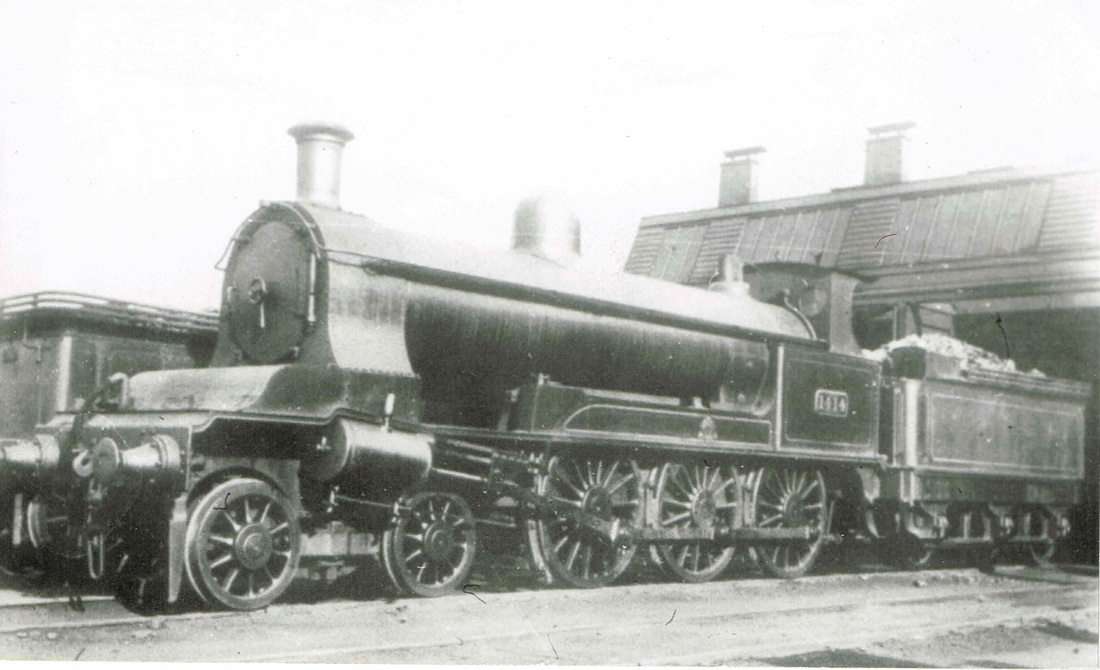
One of Mr. Webb's least successful engine designs although they were produced right at the end of his career. These Compound 4-6-0's built at Crewe from 1903 onwards were designed to be used for fast freight trains, but they were poor engines and earned the nickname "Bill Bailey" from the old song which in this case meant that this engine did not come home, or at least if it did a pretty torrid time was had on the footplate to coax it there by its crew. Nr. 1414 seen here was put into traffic in September 1904 and was withdrawn in January 1915 so only saw eleven years in service. Nuneaton had one or two but they go unremarked upon in the history books.
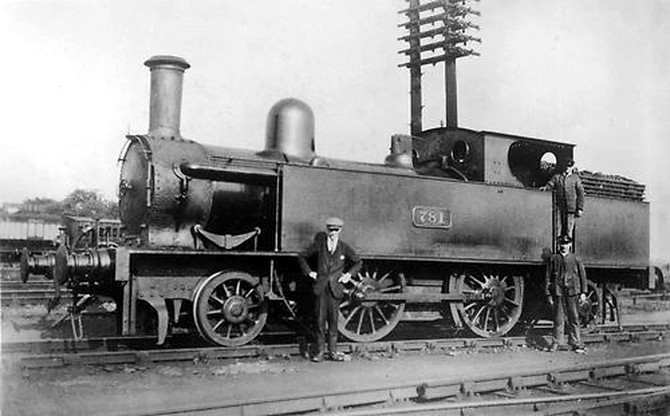
Webb 2-4-2T Nr. 781 between duties in Nuneaton shed yard in the 1920's. Nr. 781 entered service in June 1889, was renumbered by the LMS 6581 in September 1927 and withdrawn in March 1930. These engines were the usual local passenger train engines until their duties were taken over by standard LMS tank engines.
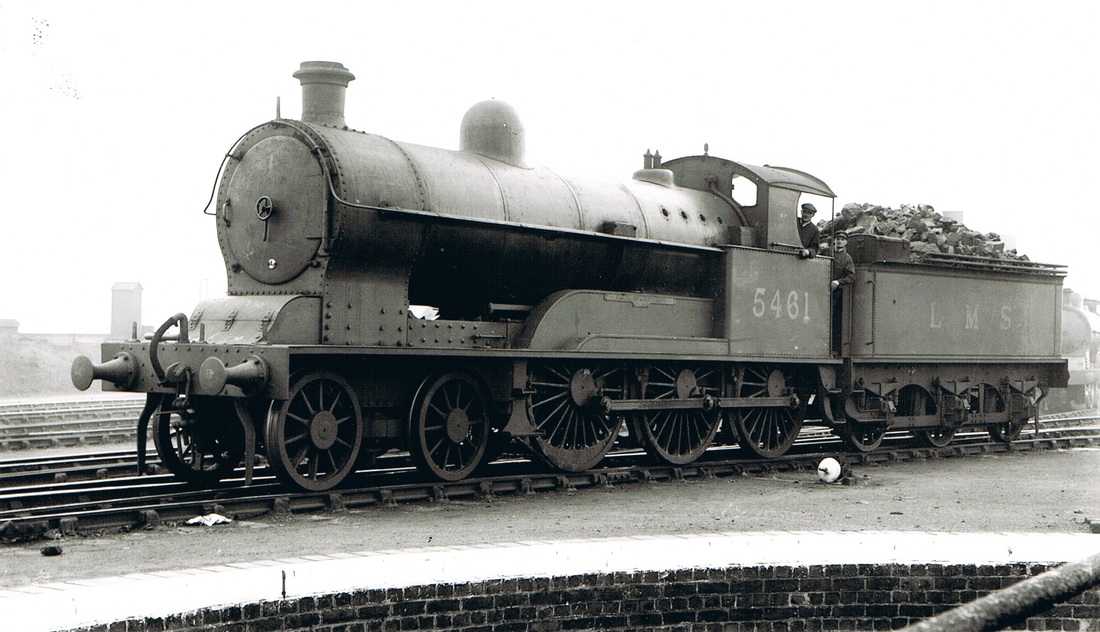
5461 again, same ocassion, with turntable in the foreground. 12 years later a new turntable was put in at the rear of the loco shed connecting up to the siding which was the former goods loop put into the back of the shed. The turntable we see here was dispensed with and the pit filled in. The pillar like structure above the front buffer beam is in fact a fog hut on the main line and it does look as though its a foggy day in October 1932 when the picture was taken (W.L.Good)
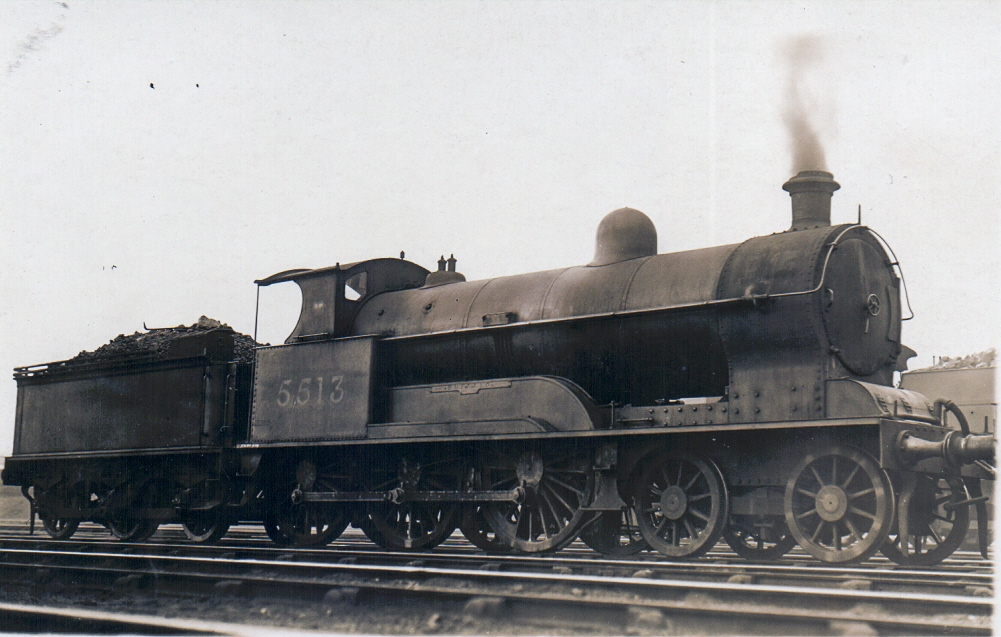
"Experiment" Class Nr. 5513 "Buffalo" was allocated to Nuneaton in the 30's from where it was withdrawn. Here is is in an idle moment at Nuneaton. Entered traffic in March 1909 as LNWR Nr. 2630 it was renumbered into the LMS series in July 1927 and it retained its round topped firebox until withdrawal in March 1932. (Attribution being checked)
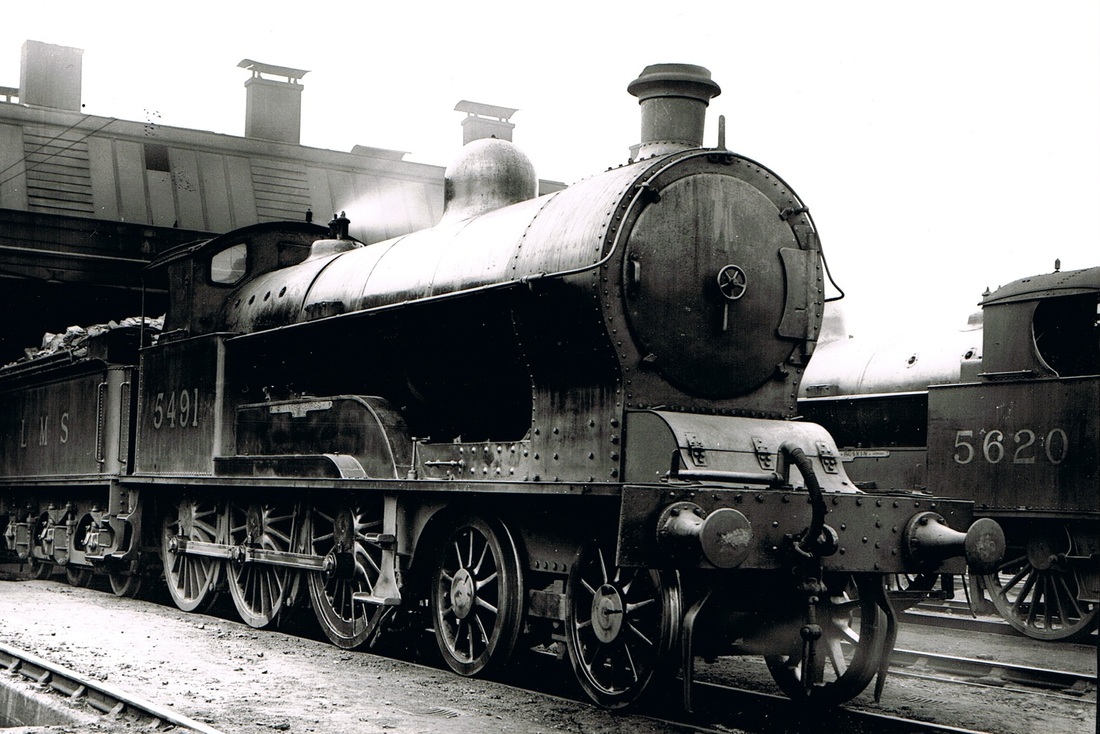
My old railway chum Maurice Bllington who had a discerning eye when it comes to railway aesthetics did not rate ex LNWR locos too much in the "looks" department. He described them as "Too Chunky" and perhaps you can see why in this former crack express engine on the old LNWR. Despite their looks though they were hard working, rugged, well built and took a lot of abuse from their heavy loads. So we can excuse them for that. Not only that they looked magnificent when new in that lustrous livery the LNWR turned their engines out in called "Blackberry Black". A deeply lustrous black achieved through the many coats of lead based paints applied, stoppered down, re-applied and the whole process was a major undertaking. It has been said that it took more man hours to paint a LNWR loco than to erect it! Their footplate crews were divided over the ergonomics of working on them. Some liked them others loathed them, although I dare say the gain sayers were mostly "Midland Men"! This photo was taken on 24th October 1933 and had less than a year to live before it went to the "melts" at Crewe in June 1934 and re-cast into a Black 5, or an 8F, or some other more modern piece of machinery. Nr. 5491 "Prince George" was an LNWR "Experiment" class built in 1907 entering service on the West Coast main line as Nr. 1135 in September of that year. Nr. 5620 alongside it was a "Prince of Wales" Class. which entered service in November 1913 and was withdrawn in March 1936. (J.M.Bentley Collection)
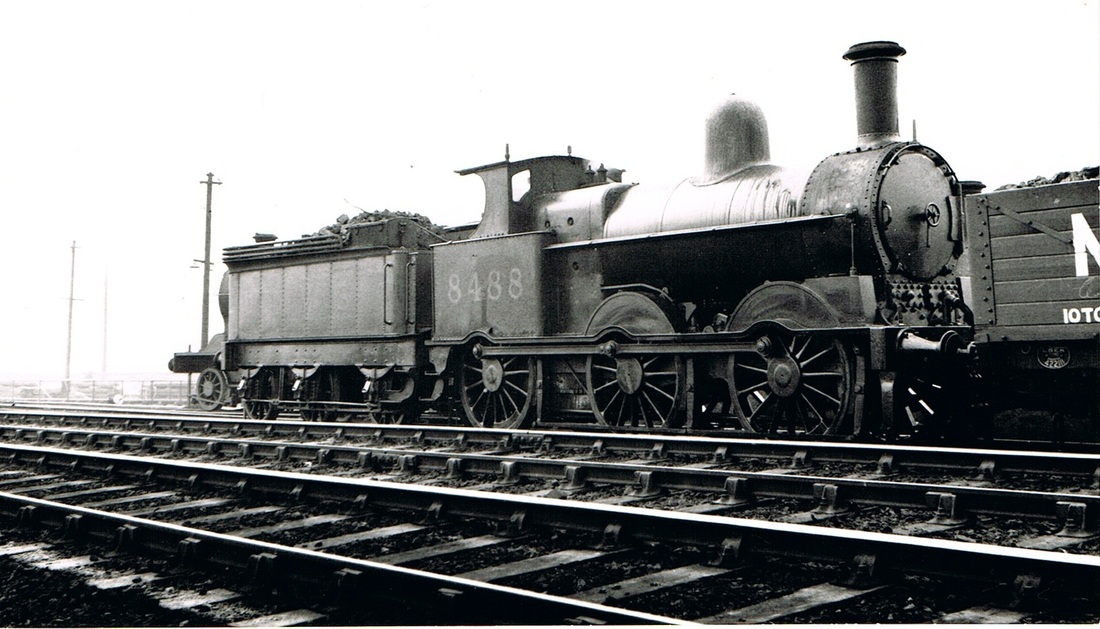
An ex LNWR 0-6-0 of a type popularly known as "Cauliflowers" which derived from the application of the LNWR coat of arms formerly applied to the centre splasher. Which from a distance looked like the vegetable of that name. These engines were used in their early days as express freight engines, and they did have a fine turn of speed, but the increasing heavy loads needed bigger engines and the Webb compound eight coupled freight engines were developed to deal with the more onerous trains, and the "Cauliflowers" were cascaded down to more jobs within their means, local freights, colliery exchange siding shunting, pick up goods, local passenger trains, yard shunting and that type of thing. As LNWR Nr. 1743 it entered service in May 1899, renumbered into LMS livery in September 1928, withdrawn in 1932.
(Gordan Coltas)
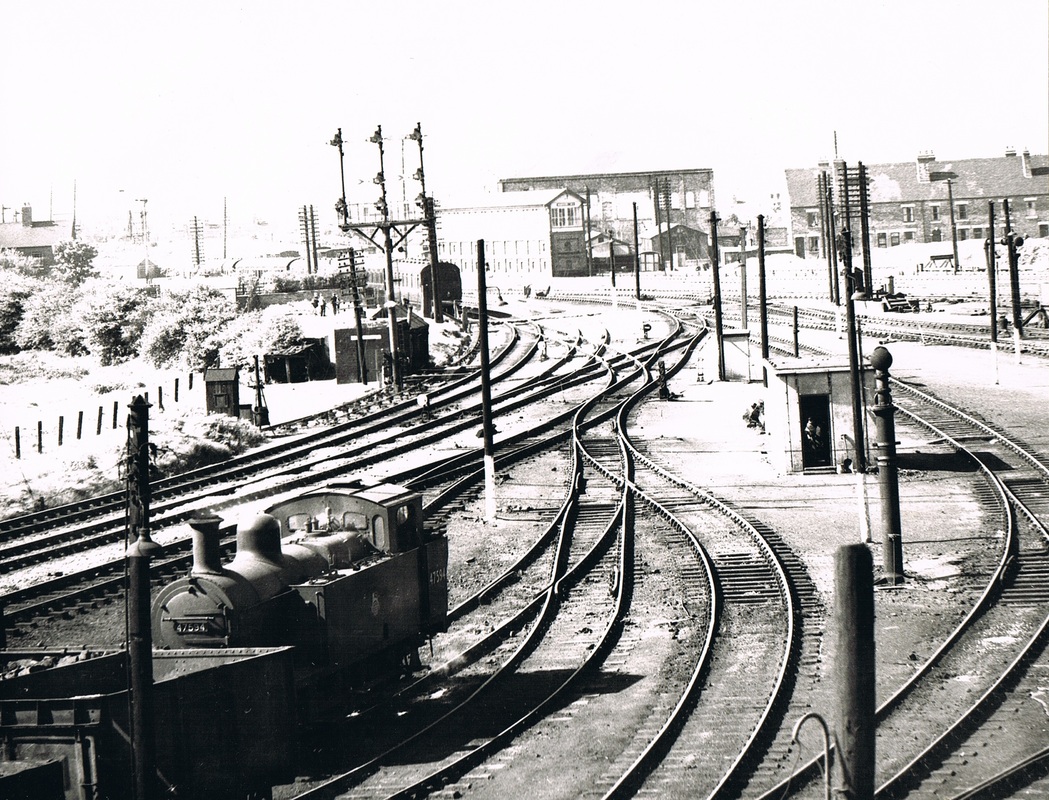
A view of the loco shed yard in the mid 1950's. Coventry line to the left, Nuneaton Nr. 1 signal box in the background. A rake of carriages. Nuneaton's shed pilot Class 3F 0-6-0T Nr. 47594 was allocated to Nuneaton until April 1959. The shed pilot was used to shunt locos around the shed yard, or in this case position coal wagons into position for coaling locos during their servicing regime. Sometimes 47594 would be used for shunting in the north end goods yard. The concrete cabin to the right of the picture was the Enginemen's "Bothy". The cabin was used for a "brew up" during rest periods and "snap time". An iron kettle was kept boiling 24 hours a day so that the enginemen could brew tea on demand. The stove was kept fired up 24 hours a day as well and gave the bothy a fairly "fetid" atmosphere especially in summer. One old engine driver, Ray Smith, remembers calling in there one day for a brew up found the cabin filled with enginemen having their refreshment. Ray was filled with a filthy cold and in the process of sneezing put half the men in there at the time "on the box". He was given the nickname "Virus" after that notorious episode. The former position of the turntable stood in the gap in the tracks just beyond the "Bothy".
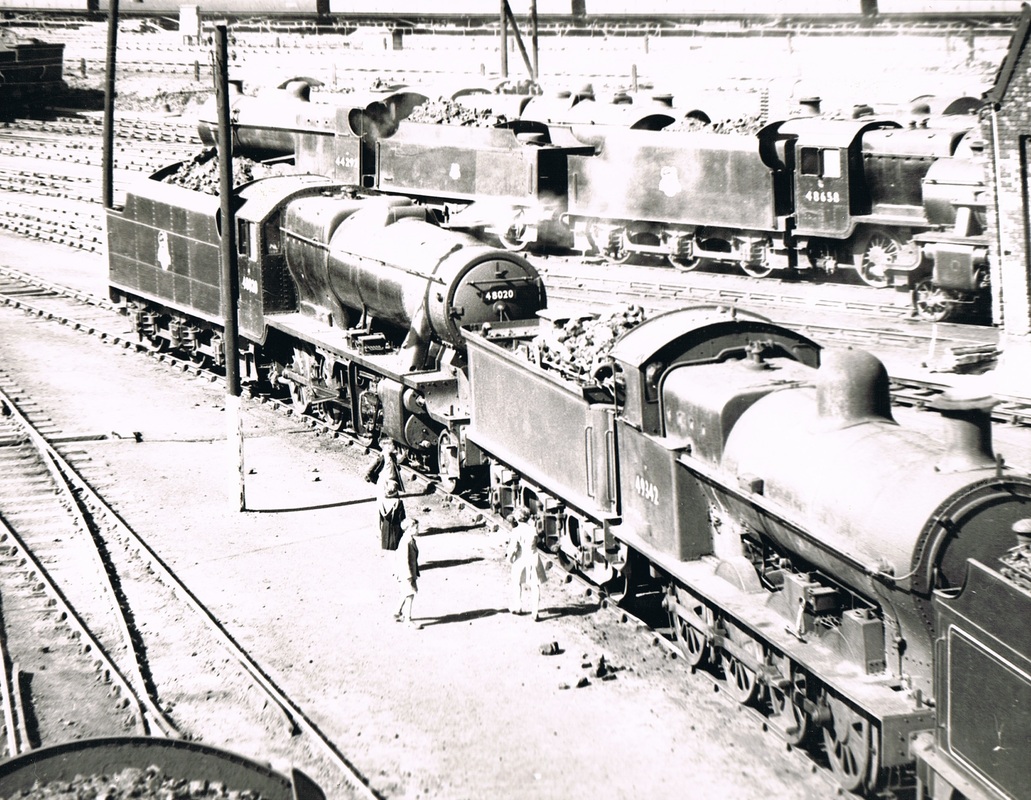
This picture was taken by shinning up one of the lighting columns in the shed yard. It looks like a Sunday. School kids explore the shed unmolested by the staff. Three old stalwart Nuneaton engines are identified. 48020 was on Nuneaton allocation from at least 1950 until August 1963, "Super D" 49142 was allocated here February 1953-December 1960. 48658 was here from January 1954-June 1962. The 4F 0-6-0 was a foreign engine. Nuneaton men weren't keen on the 4F. and resisted their allocation.
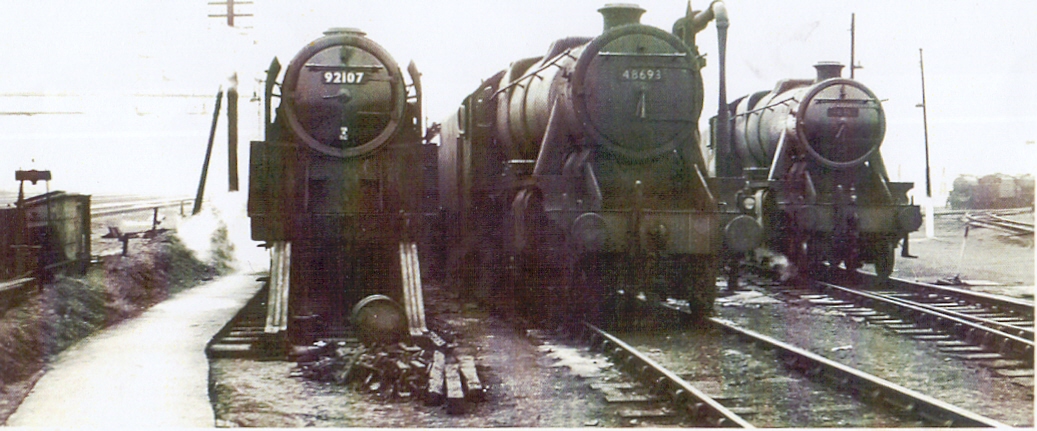
One of the first sights to delight us as we bunked the shed on a Sunday was the line up down the concrete path, particularly that next to the back layby road as we called it where you got close up and personal with these brooding monsters. 92107 had worked in from its home shed of Wellingborough and was moored up on the layby road. Whilst alongside it is 48693 another "Foreign" engine. The 9F was shedded at Wellingborough until December 1960 when it was transferred to Saltley. It was scrapped at Drapers of Hull in July 1967. (Attribution being checked).
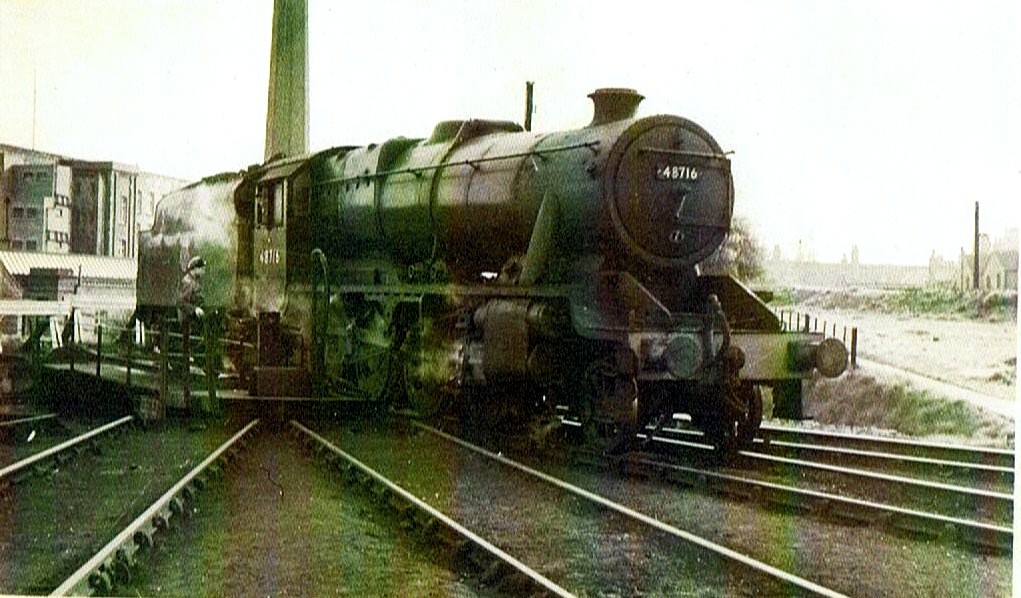
An 8F 2-8-0 Nr. 48716 moves off the turntable at Nuneaton shed. The Ransome and Rapier turntable was put in in 1944 to relieve access to and from the shed which was constantly clogged with engines. In the background is Fielding & Johnson's factory which had its own siding known as the "Cotton Hole Siding" which was accessed from Nuneaton shed yard. 48716 was allocated to Nuneaton from at least 1950 until September 1958.
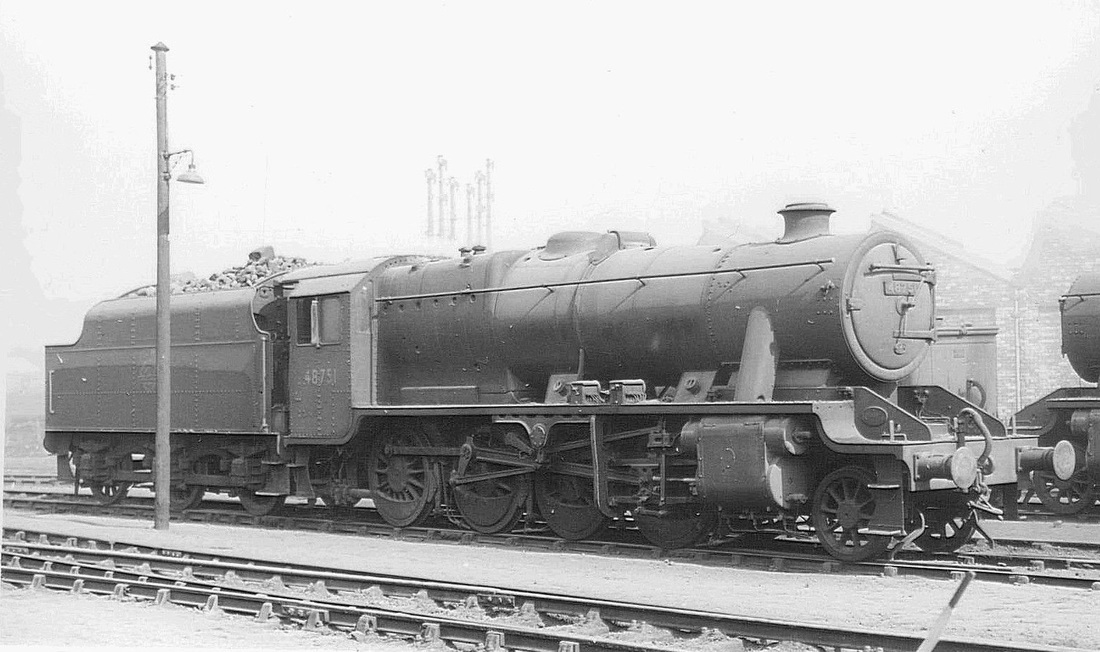
8F 2-8-0 Nr. 48751 was allocated to Nuneaton between September 1953 and May 1966. It is seen here on 21st March 1954 in the shed yard. It was built by the LNER at Darlington works and originally numbered by them as 3146 entering service in September 1946. It was renumbered 3546 in March 1947 before transfer to the LMS in December that year. (A.R.Goult, St. Albans)
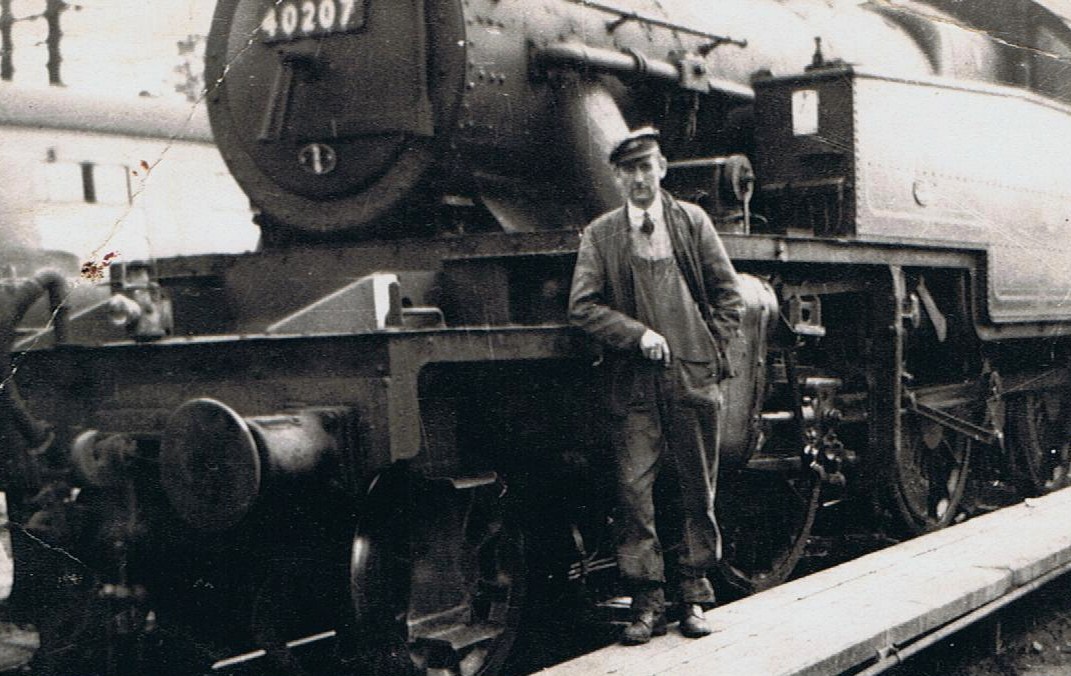
Class 3 2-6-2T Nr. 40207 has been engaged in carriage shunting in the "Cemetery Sidings" known to railway men as "The Bone Yard". Next to Nuneaton cemetery these sidings were used for carriage storage in the days when rakes of coaches were stored ready for use on various local workings, and spare coaches could be attached if the loads dictated it.
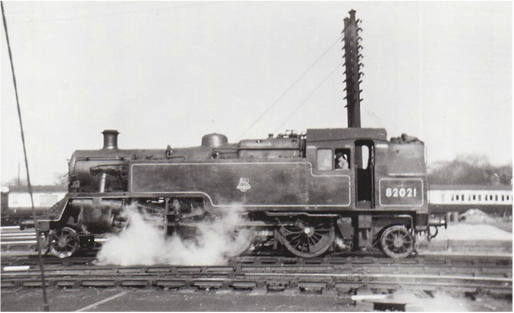
82020 & 82021 were newly outshopped from Swindon works on 29th September and 6th October 1954 respectively. It had been intended to send them originally to Hull Botanic Gardens shed. These Class 3 2-6-2T's were designed with a low axle loading and were the sister engine of the class 77XXX Standard 2-6-0's for medium secondary routes where low weights on bridges were needed. They were designed down to a 16T axle load. However, for some reason these two engines were sent to Nuneaton on loan, ostensibly due to a shortage of motive power and used on the Nuneaton-Coventry service where the first was noted on duty at Coventry on 21st October 1954. They were expected to supplement the Stanier Class 3 tanks for these duties but the Nuneaton shed management were a bit wary of them and 82020 seems to have not been so extensively used as its sister engine being used largely as shed pilot. They continued to stay at Nuneaton for the first two years of their life, being taken off loan and allocated there until 6th October 1956. Although they departed from Nuneaton on the 15th October 1956. On 2nd July 1956 Push & Pull working with Ivatt Class 2 2-6-2T's took over the Coventry working and 82020 & 82021 were re-allocated to Wrexham Rhosddu. These excellent engines had a woefully short life, particularly 82020 which had a relatively low mileage of approx 250,000 when withdrawn on 19th September 1965 and despatched to Birds Commercial Vehicles for scrapping where it was cut up in January 1966. 82021 was withdrawn on 17th October 1965 and was despatched to J. Buttigeig, Newport in January 1966 from Nine Elms shed and cut in by March 1966. They had barely 12 years of service which in steam engine terms was pitifully short.
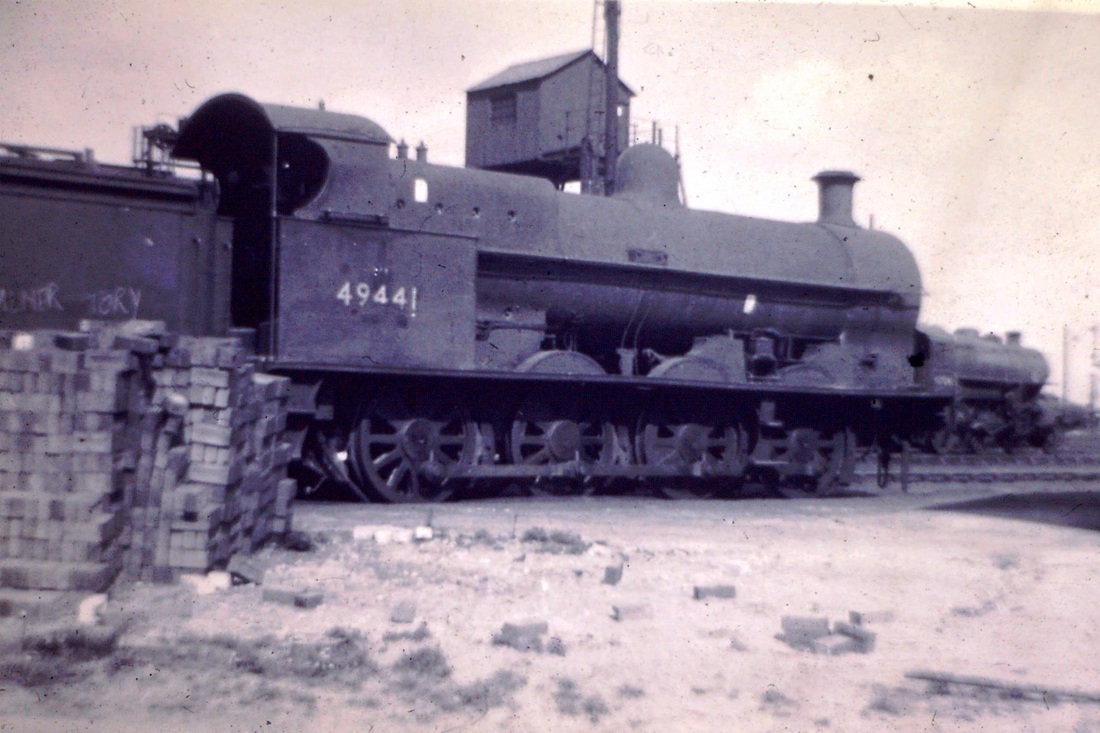
A "Super D" 0-8-0 Nr. 49441 rests on the shed between duties. This picture may have been taken between 1958-1961 when the engine was allocated to Nuneaton depot. Some wag has chalked on the tender George Palmer - Tory. This member of the shed staff was a leading light in the Attleborough Conservative Club. The structure behind the engine is a single skip ash plant.
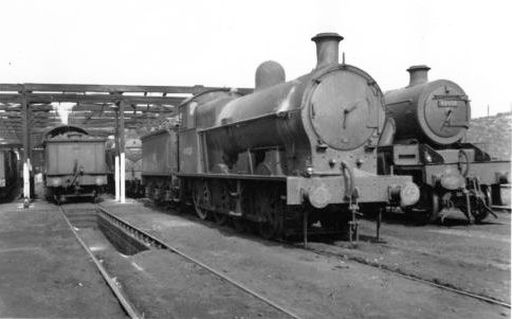
Ex LNWR 0-8-0 Nr. 49020 stands on Nuneaton shed in the period when the old locomotive shed roof was being renewed. The old roof was rebuilt in two stages. Here we can see the Webb roof has been removed preparatory to the height of the entrance being lifted to allow more clearance and better air circulation. The former cast iron roof which was corroded had been removed and a steel one fitted. Steam and smoke billowing around the roof had badly effected the stability of the cast iron structure. The renewed shed was only to last about 10 years in service after this.
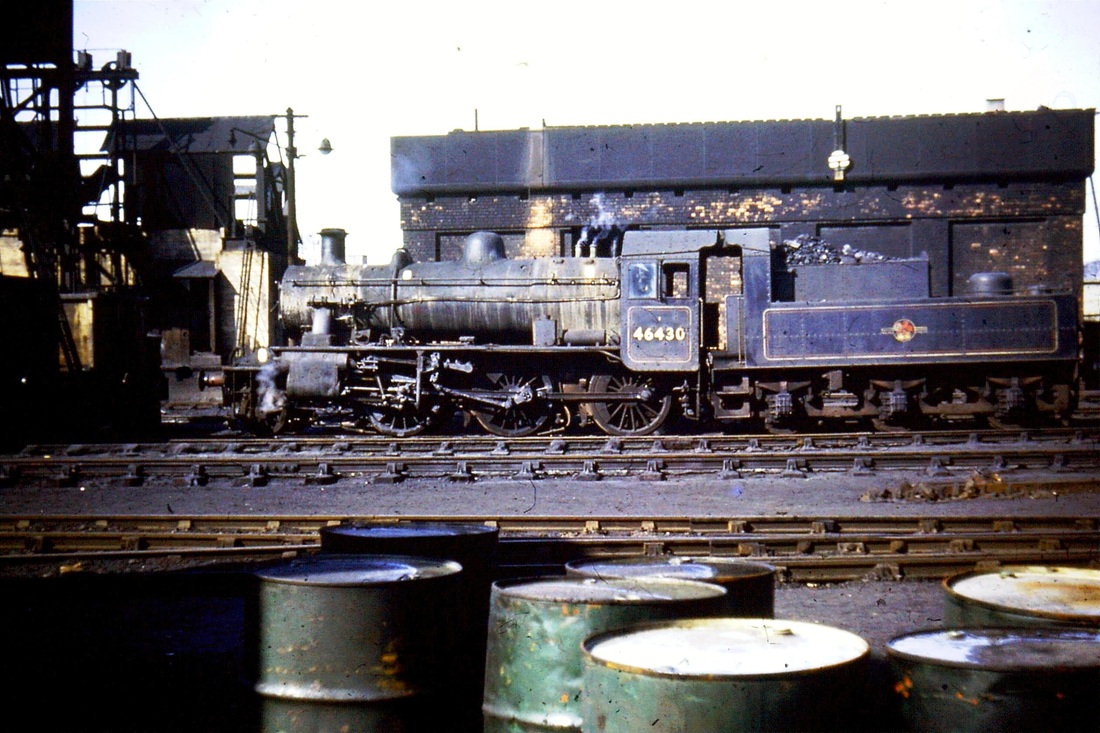
A class 2MT 2-6-0 Nr. 46430 on Nuneaton shed. 28.3.1966. As far as I can tell 46430 was not allocated to Nuneaton at this time. Behind the engine is the old coal stage with a water tank over the top which held 69,193 gallons of water. To its left the "new" coaling with its wagon hoist which had a 75T bunker. (R. Blencowe)
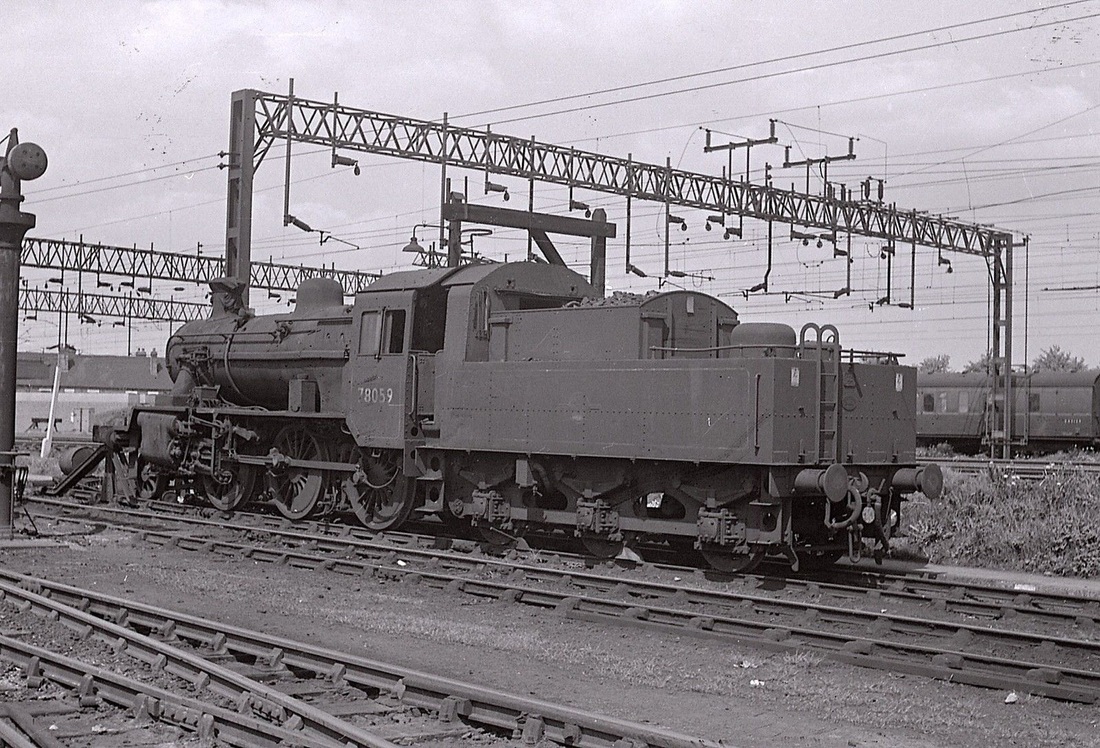
Standard Class 2 2-6-0 Nr. 78059 stored at Nuneaton shed. This was the last loco to leave Nuneaton loco shed having been allocated here between October 1965 and June 1966. Although the shed closed at the beginning of June when all the other locos were sent away 78059 stayed on for another three weeks to assist with the removal of locomotive dept. stores. It was withdrawn finally in November 1966 and is now preserved on the Bluebell Railway.
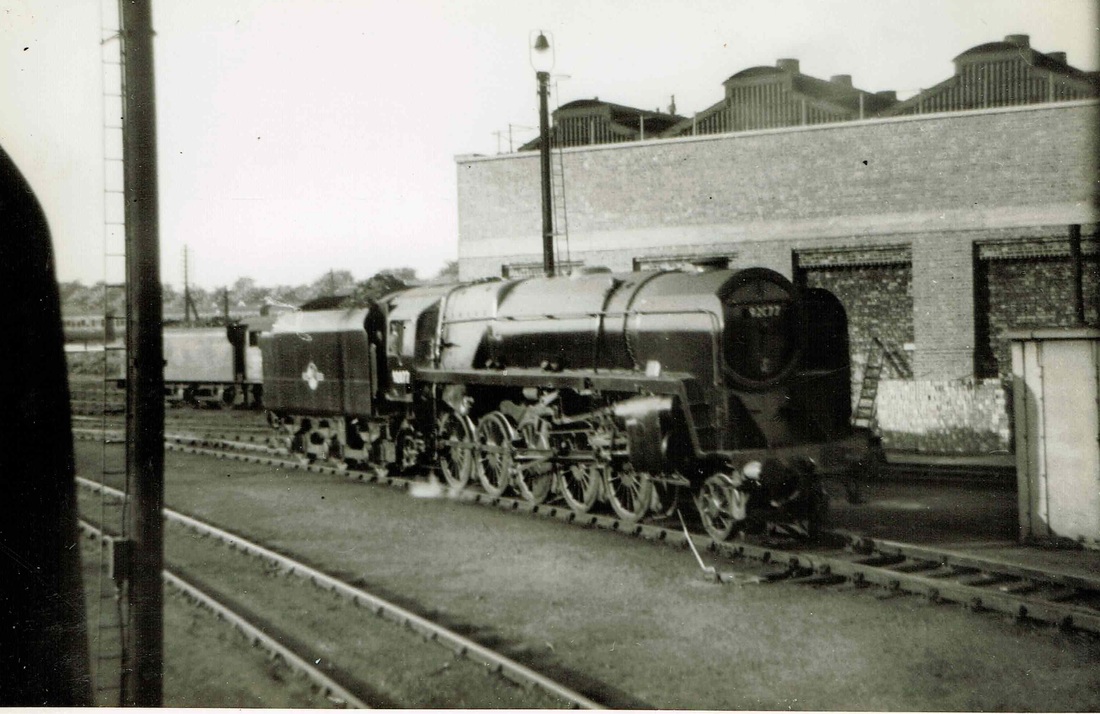
A fairly immaculate 9F 2-10-0 Nr. 92077 waits on Nuneaton shed in the early 1960's. No 9F's were allocated to Nuneaton possibly due to the difficulty in turning them on the turntable at the back of the shed, although they appeared a lot on freight turns locally. On the odd occasion they appeared great care had to be taken in turning them as they had inches to spare on the turntable so positioning correctly was a problem. Duchesses and Princess classes were banned from the Nuneaton turntable as they were just too long. They had to be turned on the triangle formed by the loop to Abbey Street from the Trent Valley main line over the Ashby & Nuneaton joint to Weddington junction and then back to the station via the connection at Ashby Junction. (Michael Mears)
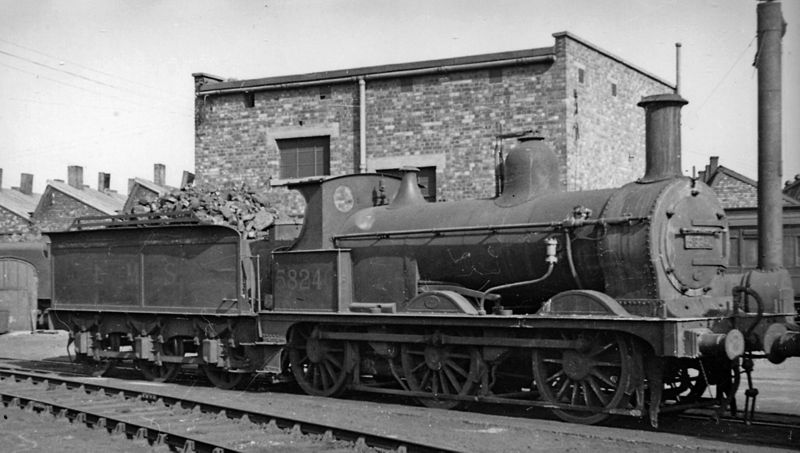
One of Nuneaton sheds stalwart regulars, Nr. 58240 had its origins on the Midland Railway. It was an un-rebuilt Johnson 0-6-0 which retained its original round top fire box Salter valves and dome right up until withdrawal. Its usual duties were shunting Abbey Street goods yard, or on the "Paddy" to Haunchwood or Arley Collieries. (The miners trains), and light trip working up to Stockingford and over the Stockingford branch. A pretty little engine much missed by many old timers on Nuneaton shed. It was withdrawn from Nuneaton shed in March 1953 and withdrawn from service in May 1953.
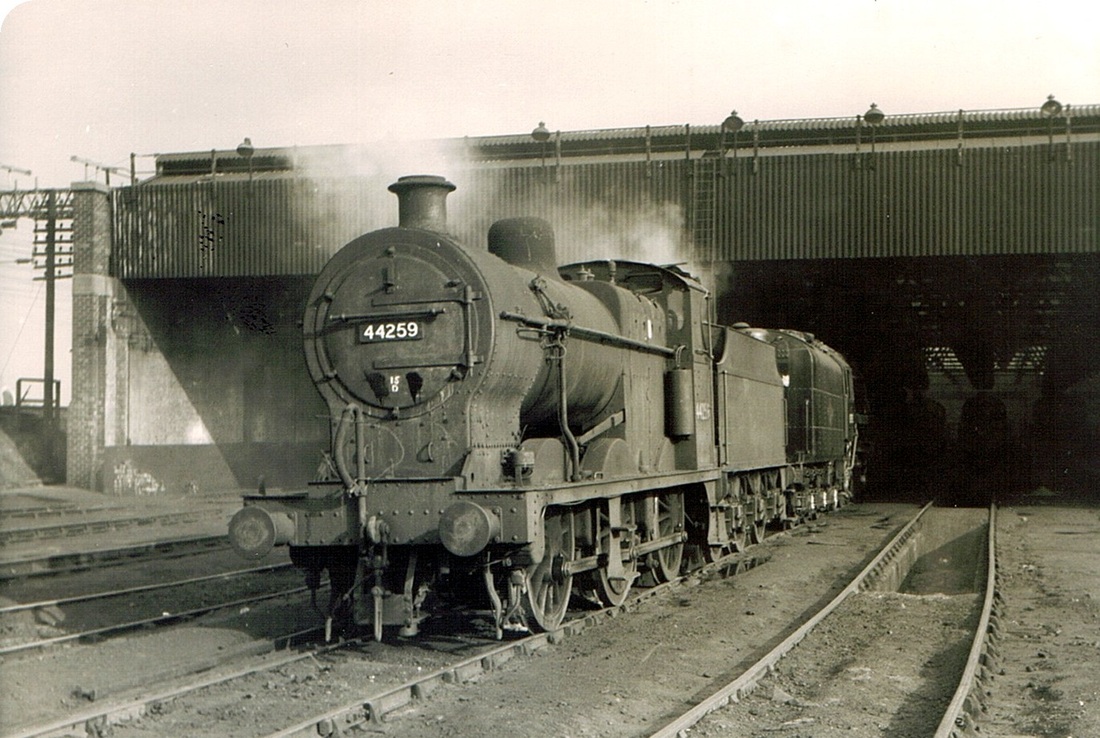
An LMS built 0-6-0 reposes on Nuneaton shed but I dare say the shed crews were keen to send it back to its home shed. LNWR men did not have much time for these engines whose axle boxes ran hot, and were "shy of steam". They combined too large a boiler on too flimsy a chassis that's why the LNWR men at Nuneaton were against them. We did not have many allocated for this very reason. Being an updated MR design the MR men were apologists for them. Despite this the LMS built hundreds and they did some yeoman service, but the crews had a rough time with them. The MR Class 3 which had a smaller boiler on the same chassis were regarded as good engines. The smaller boiler balancing the design pretty well.
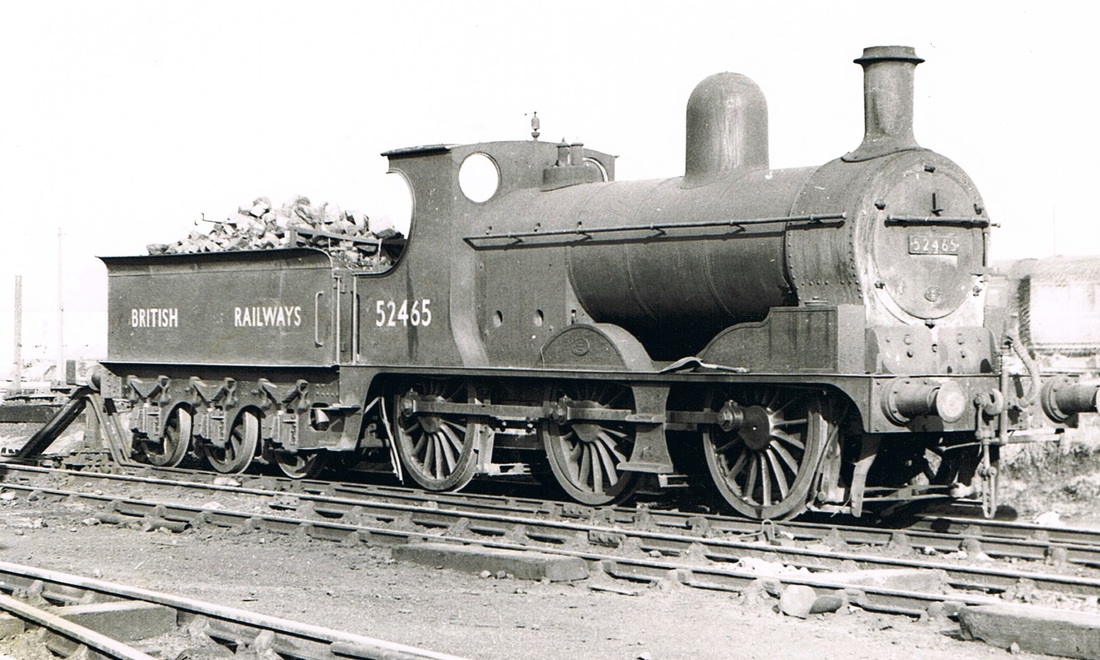
Ex L&Y 3F 0-6-0 Nr. 52465 was allocated to Nuneaton shed just after grouping and was drafted in to replace former LNWR and MR 0-6-0's for local trip workings. It was a strong engine with a good boiler which crews liked. Although the down side was the short cab. These engines were often seen on the Stockingford branch where they carried out excellent service being strong engines for the steep grade up the 1 in 20 branch. Eventually they were replaced by LMS Ivatt 2-6-0's on this service and 52465 was withdrawn from Nuneaton in June 1955. THe date of this photo is 13th November 1950.
(W.G.Boyden / c/o F. Hornby)
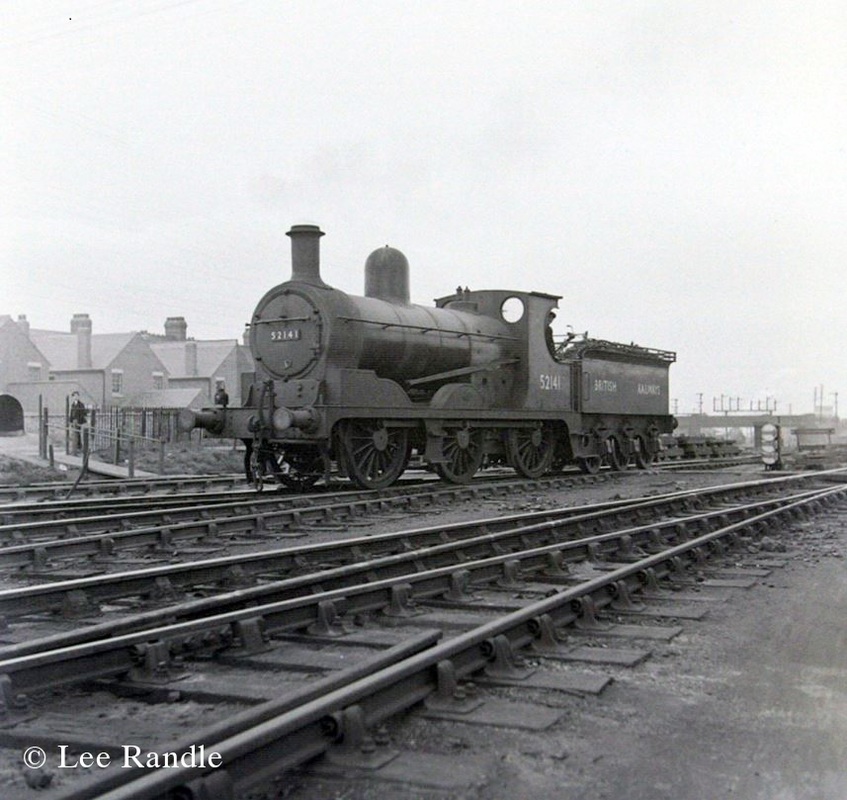
Ex L&Y 0-6-0 Nr. 52141 at the shed release road and maybe waiting to go off shed. Note to the right the shed entrance dolls, ground signals operated by Nuneaton Nr. 1. On the left a youthful trainspotter captures the moment in his notebook. 52141 was at Nuneaton from 1948 through to November 1956 when it was transferred away being withdrawn in May 1960. (Lee Randle Collection)
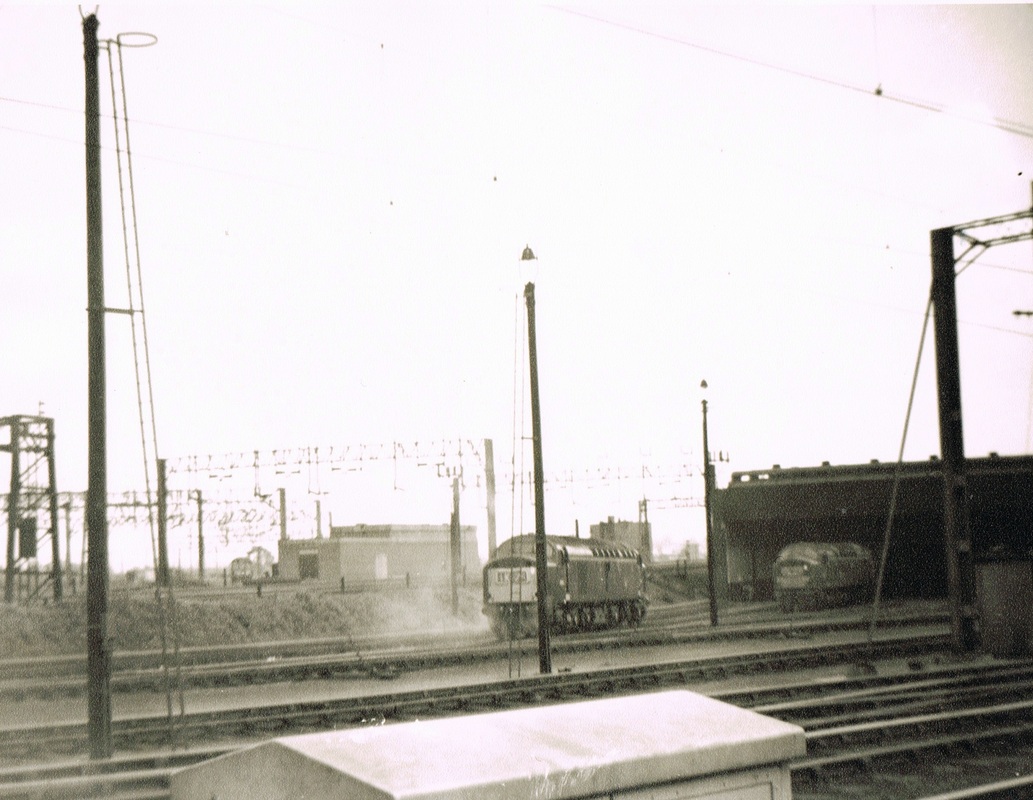
Nuneaton shed during the transition period 1963/64 when diesels were coming off at Nuneaton and being replaced by electrics as electrification was energised as far south as Nuneaton. So for a few months Nuneaton's steamers mixed with Type 4 diesels in Nuneaton shed as they waited to hook up to another southbound express.
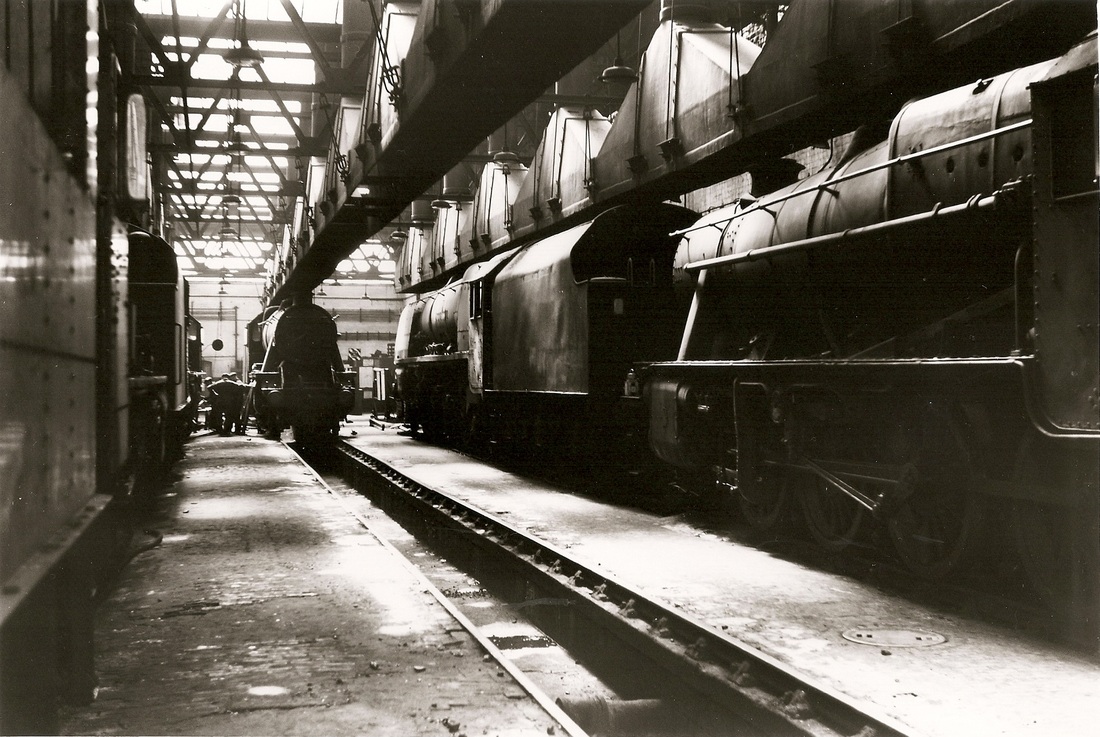
Inside Nuneaton shed. An atmospheric view of the interior with a group of shed fitters discussing the repairs to an 8F at the bottom of the road. Adjacent to the right is the preserved "Duchess" 4-6-2 "City of Birmingham" which was cosmetically restored and sent to Birmingham Science Museum. It was put in store at Nuneaton for some time before being shipped off for preservation. (Mike Kinder)
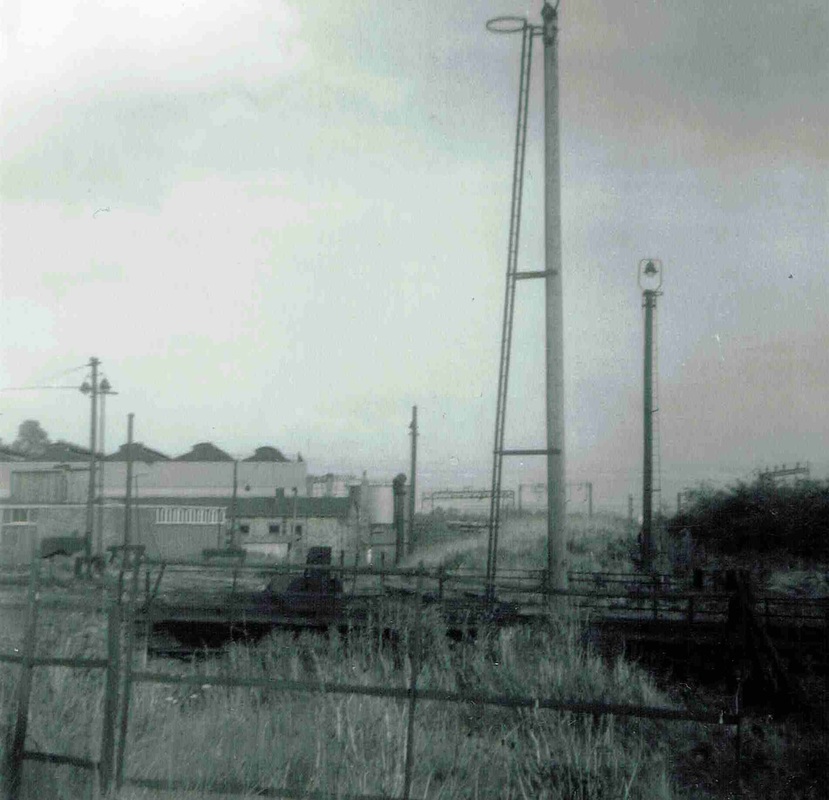
The rear of Nuneaton Loco shed on 14th October 1966. The shed closed on 6th June 1966. Weeds are starting to take over. The Ransom and Rapier turntable is in the foreground. It will never turn a loco again. At least one of its works plates was rescued by a local railway man who acquired it from the demolition firm as the table was being broken up and took it tottering home on the handlebars of his bike. It was very heavy. (Peter Lee)
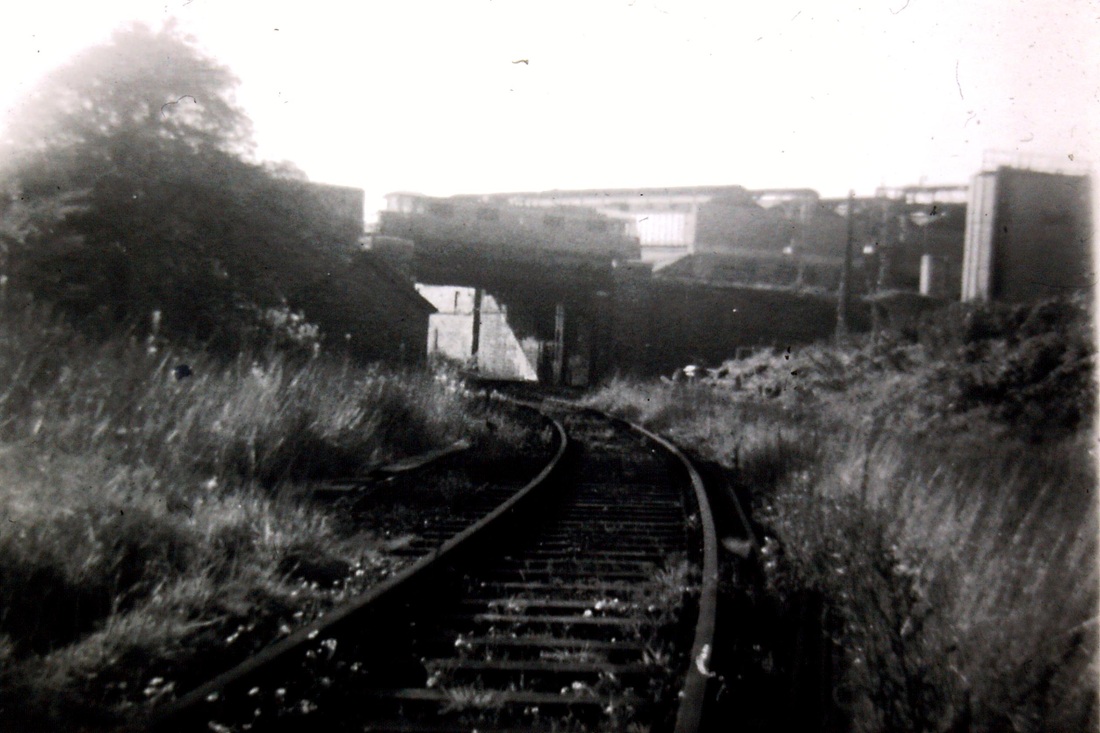
I took a trip along the rear of the shed loop to catch an electric passing through on the TV main line from an unusual angle. 14th October 1966 and the shed has been closed for four months. Weeds have sprouted profusely through the trackwork. The track hidden under the grass for on the right has disappeared so probably had been out of use some time before the shed closed, only the line in the foreground being used up until June 1966 when the shed closed. A Patterson water softening plant was installed on the right in the 1930's and the water softening chemicals were brought by wagon which was parked in the siding on the right.
(Peter Lee)
Ashby Junction (north of Nuneaton)
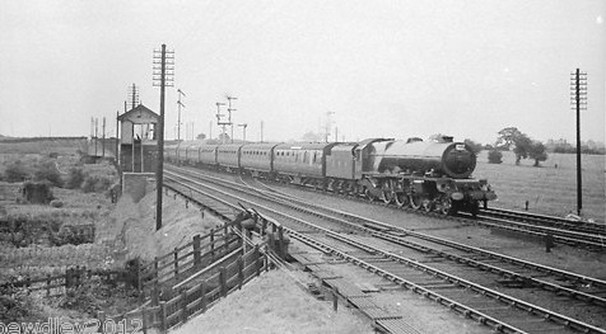
Ashby Junction off to the right leading to Weddington junction on the Ashby & Nuneaton Joint Line to Market Bosworth, Burton, Ashby, Coalville and Loughborough Derby Road. The spur through to the Nuneaton Midland station is on the horizon behind Ashby Junction signal box. The loco is a "Princess" class 4-6-2 on an Up London express sometime in the 1930's. The underline bridge in the foreground carries the trackway from Nuneaton (Tuttle Hill) through to Weddington.
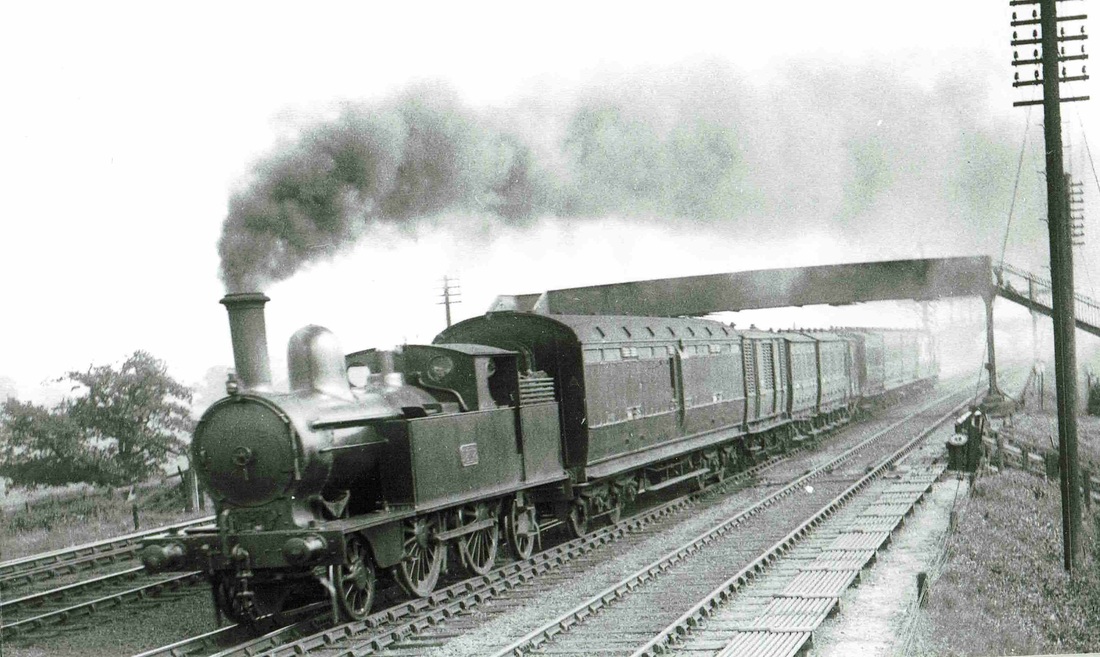
A former LNWR 5'6" 2-4-2T tank heads a train onto the Ashby line at Nuneaton. The train is divided into two portions and will split at Shackerstone Junction. One part will go to Loughborough Derby Road via Heather and Hugglescote, the other to Burton. the 5'6" tanks had a good turn of speed but were cramped on the footplate.
The photo was taken in the 1920's possibly by H.C.Casserley.
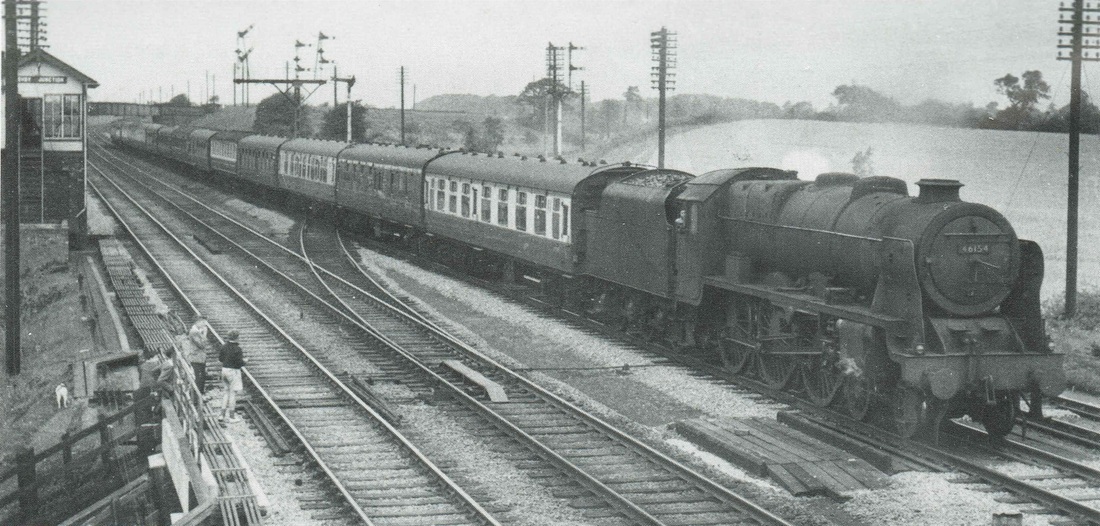
You cannot imagine today that youthful trainspotters would gather on the edge of the four foot and the signalman turn a blind eye. Its unthinkable but this was the 1950's and the splendid sight of Scot 4-6-0 Nr. 46154 The Hussar heading south drew these kids who might be the same ones today who enjoy their hobby trainspotting on Nuneaton station platforms. This is a long train with a wide variety of carriages. (D.J.Montgomery)
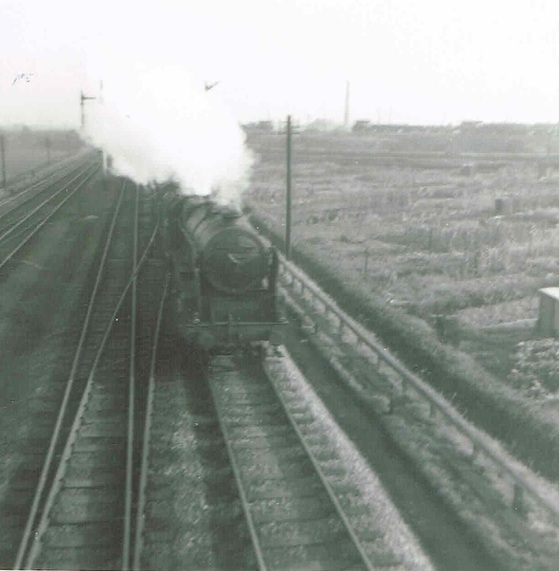
It is unusual to get a picture from the top of the footbridge which existed pre-electrification at this point over the tracks at Ashby Junction, and although poor quality I thought it interesting enough to get this rare viewpoint of a Scot dashing north with an express. Notice the allotments on the right and the Birmingham-Leicester line embankment on the horizon. (Michael Mears)
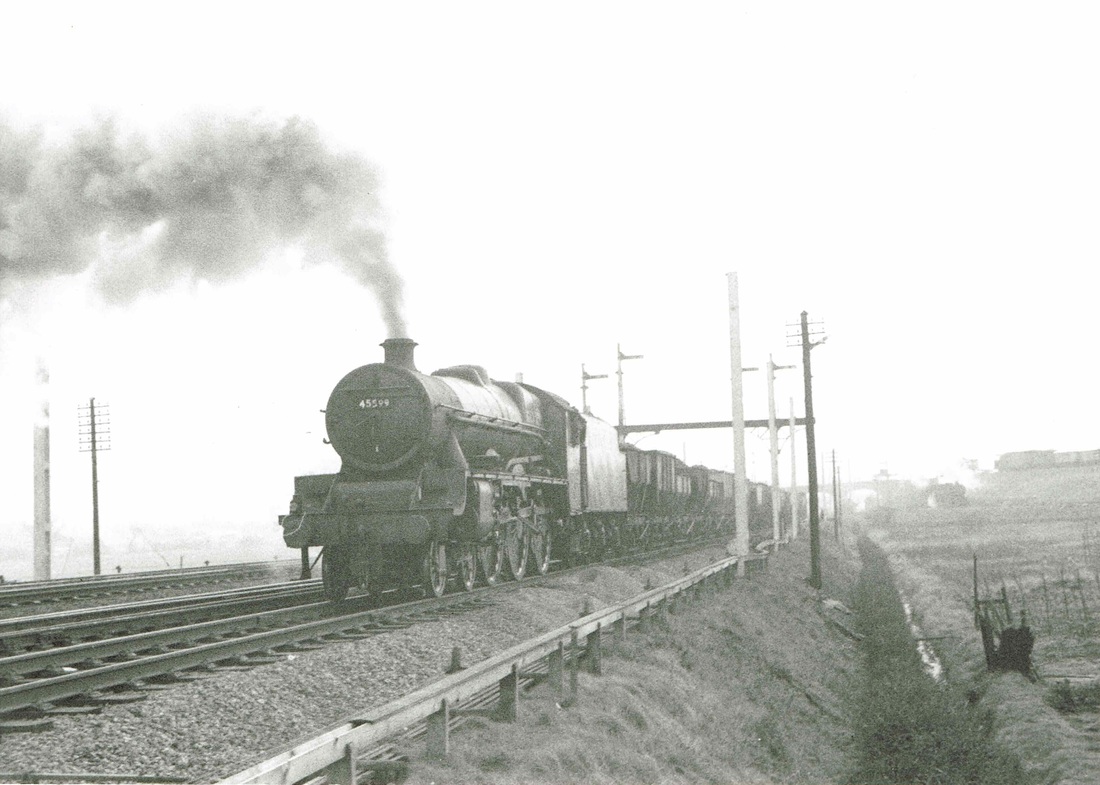
A sorry sight - a "Jubilee" 4-6-0 Nr. 45599 plods along on a northbound ballast train. The electrification posts are just being erected so this looks to be about 1962/1963. Fine express engines like this were being cascaded down to menial duties at this period before they were withdrawn having been replaced by the new diesel express locos.
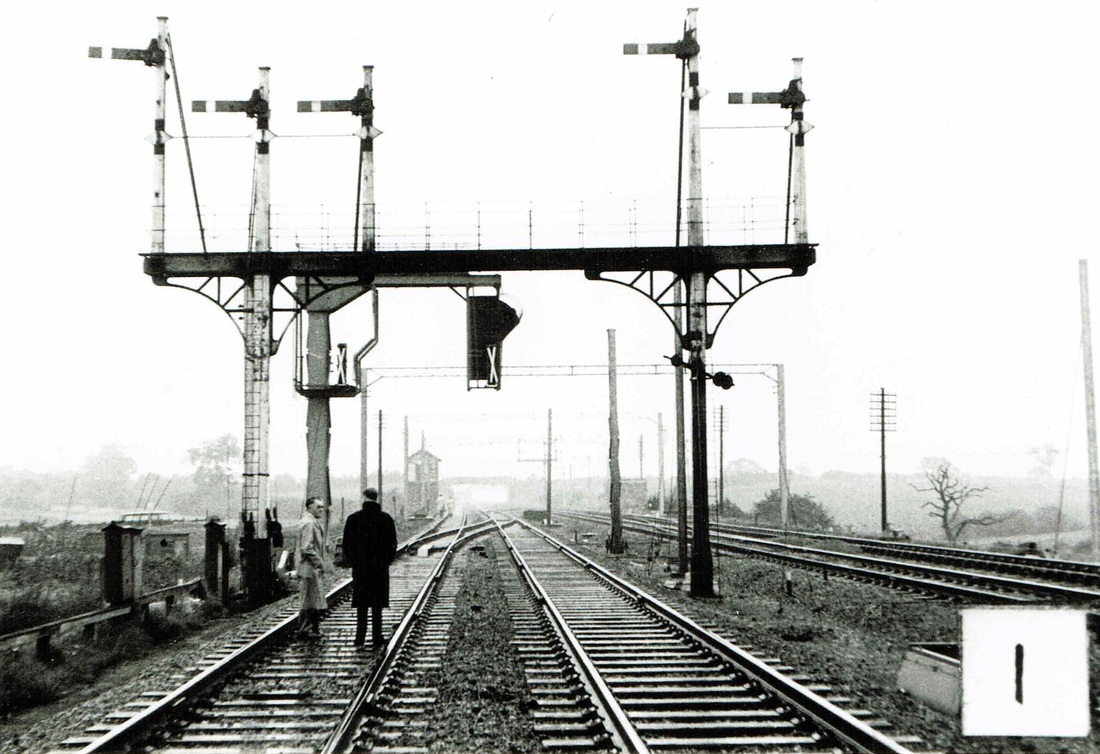
Imagine wandering about in the four foot today? No PPE having a nice chat oblivious to the fact you are standing in wet weather on the down slow line facing away from the train direction. What is really going on is that a new colour light signal has been erected you can see its black plastic covering with a cross on it which tells traffic its out of use. The old main line "pegs" are still in use but for not much longer as electrification is underway and they are getting ready to string the catenaries which would clash with the LMS pattern gantry. This puts the year about 1962 and the photo is one of a large series taken by an S&T engineer who dutifully recorded the short window when both sets of signals were together. Maybe only for a few weeks. So possibly there is a possession and the slows are out of use, enabling these chaps to casually stand around chatting in the four foot and the S&T engineer to record the scene for posterity plonked in the middle of the six foot. The signal box in the distance is the Ashby Junction box whose days are now numbered. The bridge seen faintly beyond carries the line from Nuneaton Abbey Street crossing the TVR and heading towards Weddington Junction. The crossings we see are to get trains from down slow to up slow and then across to the Ashby line. (courtesy Vic Holloway)
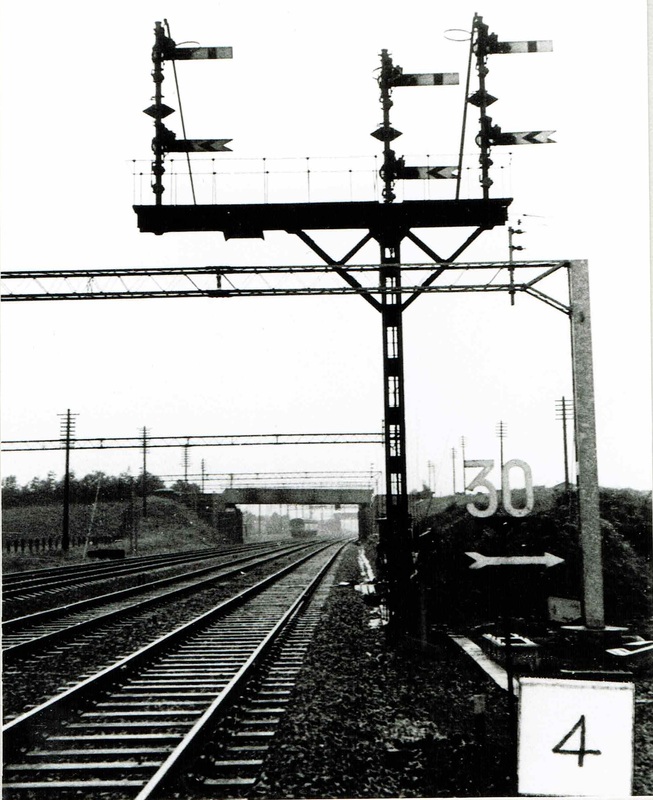
The photo here is taken from the up side with the 30 pointing out the speed to exit the main line for the Ashby line going off the picture to the right. A similar mission to the previous pictures where the photographer has crossed the line and has captured a DMU in the distance on the line his companions had just been standing on. The Weddington Junction overbridge in the middle distance indicates the clash it will cause with the overhead wires and will need to be raised. This photo was taken 10 years before the Ashby line closed so the work was carried out. (Courtesy Vic Holloway)
The Trent Valley Line (south of Nuneaton)
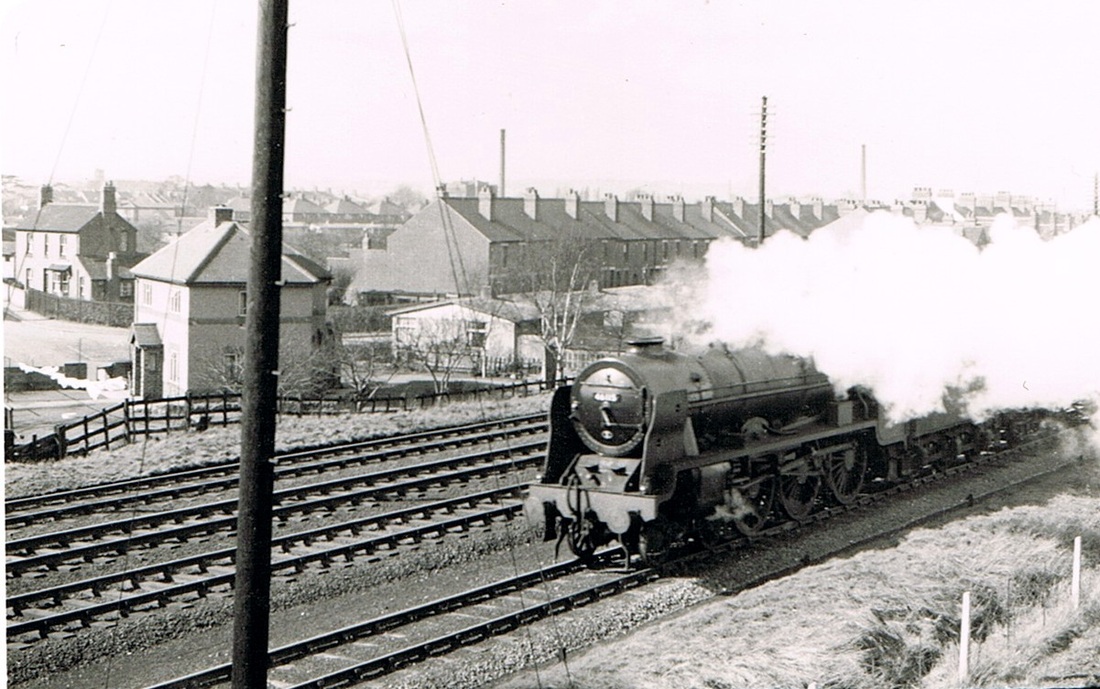
A "Royal Scot" heads south through Attleborough on the up slow. The building behind the telegraph pole at right angles to the track is curious as is the raised ground adjacent to the track. A level crossing formerly went across the line here just to serve Nuneaton Fields Farm. Complete with a crossing keeper whose sole job was to operate the crossing gates when the farmer wished to move his livestock. Runaway sheep and cattle was not uncommon, which upset the railway authorities as you can imagine. This led to their stopping up the crossing and removing the need for a crossing keeper who was redeployed elsewhere. The crossing was known to locals as "Pratt's Crossing" after the regular crossing keeper whose job it was to open the gates every now and then when the farmer needed access to Attleborough village. (Maurice Billington)
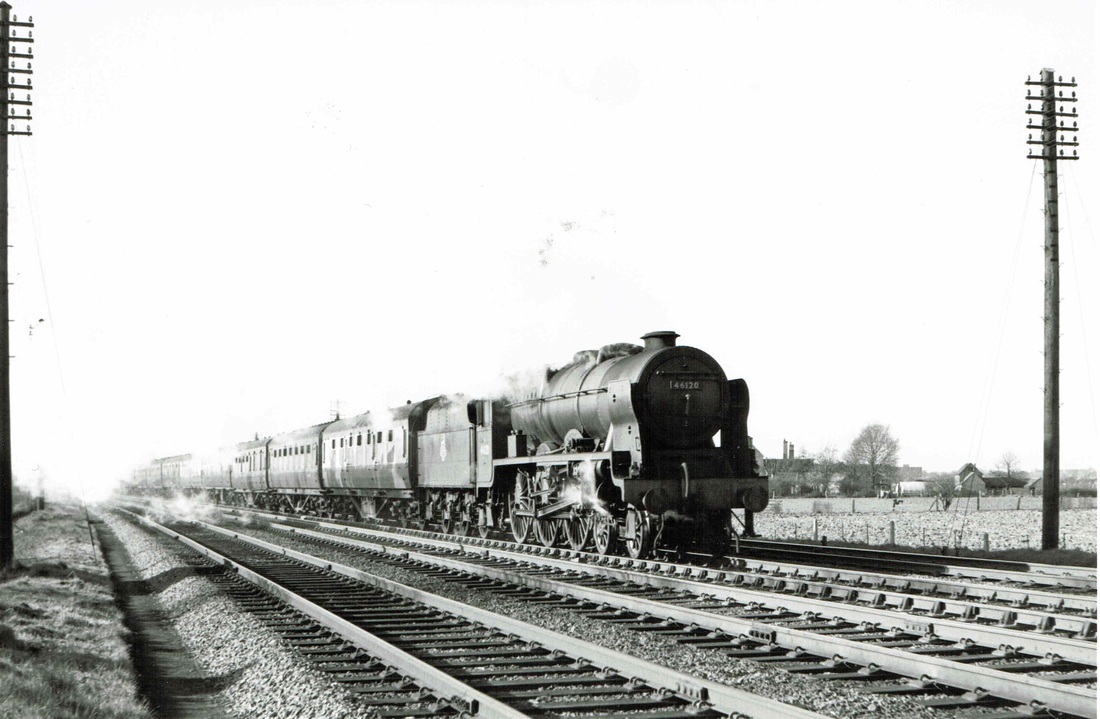
A "Scot" Nr. 46120 "Royal Eniskilling Fusiliers" hurries the Up Llandudno-Euston through Attleborough on 12th April 1958. Near Attleborough. On the right can be seen Nuneaton Fields Farm whose flat field was used as "Attleborough Aerodrome" about the time of the First World War and where the first "Laker Airline" flew from using ex WW1 bombers converted for passenger use, until they all crashed. (Mike Mensing)
Heading south along the Trent Valley line towards Rugby
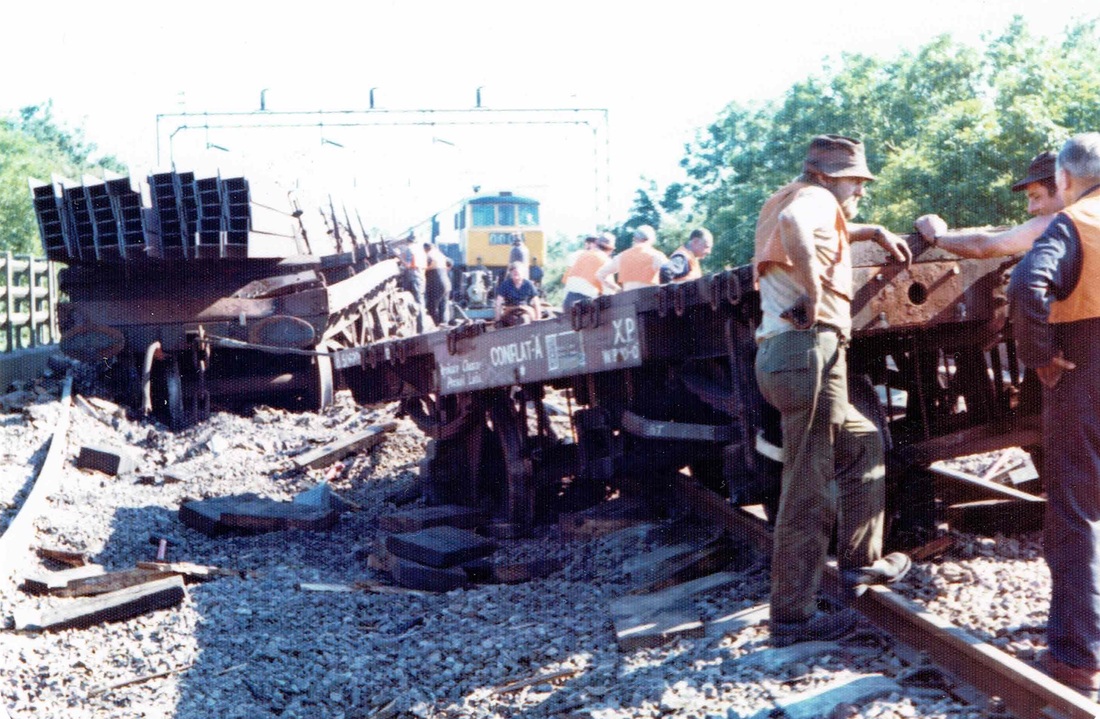
There was a bit of a pile up at Marston Jabbett on the TVR main line on 22.6.77. A freight train carrying steel girders came adrift and chewed up the main slow line. Although reflective vests are in use amongst the rescue crews there are no hard hats and nowadays they would be fully shrouded in orange reflectives from head to foot. The Conflat wagon in the foreground has probably been acting as a spacer wagon for the overhanging steel girders on the left and has come adrift. It is probably that this burst of inactivity on behalf of the workmen is due to the fact the electric is heading by with an express. Probably there has been a permanent way slack imposed. (Geoff Edmands)
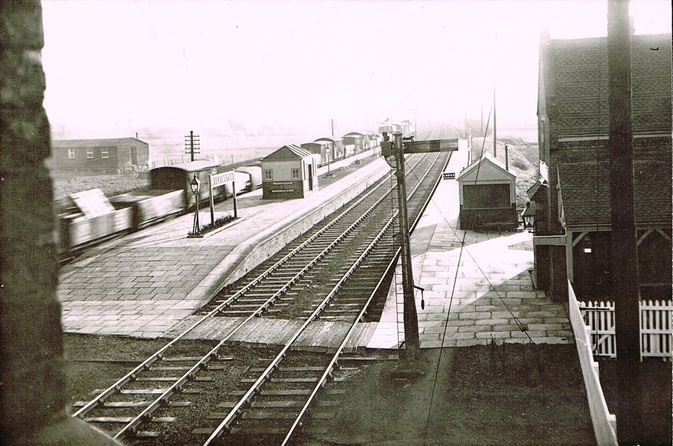
Bulkington station in the 1930's shortly after closure. The main building on the right still survives today and is one of the remaining examples of the LNWR architect J.W.Livock's Trent Valley buildings. (Atherstone, Mancetter, Colwich being other examples which have survived). The platforms are all in pristine condition which indicates the photo was taken shortly after passenger services were withdrawn. (Geoff Edmands)
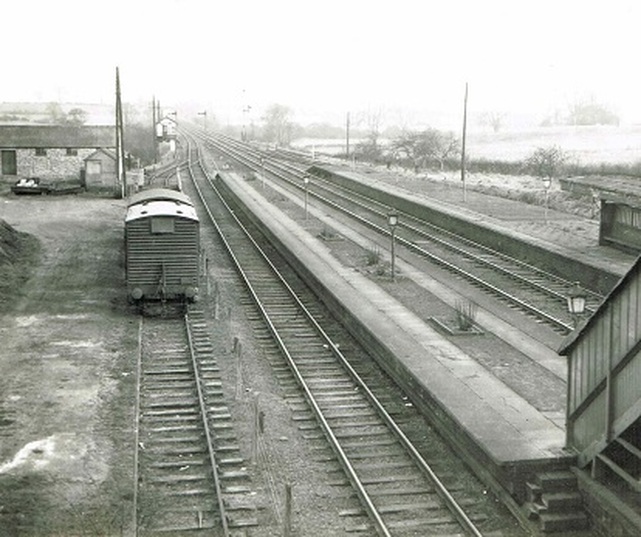
Shilton station after closure, photo taken on 1st March 1959. The station closed to passenger traffic on 16th September 1957. We are looking south towards Rugby with Shilton signal box in the distance. Vans are parked in the solitary siding. Shilton station did not open with the line it opened on 1st December 1847. Goods facilities here were minimal. The last train to call on 14th September 1957 was the 4.45pm Rugby-Nuneaton local worked by 42389 (5C) and the 6pm Stafford-Rugby headed by Compound 4-4-0 Nr. 41113 (2A). (Geoff Edmands)
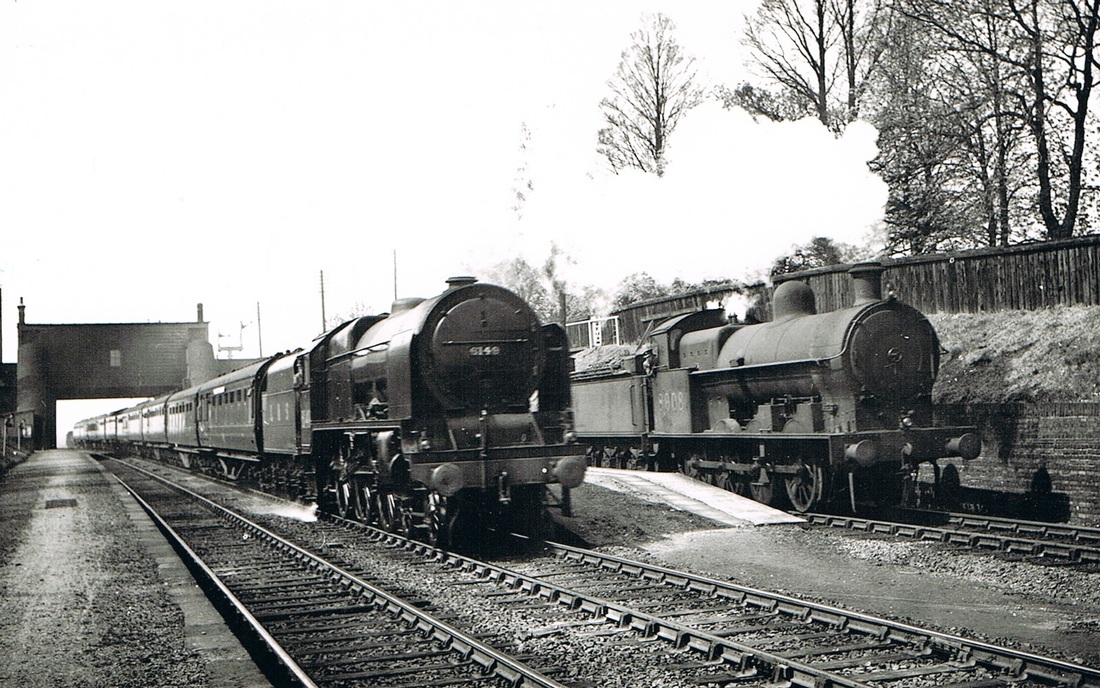
An unrebuilt "Scot" nr. 6149 "The Middlesex Regt." hammers through Brinklow station overtaking a freight hauled by an ex-LNWR "Super D" nr.8908. The workhorse of the Trent Valley line. 1939. 8908 started life as a LNWR class "B" Compound which entered traffic in May 1902, and was rebuilt as a class G1 in August 1923. It lasted until September 1950 when it was withdrawn. Nr. 6149 was originally named "lady of the Lake" and was cut up at Crewe in November 1963. This photo was taken in the 1930's. (Gordan Coltas Collection)
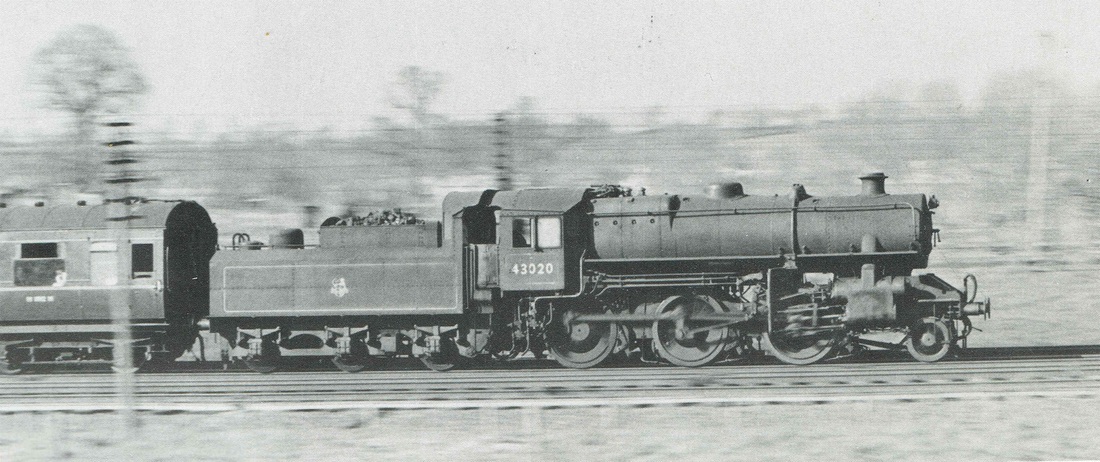
By contrast Ivatt Class 4 2-6-0 Nr. 43020, a regular Nuneaton engine from August 1950 through to March 1958. This must have been one of its last duties at Nuneaton as the photo was taken on March 19th 1958 on the 4.27pm Polesworth-Rugby heading south, 43020 was withdrawn in October 1966. (Michael Mensing)
North Along the Trent Valley Line towards Stafford
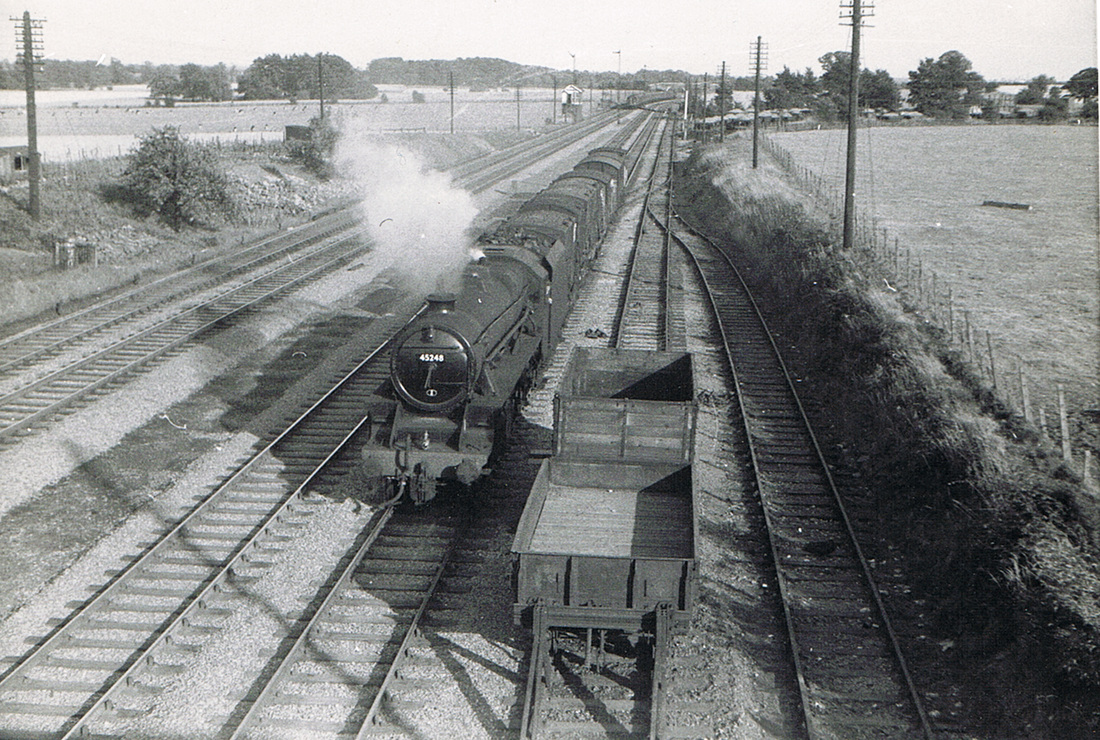
A down fitted freight passing Hartshill sidings. Hartshill SB in the distance. The sidings on the right served Jees Hartshill Quarry. Hartshill sidings box was a standard pattern LNWR type 5 box and on Sunday November 11th 1962 it was converted into a shunting frame. A new ground frame was installed at the same time called Hartshill North End. These revised frames were electrically released from Ashby Junction signal box towards Nuneaton. The Hartshill down slow seen here had occupied by the Black 5 Nr. 45348 been put in during the Trent Valley widening and brought into use on June 6th 1909. Note the exemplary state of the permanent way.
Atherstone
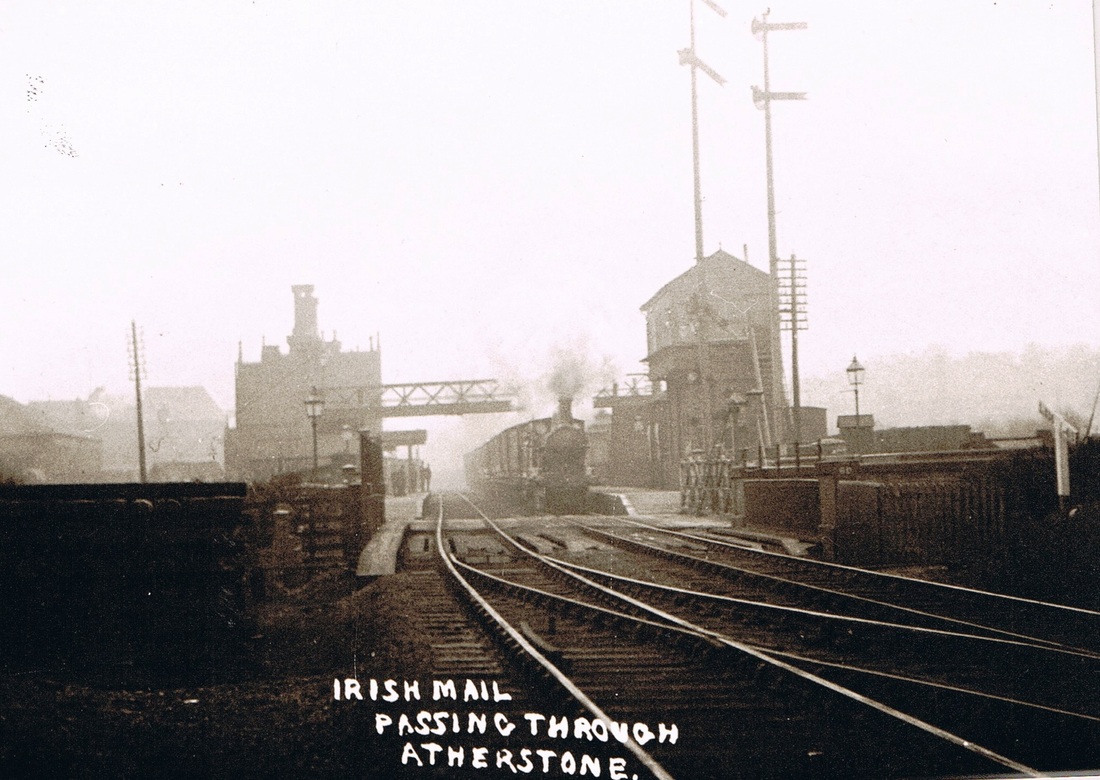
Atherstone station in two track days before 1901. (The quadrupling work was completed on July 1st. 1901). Note the old level crossing in the foreground which caused the trains passing through the station to have their speed reduced to walking pace. A court case between Warwickshire County Council and the LNWR culminated in the railway company running trains at only 4 MPH across the level crossing. This was dispensed with in September 1903 when a new bridge was erected over the line and the Trent Valley line at this point which had expanded to four tracks in 1901 completed the modernisation of the layout through Atherstone.
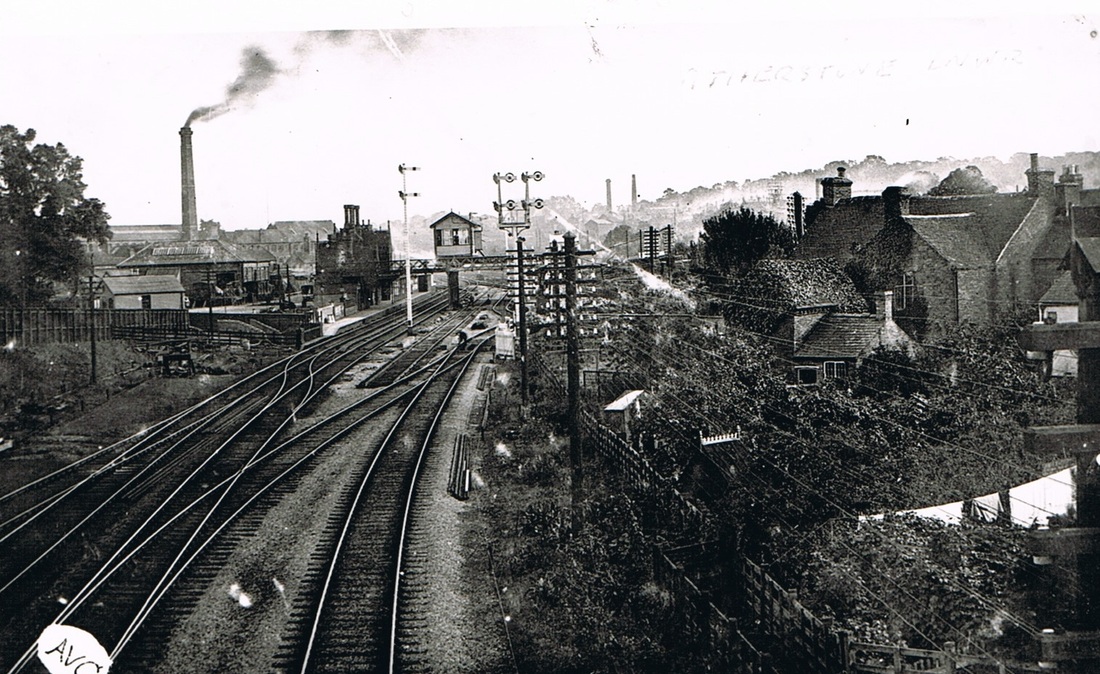
Atherstone station has only just been altered when this photo was taken which puts it at around 1903. New sections of platform can be seen which have been built over the old level crossing section. A new imposing signal box, which was such a magnificent feature for many years. On the left one of Atherstone's hat factory chimney's smoke. On the right the imposing escarpment of the ridge which incorporated the Atherstone Outwoods. A new section of track has been laid in to complete the four track section but which has not yet been connected up. The former double track section is on the left. The mechanical signal box we see here was closed on Sunday 11th November 1962 and a new electrically operated box installed 124 yards nearer Nuneaton.
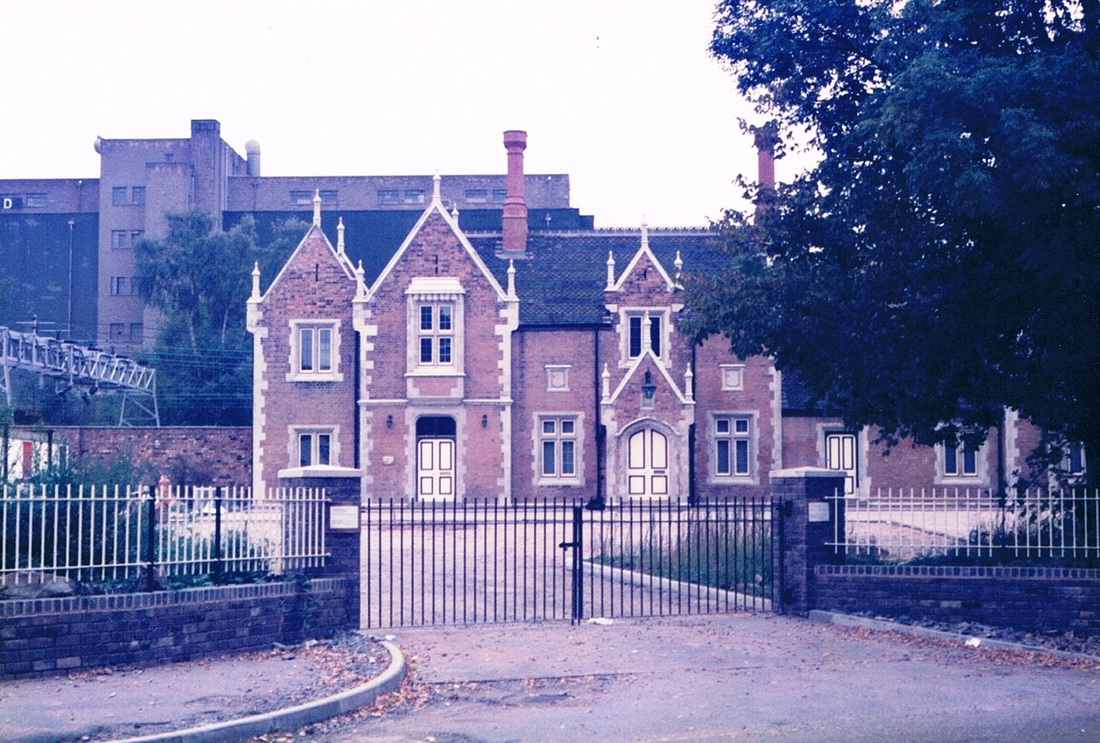
Atherstone station is the most magnificent remaining Trent Valley line station newly restored at this date 1985. With the high building of the Atherstone Grain Silos in the background. These grain silos were erected during 1943-4 by the Ministry of Agriculture Fisheries & Food and were rail served with their own small diesel shunter purchased brand new (a Planet 20 hp 4 wheel petro-mechanical unit (FH2895/1944). Traffic to the grain silo was seasonal and rail traffic spasmodic. The grain silo survived into the 1970's when both the trackwork and the loco were sold to a preservation outfit. Today Atherstone has a regular hourly train service to London the best rail service it has ever enjoyed. Back in the old Trent Valley line local service days the train frequency was very poor. (Peter Lee)
Polesworth
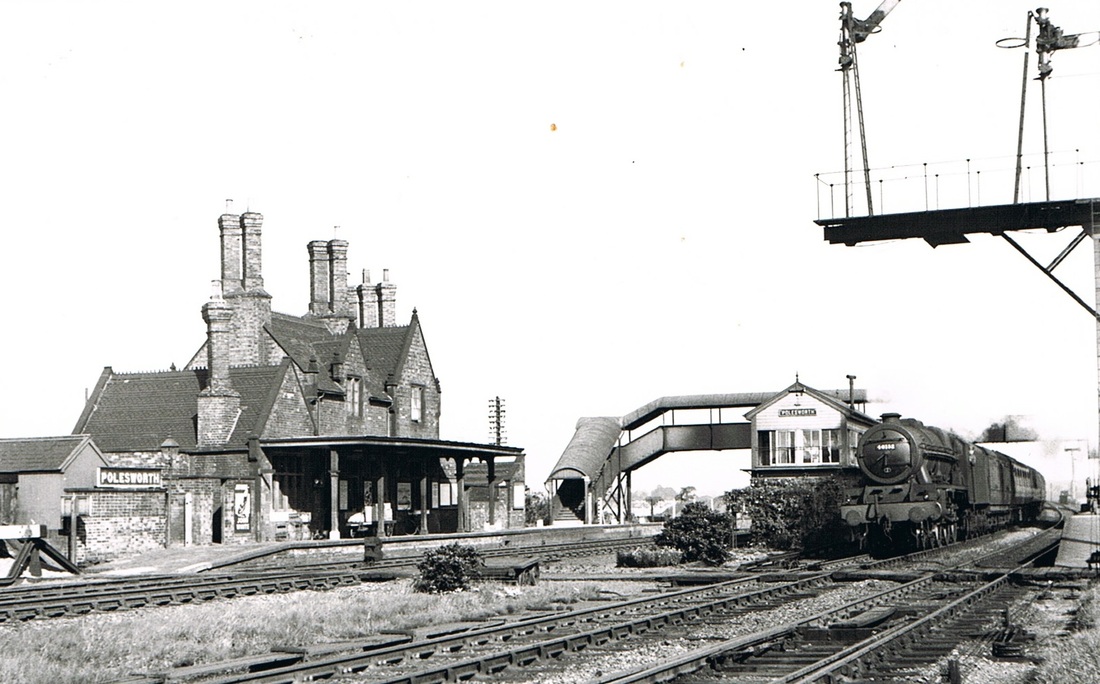
Polesworth station in the early 1950's. An up express thunders through on the fast lines. Polesworth still has a passenger service in 2013 - just! It has one train a day which calls early in the morning, and is kept open for legal reasons. It can only be hoped that the station will become part of the regular London Midland London-Crewe service at some stage. But this one train only calls at the down platform as the up platform is no longer accessible from the station entrance as the footbridge has long gone. Reinstatement of the footbridge would be needed to restore a full service. Polesworth would seem an ideal parkway station for people using the M42 motorway nearby to gain access to trains and use a park and ride service. Someone should campaign to restore Polesworth to full use as a Park and Ride station.
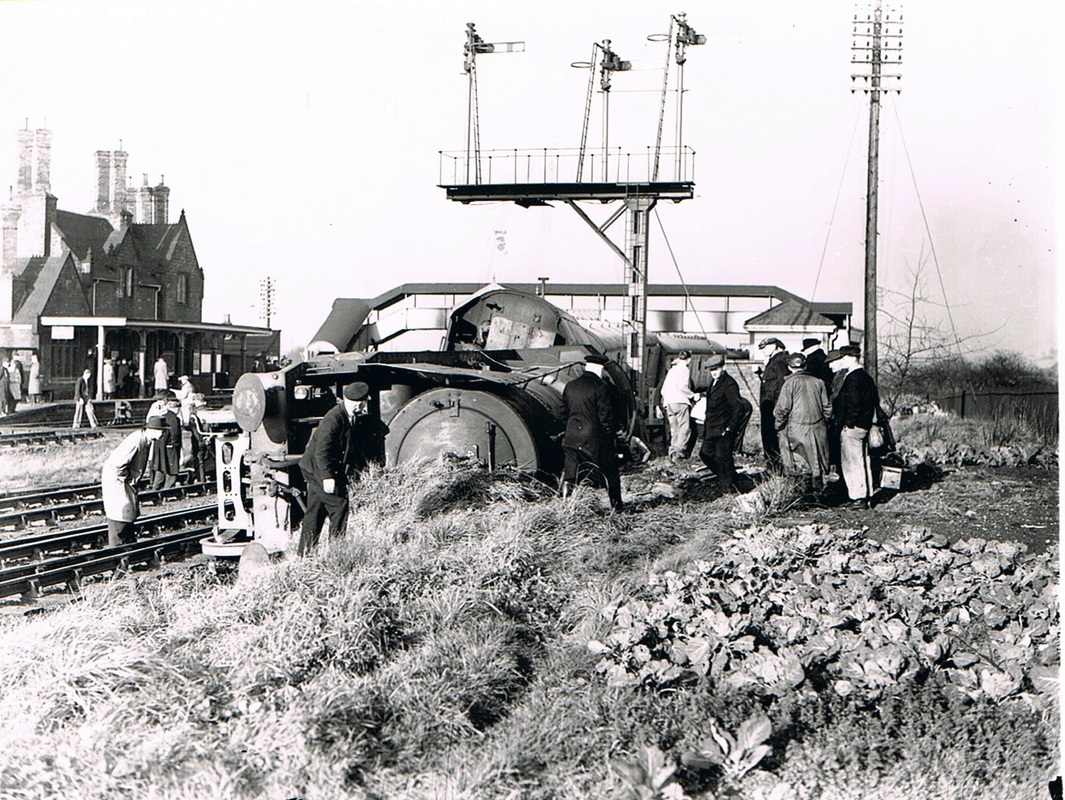
On 19th November there was a nasty crash at Polesworth when an Up Glasgow-London express loaded to twelve coaches headed by a "Duchess" 4-6-2 "City of Leicester" left the road at Polesworth and ended on its side. The cause of the accident was driver error due to taking a cross over from the fast to slow line at too high a speed 55m.p.h. and the engine keeled over. The platform kept some of the damage to a minimum and although this was a very nasty incident only two of the 174 passengers on board were injured. Here is the aftermath.
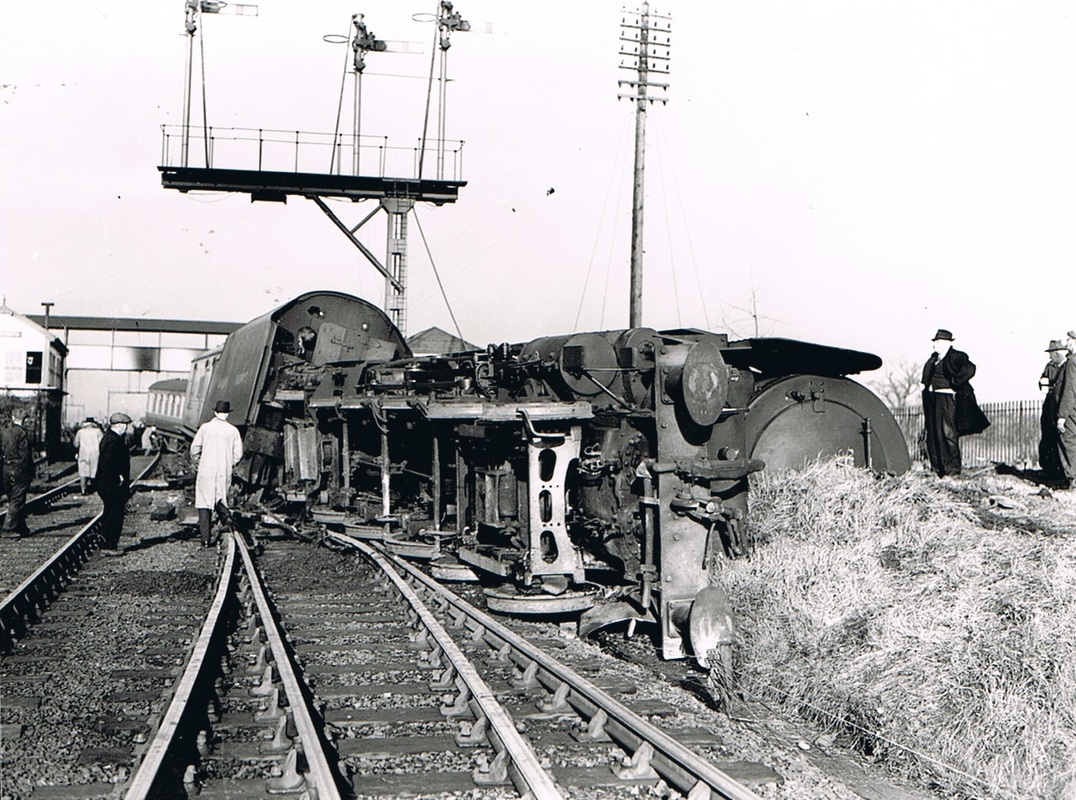
It was unusual to see a "Duchess" from this angle. It has well and truly ploughed into banking at the side of the track. But it could have been a lot worse. This accident should not be mixed up with a much more serious accident at Polesworth which took place on 21 July 1947 when an express with 800 people on board (130 standing) derailed killing 5 passengers.
The Coventry - Nuneaton Branch (opened 1850)
Coton Arches
A feature of Nuneaton is the magnificent set of railway arches the bridge we know as Coton Arches. With its large shallow central arch. The plan below shows the original bridge over the Nuneaton-Coventry turnpike road where it terminated at the Nuneaton Toll House. The turnpike toll was abolished in the 1870's.
Chilvers Coton Station
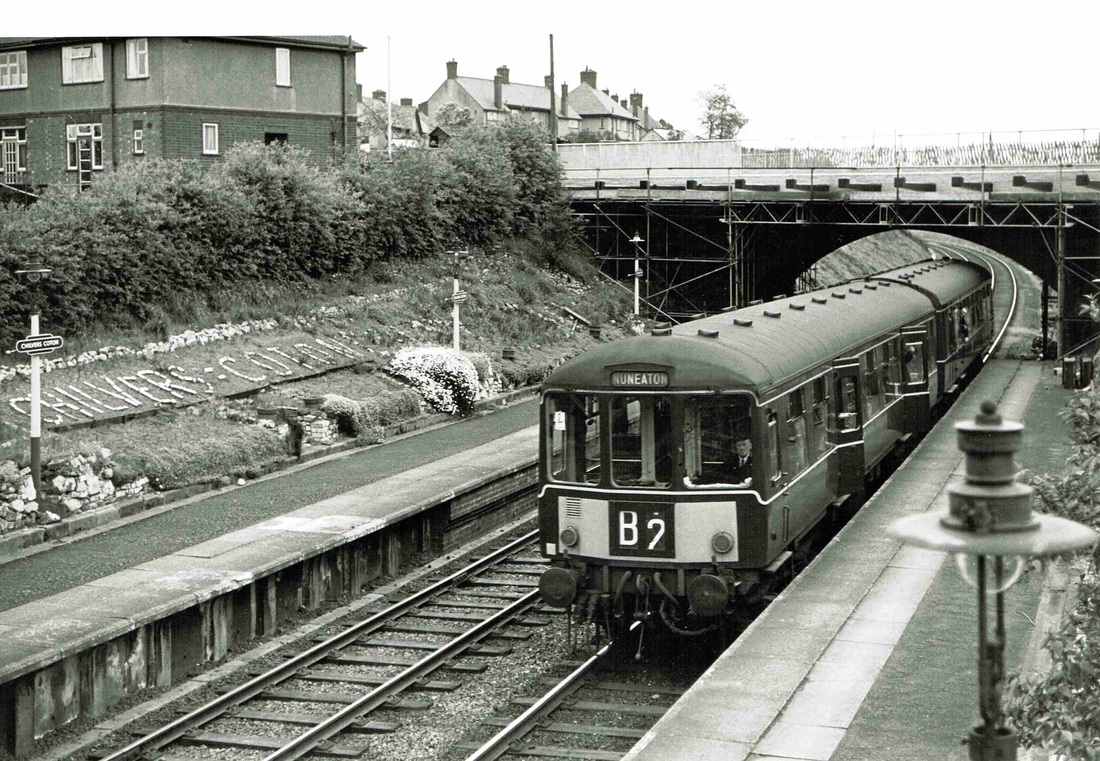
A Nuneaton bound DMU has pulled up at Chilvers Coton. I think the health and safety would be very critical today to see the DMU doors being opened even before the train has stopped at the platform. (No mistaking where you are with the award winning gardens on the left the lettering being formed from old bricks whitewashed). (Mike Mensing)
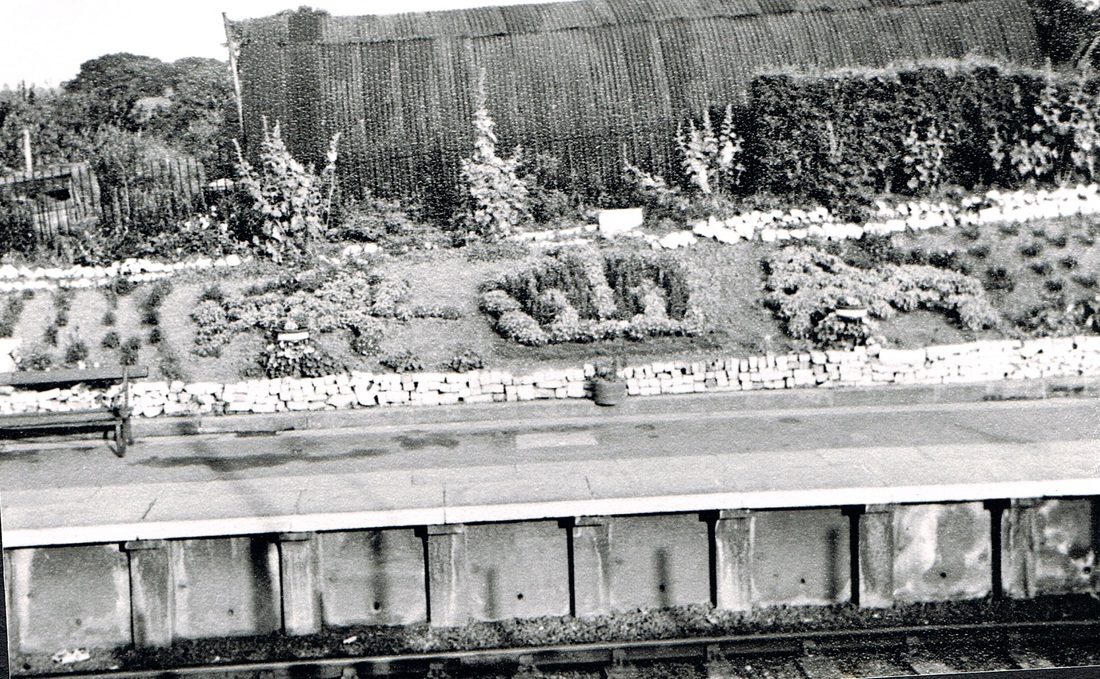
Chilvers Coton Station's flower beds were renowned for being beautifully kept and this shows the display in Coronation year. The staff had great pride in their garden until one day a railway official turned up on an inspection and enquired who was attending to these beds. When he found out he cut the number of staff at Coton station on the basis that they had too much time on their hands!
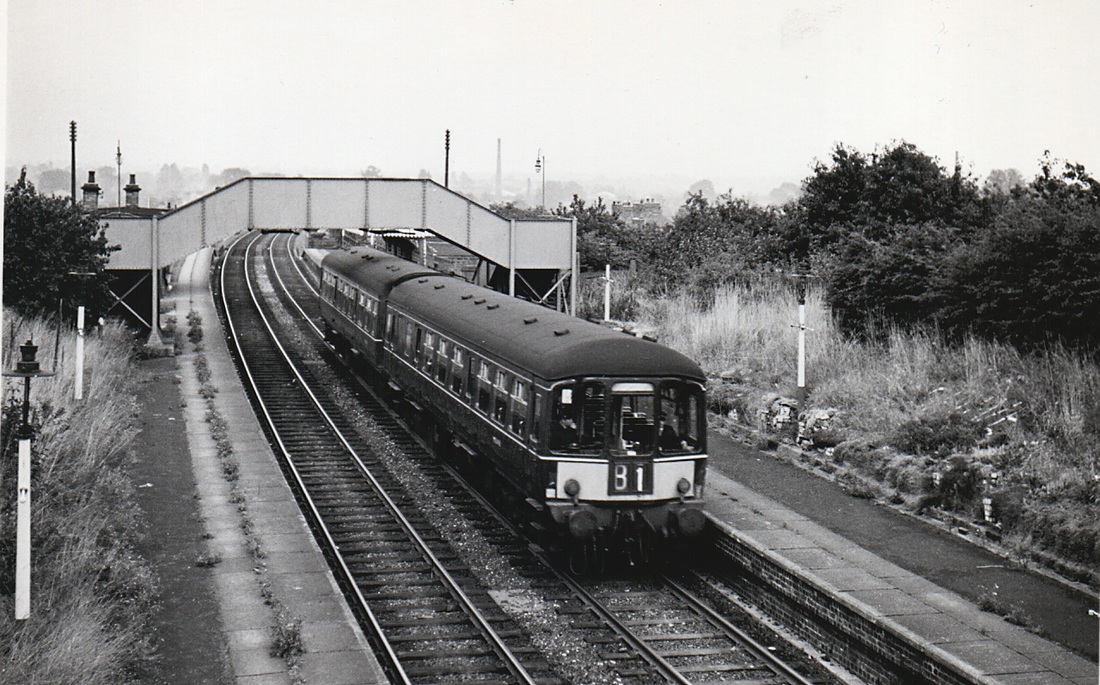
A shuttle service operated between Nuneaton Trent Valley and Coventry stations on Sunday 12th September 1965 conveying passengers from diverted services which were stopped due to electrification work on the main line in the Coventry area. Here is shuttle carrying the 5.40pm Birmingham New Street - Rugby. A 2 car Park Royal d.m.u. (Michael Mensing 35/40-33)
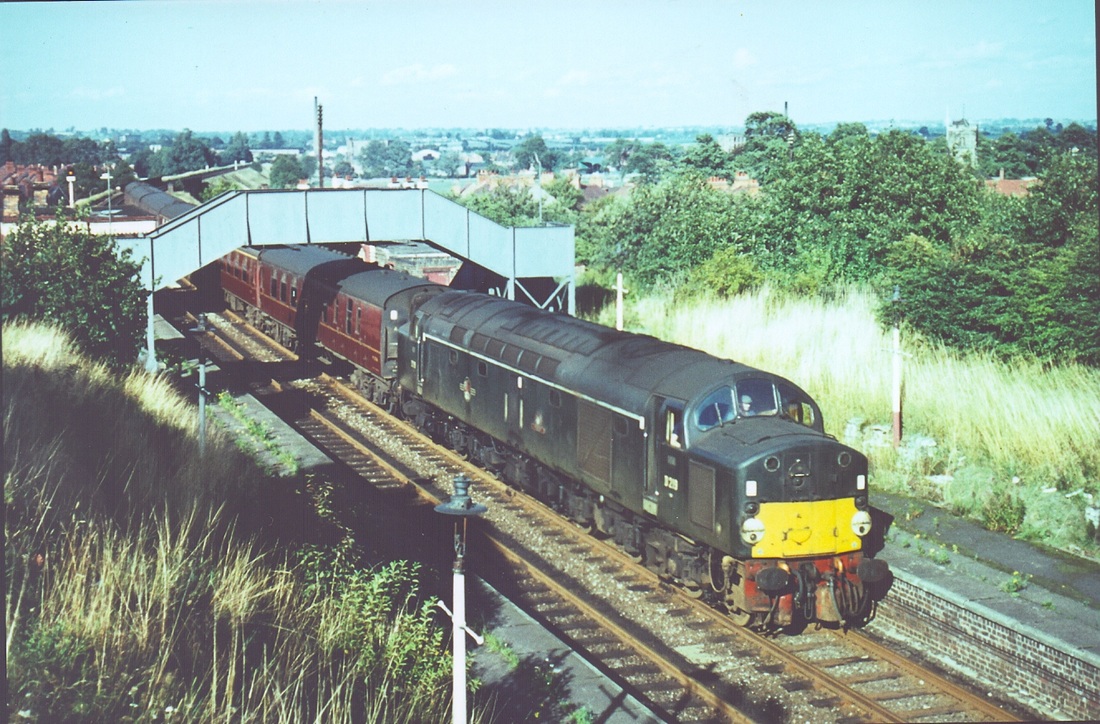
Chilvers Coton station with a diverted 4.15pm Birmingham New Street - London Euston on Sunday 4th September 1966. By this time the station garden so beautifully attended 14 years before is now fully overgrown. The loco is a English Electric 1Co-Co1 Class 4 diesel-electric D219 "Caronia". (Michael Mensing C249-1)
The Griff Branch, serving Stanley Brothers yards, Haunchwood Brickyards, Nuneaton Colliery and Griff Collieries.
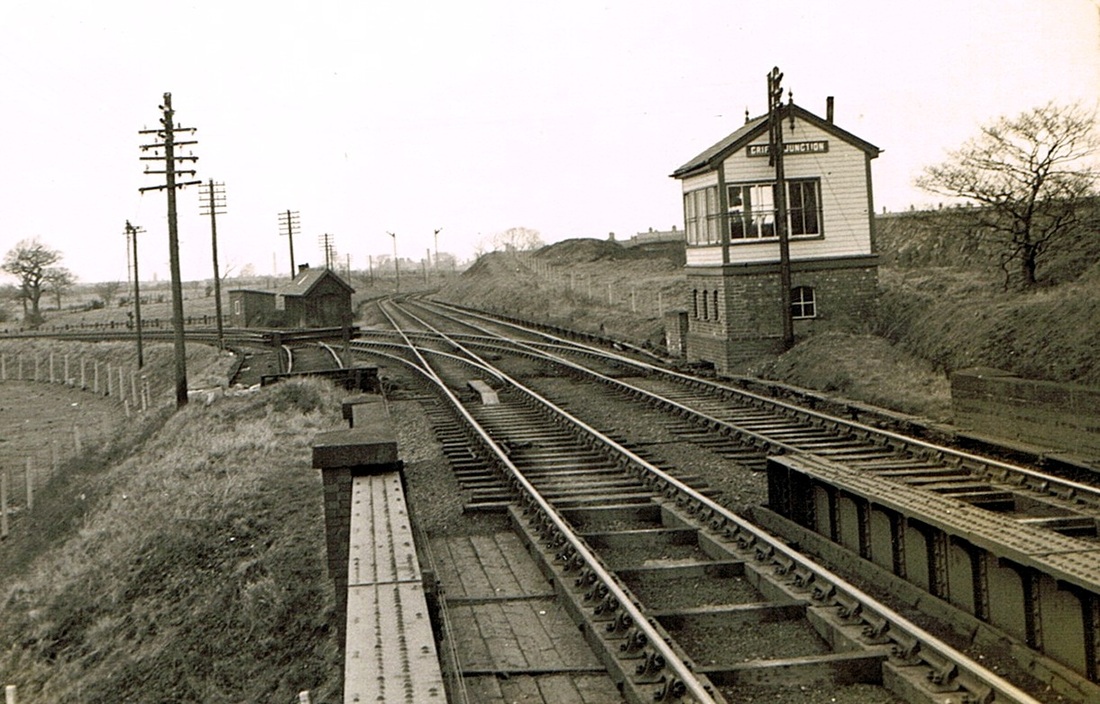
Griff Junction box in its heyday in the 1950's. There was quite a climb from the branch up to this junction which created some difficulties when the rails were wet and you had a fully loaded coal train. The bridge in the foreground is over the Griff Arm of the Coventry Canal. We are looking towards Nuneaton with the Griff branch leading to Stanley Brothers sidings to the left. This might be a Sunday as both "Pegs" are off and Griff box unmanned as no trains were worked onto the branch on a Sunday. (Geoff Edmands)
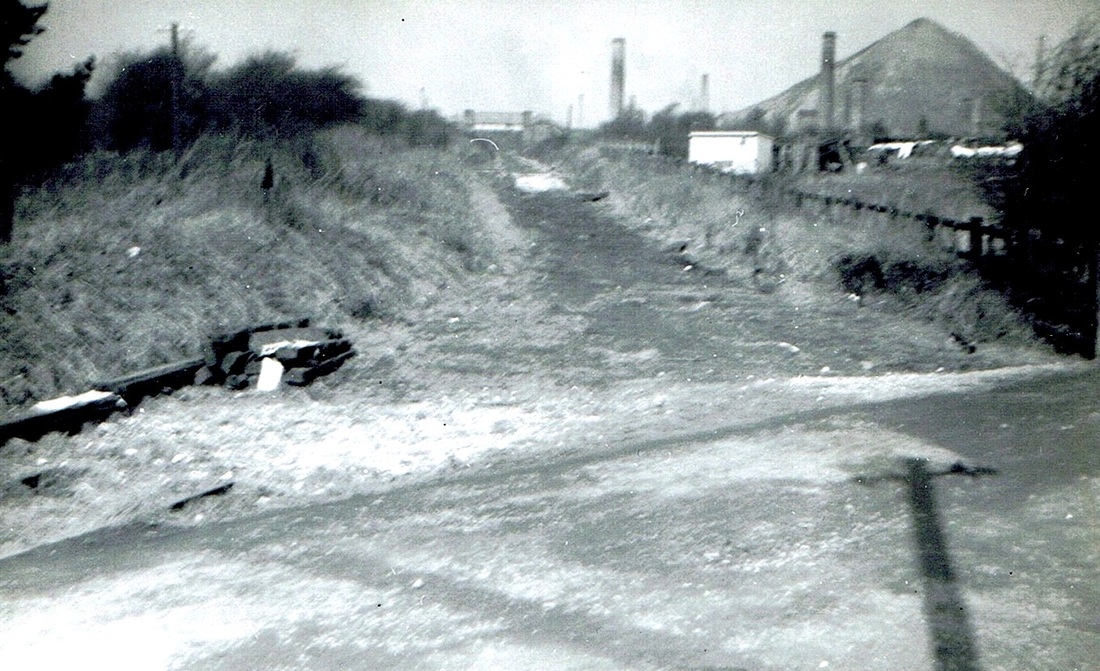
The trackbed of the Griff Colliery branch looking towards the end of the branch at Stockingford, from the former level crossing at Bermuda village. The main line track had been lifted, but the track to the far left is still in position and this led to the canal basin. Griff Nr. 4 colliery tip to the right and the chimneys of Haunchwood Brick & Tile's Nr. 3 yard. The bridge in the distance carried the road that led to Stanley's Nr. 7 yard and on to the Arbury estate but the ramp below it blocking the view through the bridge indicates that this bridge will shortly be taken down and the road replaced by an embankment. Photo taken in the late 1960's. (Peter Lee)
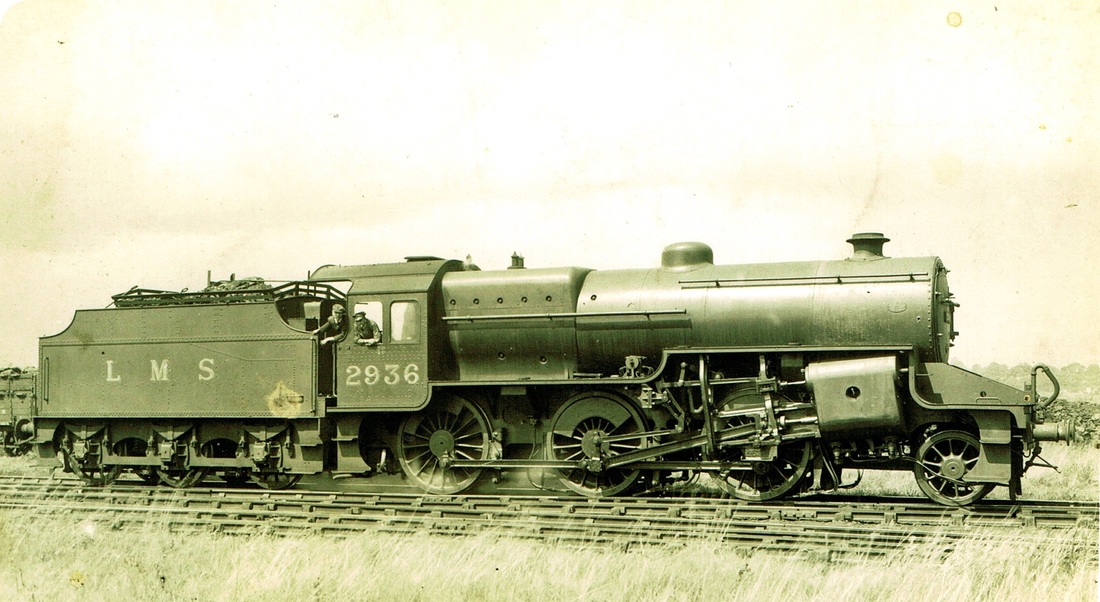
A superb view of a "Fowler Crab" 6P5F 2-6-0 Nr. 2936 parked up on the Griff branch between a spot of shunting. This job was known as "The Old Man's Link" because footplate crews regarded it as 9-5 job where they could not make the overtime that went with main line duties. Young crews with mortgages and young families needed the extra cash but the older drivers less pressed financially and nearing their time could eke out their last years quite happily up this idyllic branch line. (Betty Melbourne)
Your browser does not support viewing this document. Click here to download the document.
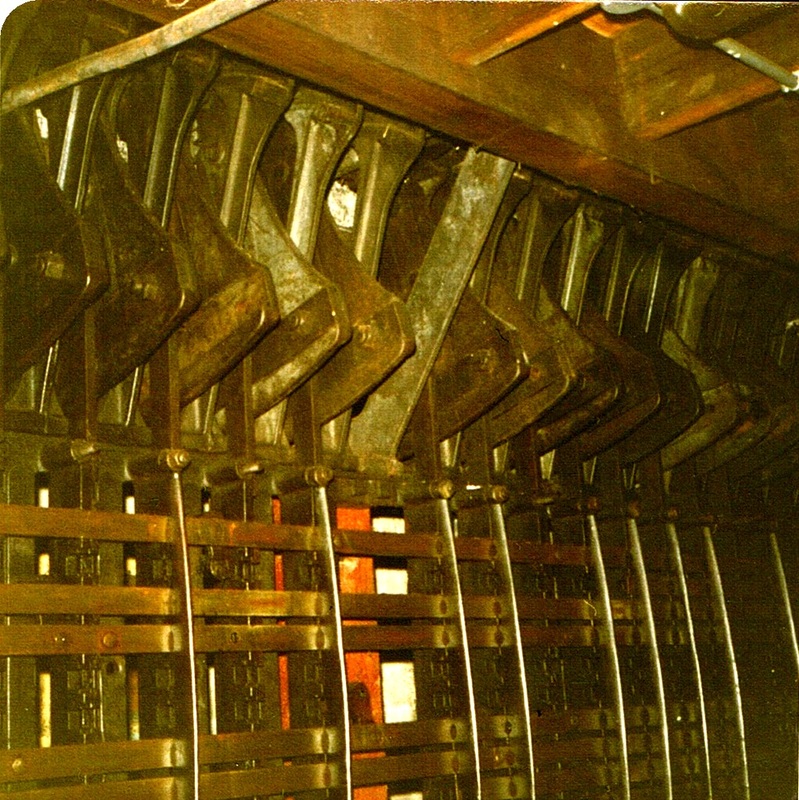
The signal frame in the bottom portion of Griff Junction signal box. You can see the levers still connected by rods to the signals and a cross over road. Other bottom brackets of the levers have no rods so by this time they are out of use. The box acted as a fringe box for mechanical signalling interfacing with Nuneaton power box but this arrangement was superseded in the 1980's. (Peter Lee)
Bedworth Station
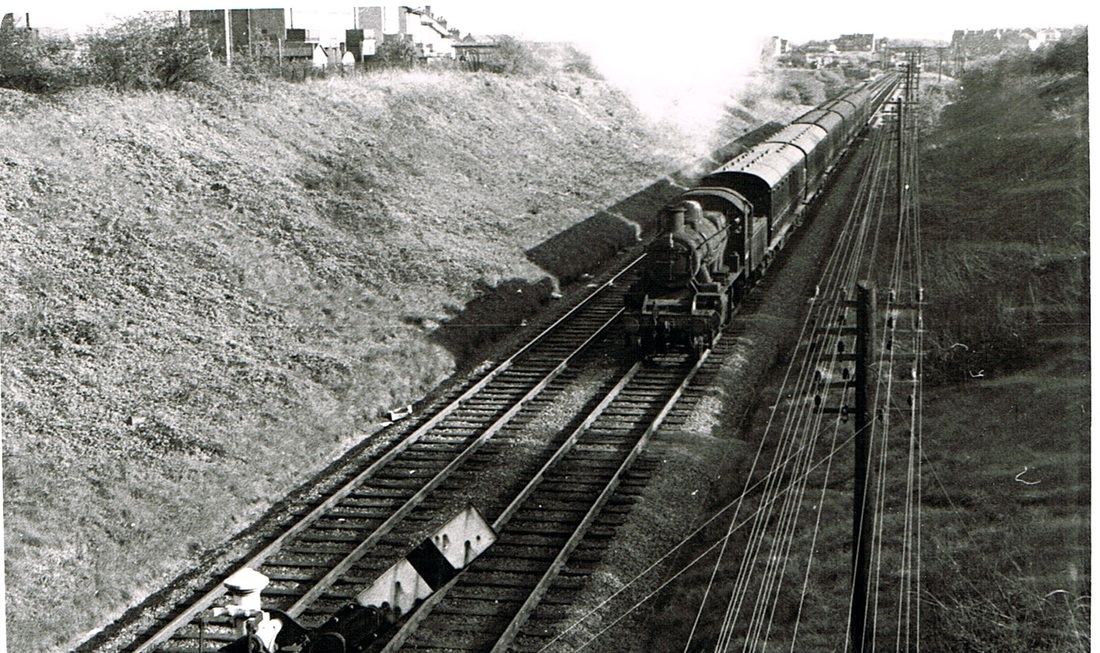
Bedworth with a Class 2 2-6-0 nr 46447 on a five coach train. Five coaches were often needed to accommodate the hundreds of workers travelling to and from the factories in Foleshill and around. The chaneover to two or three car DMU's modern as they were probably added to the demise of the passenger services as all the workers crammed into these shorter units, leading to many workers leaving the discomfort of train travel for the local buses. 3rd May 1963. 46447 had been transferred to Derby in April 1963 from Nuneaton so it is curious to know why it was back on its old territory. This engine was preserved and is now at Quainton Road. (R. Blencowe)
Newdigate Colliery Sidings
Hawkesbury Lane Station, Marshalling Yard and the Wyken Branch Railway
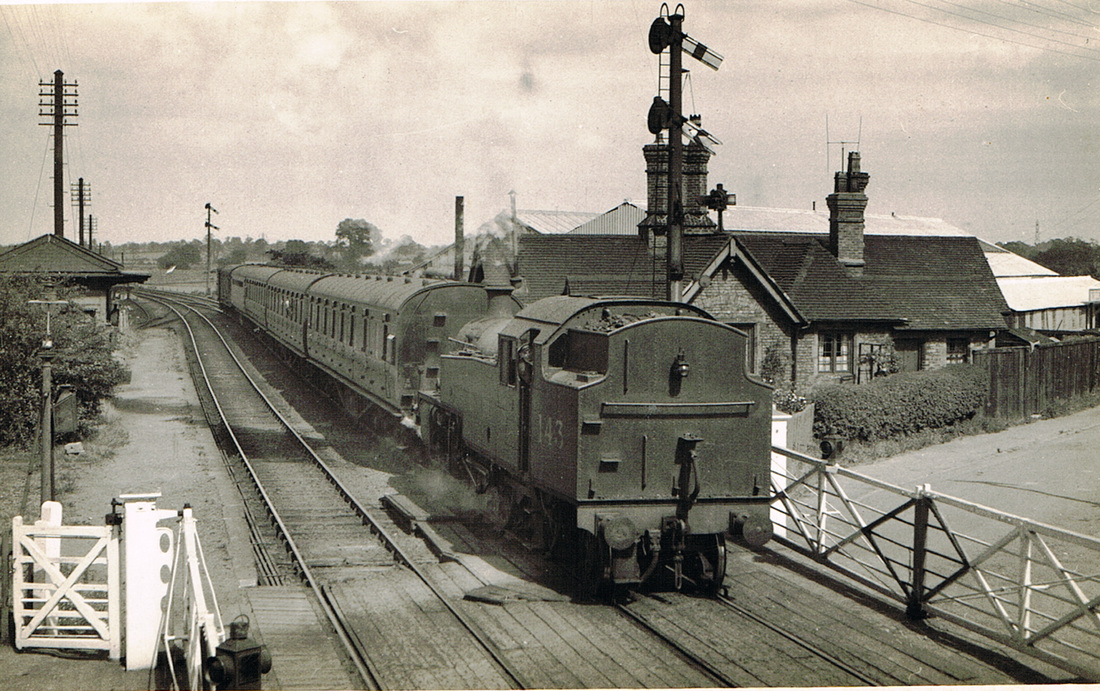
A classic view of Hawkesbury Lane with Stanier Class 3 2-6-2T Nr. 143 on a Coventry & Leamington local. The stationmasters house on the right remains today. The train is a typical 5 coach consist of the period. 1940's. The Stanier 2-6-2T's replace the LNWR 2-4-2T's who were being overwhelmed by the loadings on these passenger trains.
(W.A.Camwell)
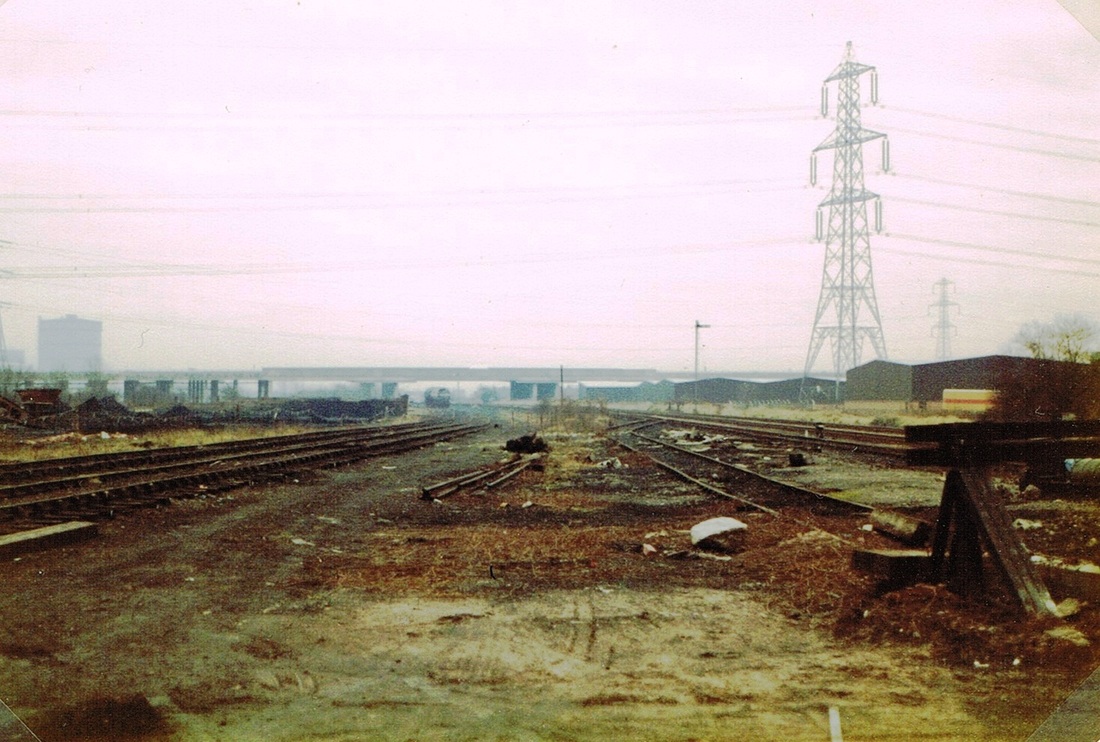
The remains of Hawkesbury Lane marshalling yard. A lot of coal traffic emanating from the various collieries en-route between Nuneaton and Coventry was sorted here into full trains for its destination all over England. This eased the pressure on Nuneaton yard and other places en route. By the time this photo was taken Hawkesbury Lane sidings were in decline and in 2014 all that was left was one loop in use for running round Murco oil trains. The M6 motorway bridge crosses the yard in the distance. The gas holder of Foleshill Gas Works can also be seen. (Peter Lee)
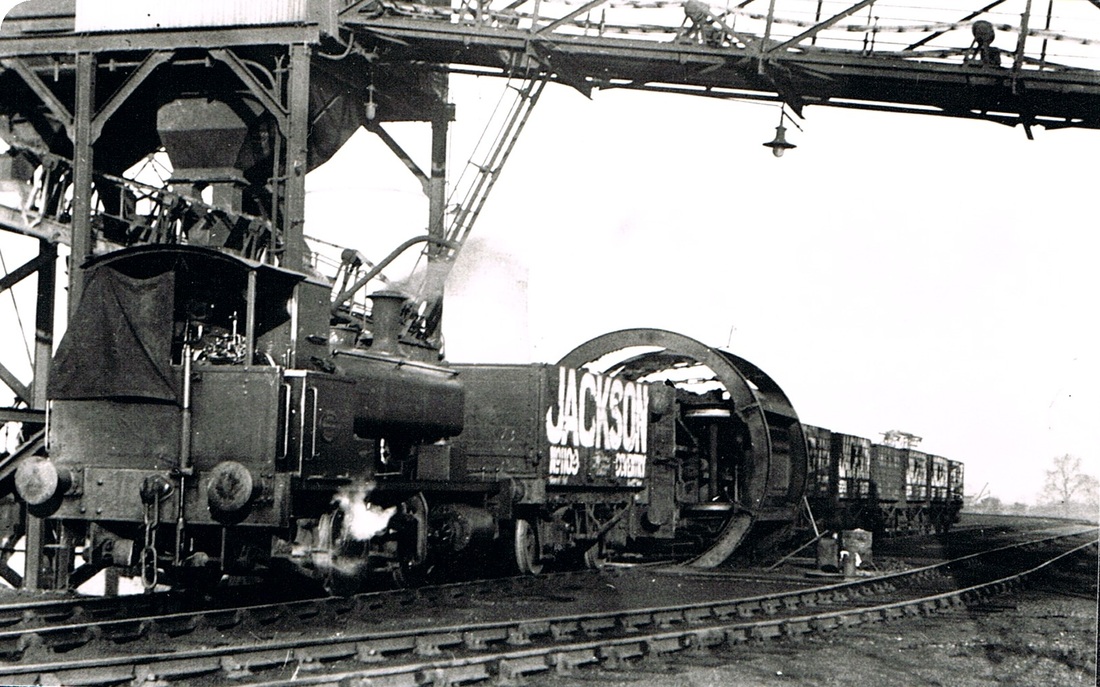
The CEGB power station built over the site of the old Victoria Colliery at Coventry. The power station opened in 1928 and here one of its two locos: Barclays 0-4-0ST Nr. 1 (1942 of 1929) positions a wagon over the power station coal tippler. This rotated a standard coal wagon over a chute discharging the coal into the power station fuel supply system. The loco was scrapped on site by Cashmores the scrap merchant of Great Bridge in December 1970. (M. Musson Collection)
Longford and Exhall Station
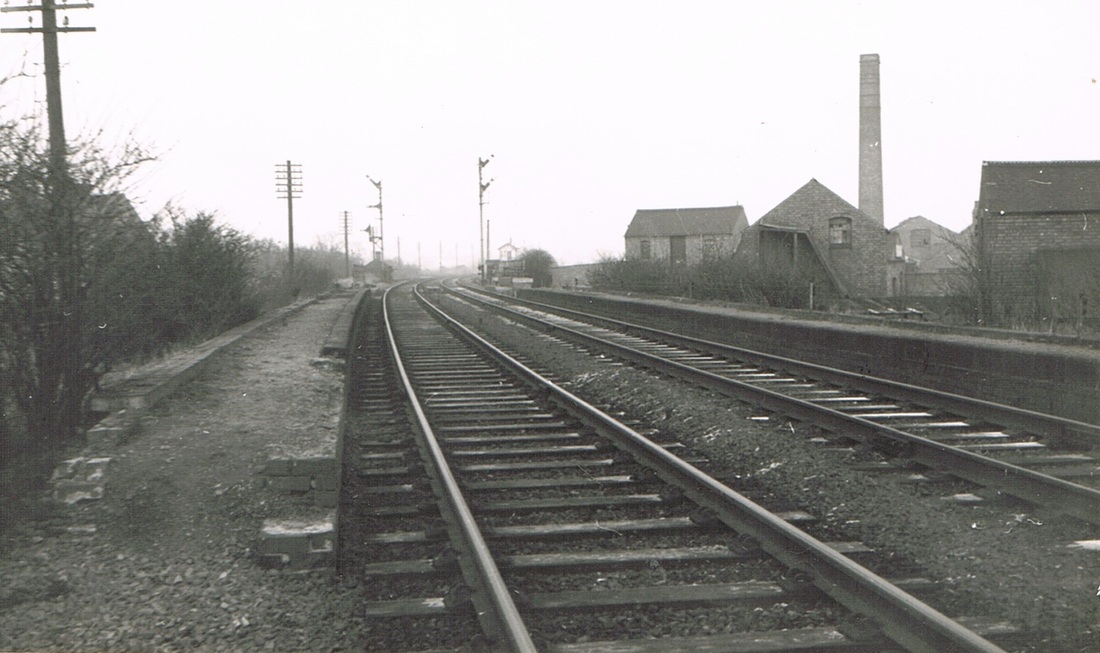
Longford and Exhall Railway station (closed). The photo was taken on 3rd January 1965. The station closed in 1949. On the right are the premises of the Foleshill Brick & tile Co. established in 1889 and known as Longford brickworks. (It may have superseded an earlier brickyard extant in 1850). We are looking towards Coventry in this view. (Geoff Edmands)
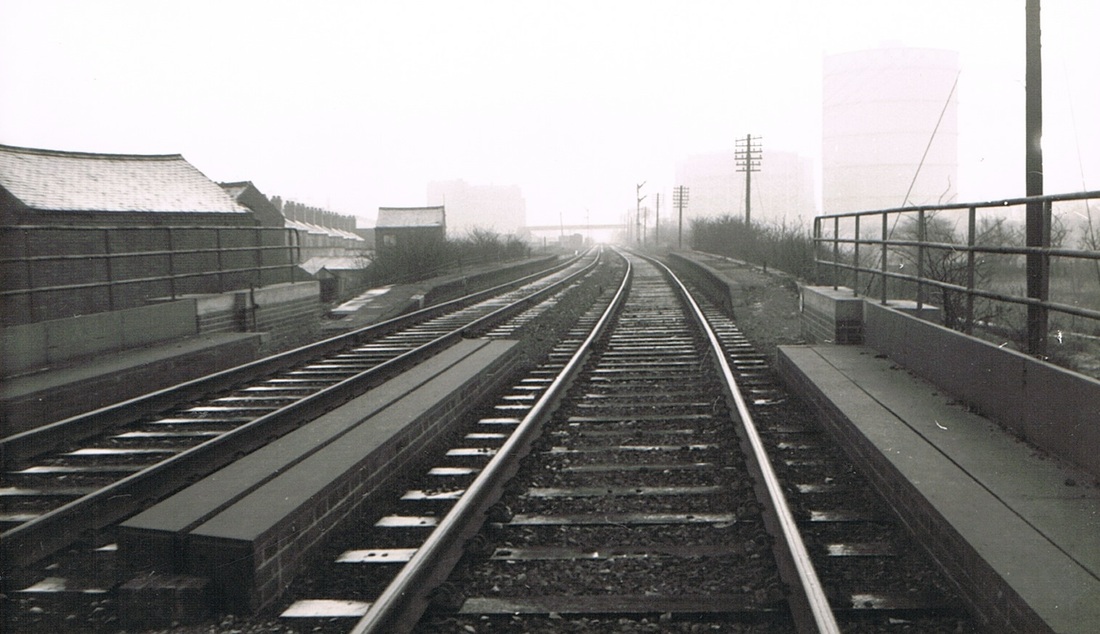
Another photo by Geoff looking back in the opposite direction towards Nuneaton. On the right are the gasholders of the Longford gas works, which were demolished in recent years to build the current Ricoh arena and Ricoh retail park. Edgar Barnsby, an old railway friend long passed away, told me that he was appointed railway man in charge of Longford & Exhall station back in the 1930's. (the station did not warrant a station master), so he had to be jack of all trades. He cycled out from Nuneaton before the first train of the day (6ish. in the morning) to open up and locked up after the last train at night. Then he cycled back to Nuneaton. Week after week in all weathers. His job included maintaining the signals at the station. You can see the tall one off in the distance. To do this he had to carry a can of lamp oil along to the signal and then climb its rickety ladder to top up the oil pots. He did this in all weathers. He was on his own with no help and no mobile phone, or indeed means of communication to the outside world other than the gongs fitted in the station to tell him a train was coming. (Geoff Edmands)
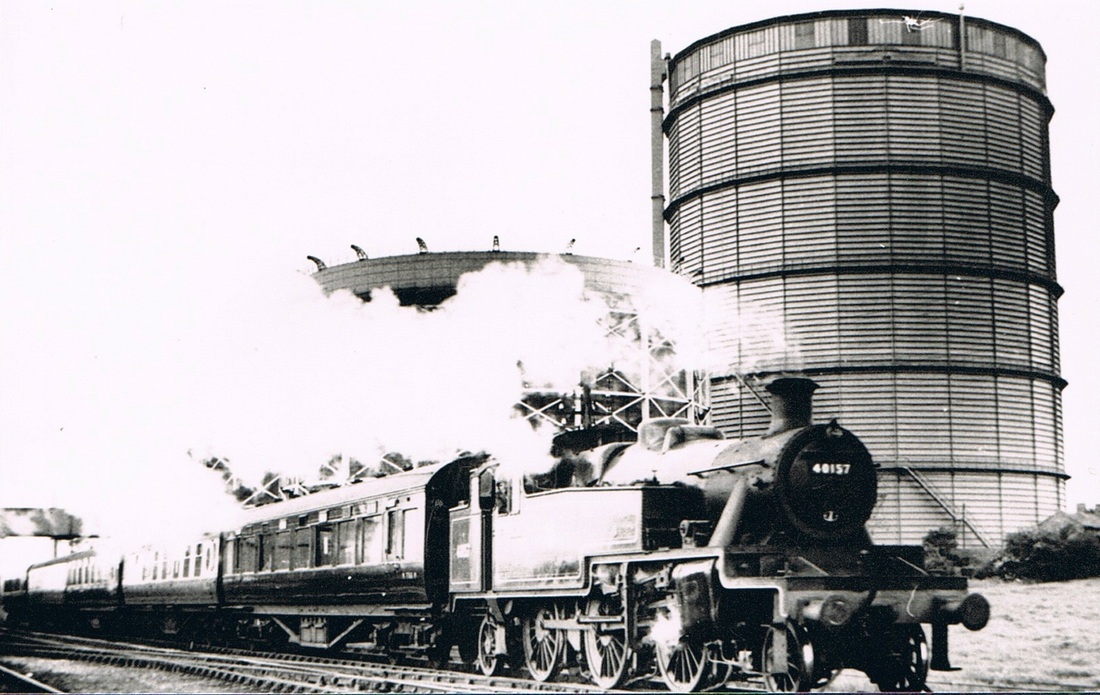
Class 3 2-6-2T Nr. 40157 which was based at Nuneaton intermittently between September 1956 and July 1960 heads past the distinctive Foleshill Gas Works gas tanks which dominated the landscape for miles around. This site is now covered by the Ricoh retail park which is a good use of a former brownfield site. For further details of Foleshill Gas Works - see the extractive industries section of the web site.
The Coventry Loop Line
Bell Green Goods Yard
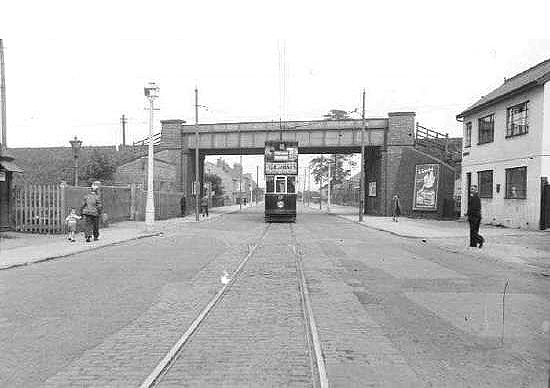
Bell Green Goods Yard entrance through the gates on the left with the Coventry Loop carried on the bridge over Stoney Stanton Road. Note the points in the tram track which led off to the left which accessed the yard for Coventry Corporation trams. This was used when new trams were delivered from the makers to unload them from rail low loaders. (Warwickshire Railways Web Site)
Gosford Green Goods Yard
Foleshill Station
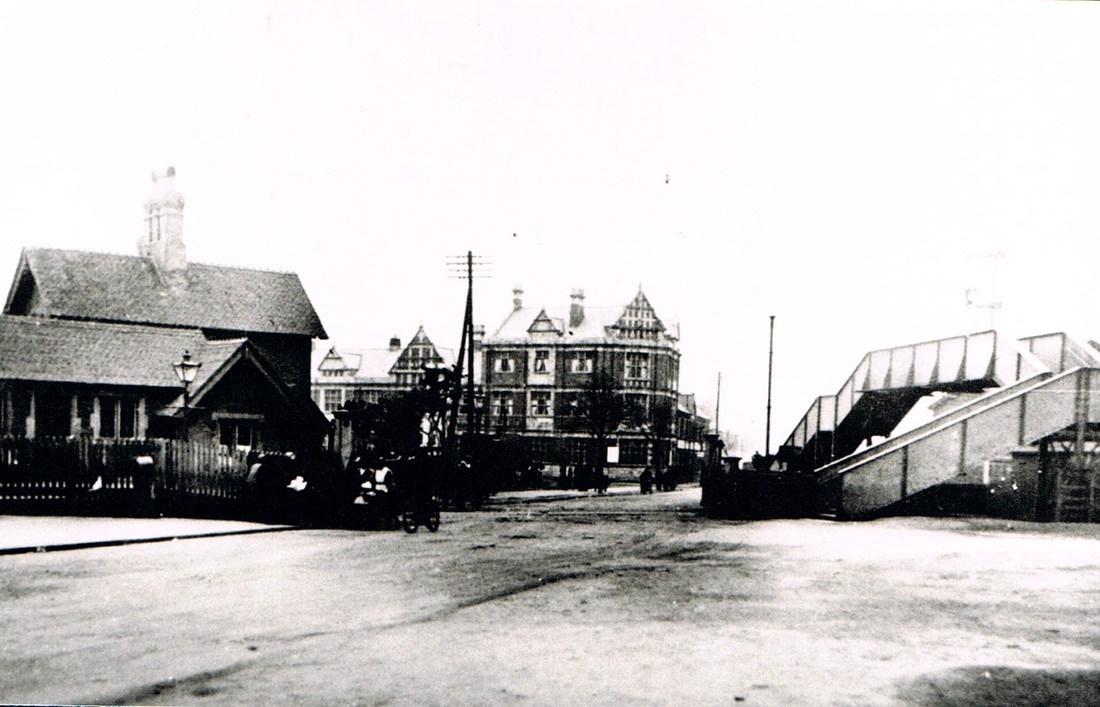
The original Foleshill station which had to be rebuilt as a new road bridge was put in eliminating the level crossing and it was greatly enlarged to take a vast increase in passenger traffic when the various engineering firms opened in the area. In 1915 the traffic requirements of this station changed dramatically as the nearby White & Poppe shell filling factory increased in size and started to generate thousands of workers daily. Heavy traffic on the Nuneaton-Coventry line and the limited size of the old Foleshill station caused this to be demolished, a new road bridge built and a larger station erected to cope with thousands of passengers a day. The station was open 365 days a year. Foleshill shared a stationmaster with Coundon Road. World War II with its reduction in road traffic due to petrol rationing also caused a surge in passenger traffic at Foleshill.
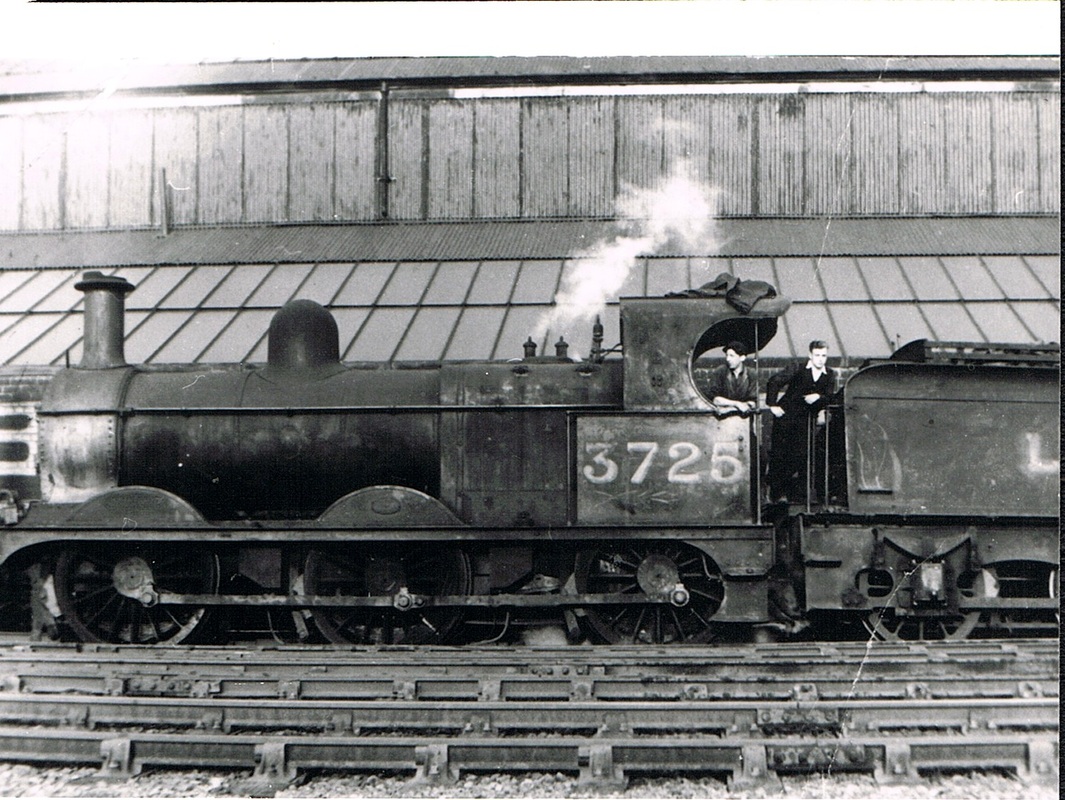
The photograph above and below illustrates a slight mishap when Coventry based ex MR 0-6-0 Nr. 3725 Class 2F has become derailed outside the Foleshill premises of Campton & Sons Ltd. What seems to have happened it has derailed on the points at the throat to Foleshill goods yard and then run several yards on the ground before it could be stopped. The crew await the re-railing gang. This loco survived to become 58306 and was eventually withdrawn in February 1957.
The Foleshill Railway
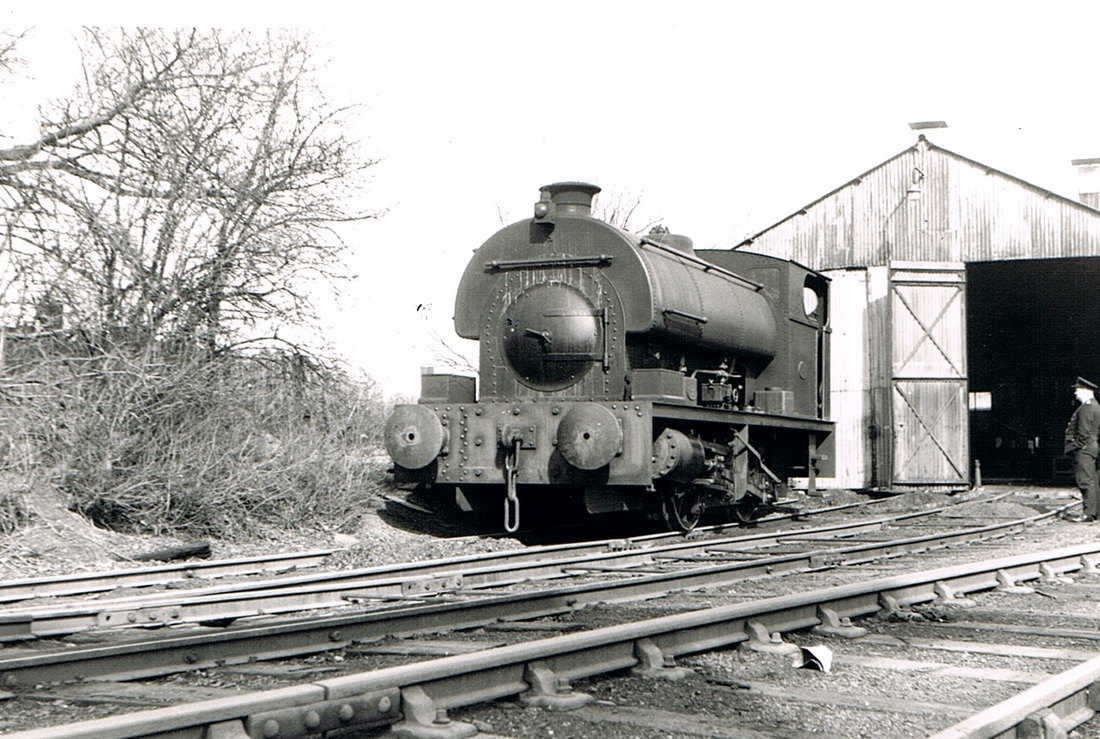
"Rocket" a Peckett 0-4-0ST (1722/1926) of the Foleshill Railway has been drawn of the loco shed on the Foleshill Railway in 1969. This loco was transferred to the Tyseley Railway Museum for preservation on 3rd June 1974. More information on the Foleshill Railway will appear under the heading of industrial railways.
(Maurice Billington)
Coundon Road
Radford Station
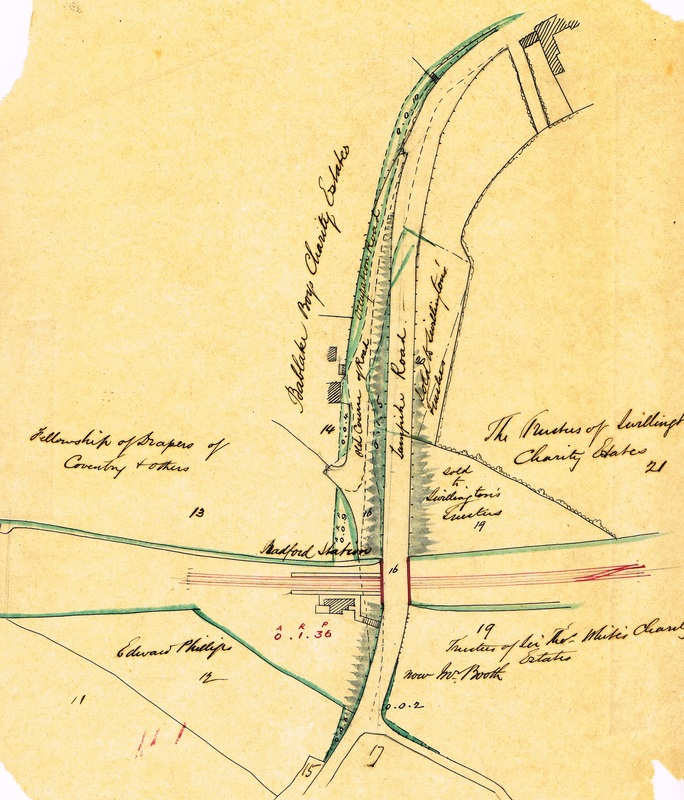
Radford was a passenger station that was built for the Coventry-Nuneaton branch but never opened. There were letters to the Coventry newspapers requesting that the LNWR be made to open it, but it never was, which is strange. But I do seem to remember that the station building still stood in the 1960's but cannot remember seeing photos of it. (CNR Archive)
The South Leicestershire Railway - Nuneaton to Leicester
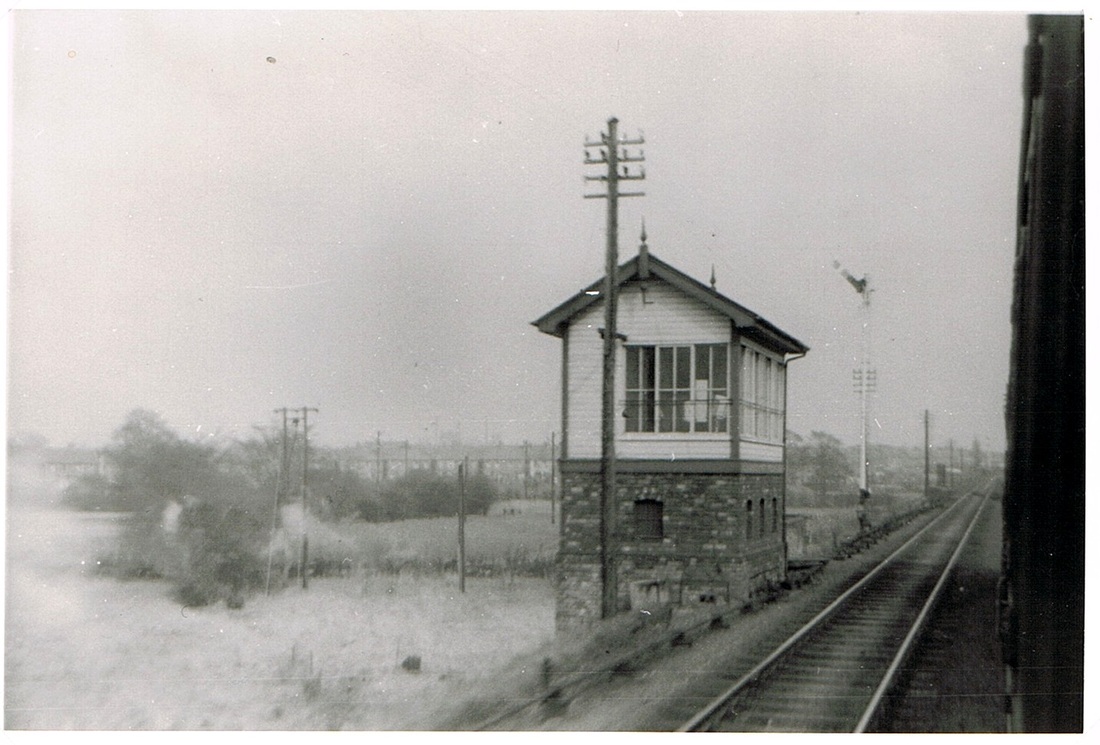
Nutt's Lane signal box on the way to Hinckley which is in the distance. This was quite close to the junction with the old line which once went to Stoke Golding which was never used for traffic, but had nothing to do with that line, as the cabin was not erected until a private siding was put in to Nutt's Lane power station. The old line had a signal box when built to control the junction which functioned for some years despite the fact that no trains were routed over it. It had to remain in use as it was wired up as part of the signalling system on that stretch of line and as a fringe box for Hinckley. It was not until the junction was removed in the late 1880's that the old box was removed.
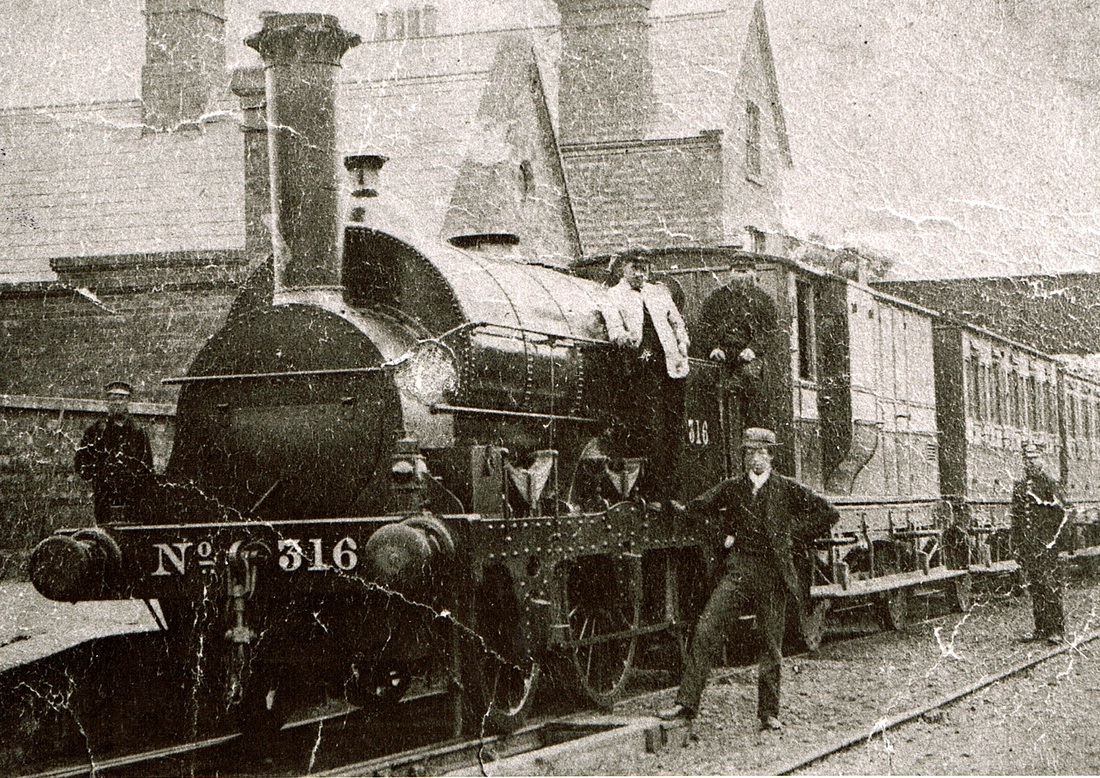
Hinckley Station on the South Leicester line in the late 1860's. I must thank Gordon Webster for finding this picture, and he thinks it might have been taken by Hinckley photographer - Edward Houlston. The Nuneaton-Hinckley branch railway opened in 1862 and was then extended through to Leicester in 1864, with a branch to Birmingham being opened at the same time making the Leicester to Birmingham line a major route. ((Both Hinckley station and the Leicester-Birmingham line are still open and the station buildings we see here are still in use). This lovely old engine was a 2-2-2 saddle tank originally built for the Birkenhead, Lancashire and Cheshire Junction Railway as their Nr. 21 by Sharp Stewart (Works Nr. 771/1851 or 1852) and it entered service on that railway in April 1854. It was acquired by the London & North Western Railway on the 20th April 1860. when they absorbed the B,L & C Jct line. The LNWR renumbered the engine 316 and named it "Prince Eugene" The name was removed in 1862 and in 1868 it was rebuilt as a saddle tank in the form we see here, and the condition it is in suggests that this rebuild was quite recent. The photo must have been taken in the period 1868-1874 when the loco was renumbered in the duplicate list in April of 1874 as Nr. 1821. It was scrapped in September 1877. It is a curious fact that the loco is running wrong line. I cannot figure out the reason for this unless it was working a short Hinckley to Nuneaton service. At this time though one train used to work both the Nuneaton-Coventry service and the Nuneaton - Leicester service with an engine shedded at Nuneaton so it is possible that it was a Nuneaton engine. In fact it is more than likely.
The Ashby & Nuneaton Joint Railway (A joint line operated by the LNWR and the MR. South of Shackerstone Junction the LNWR were responsible for maintenance from the 1880's onwards)
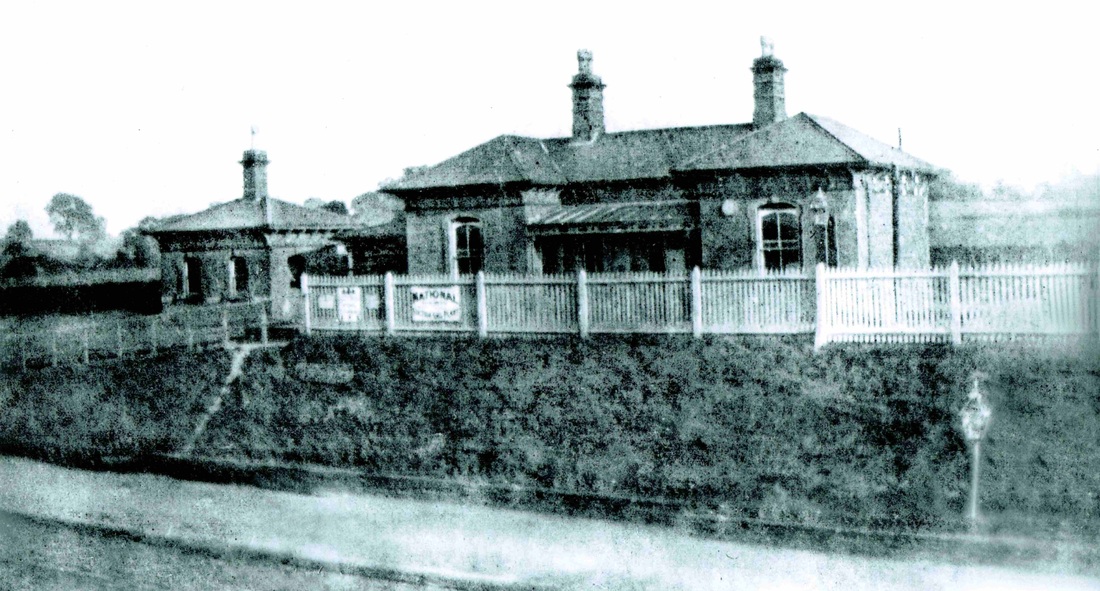
A curious arrangement existed at Higham on the Hill station with the main station building and circulating area stood back on the bank away from the platforms. This must have made it difficult to get down to an arriving train on an icy or wet day having to descend the ramp on the left. (Celia Hornbuckle Collection)
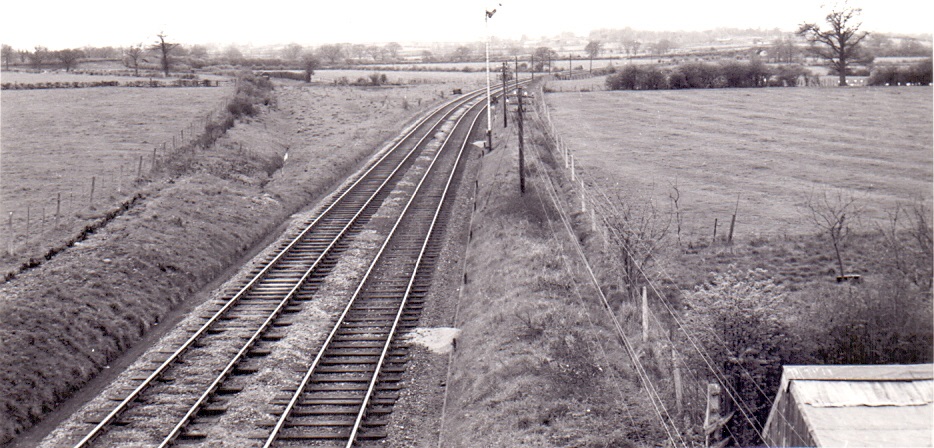
Looking back towards Nuneaton from Stoke Golding where the junction with the former branch to Hinckley can be seen. This line was laid in at the insistence of the Midland Railway who had plans to divert all their coal traffic from the Ashby canal over it, to increase their monopoly of the canal traffic. (they owned the Ashby canal) but the reason for the line to be laid in was thwarted by the Leicestershire colliery owners who did not want their product to become subject to punitive tarriffs if the Midland had a complete monopoly and the line's reason for construction was never realised. The line lay unused and derelict from 1873 when laid in until it was taken up in the late 1880's to re-use the rails elsewhere. Although formal abandonment did not come about until 20 years later. (Maurice Billington)
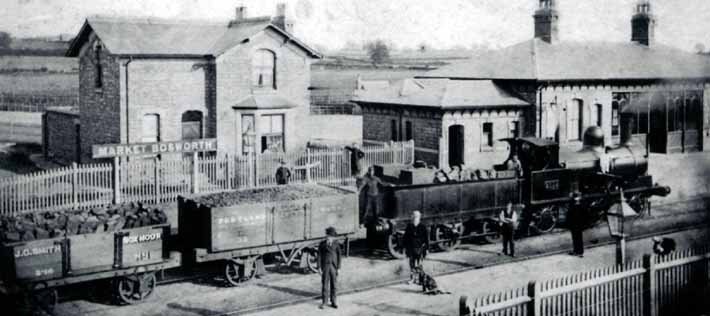
A LNWR DX class 0-6-0 calls at Market Bosworth station c. 1890. Note the dumb buffered private owner wagons. The coal in the left hand wagon has been stacked beautifully as was often the case with these old dumb buffered wagons. The loaders were paid to ensure the coal reached its destination in the lump sizes despatched from the colliery. Heaven help them if the coal was reduced to slack en route. It would reduce the value of the load and this would be deducted from the loaders pay. The first truck next the engine has either been loaded with small coal or ballast. It is heading in the Nuneaton direction and has probably originated in the Ashby/Coalville area.
